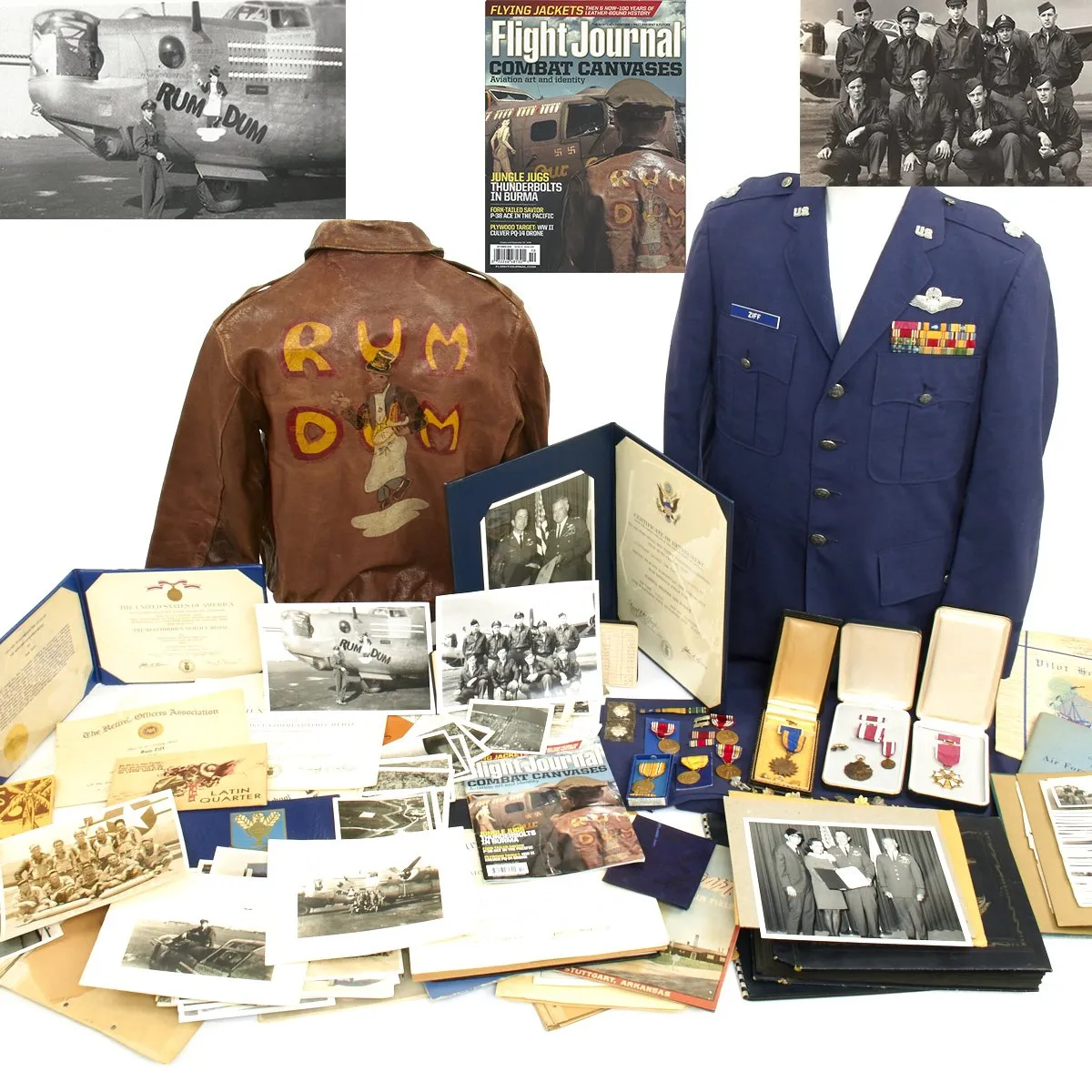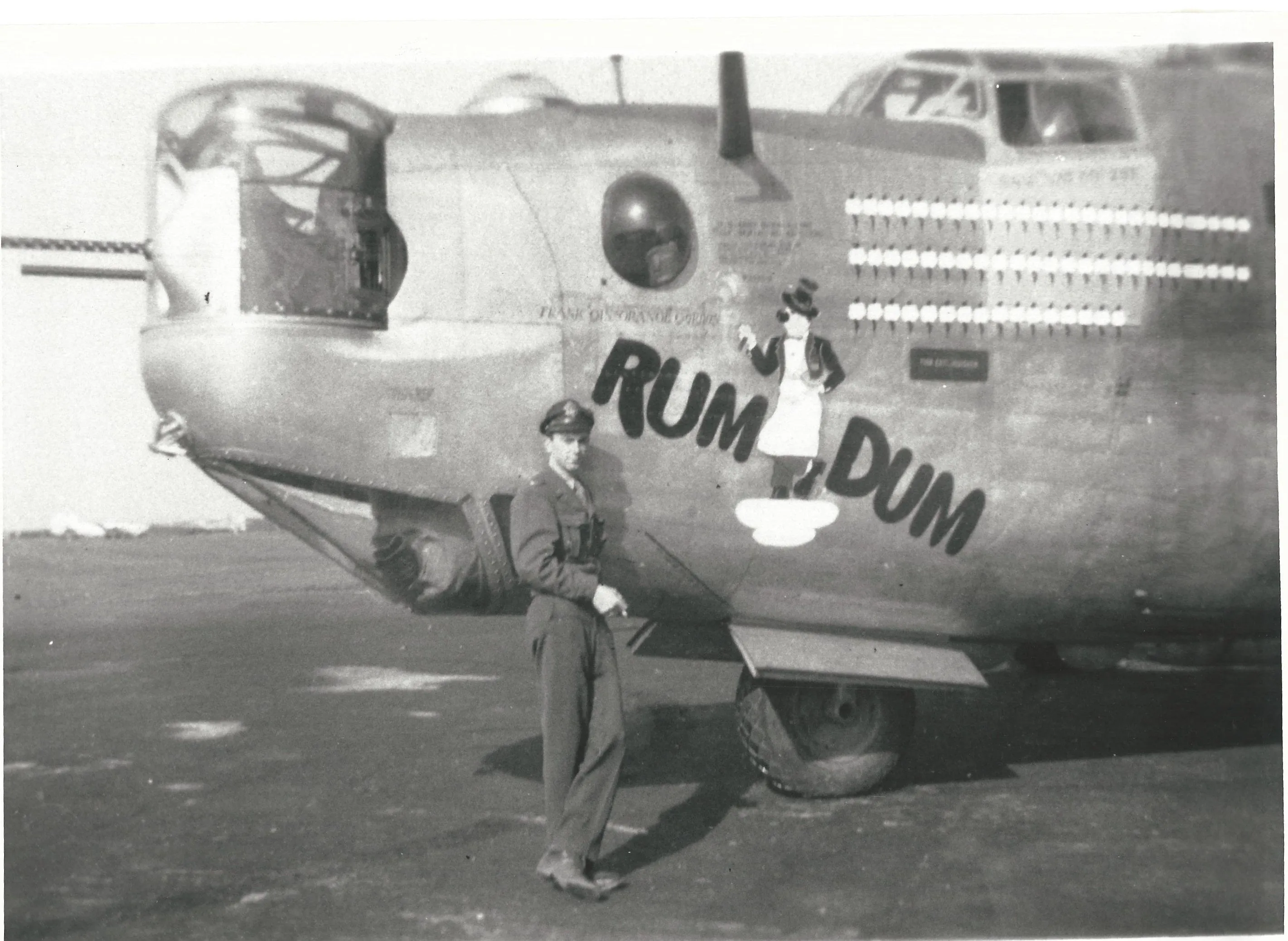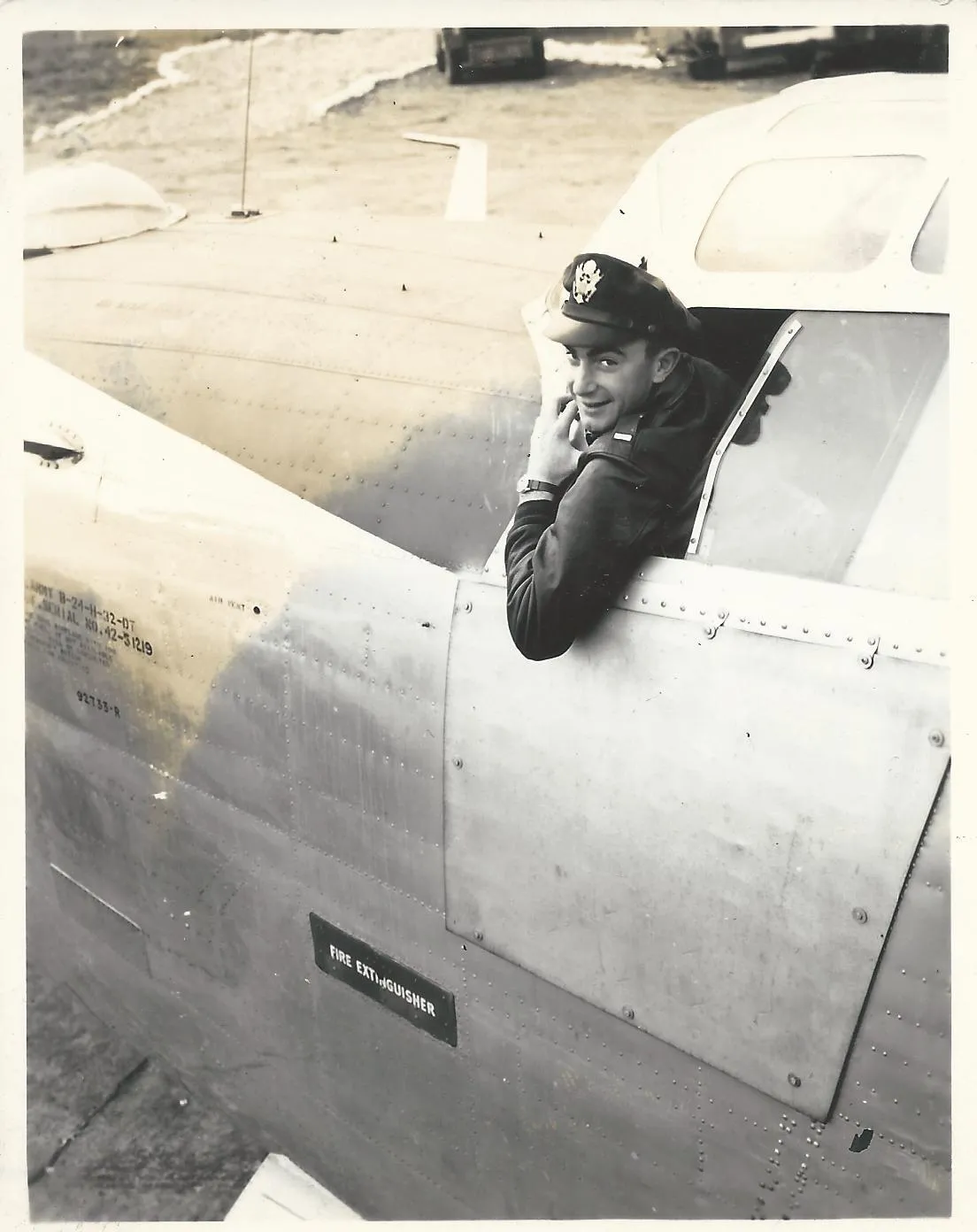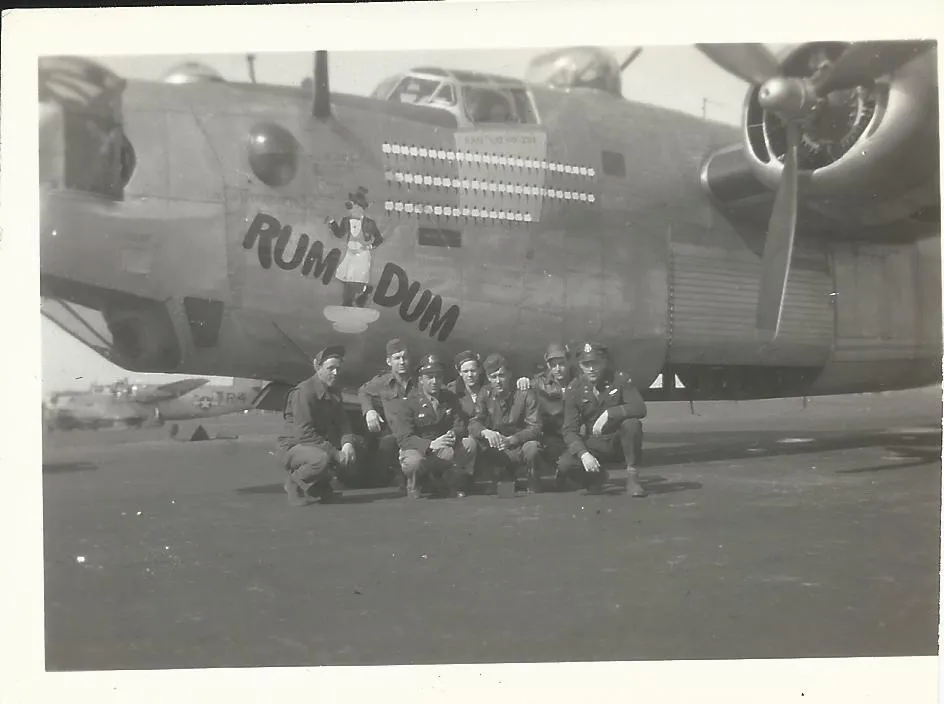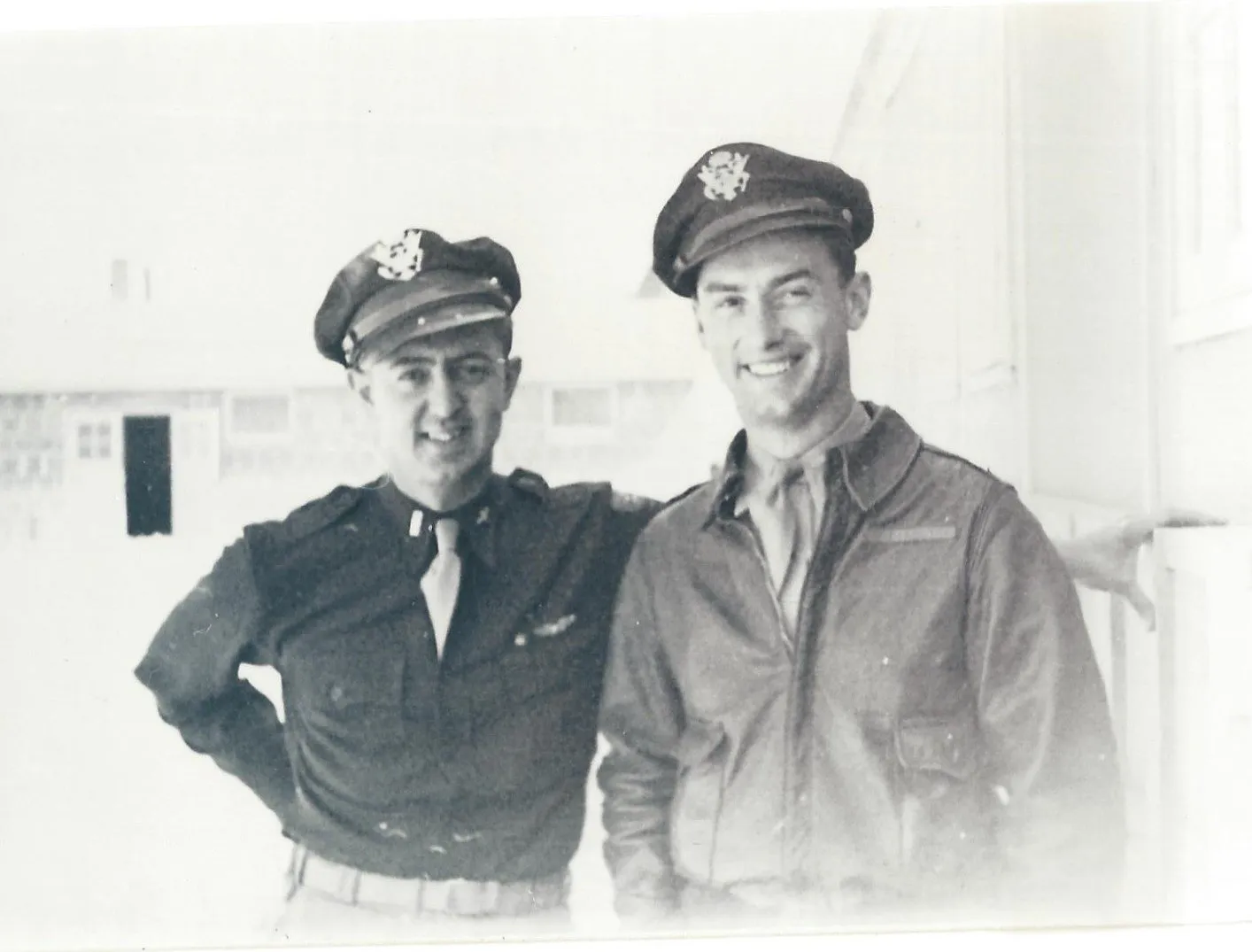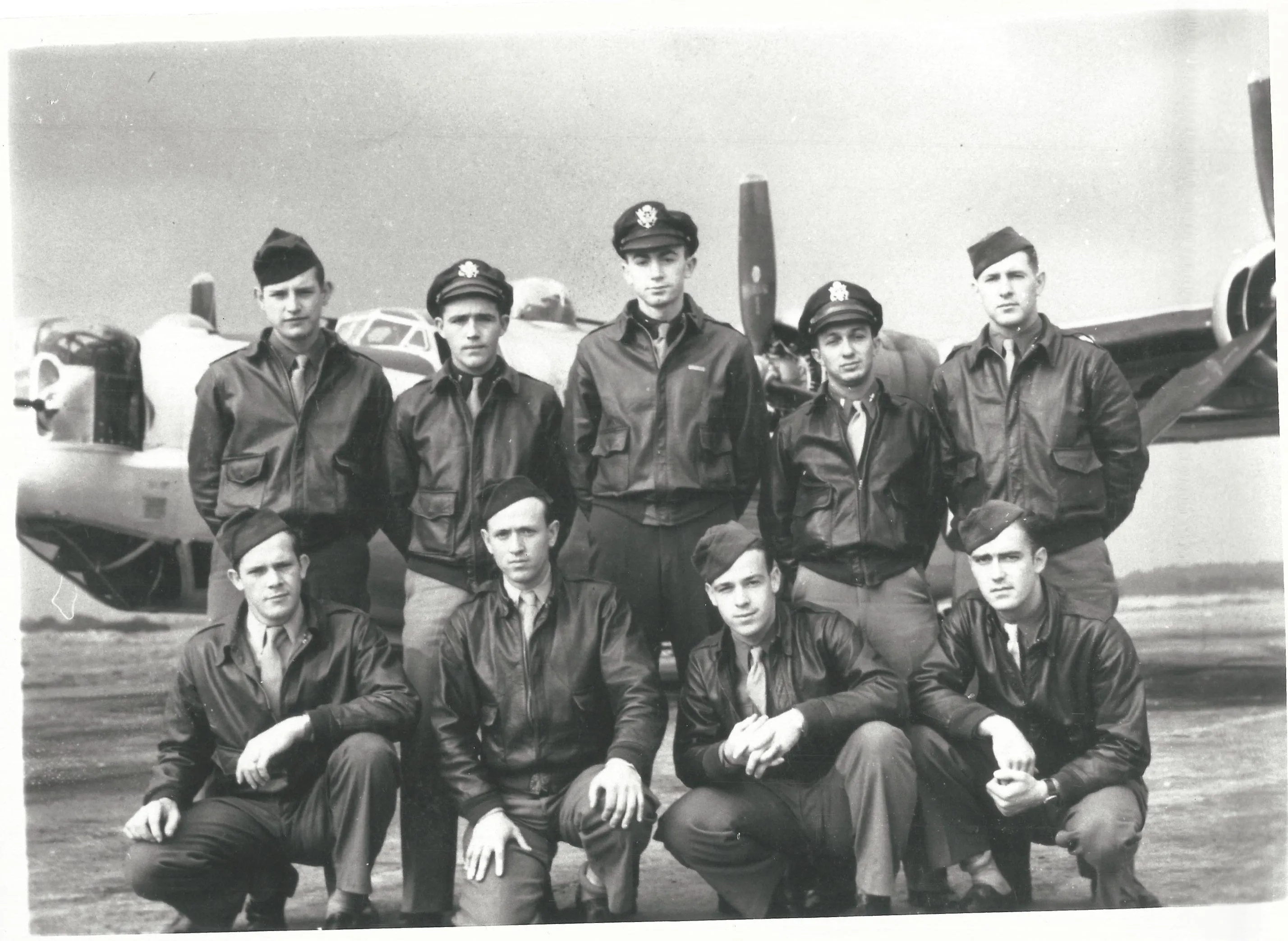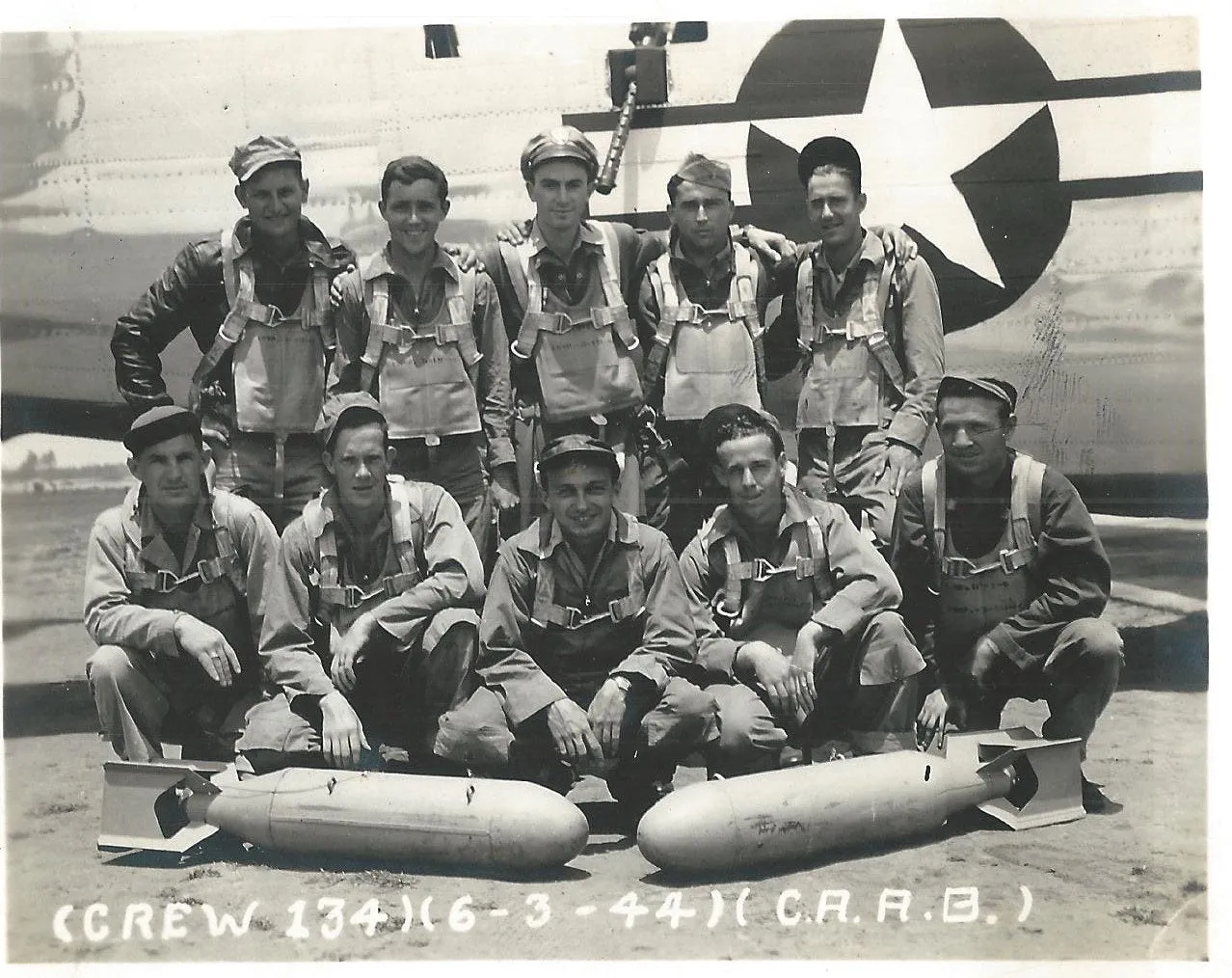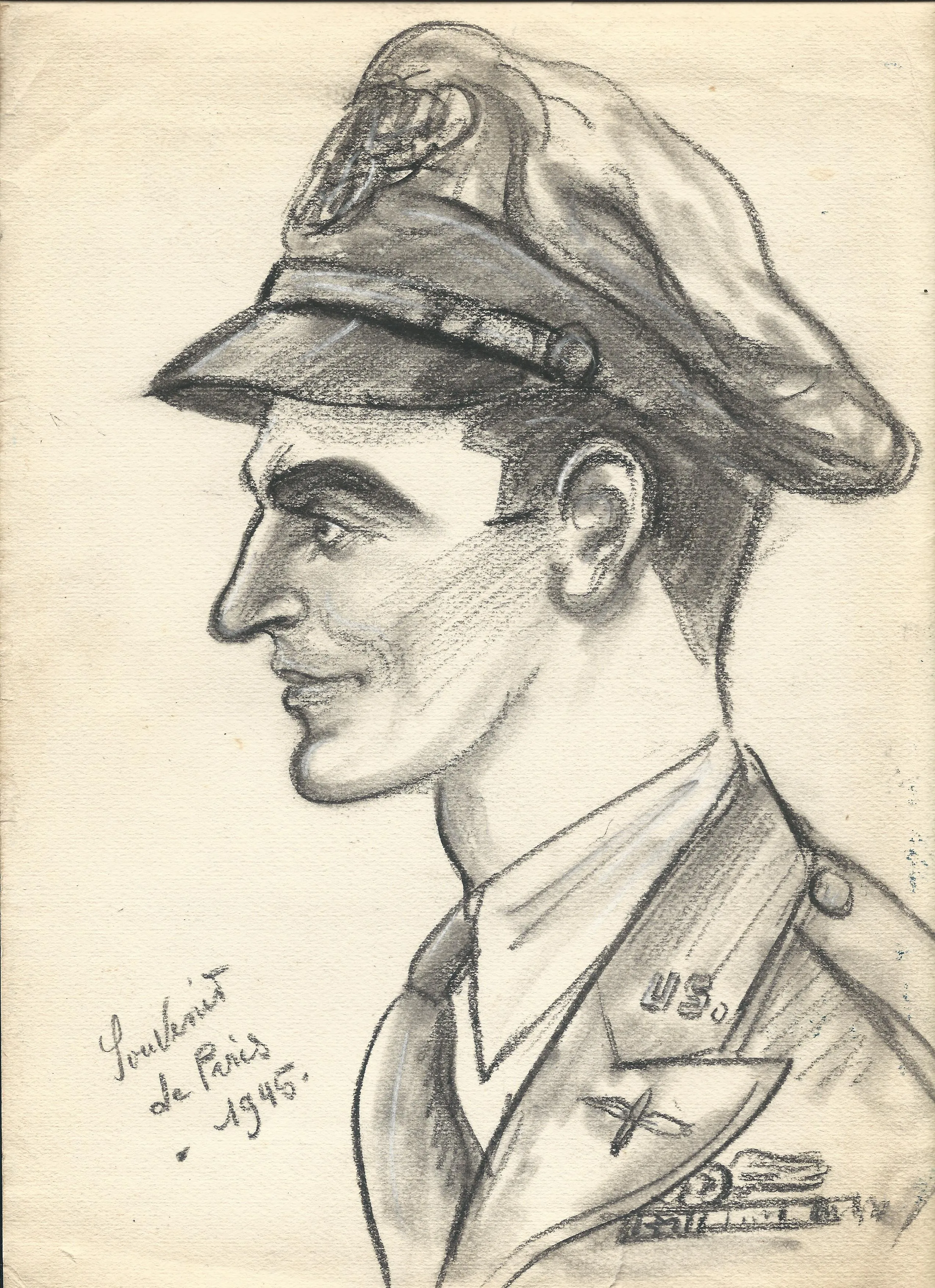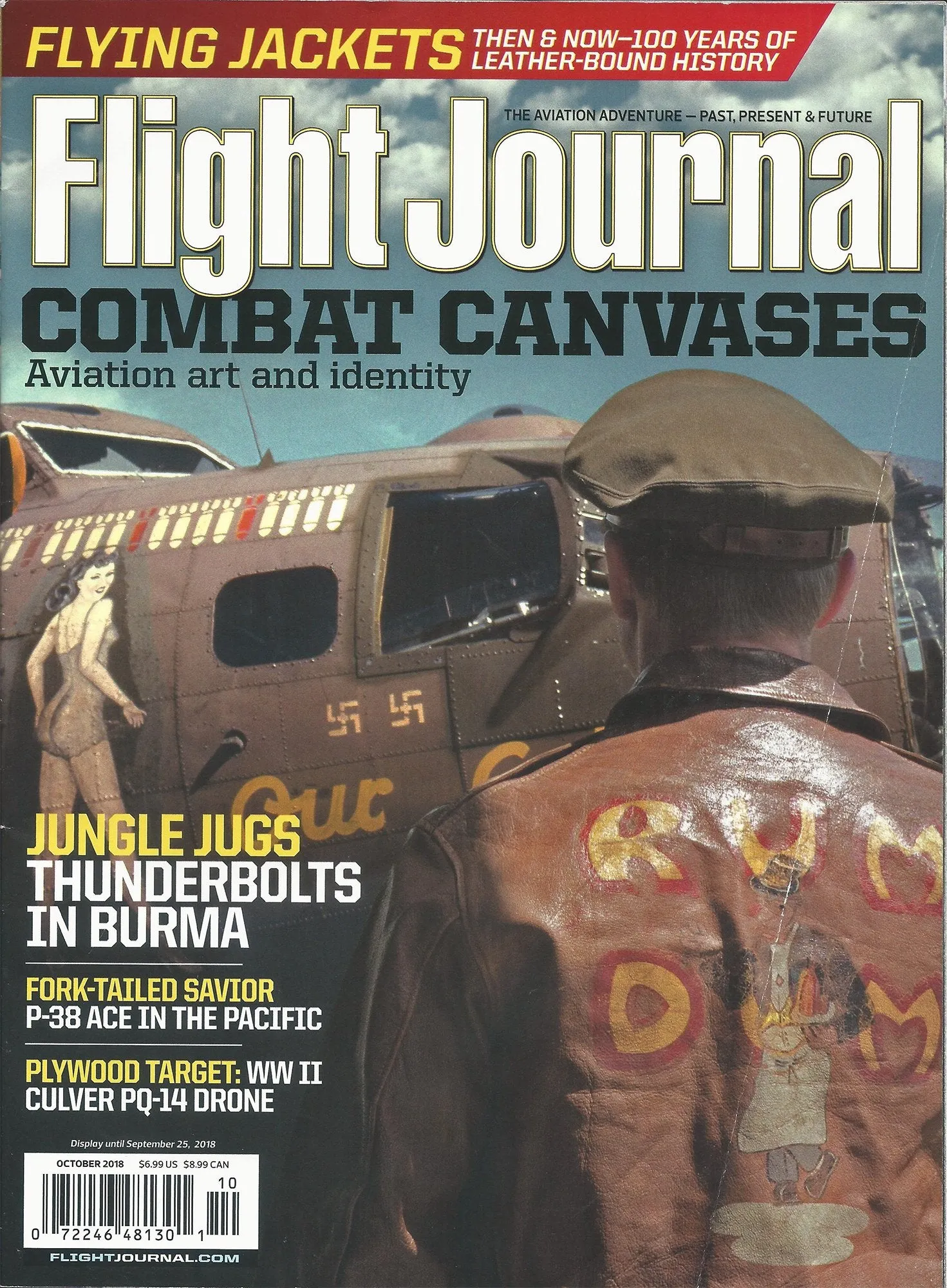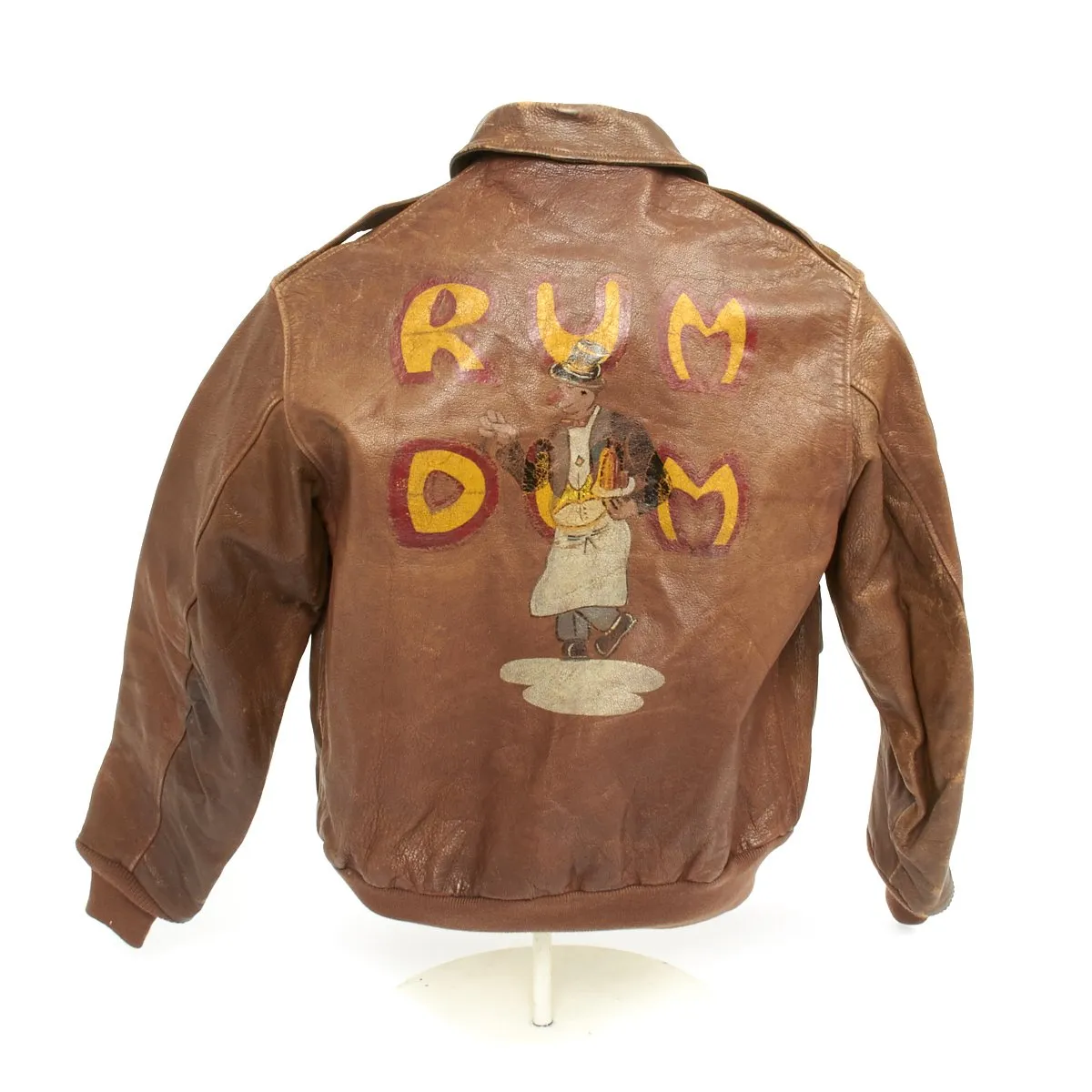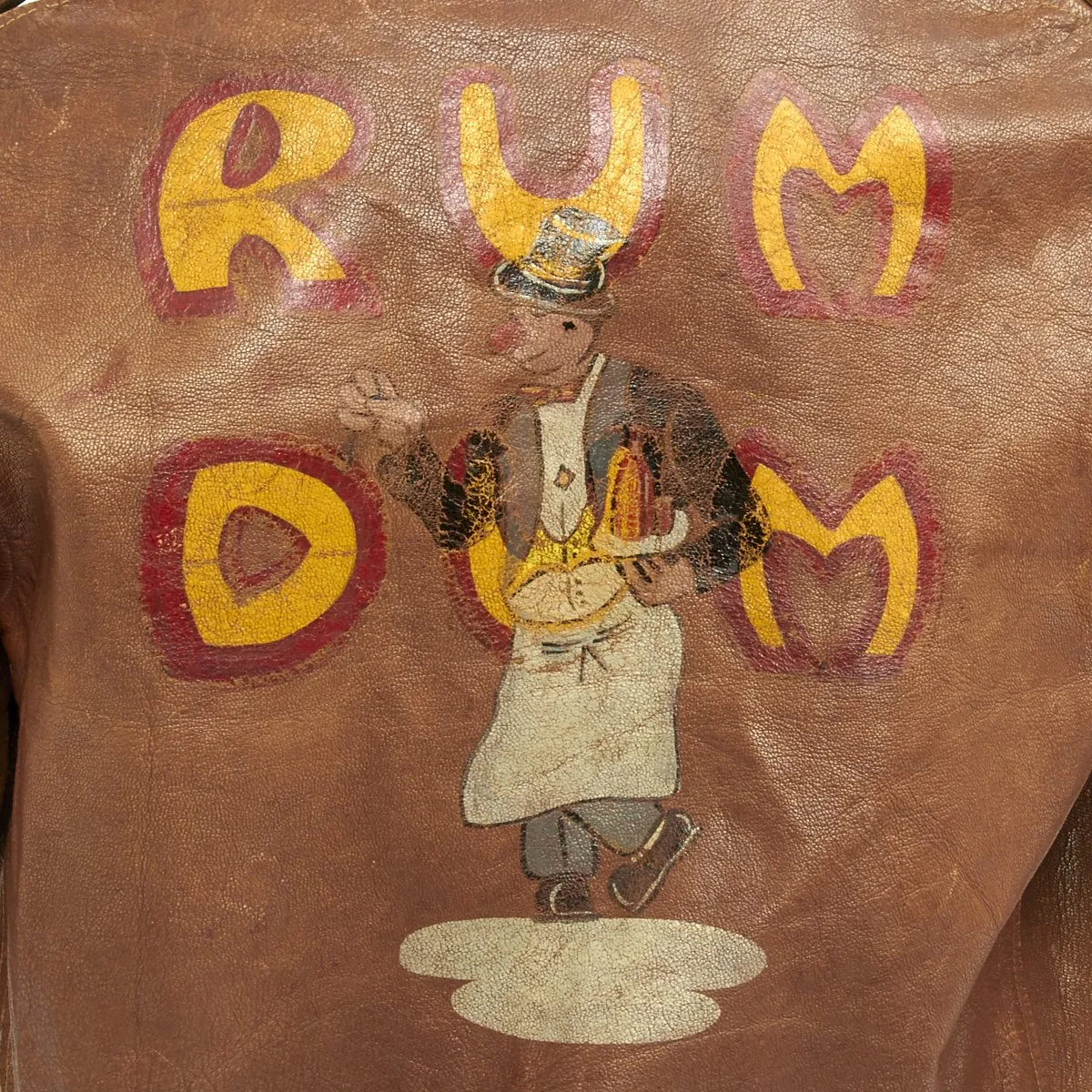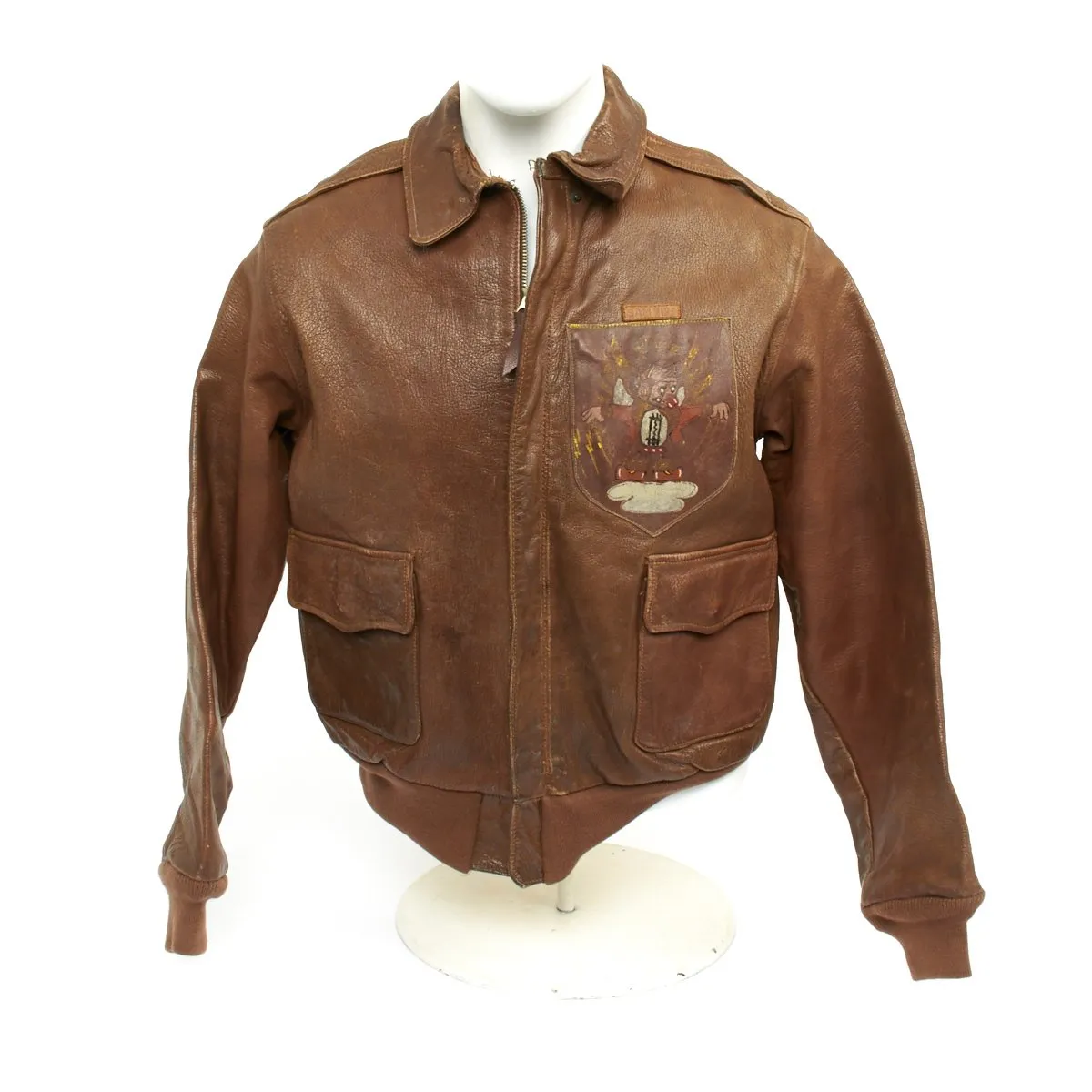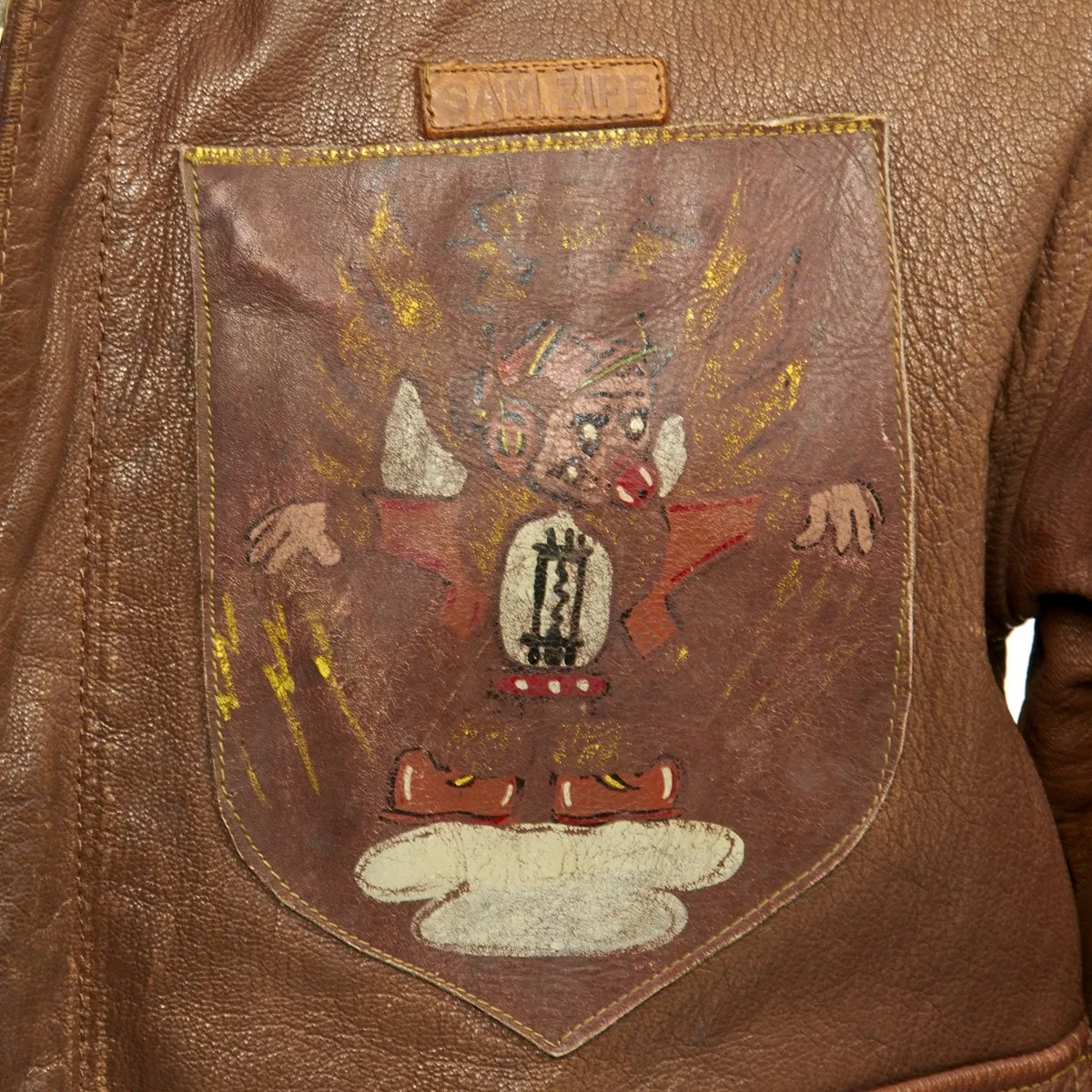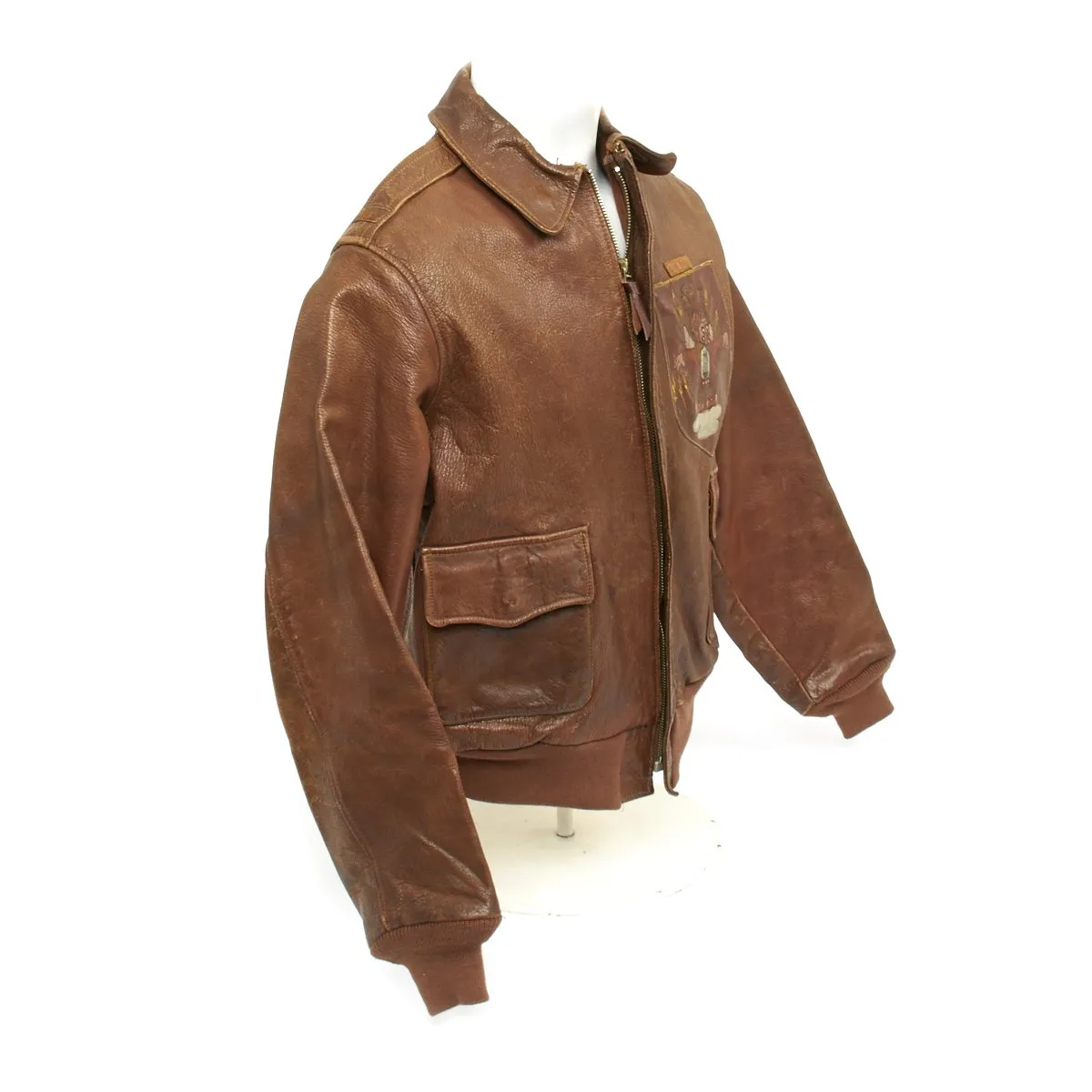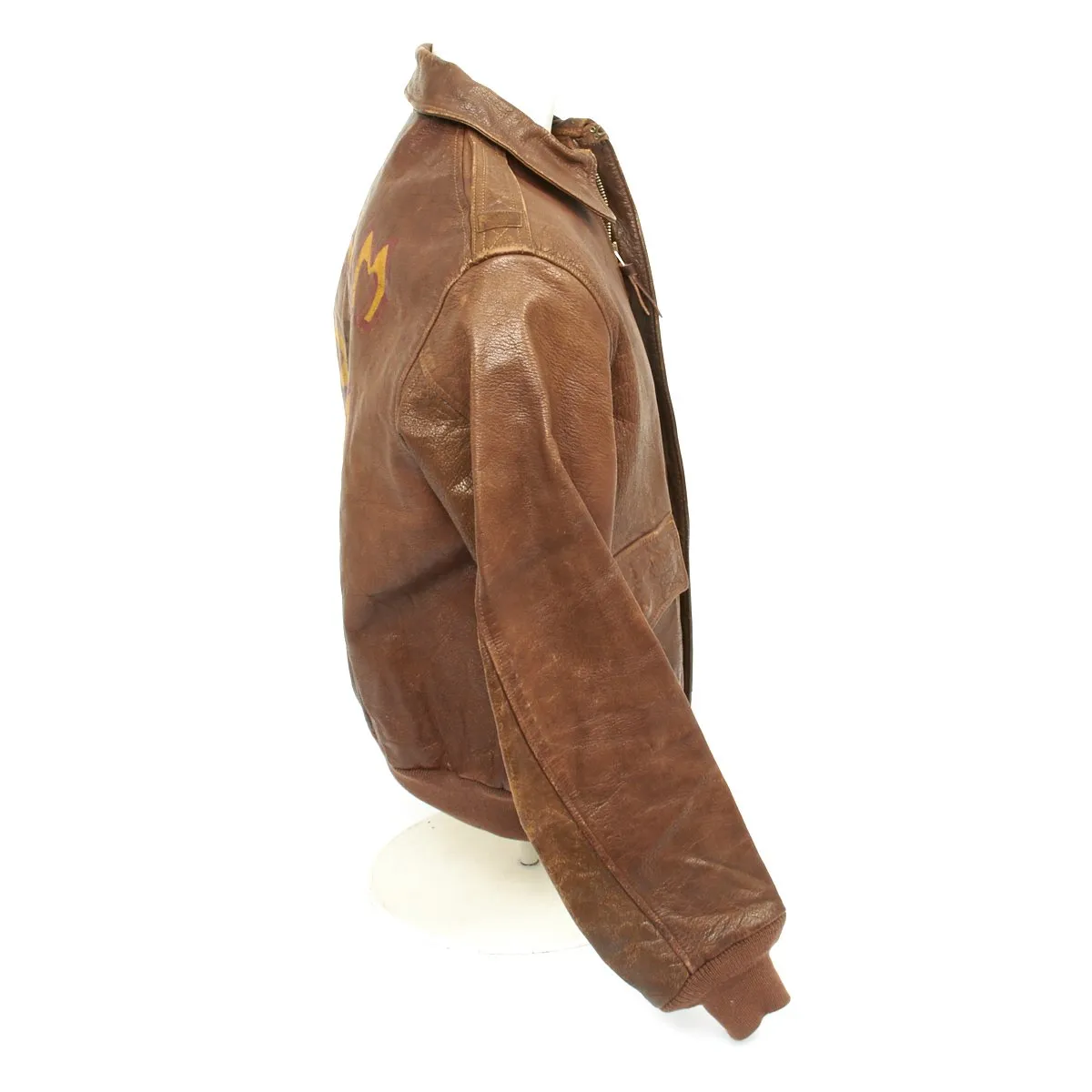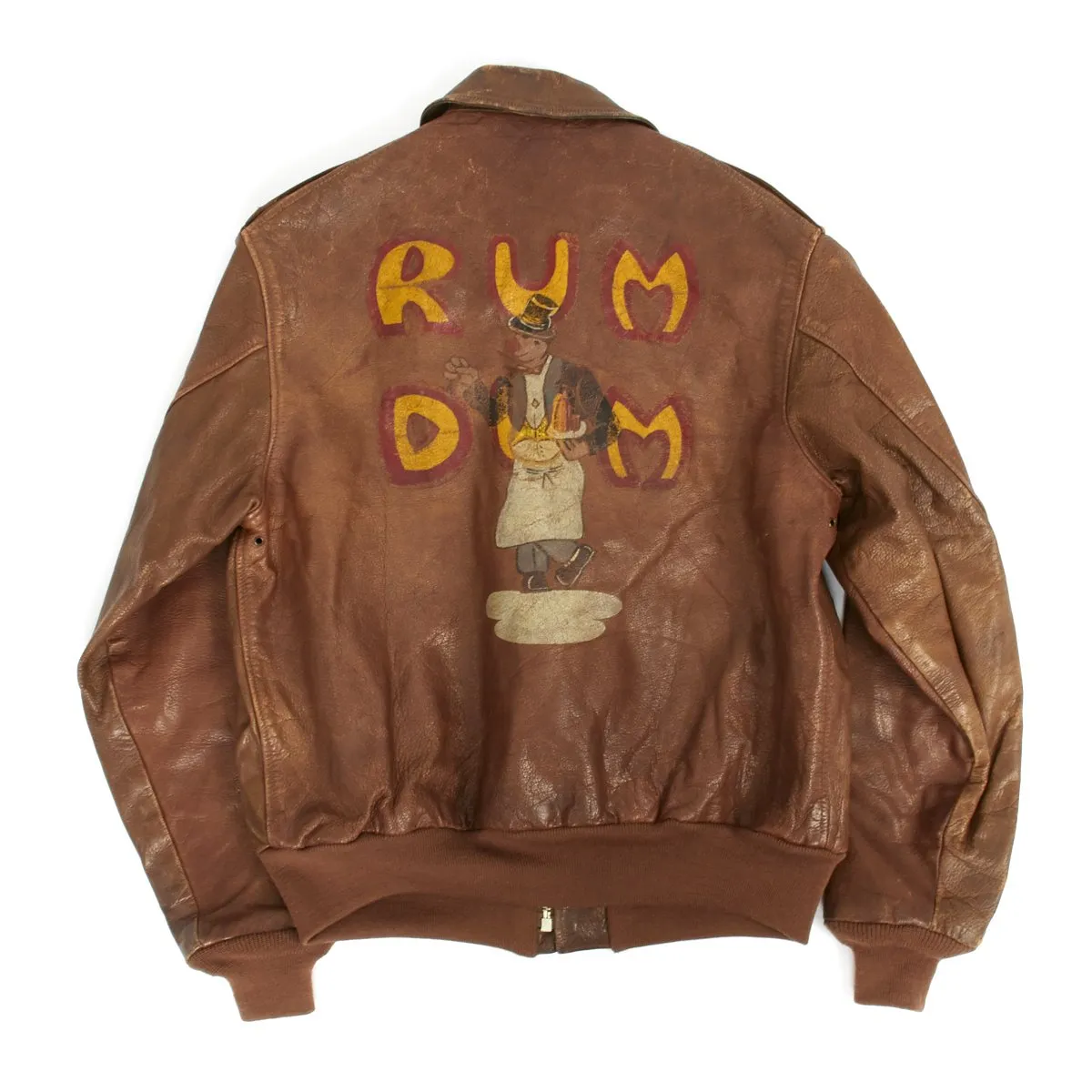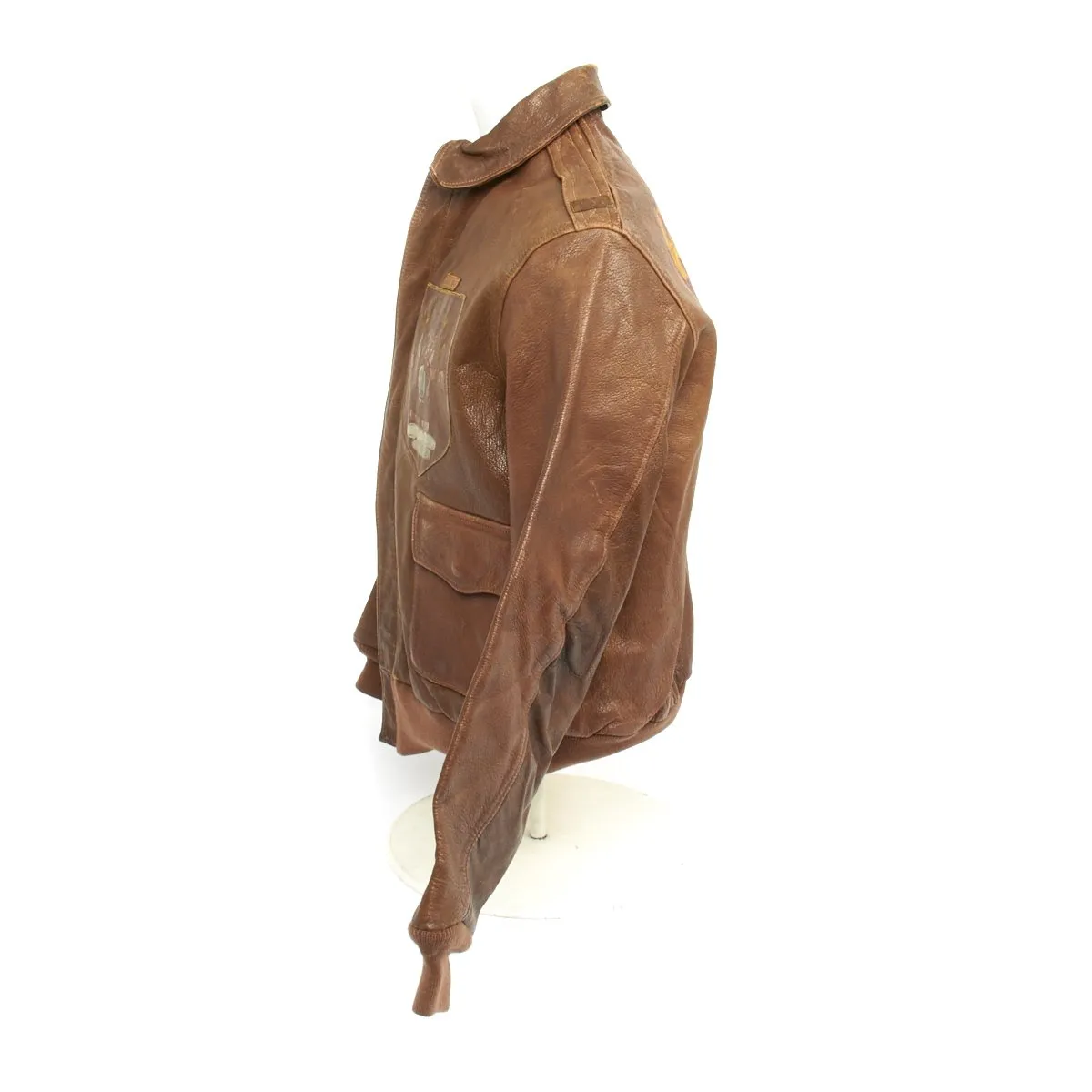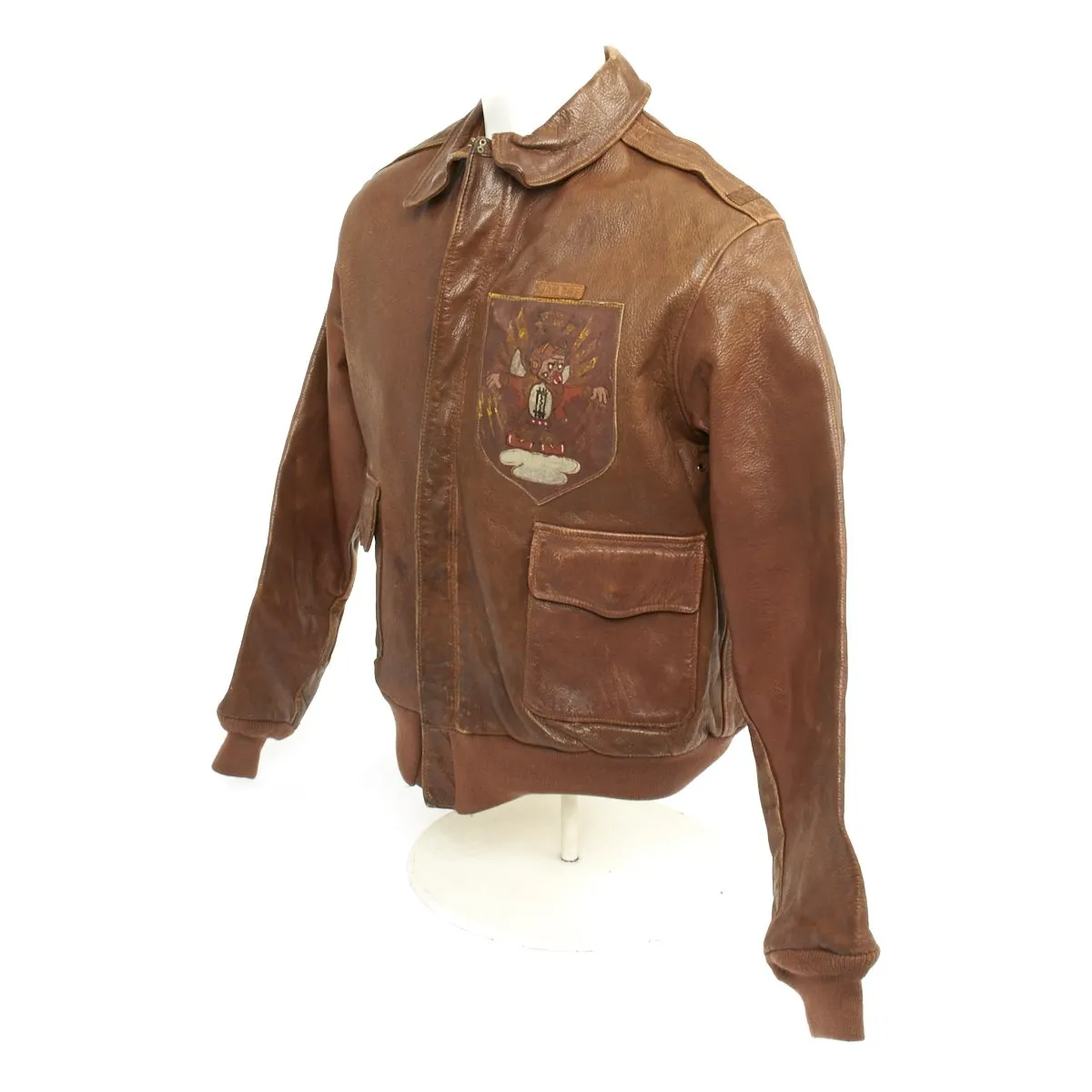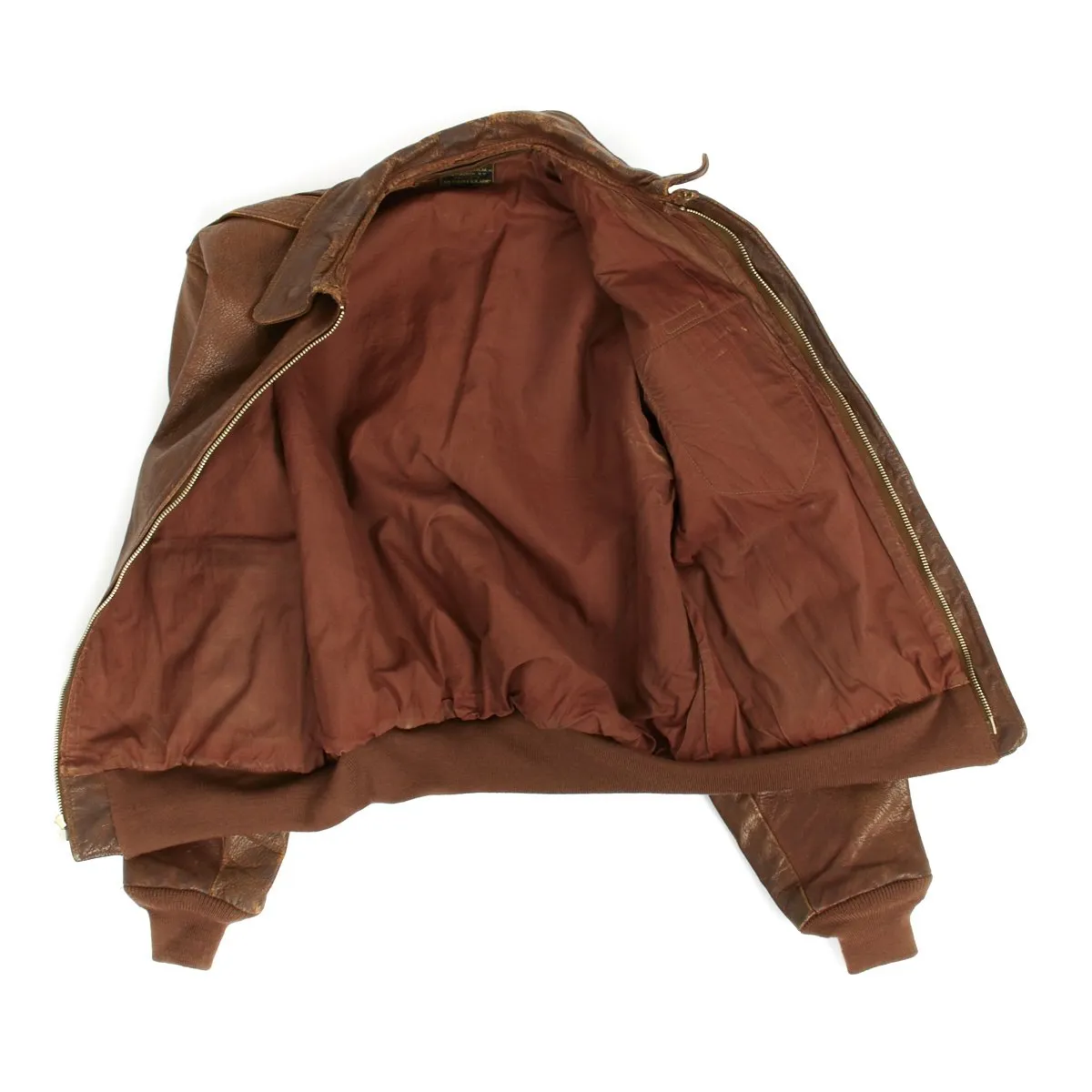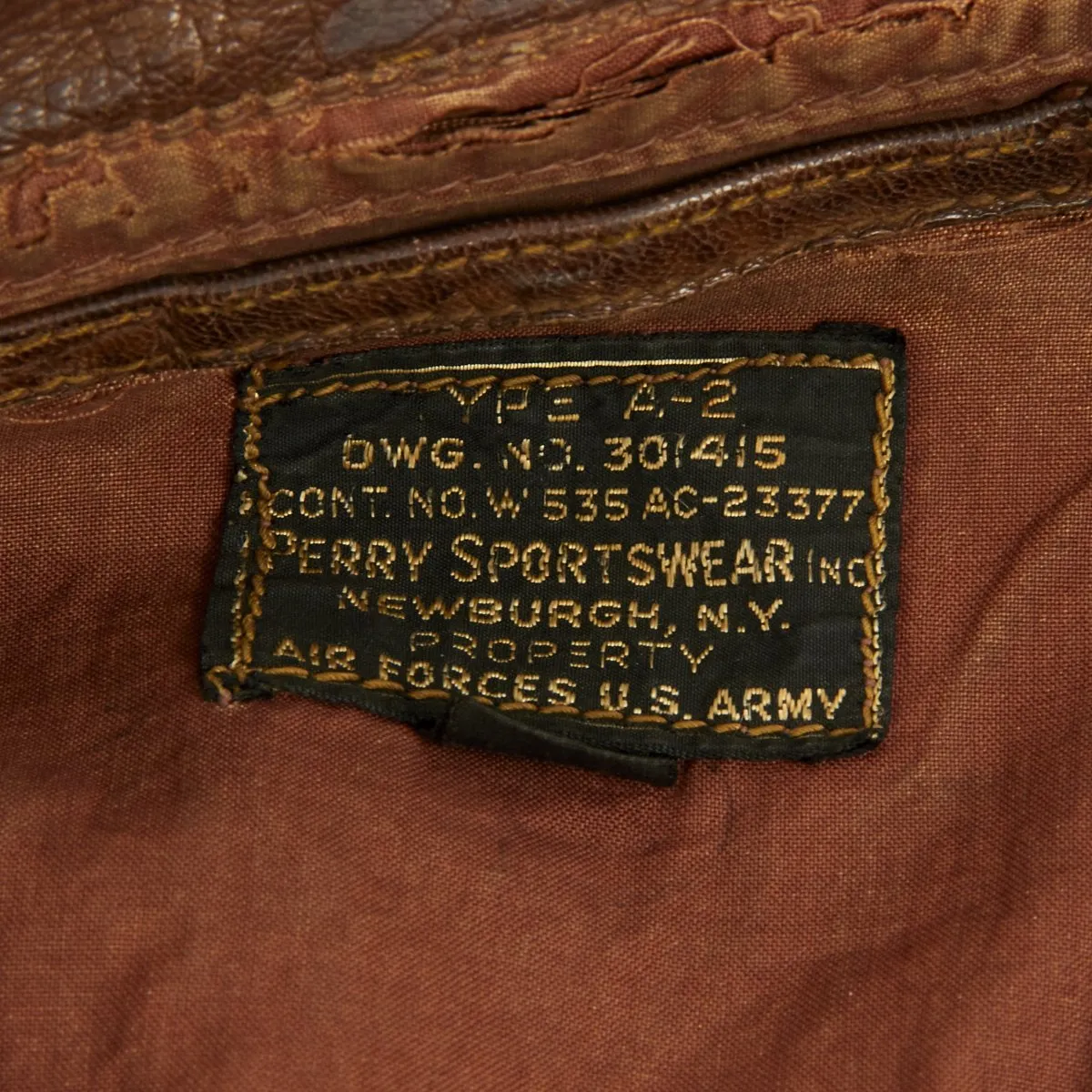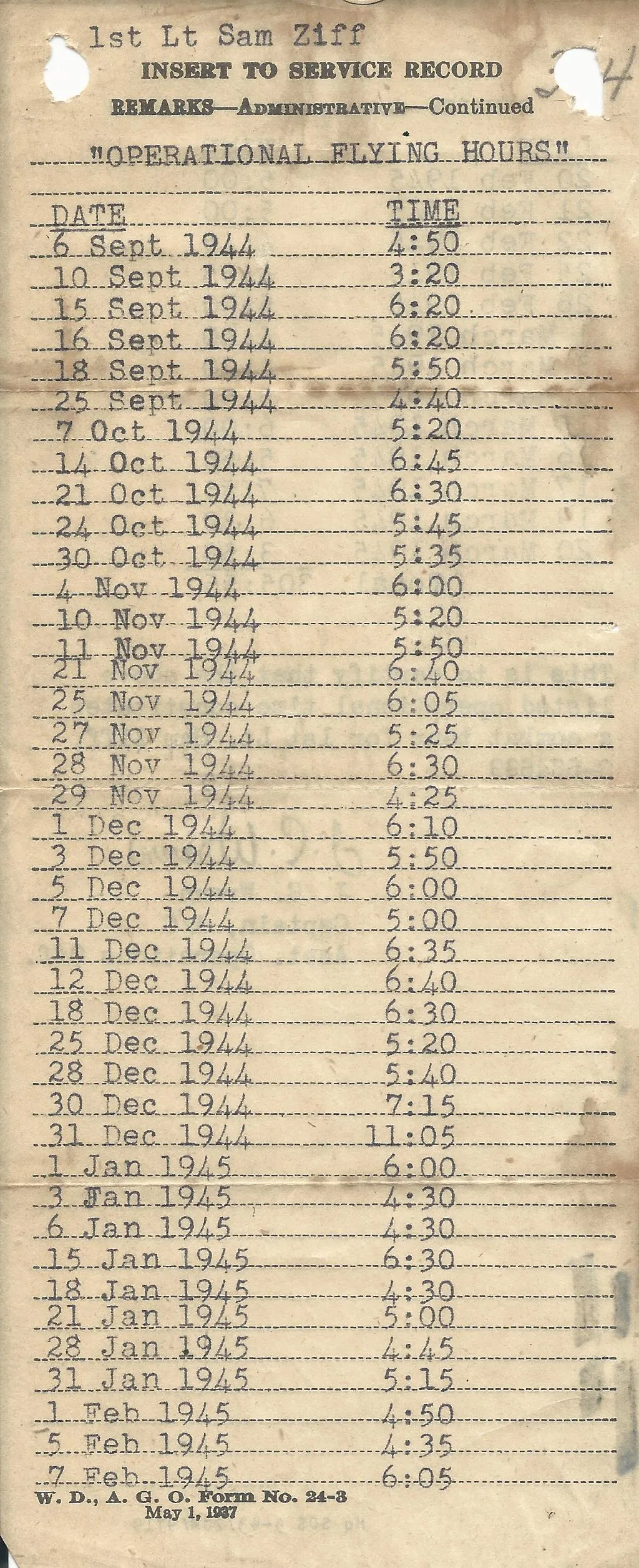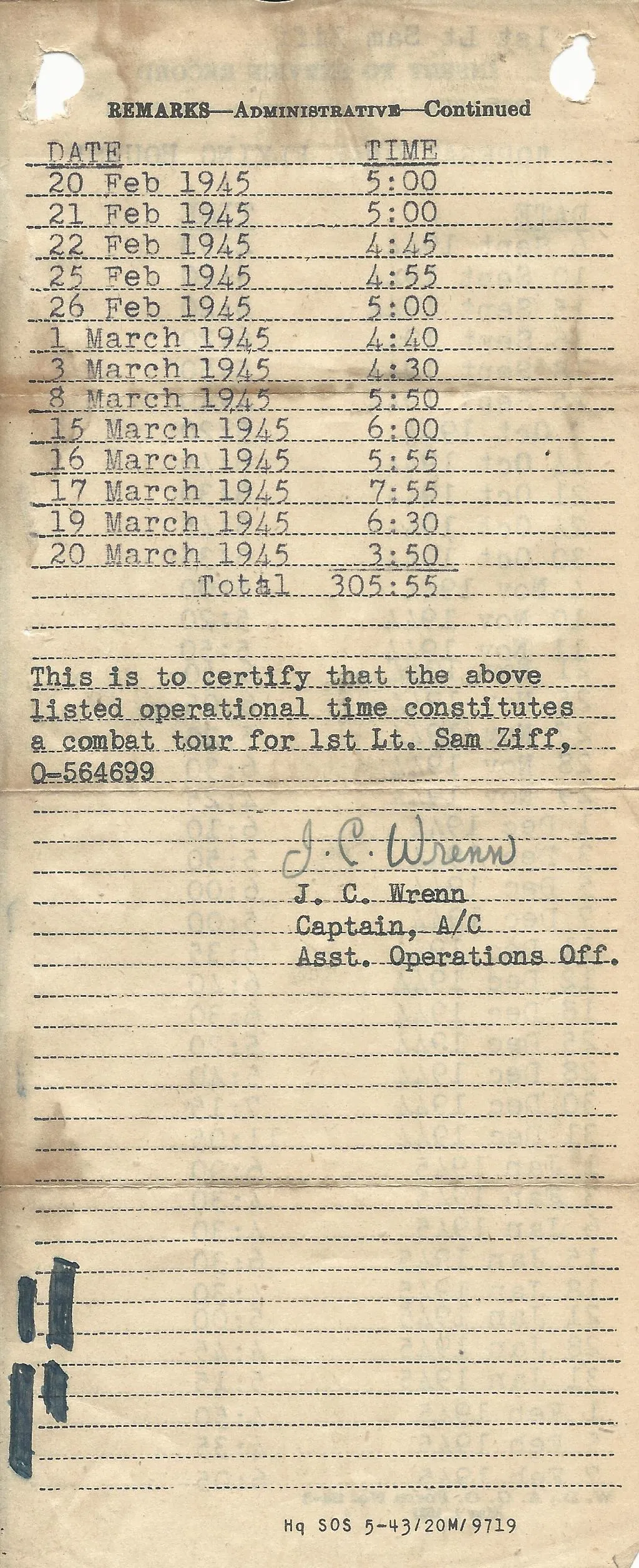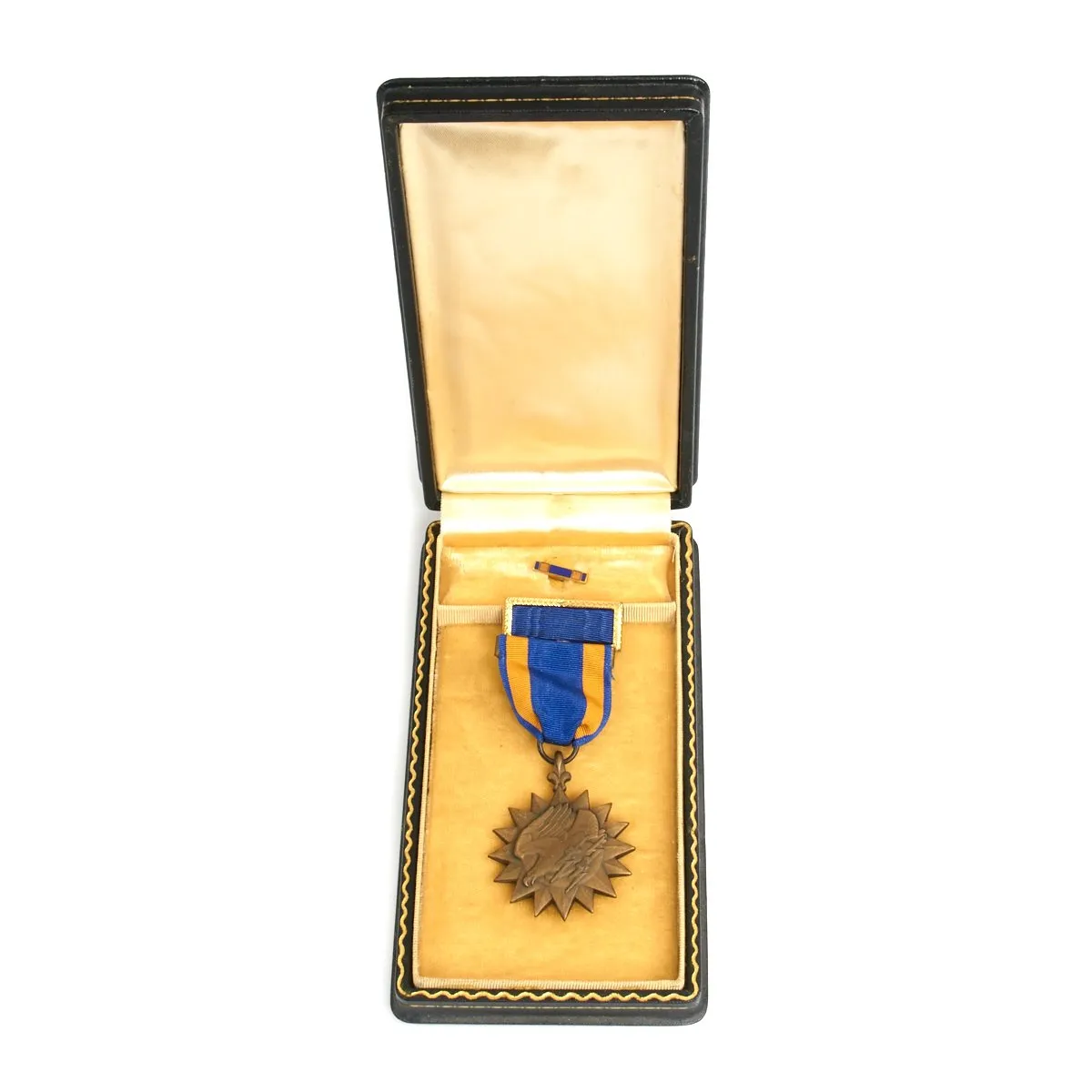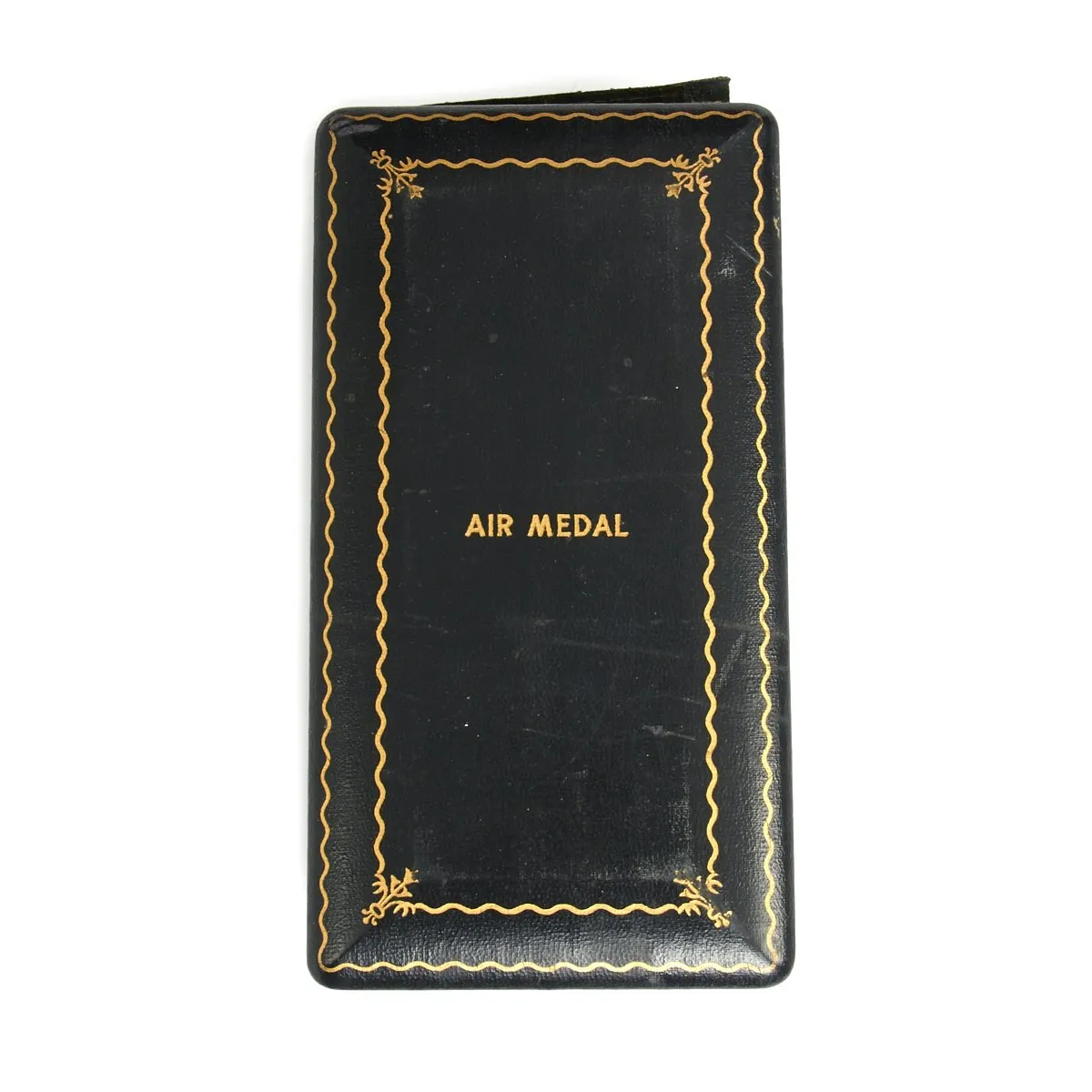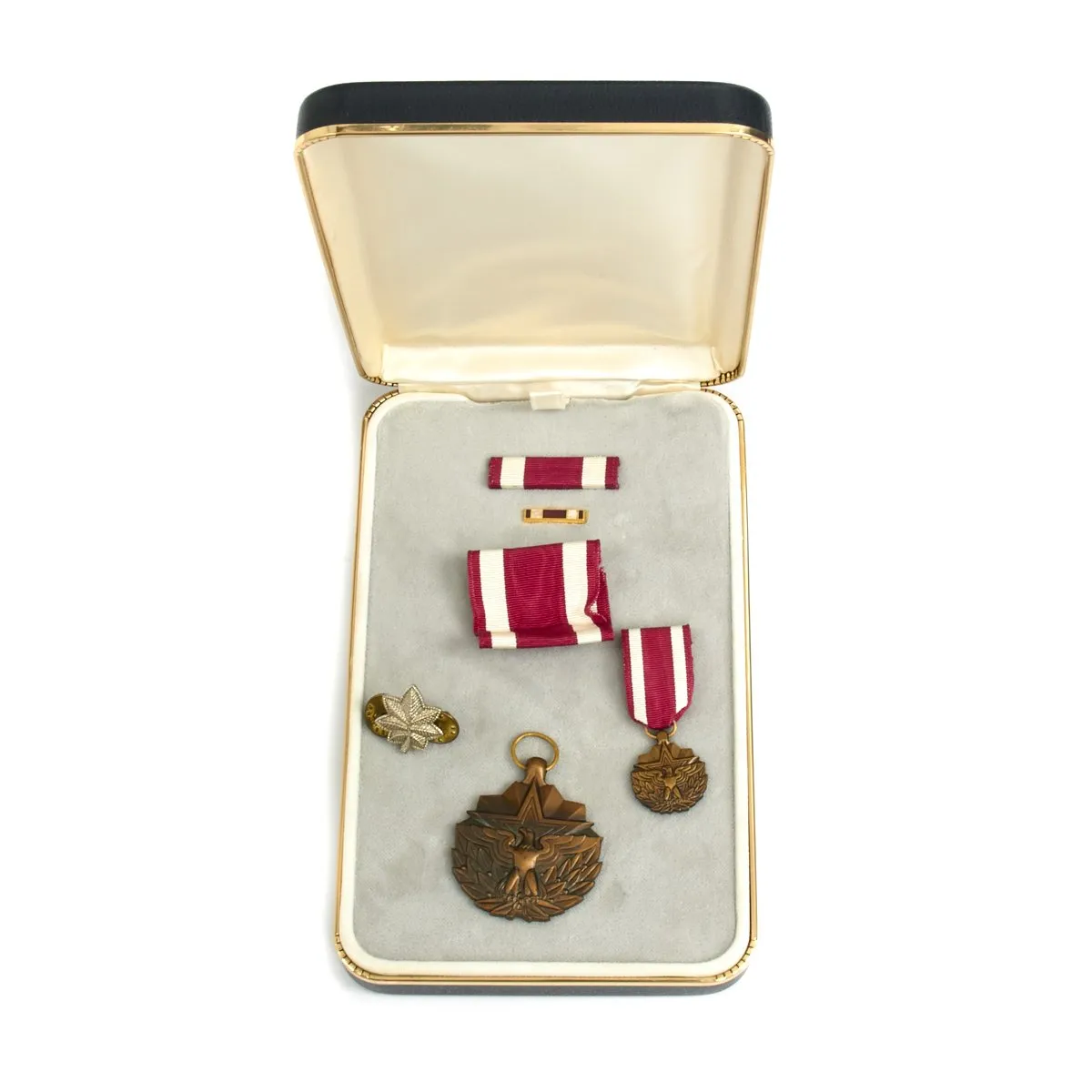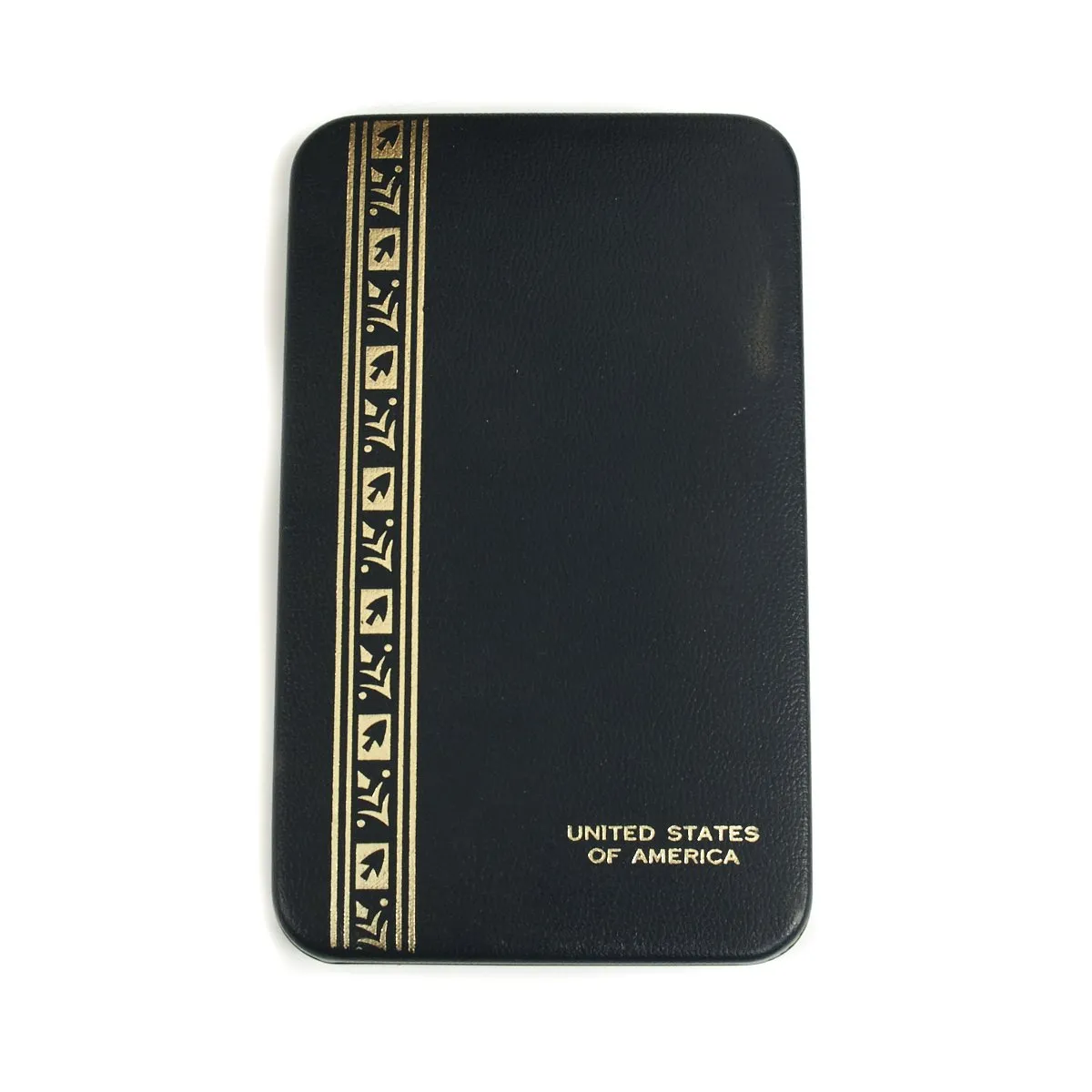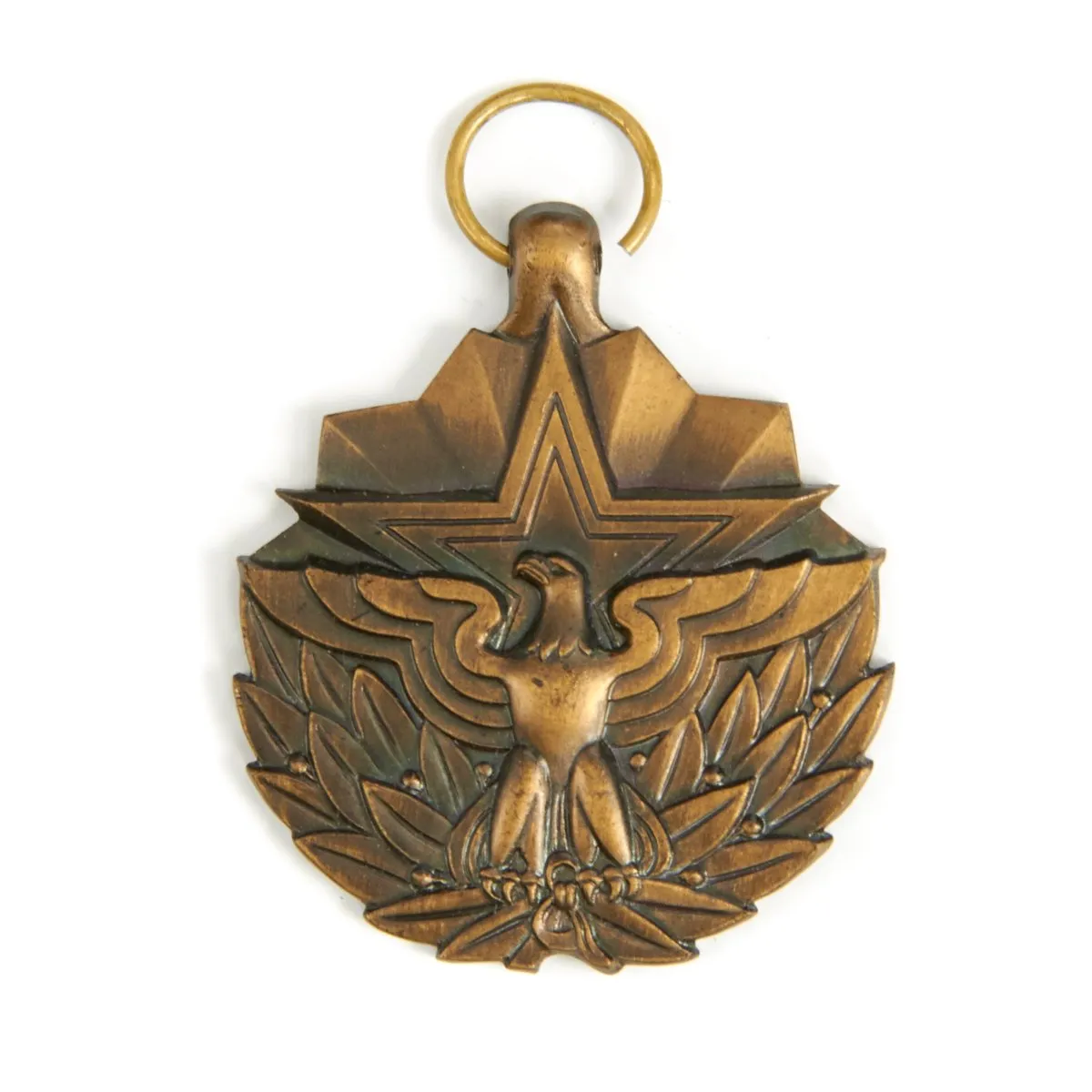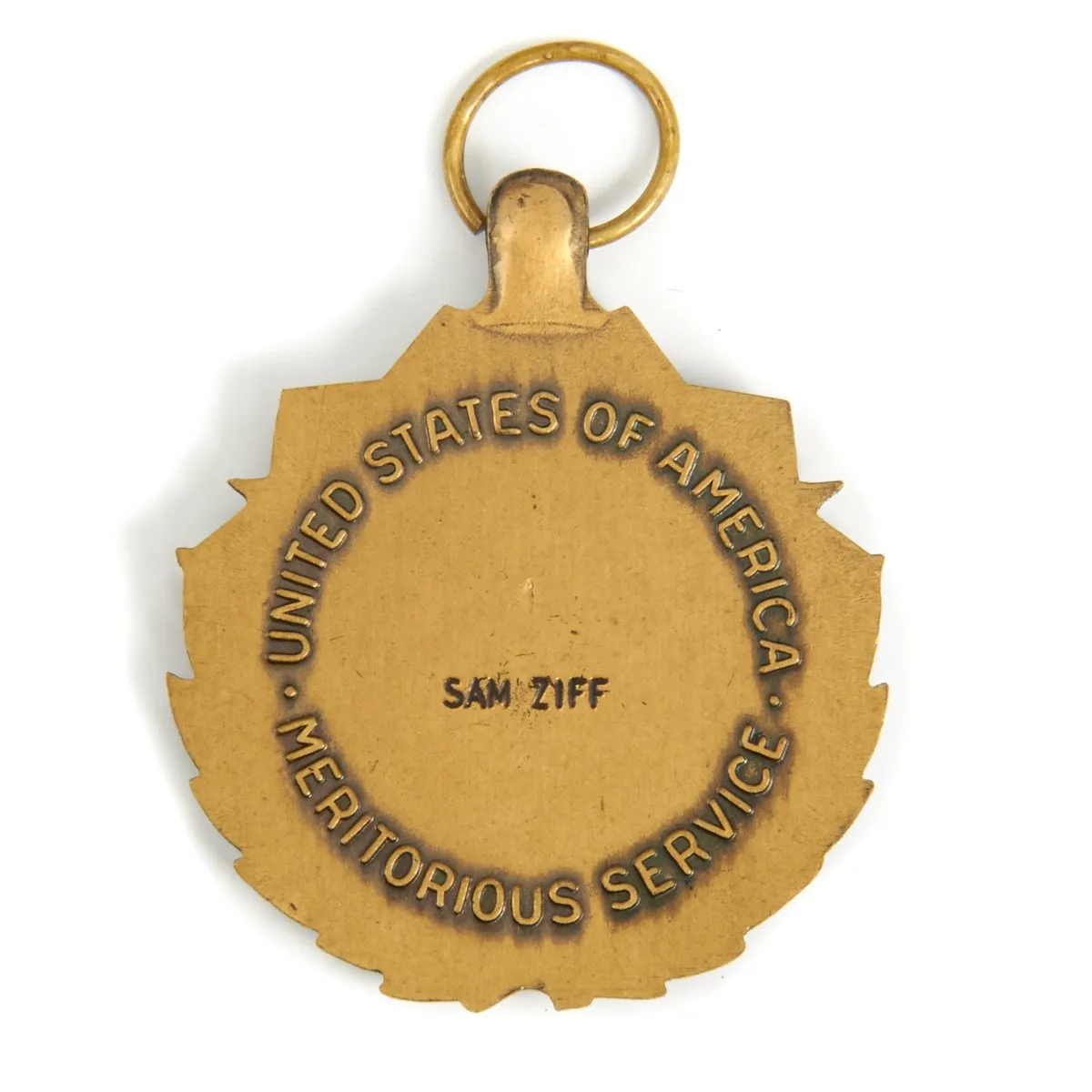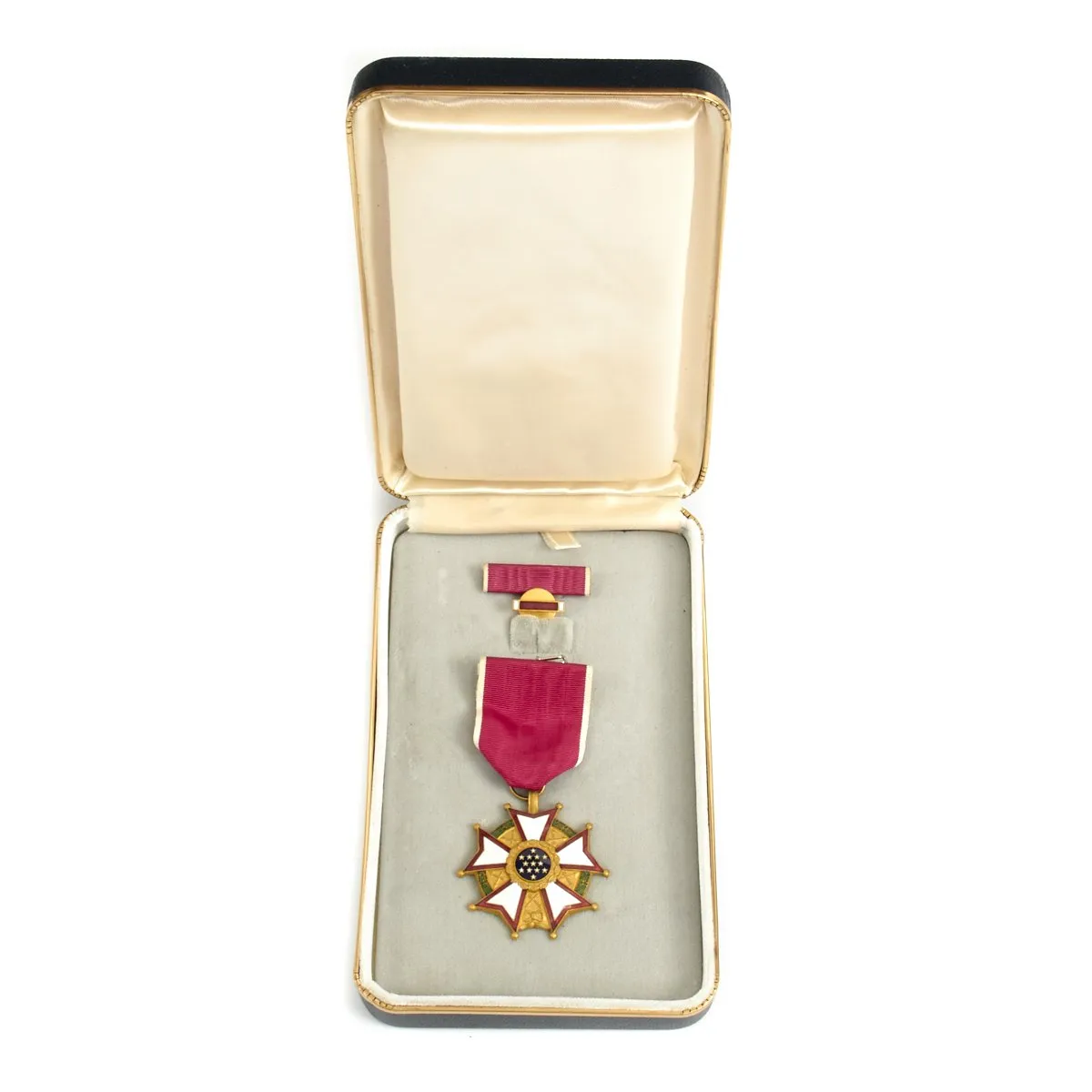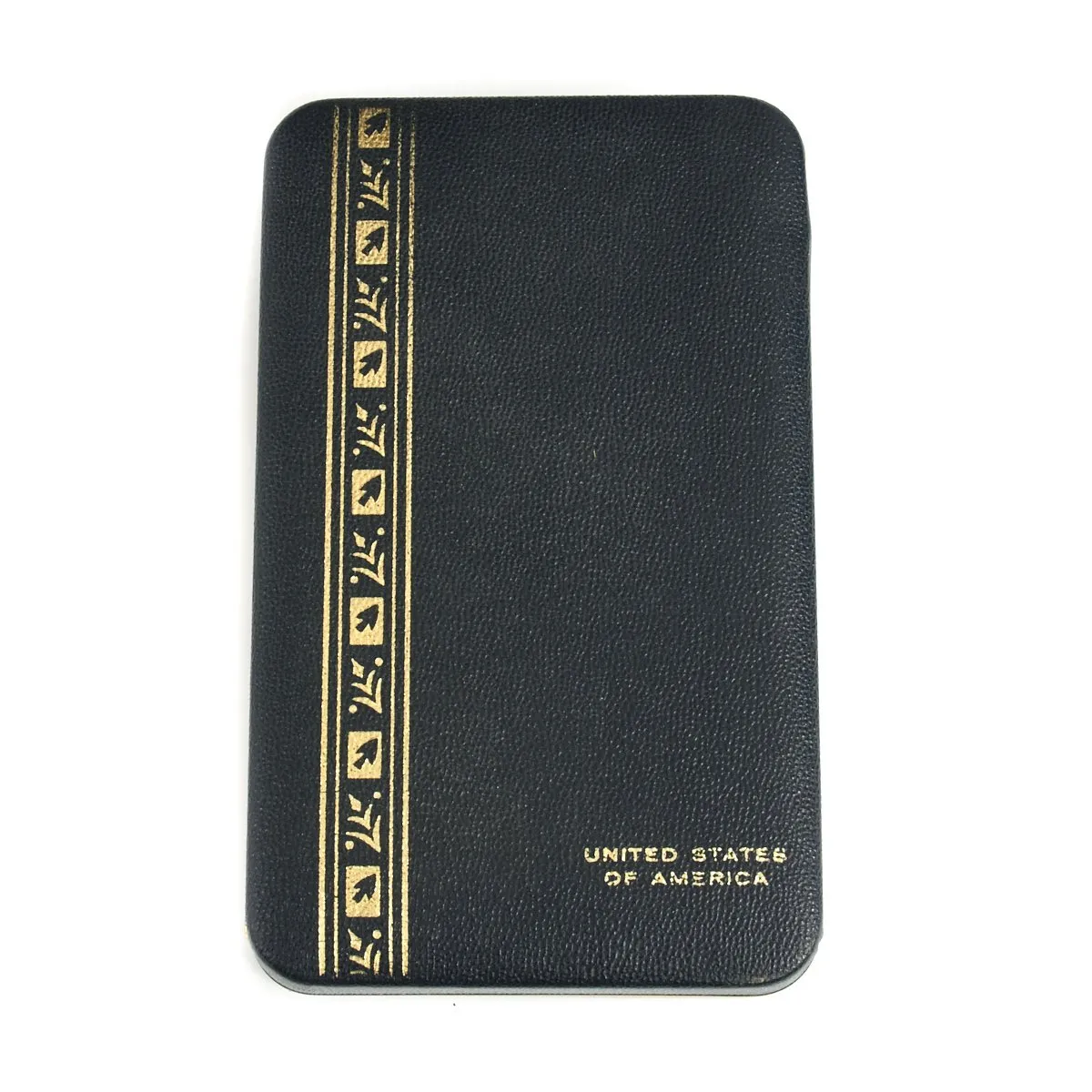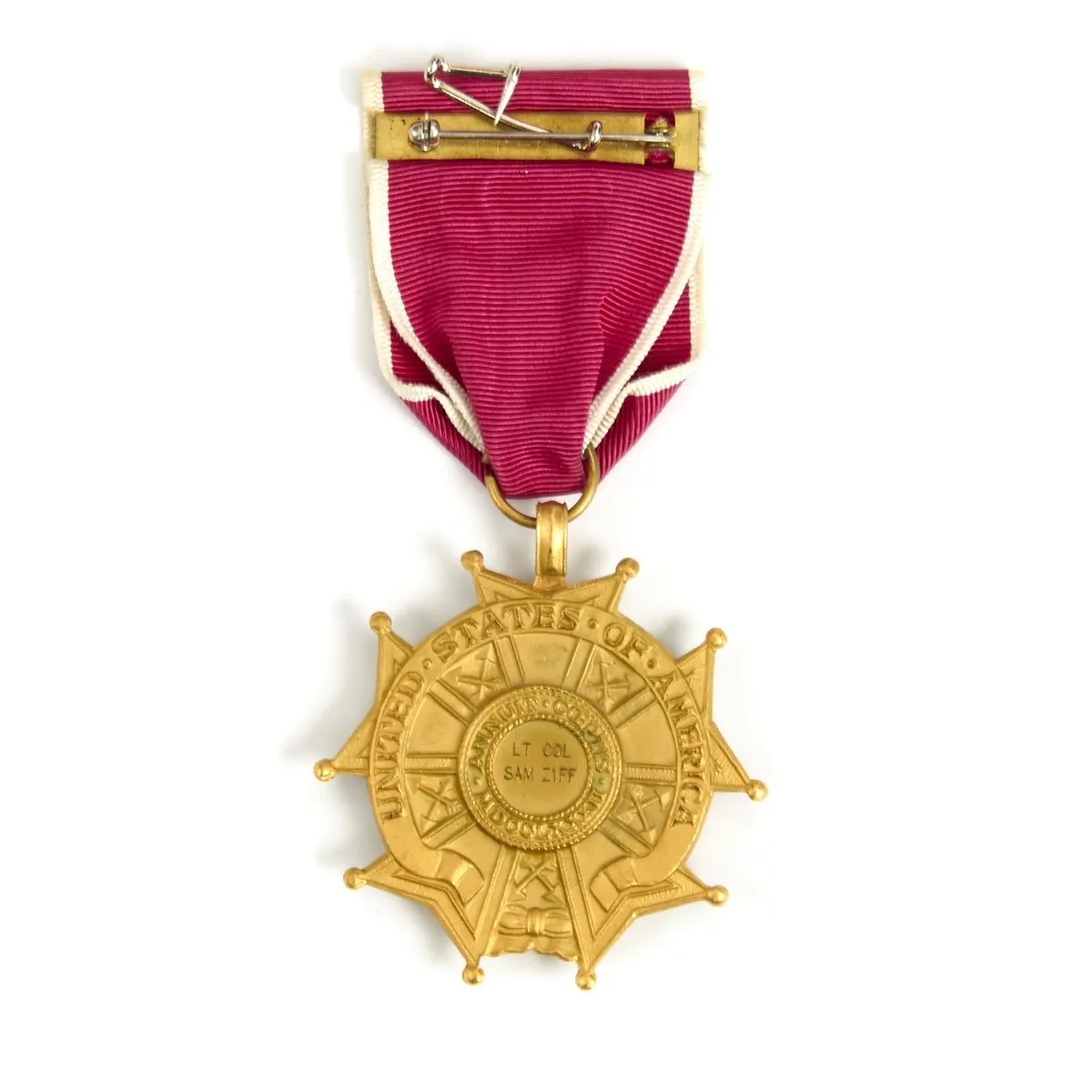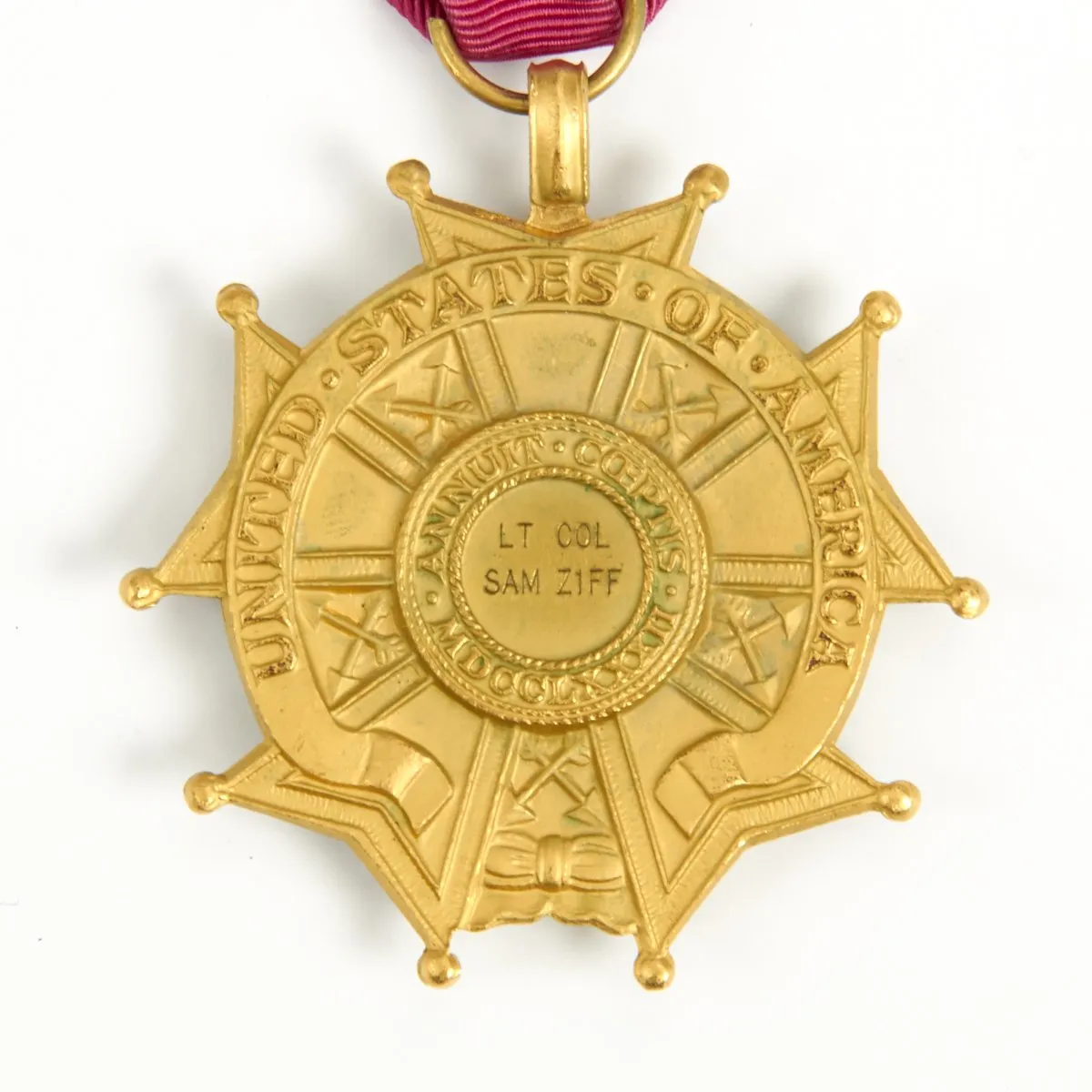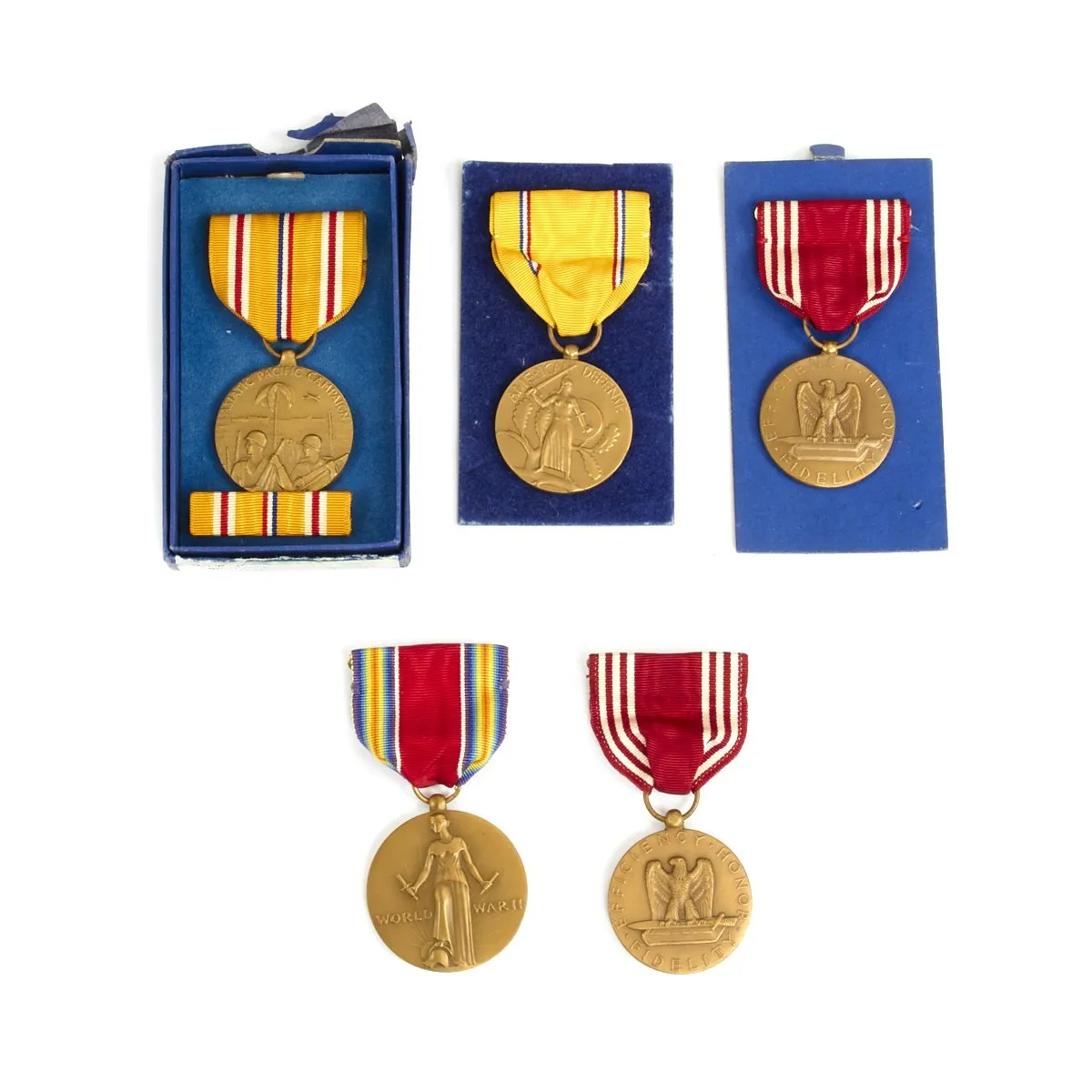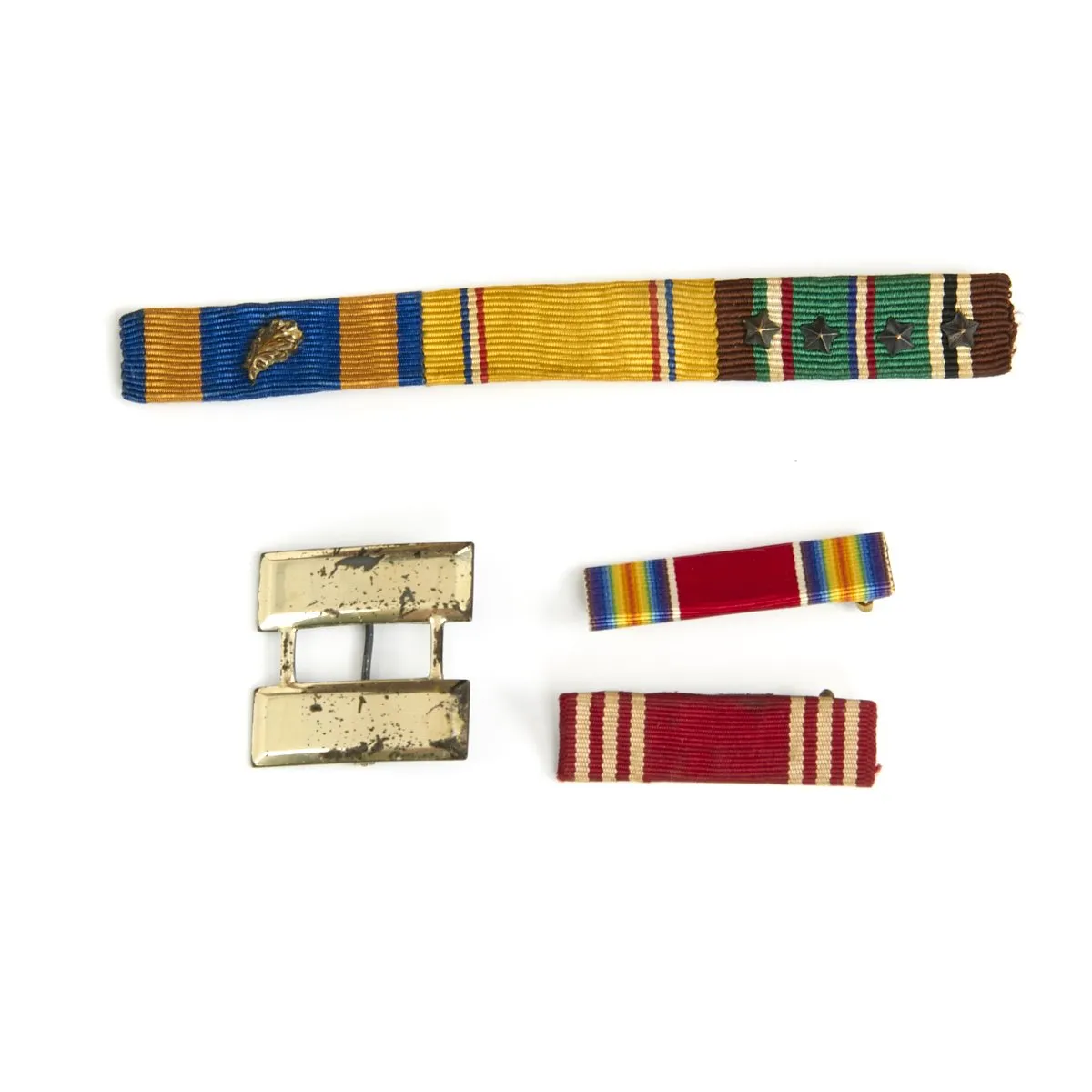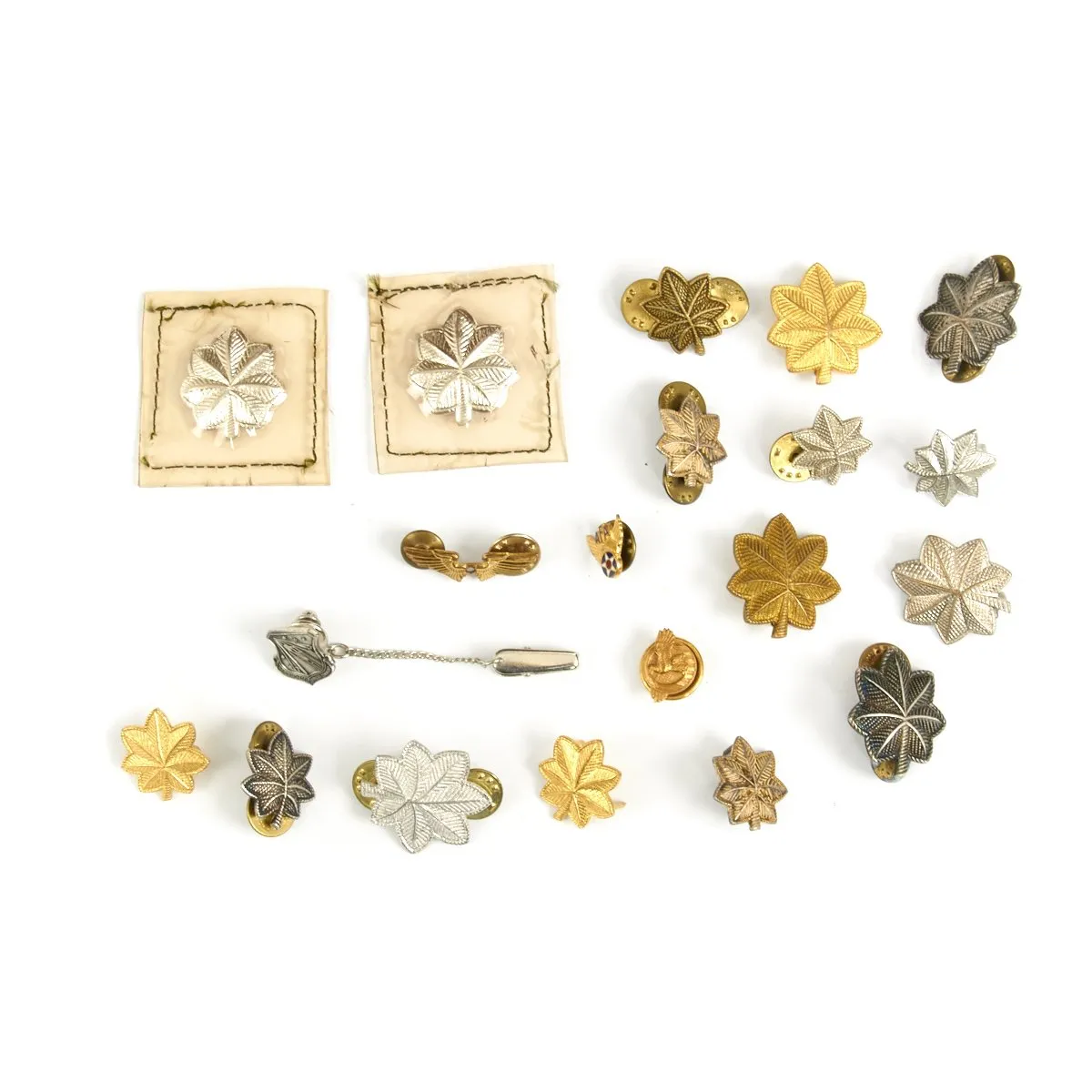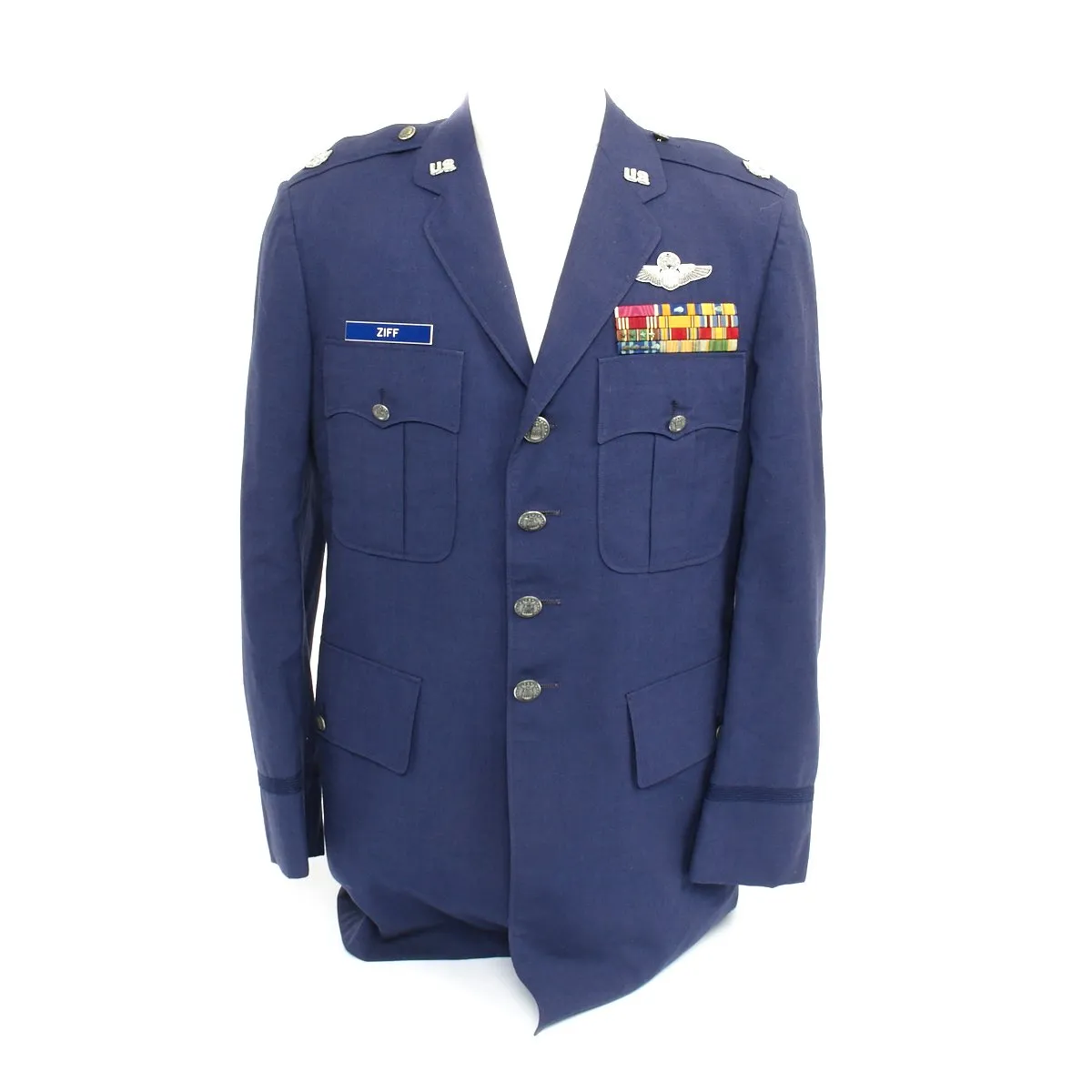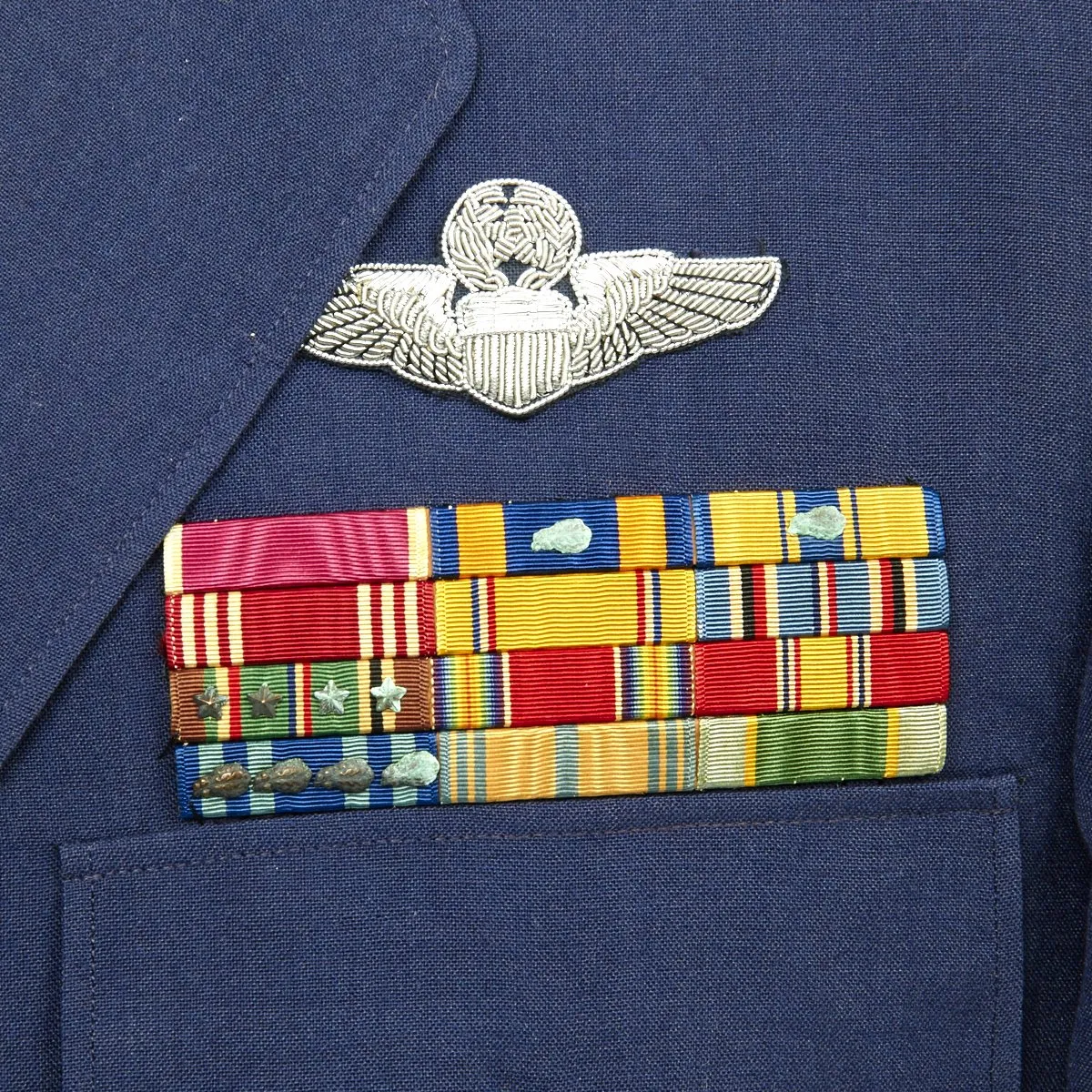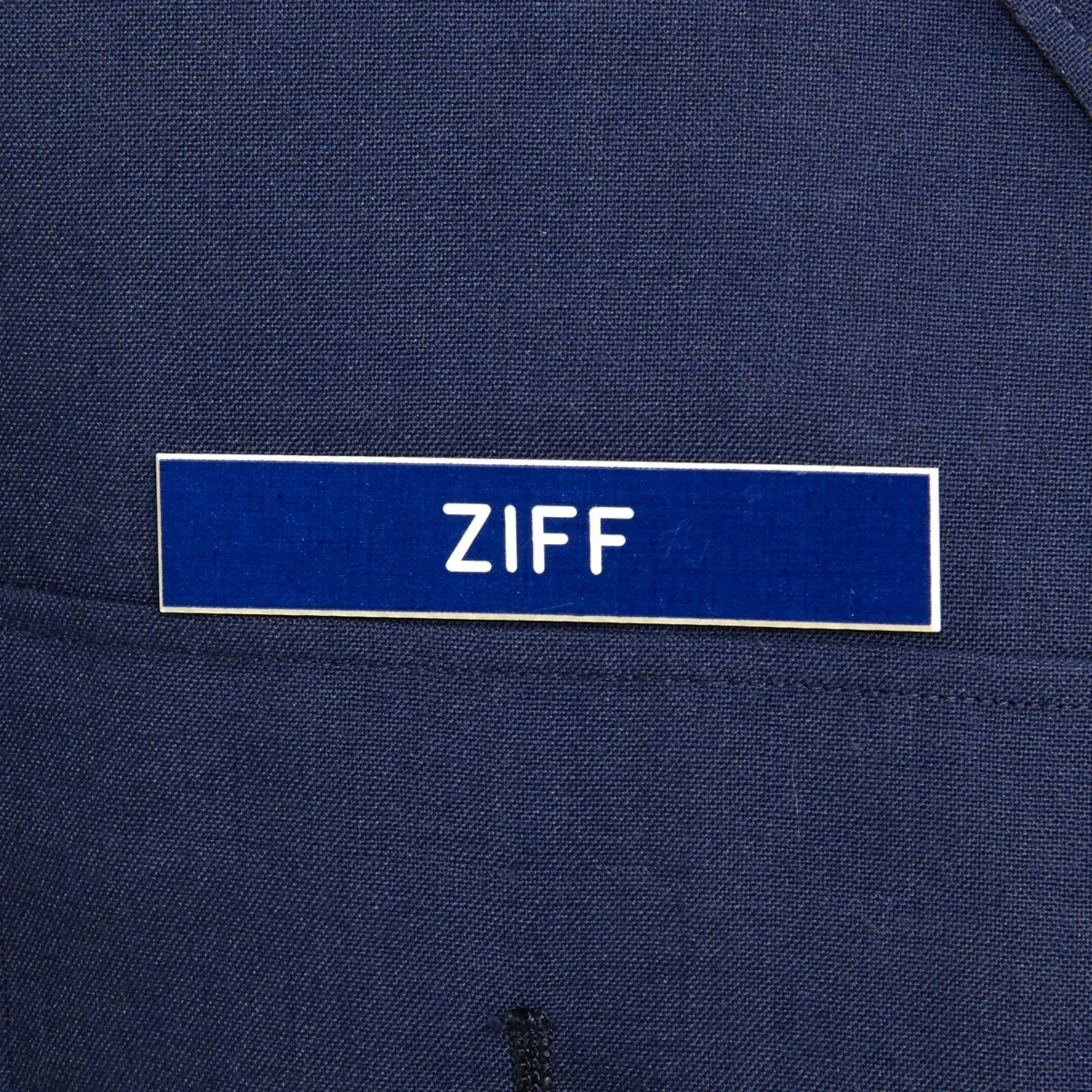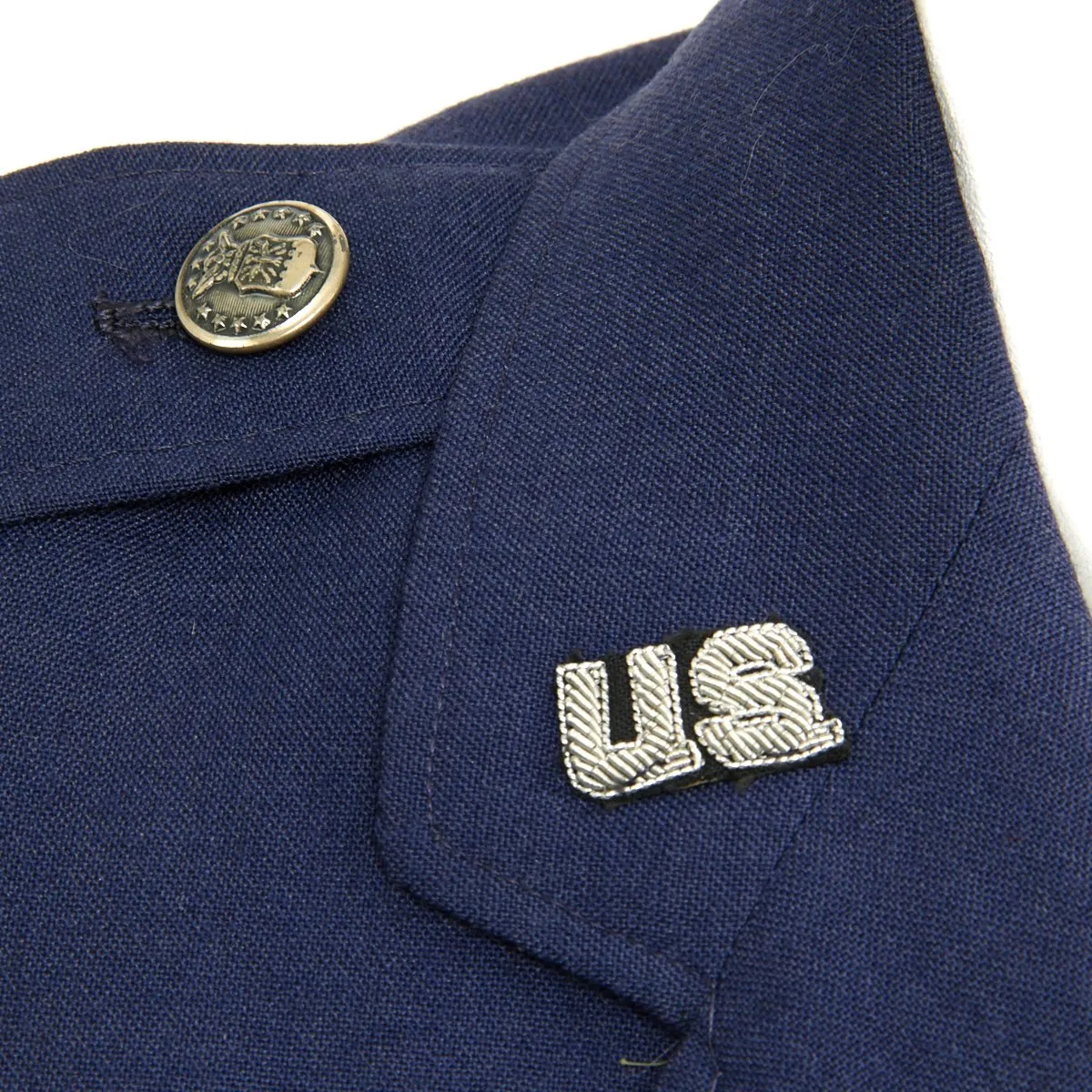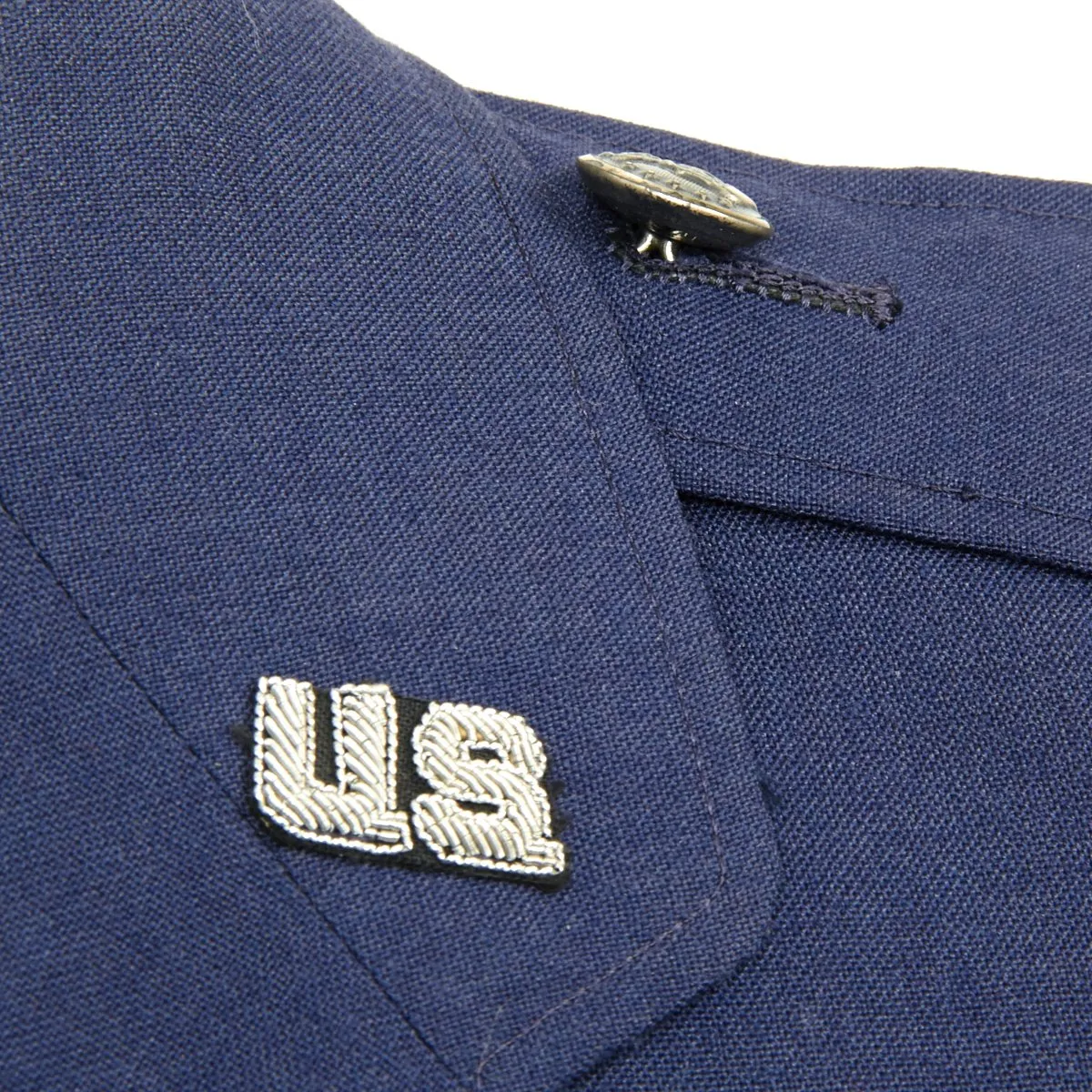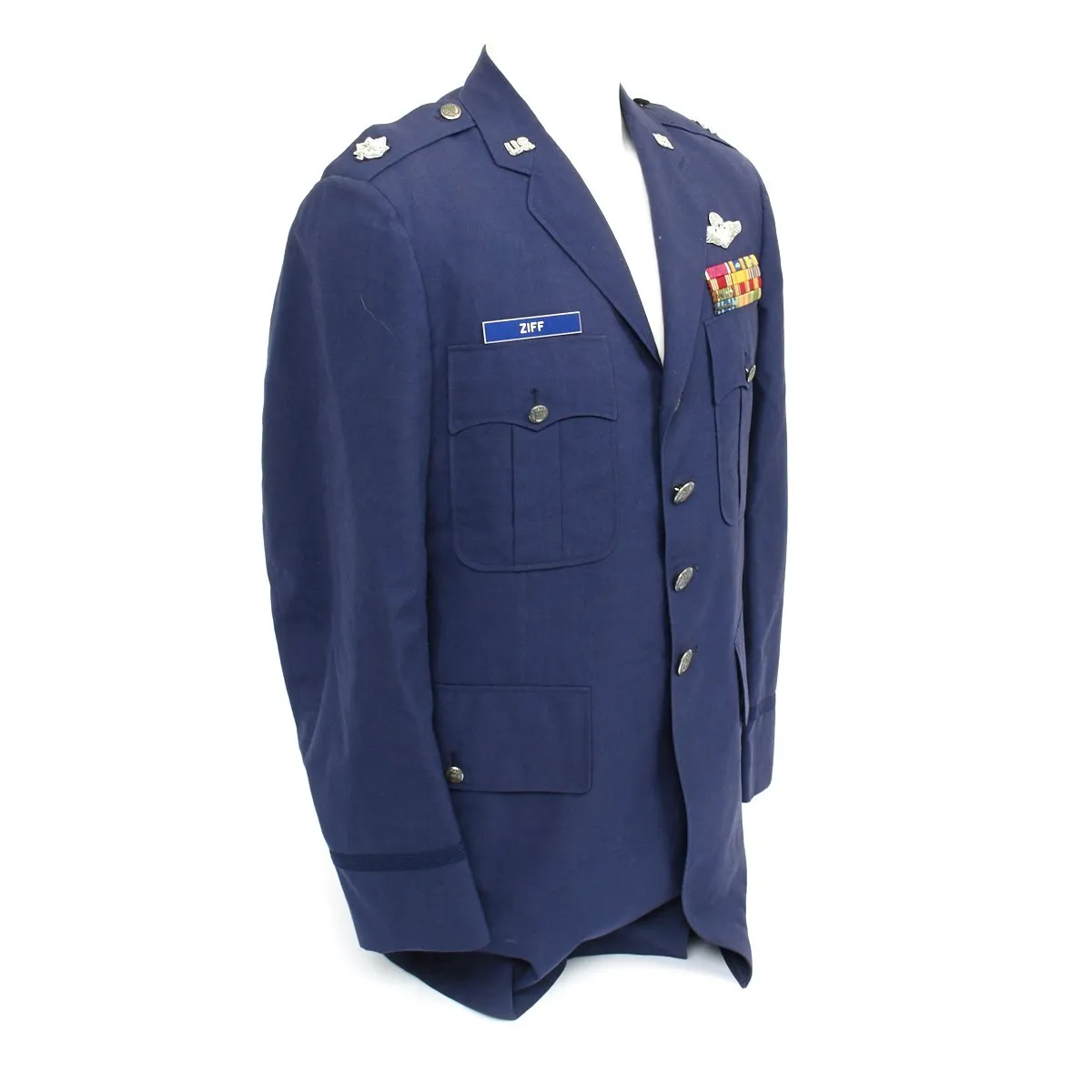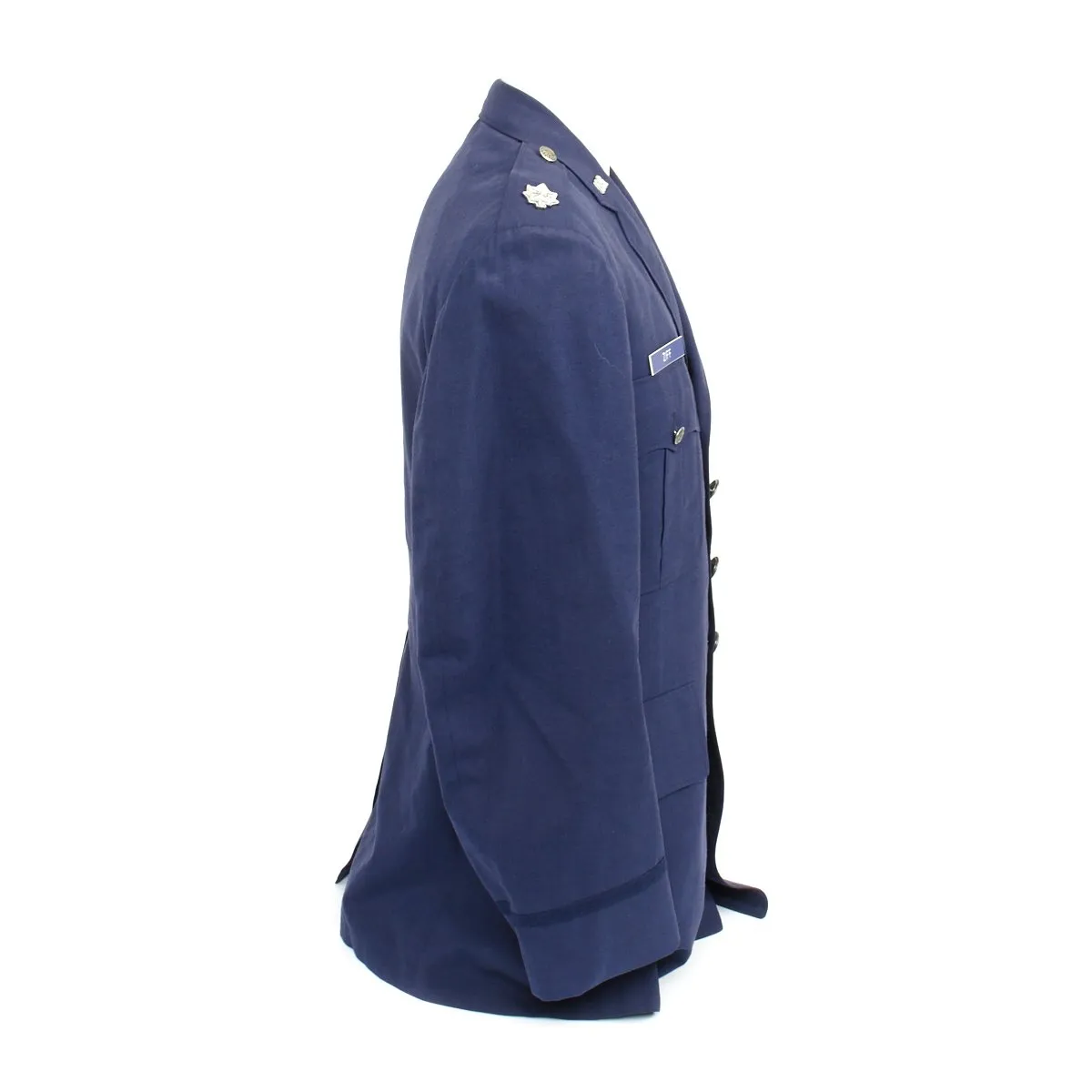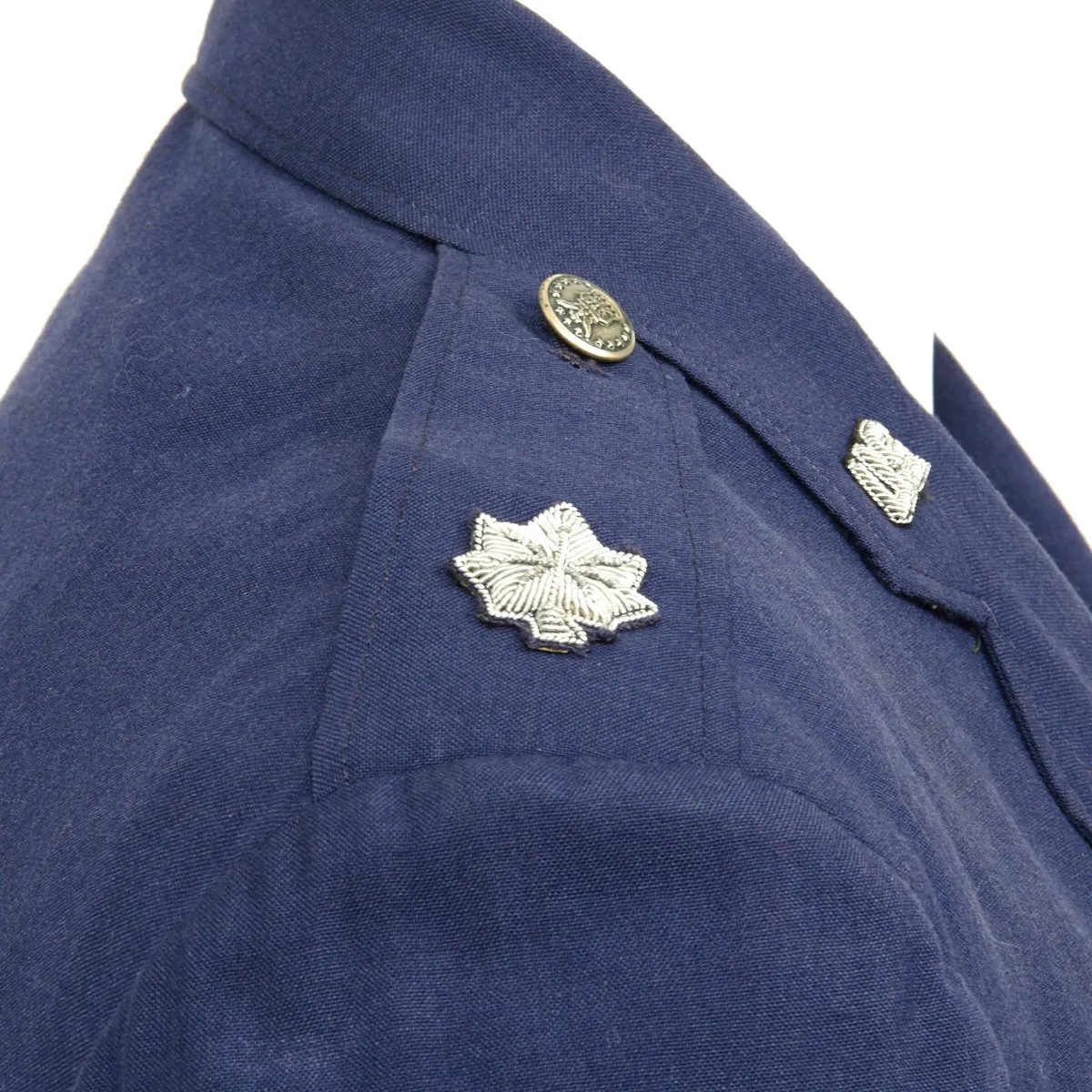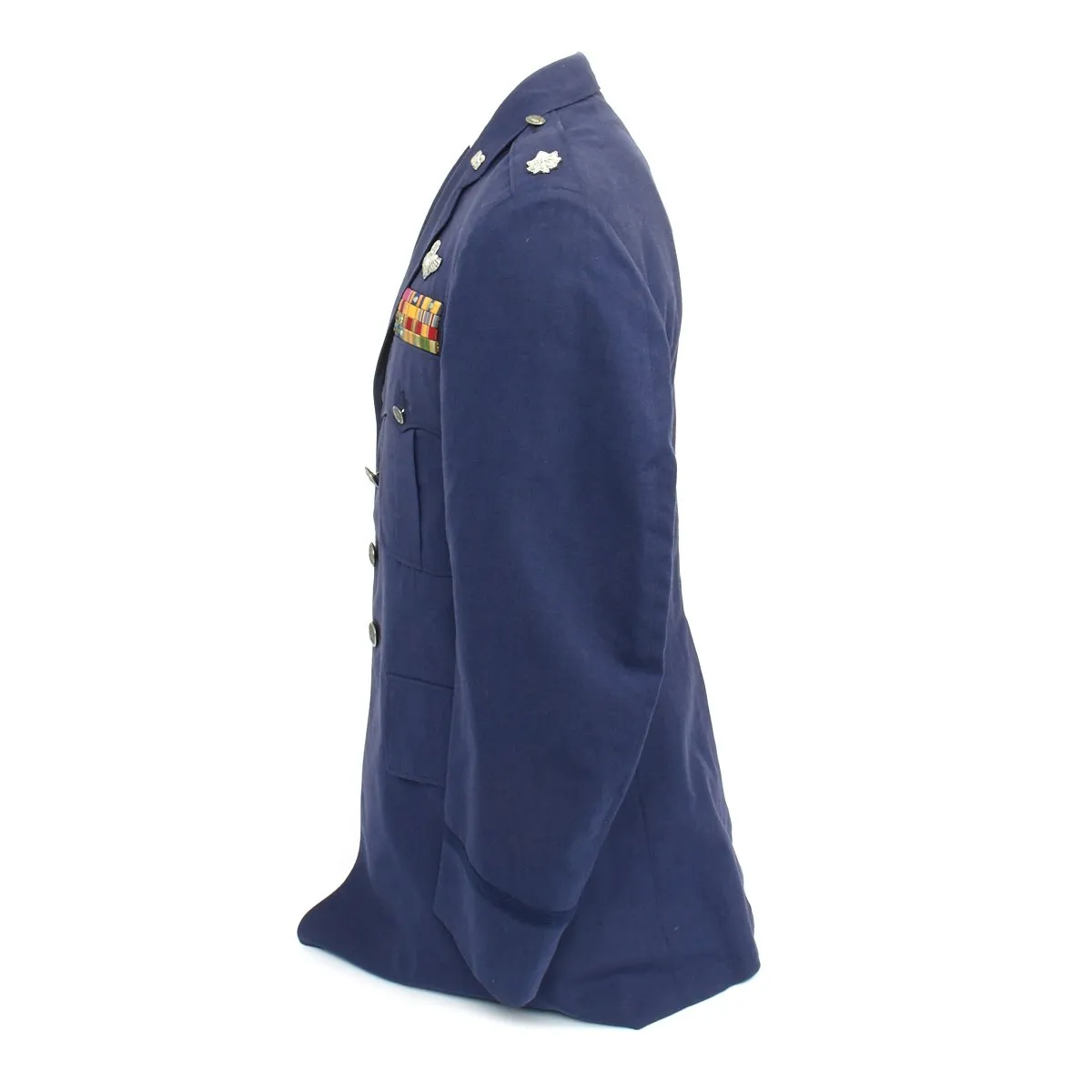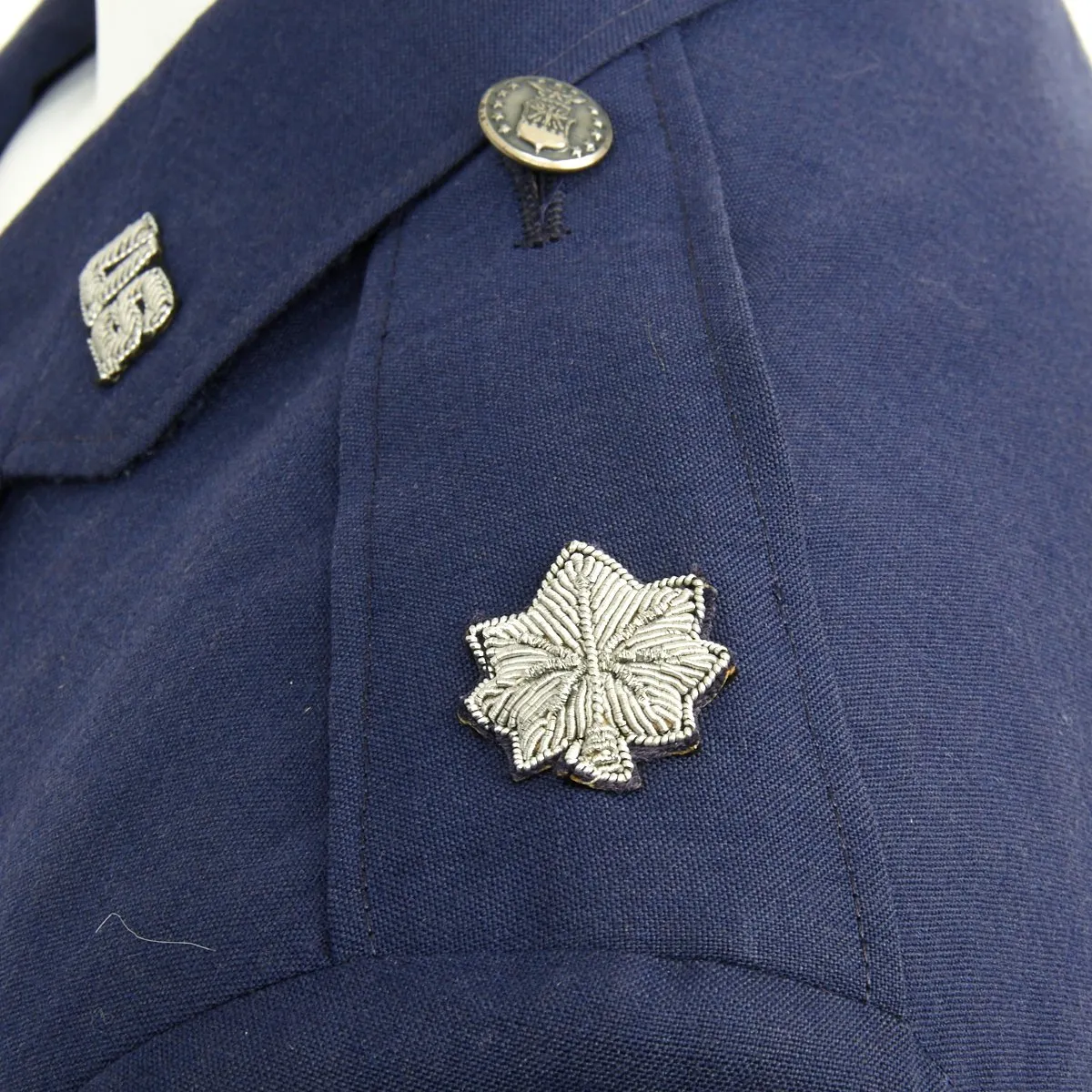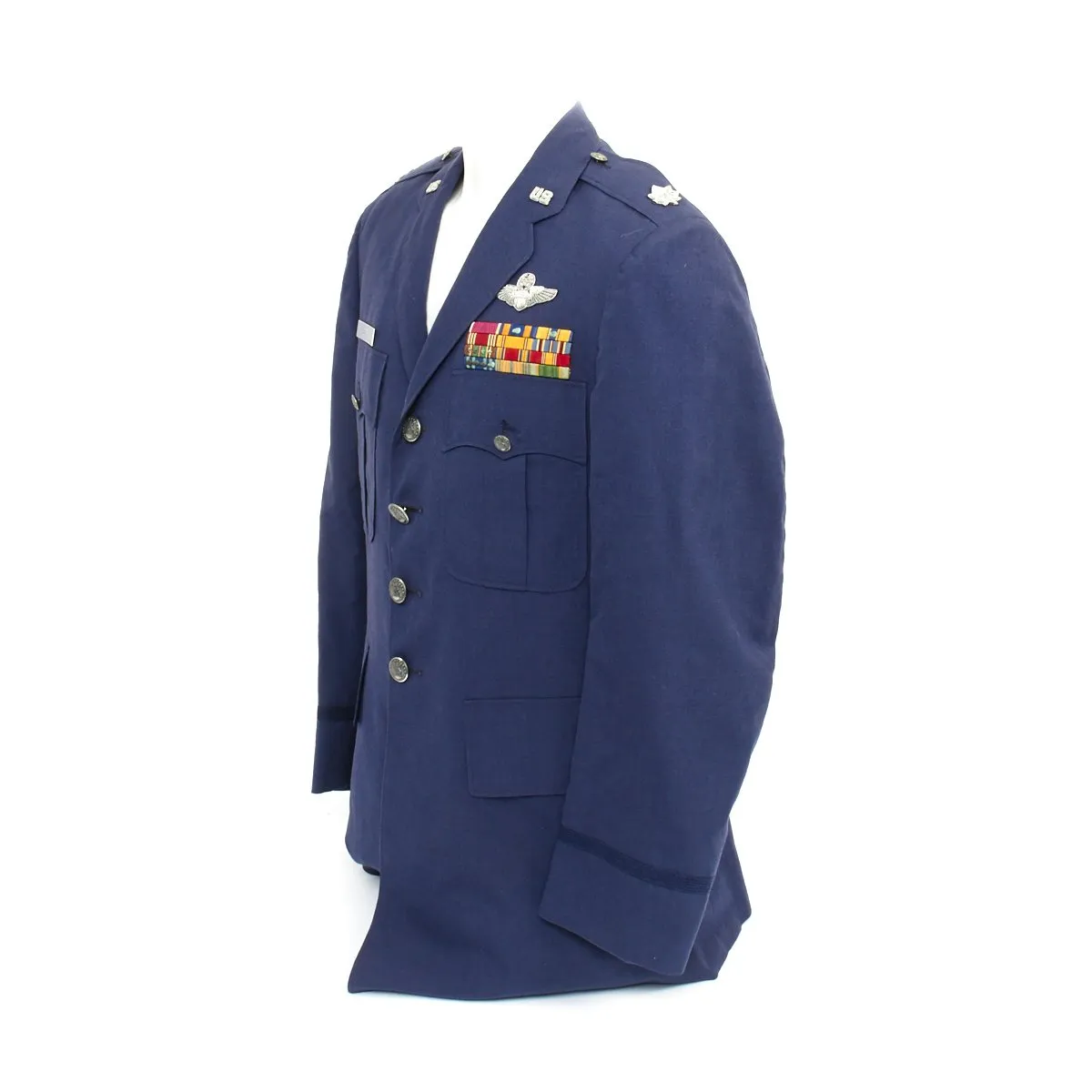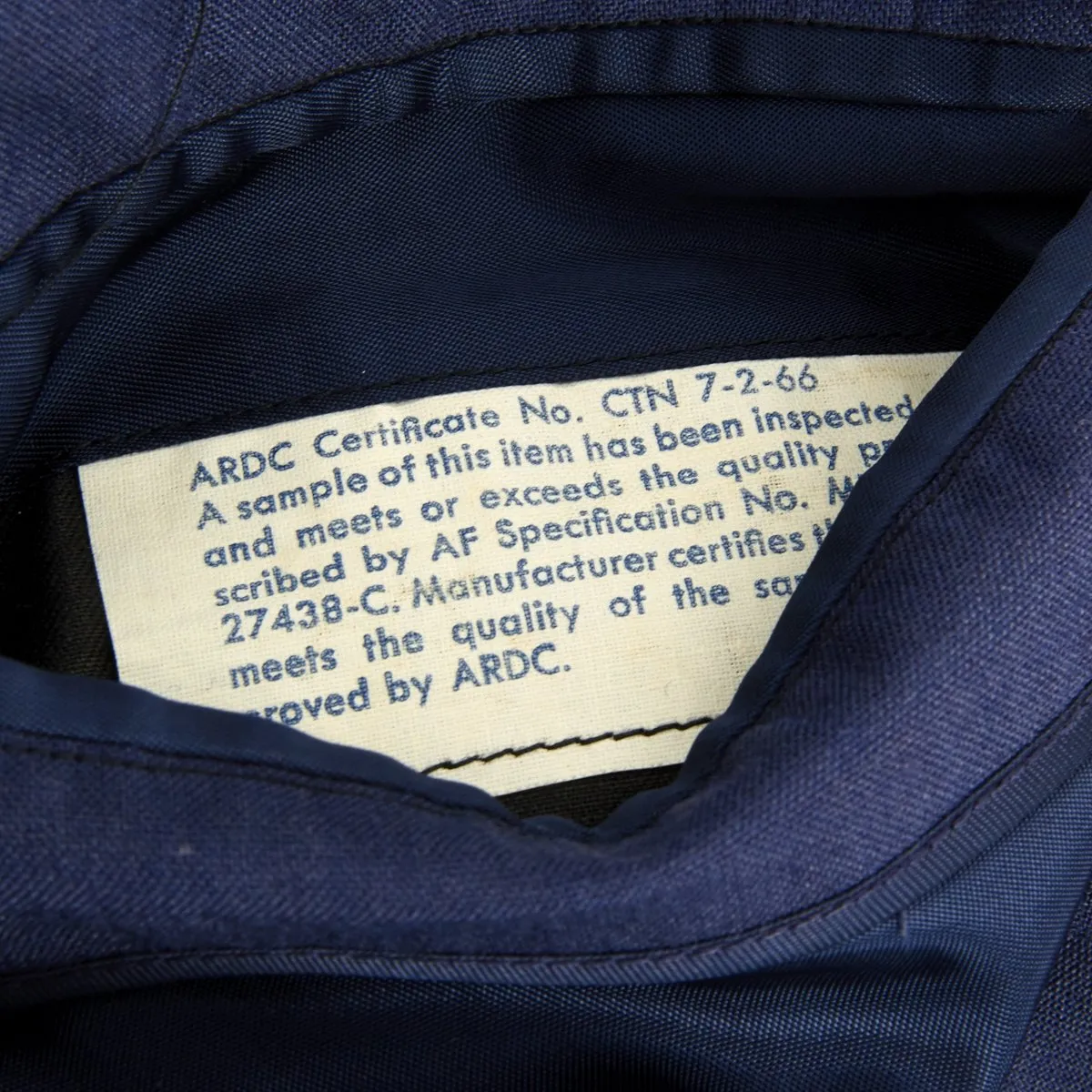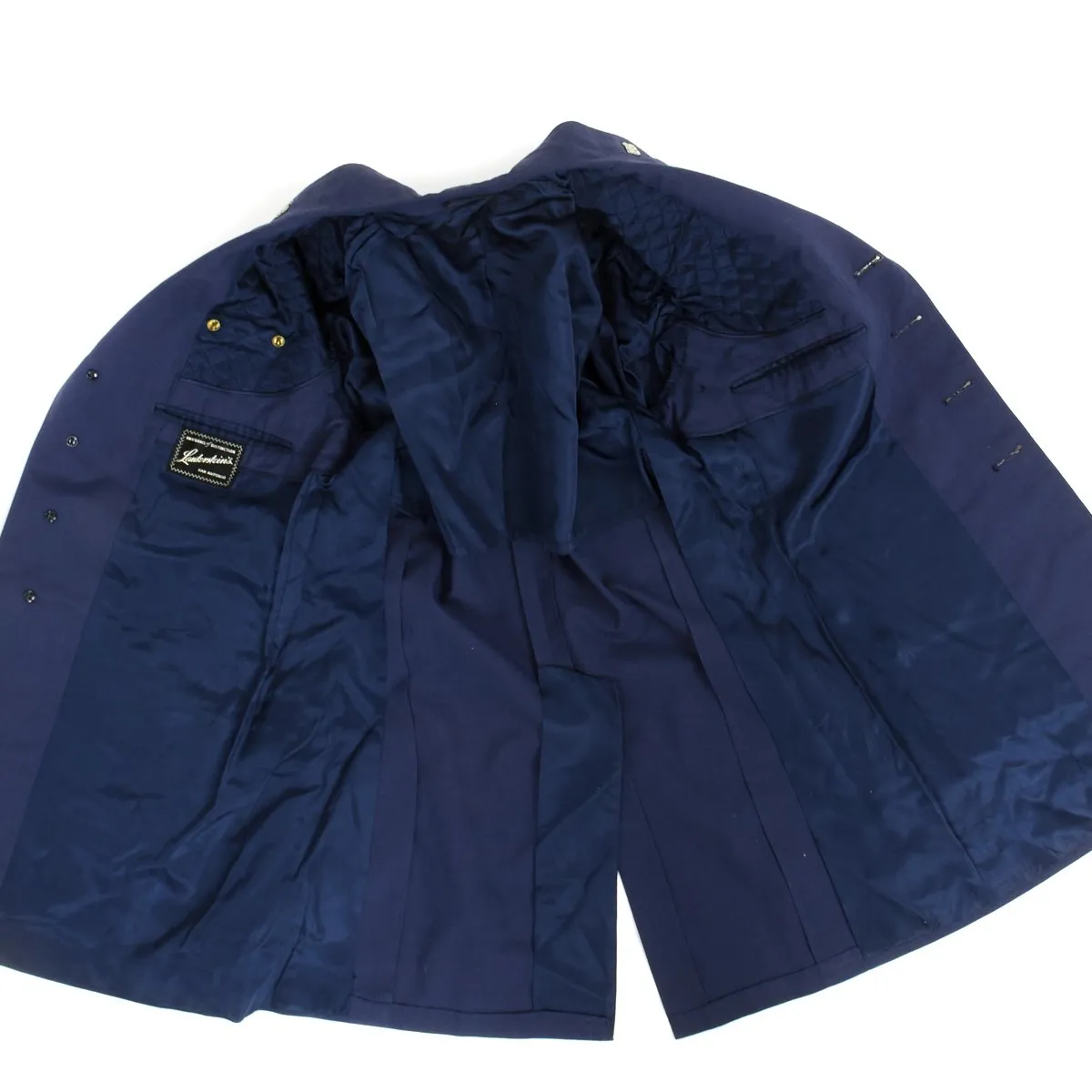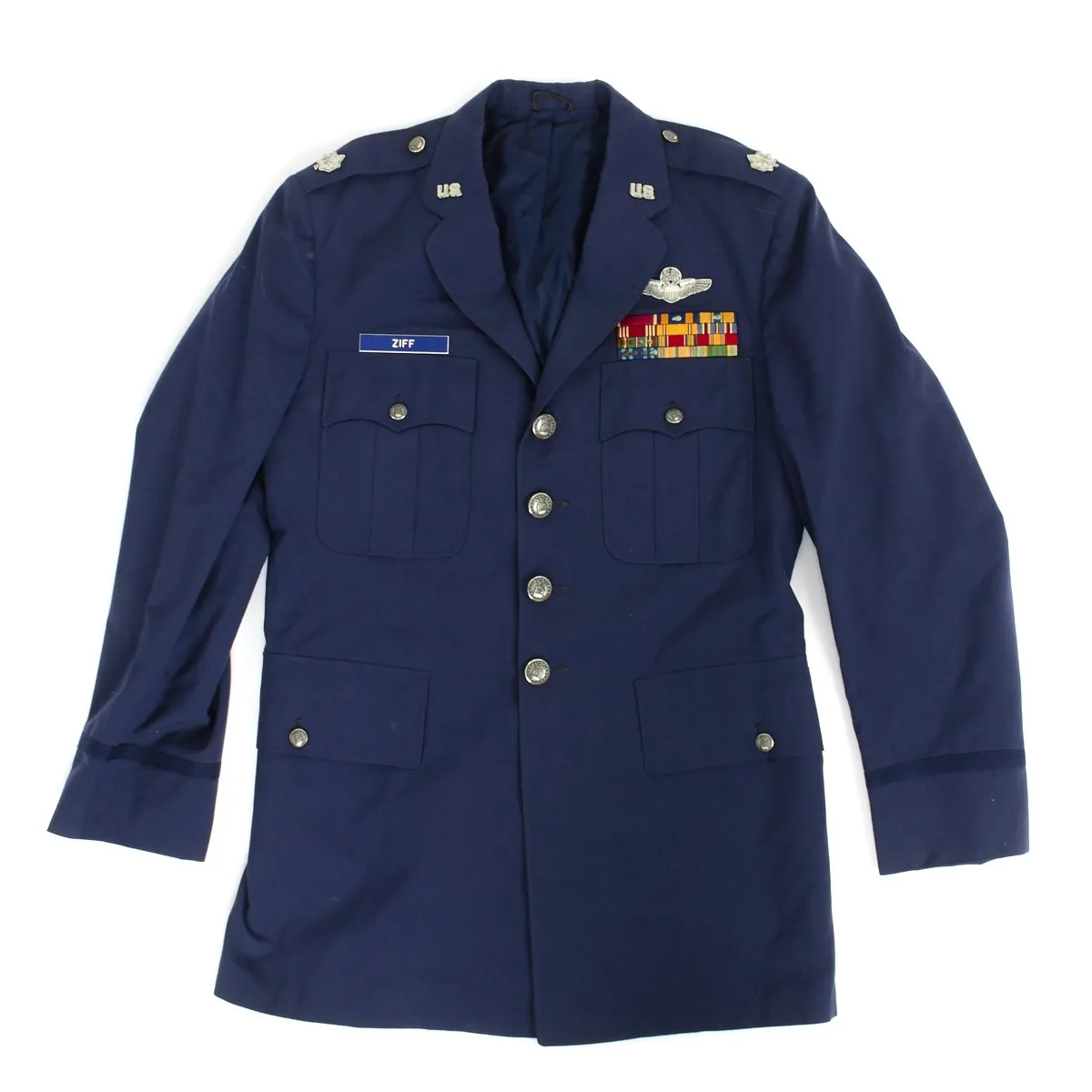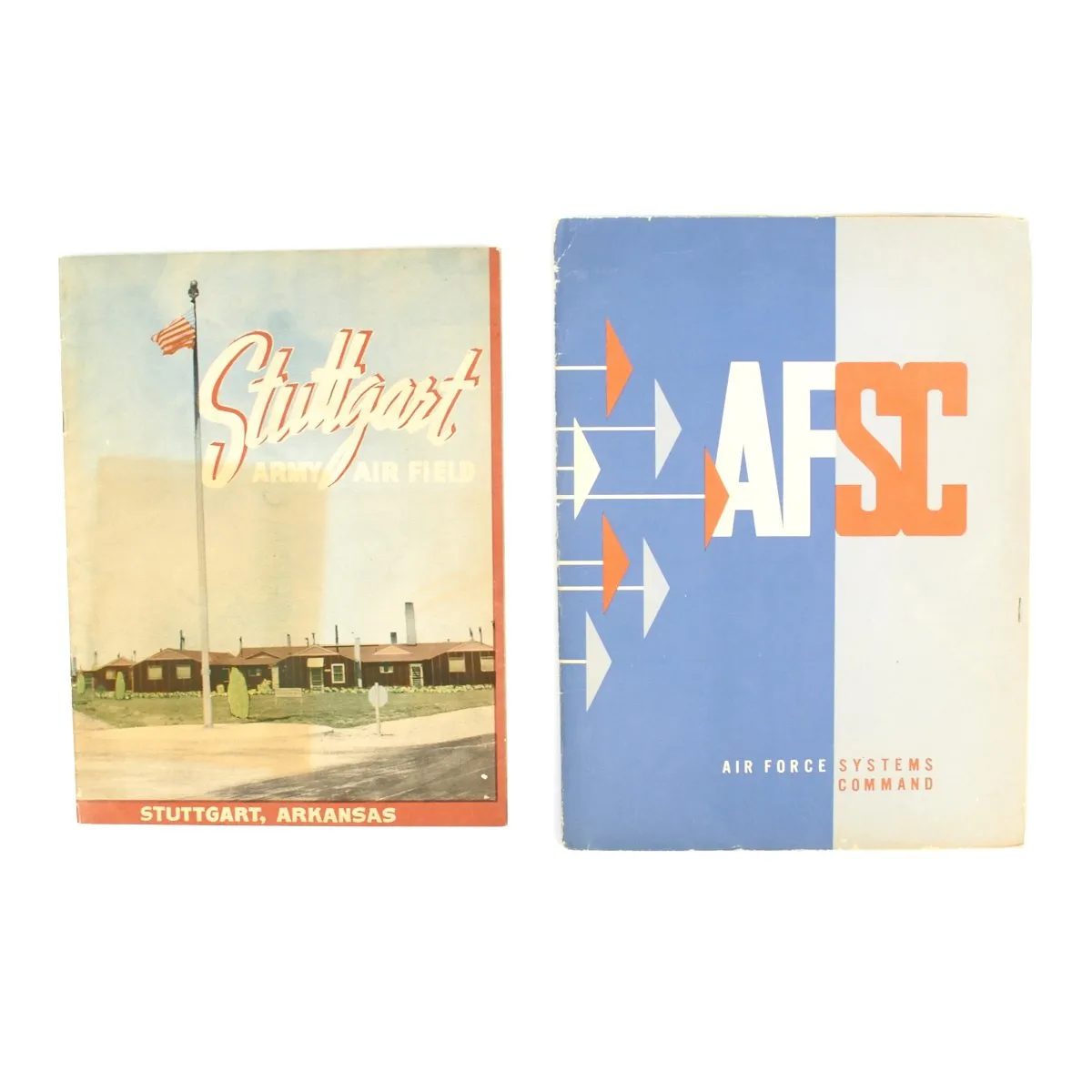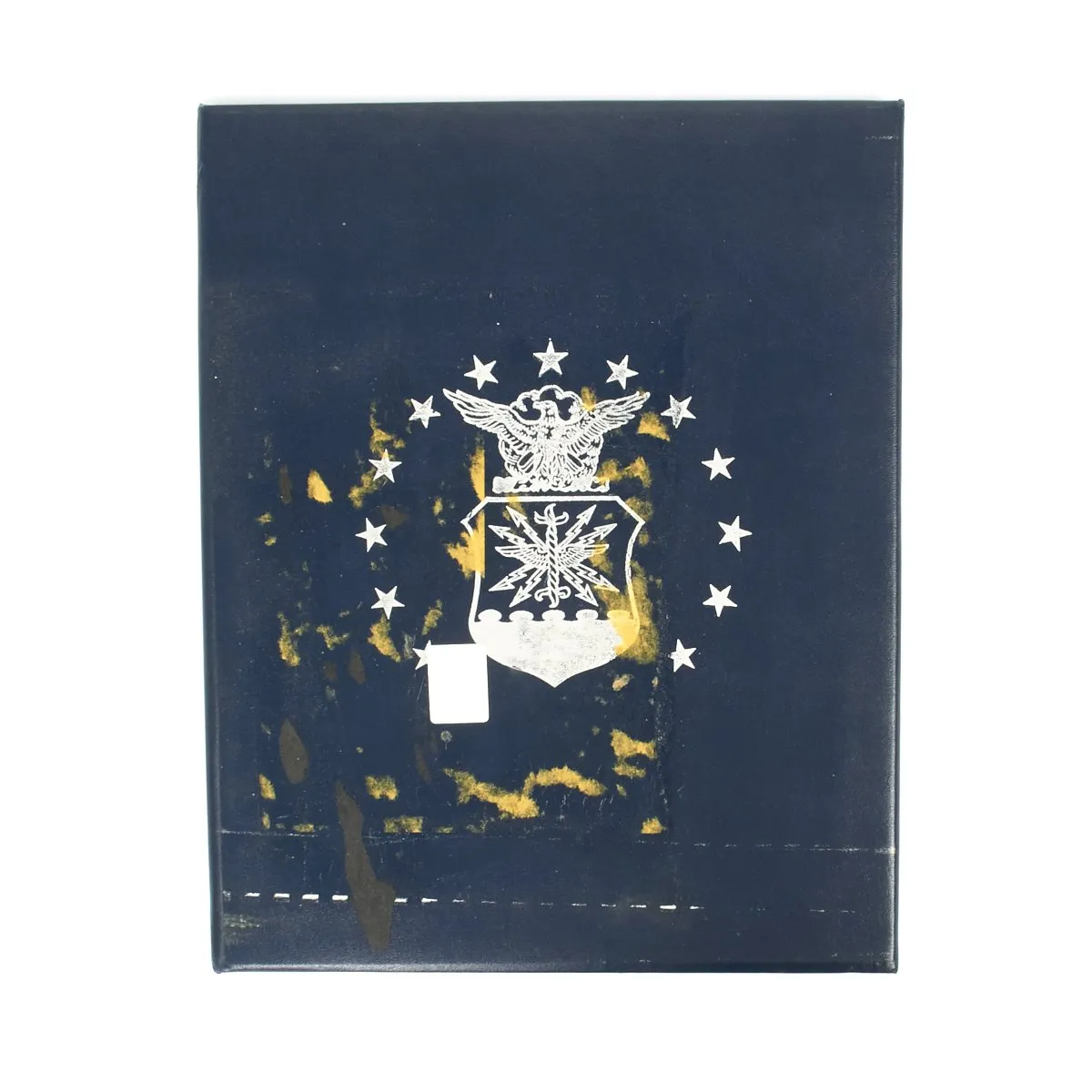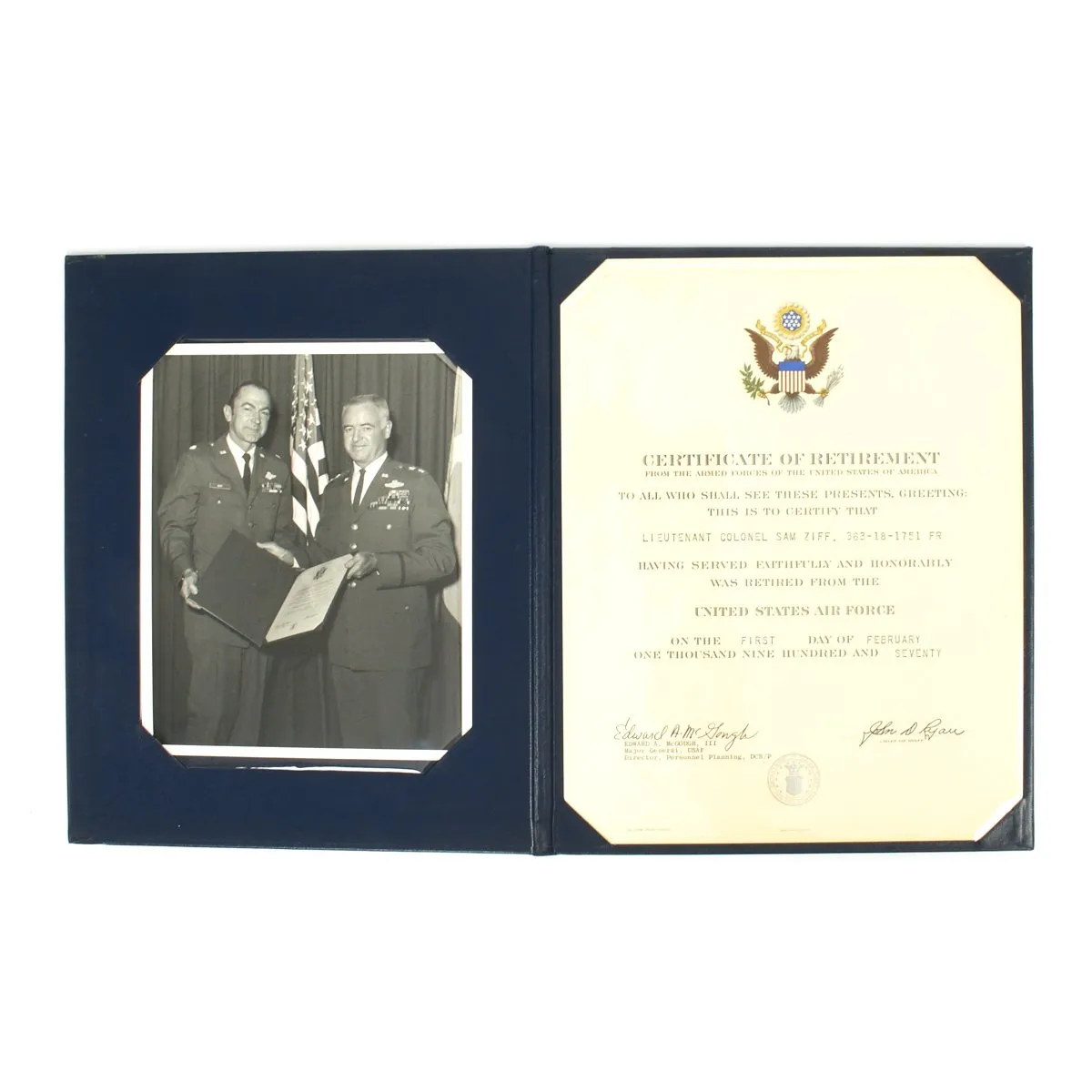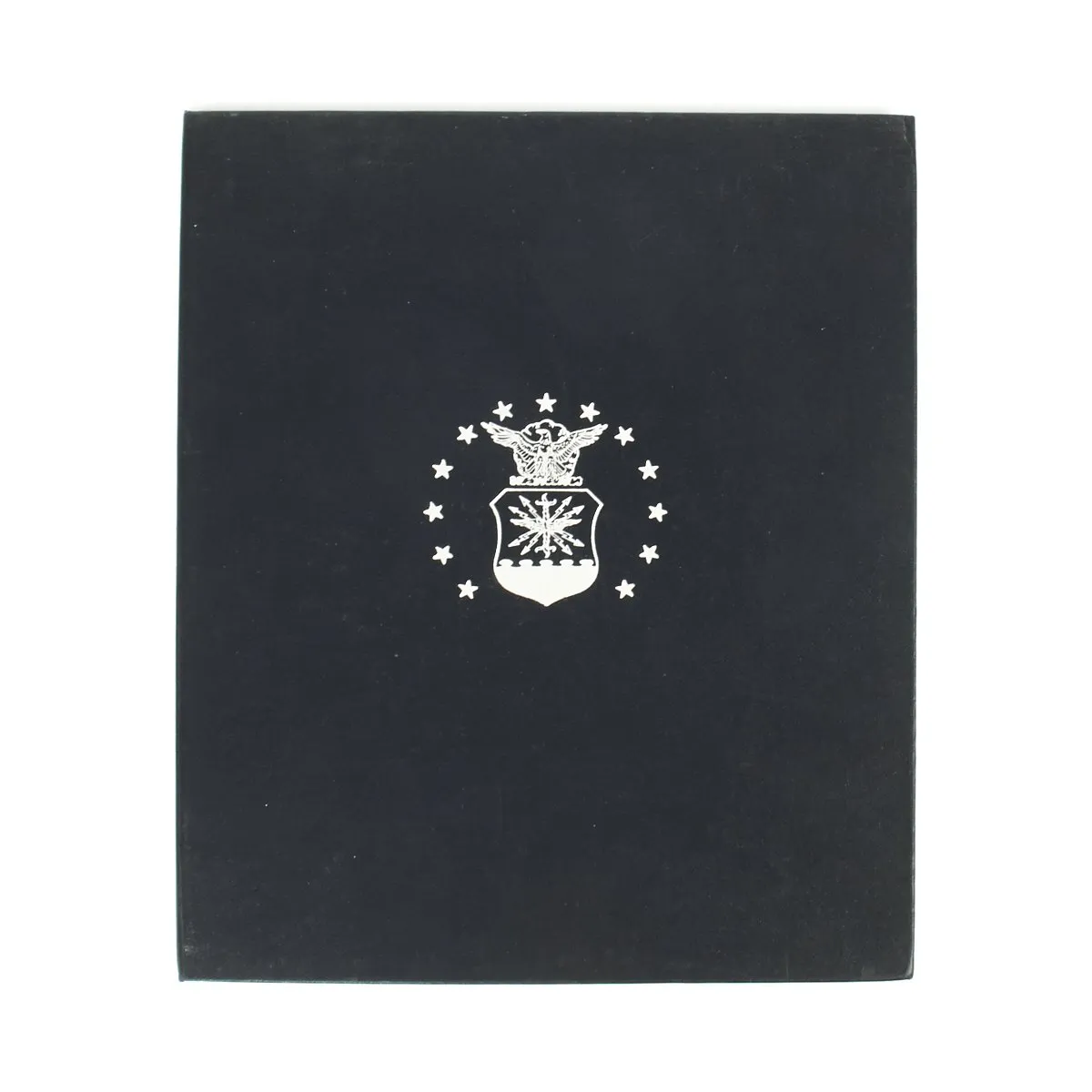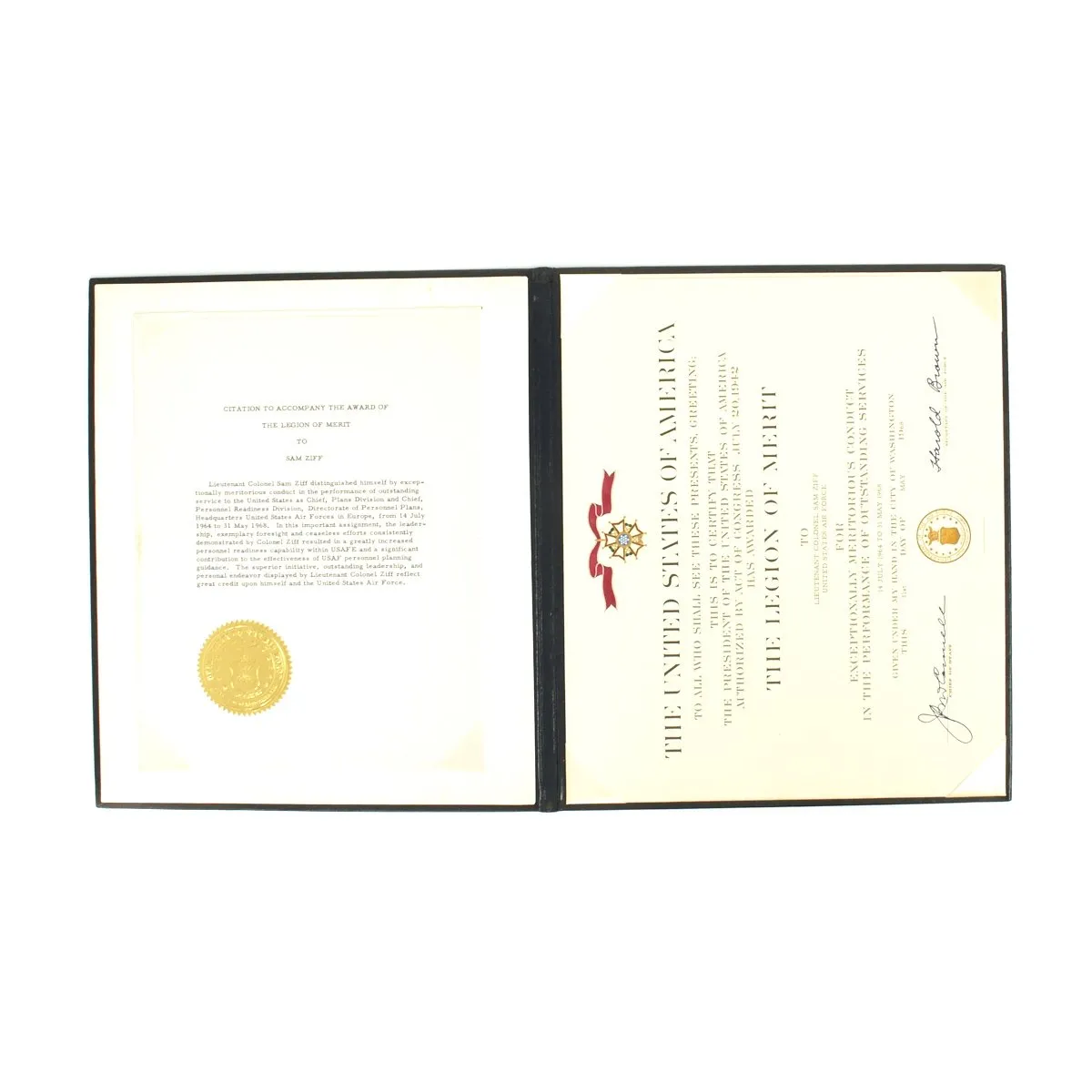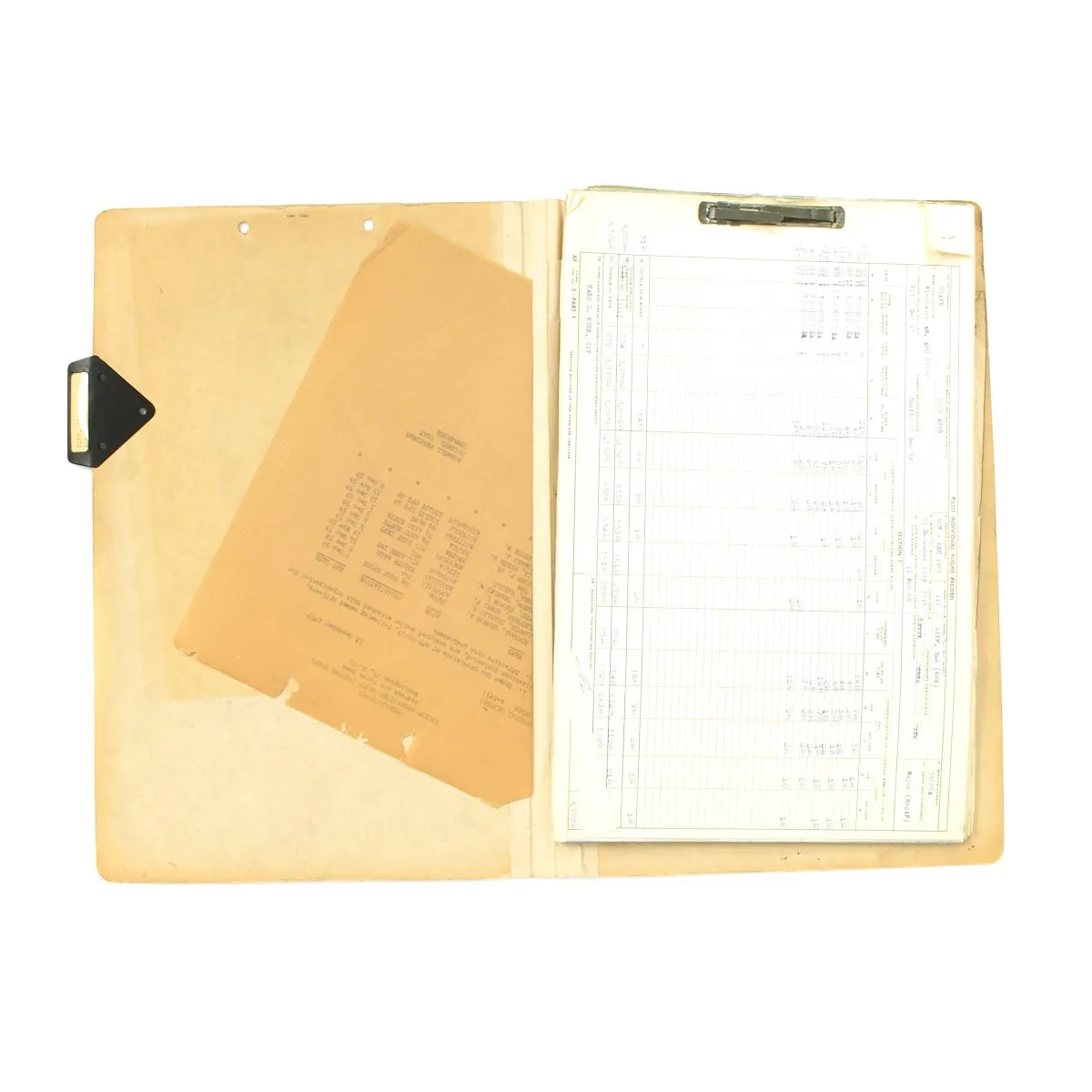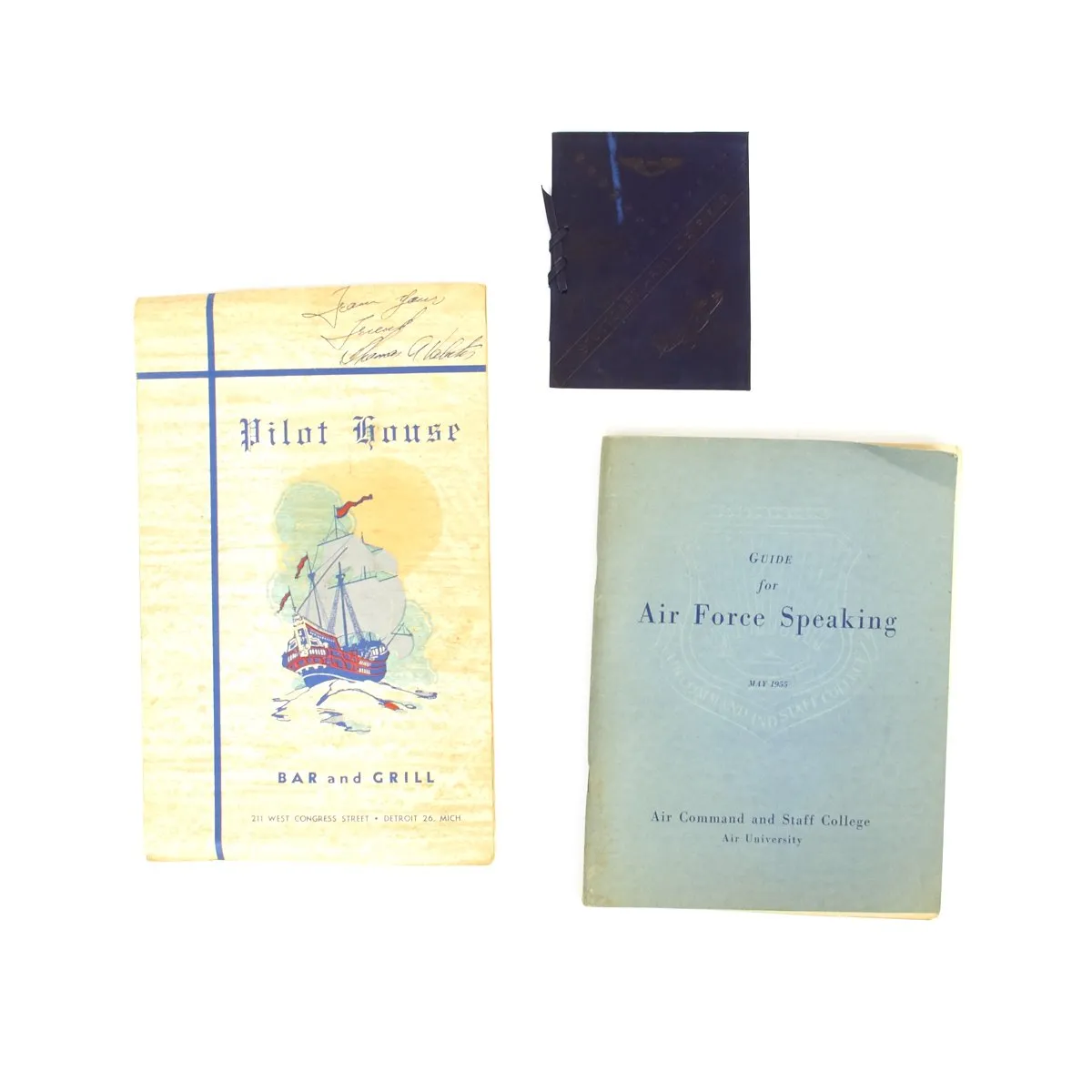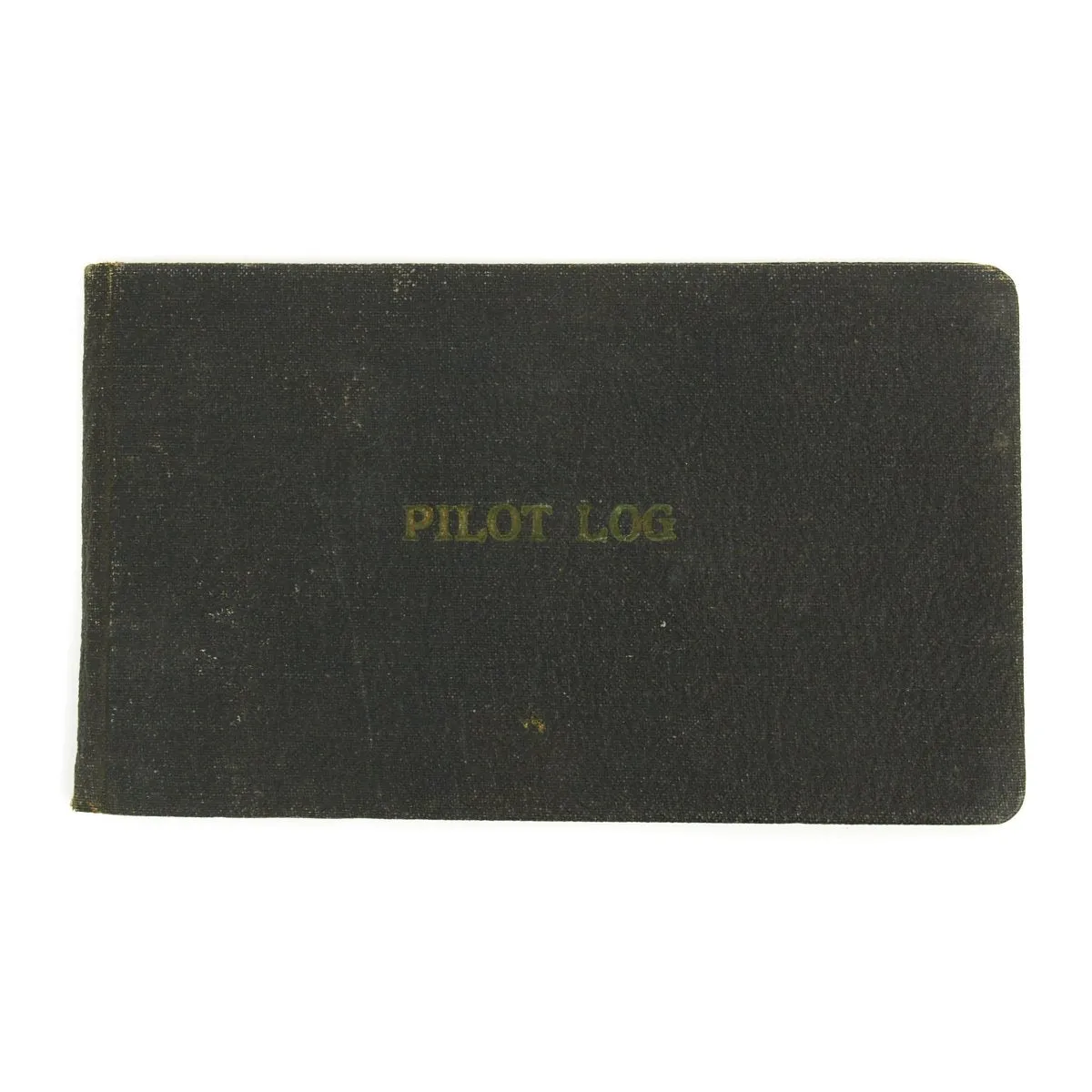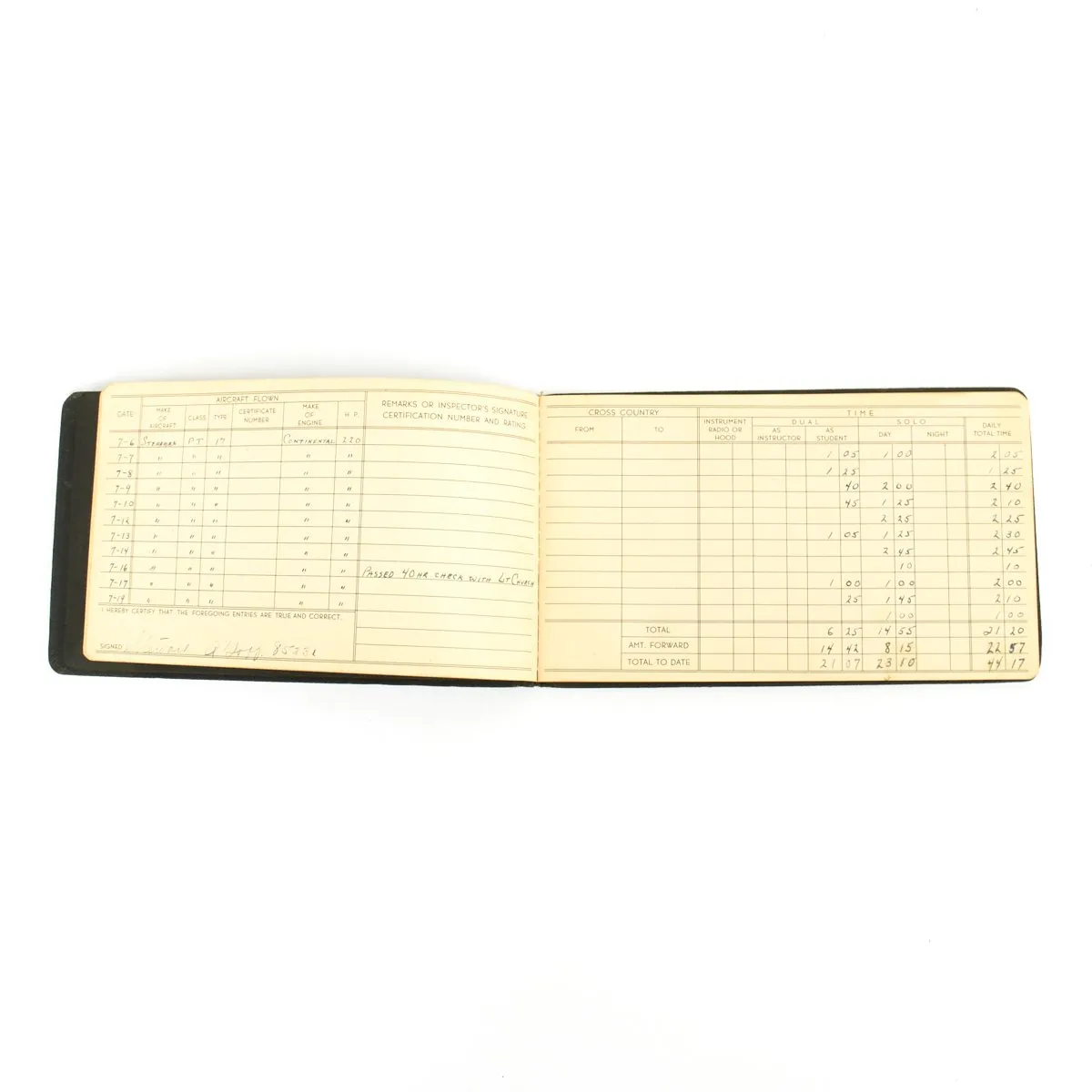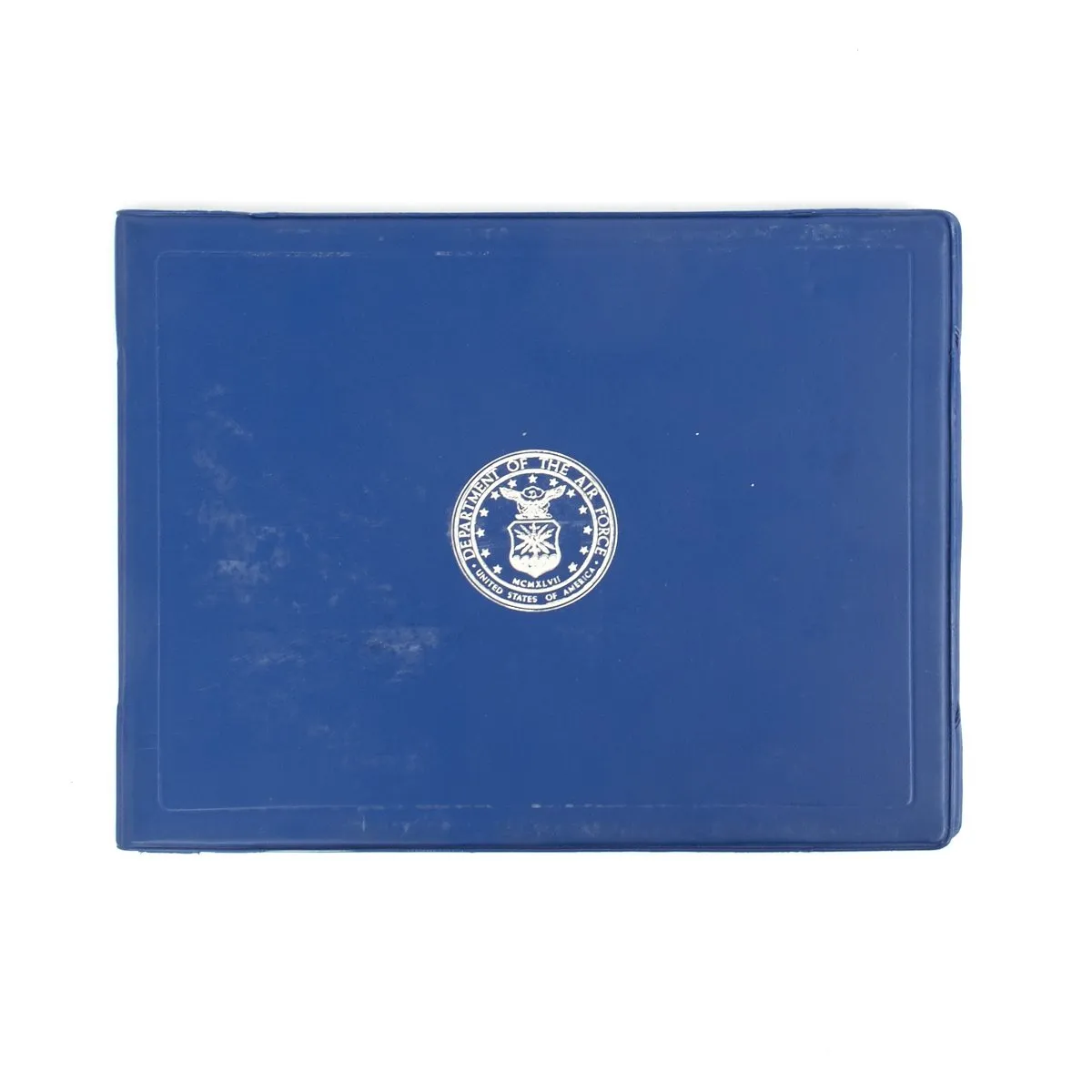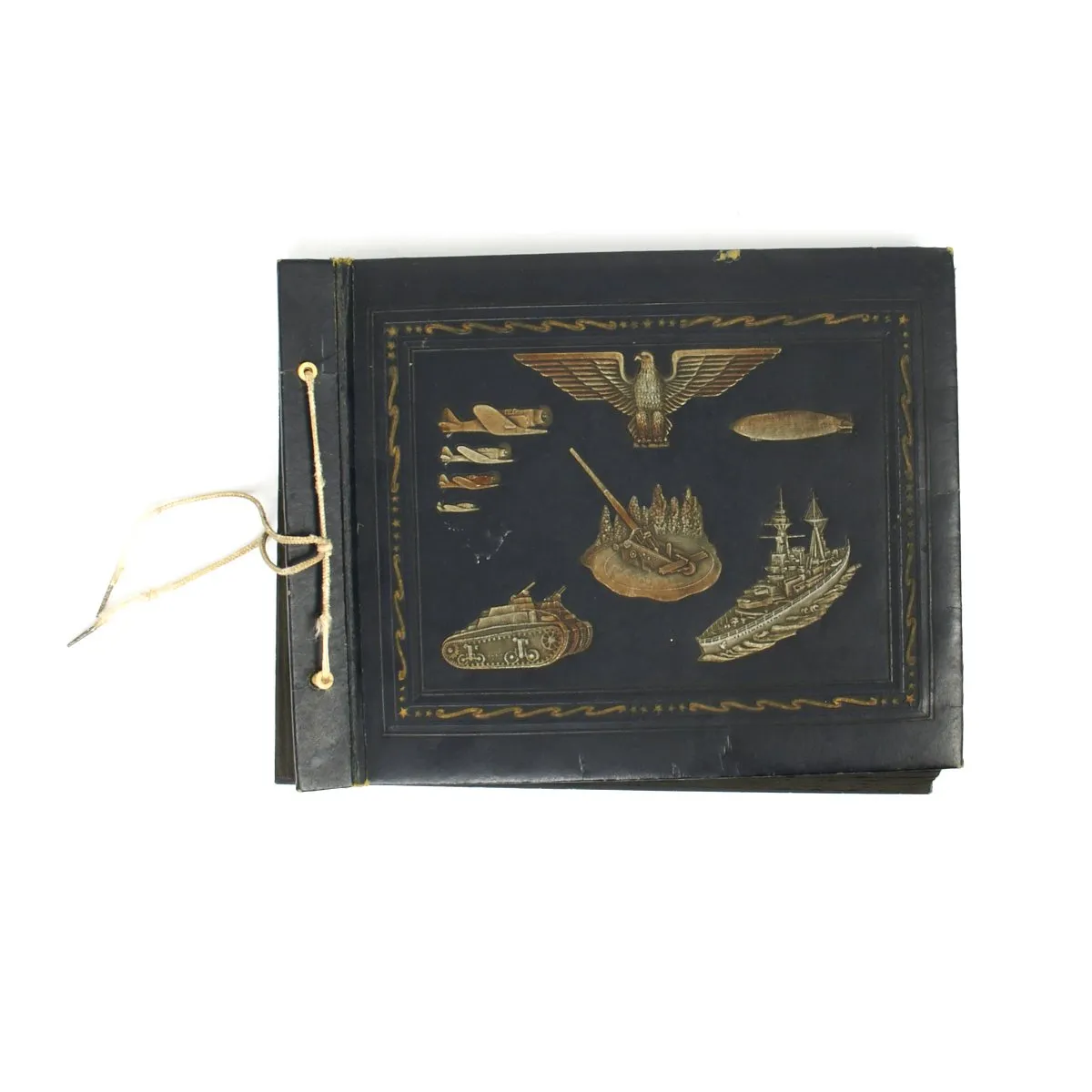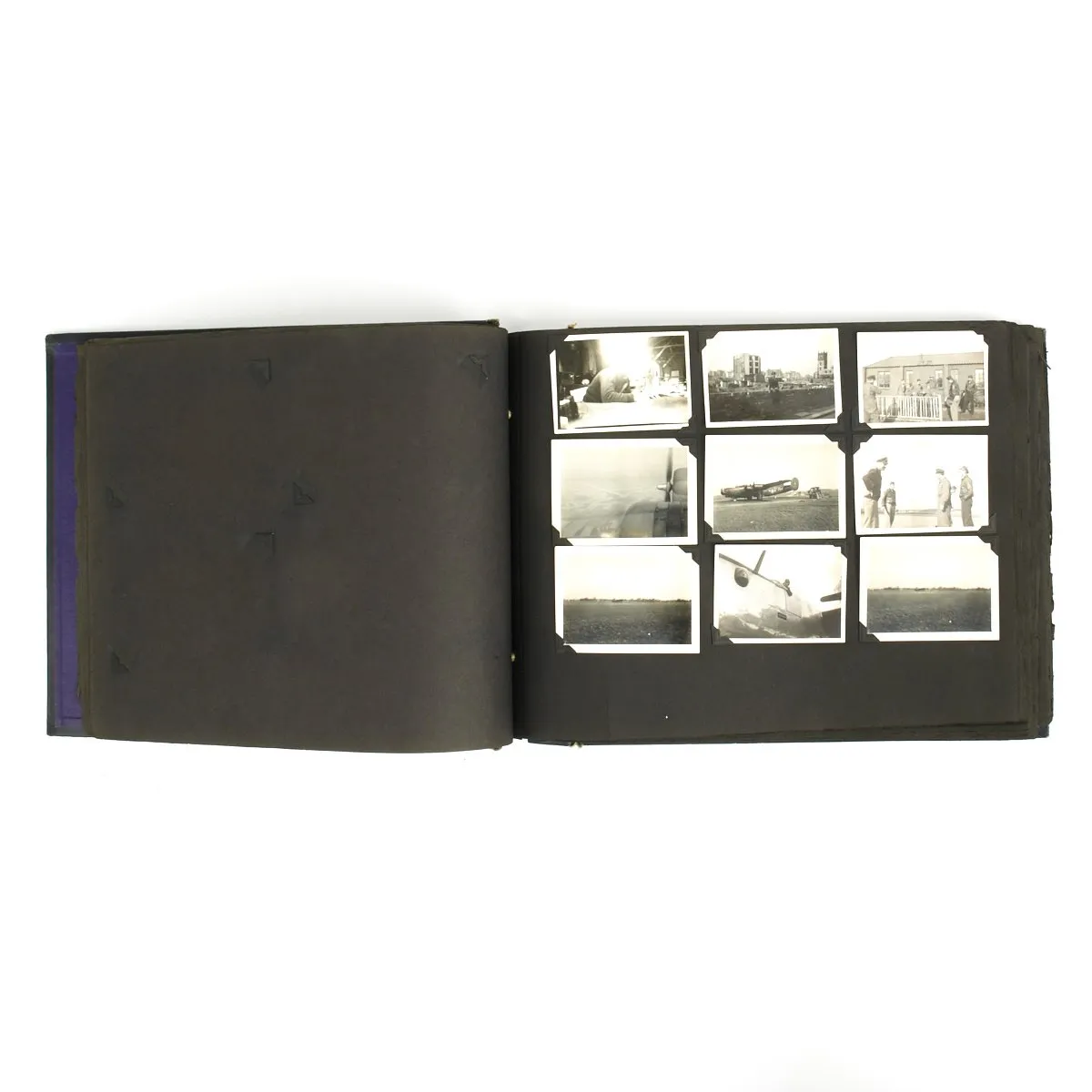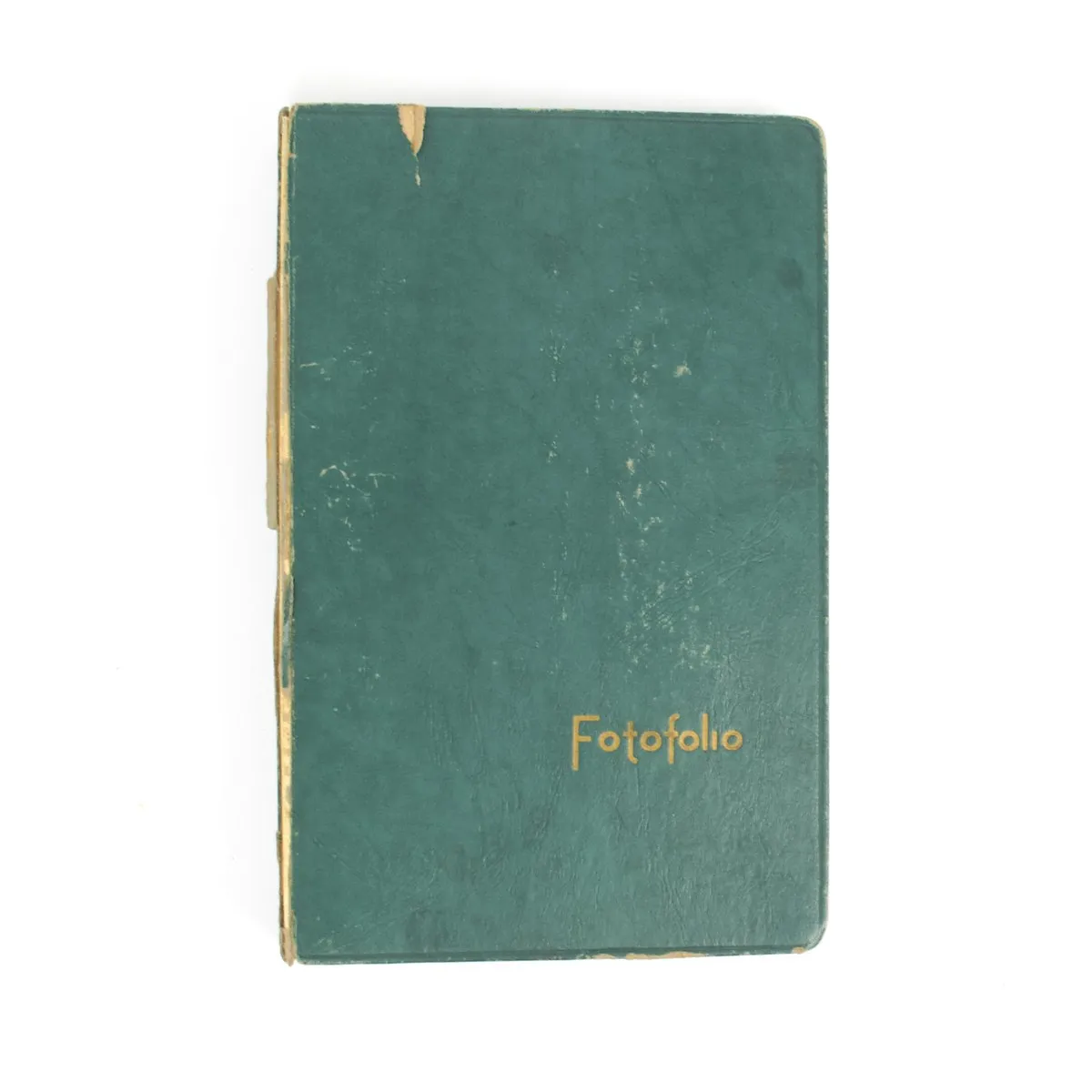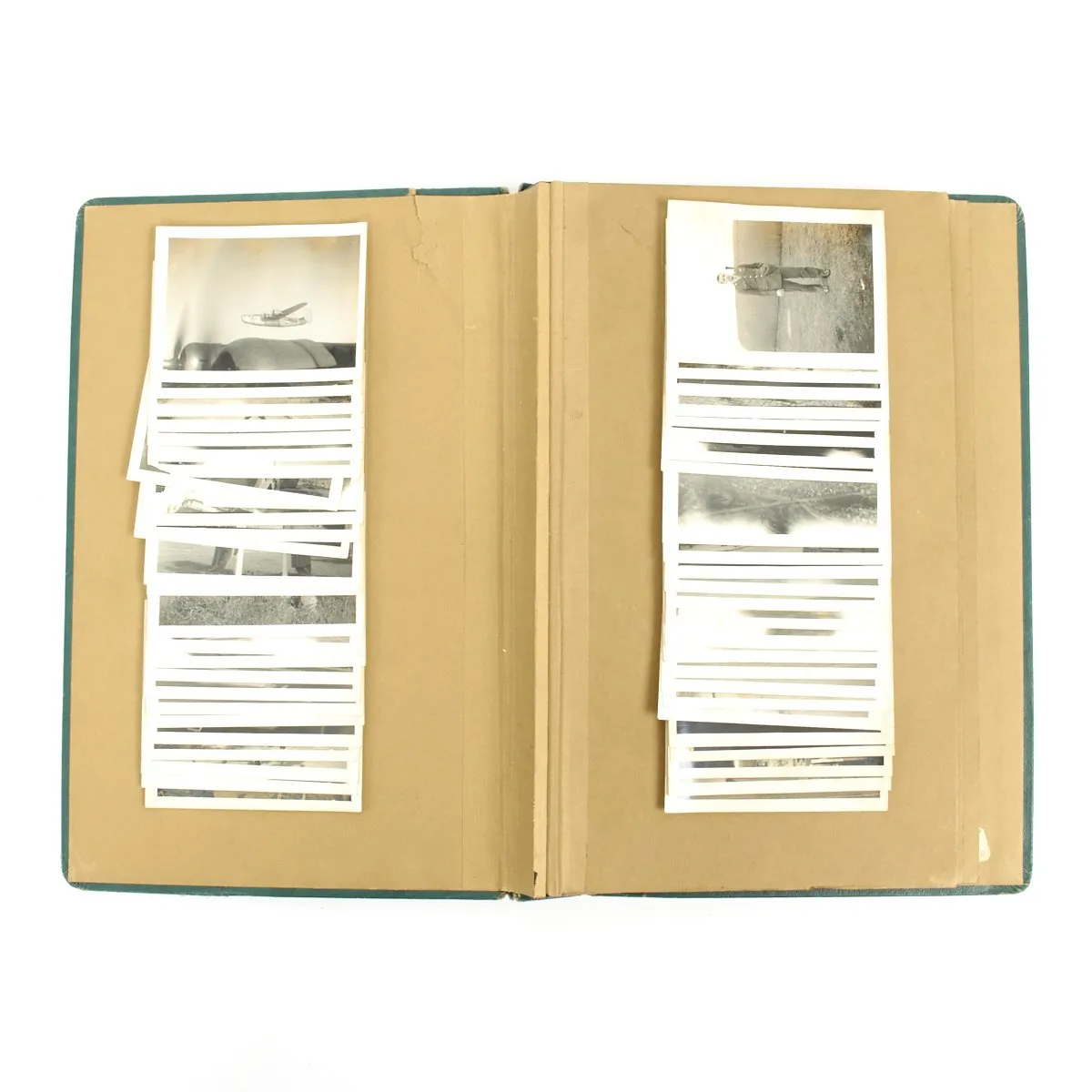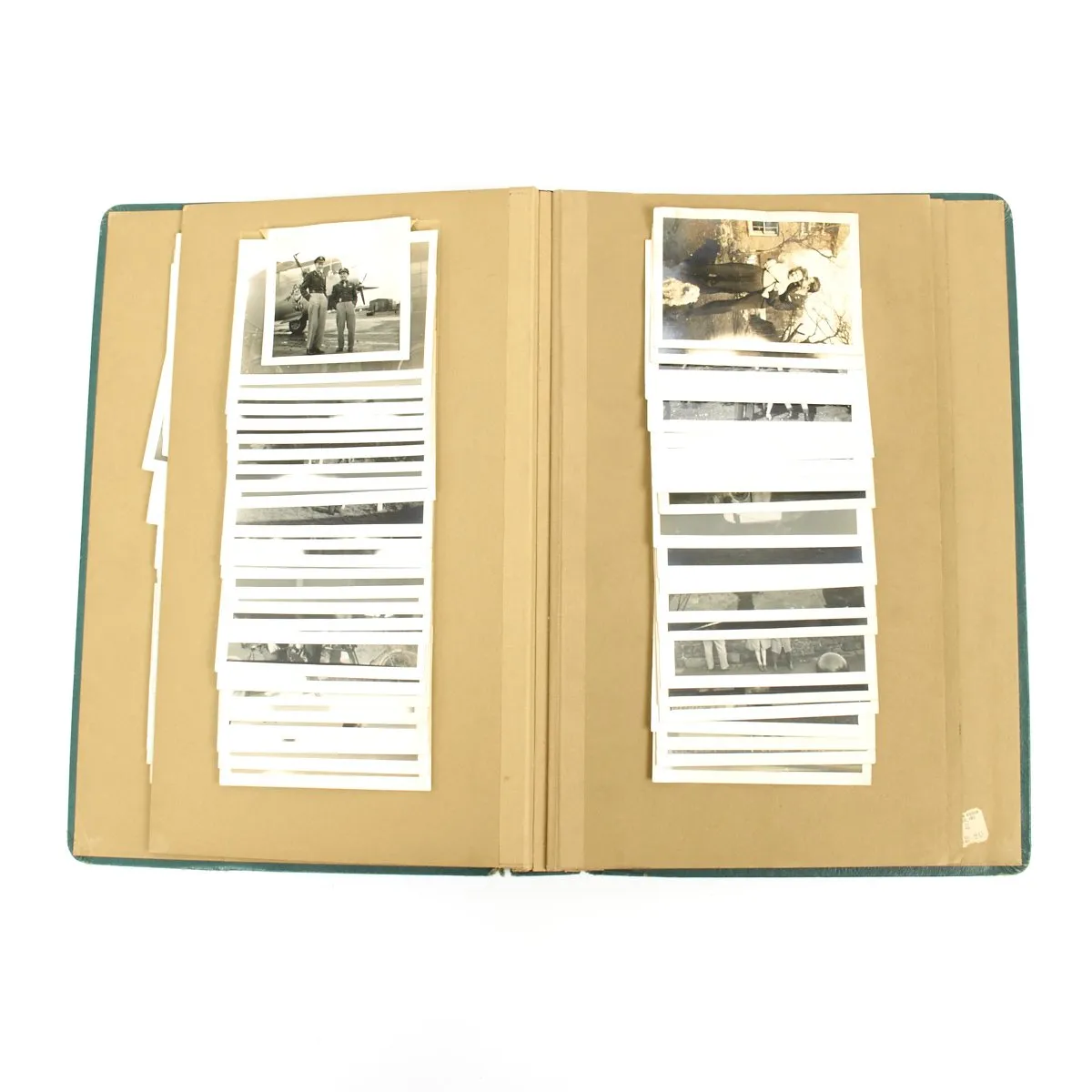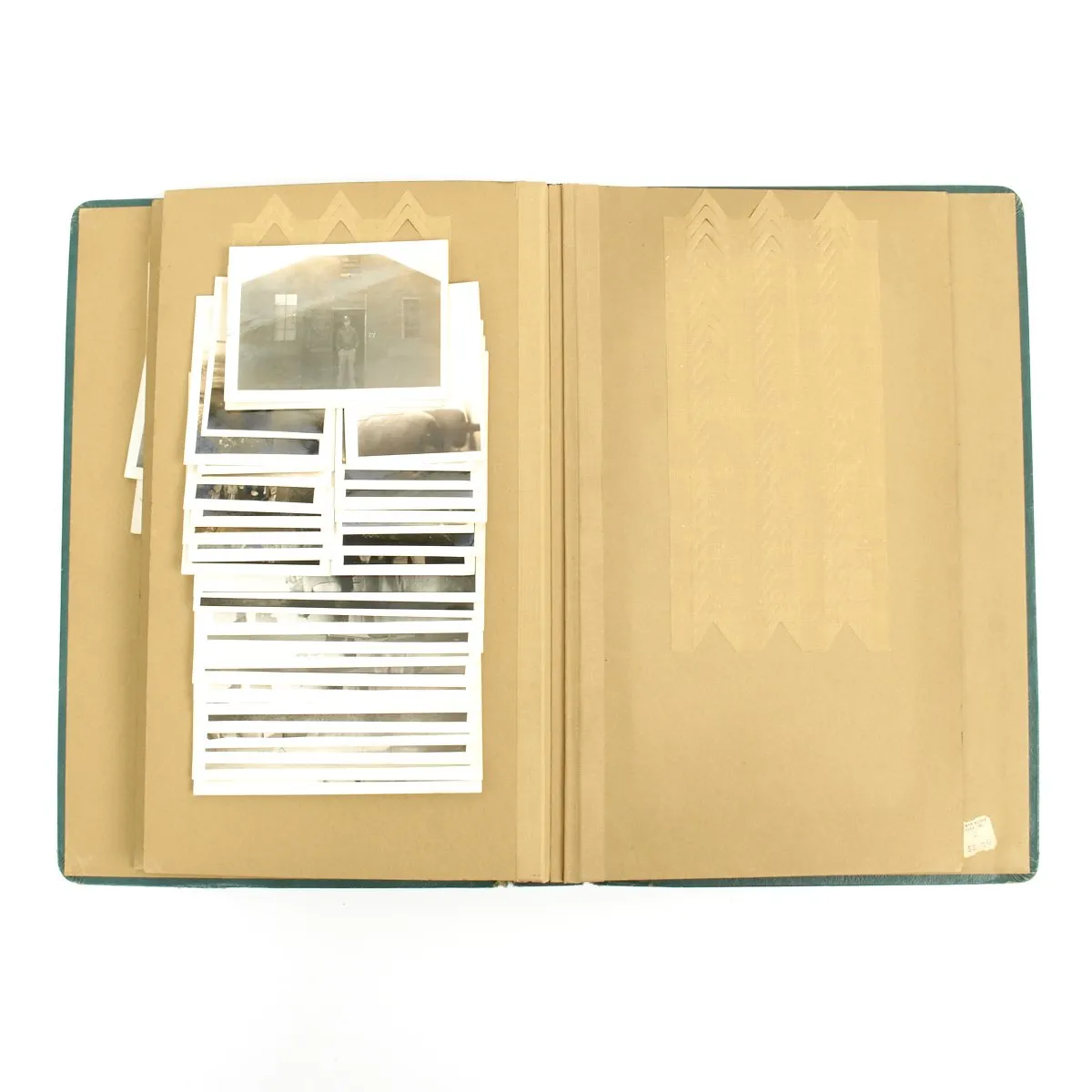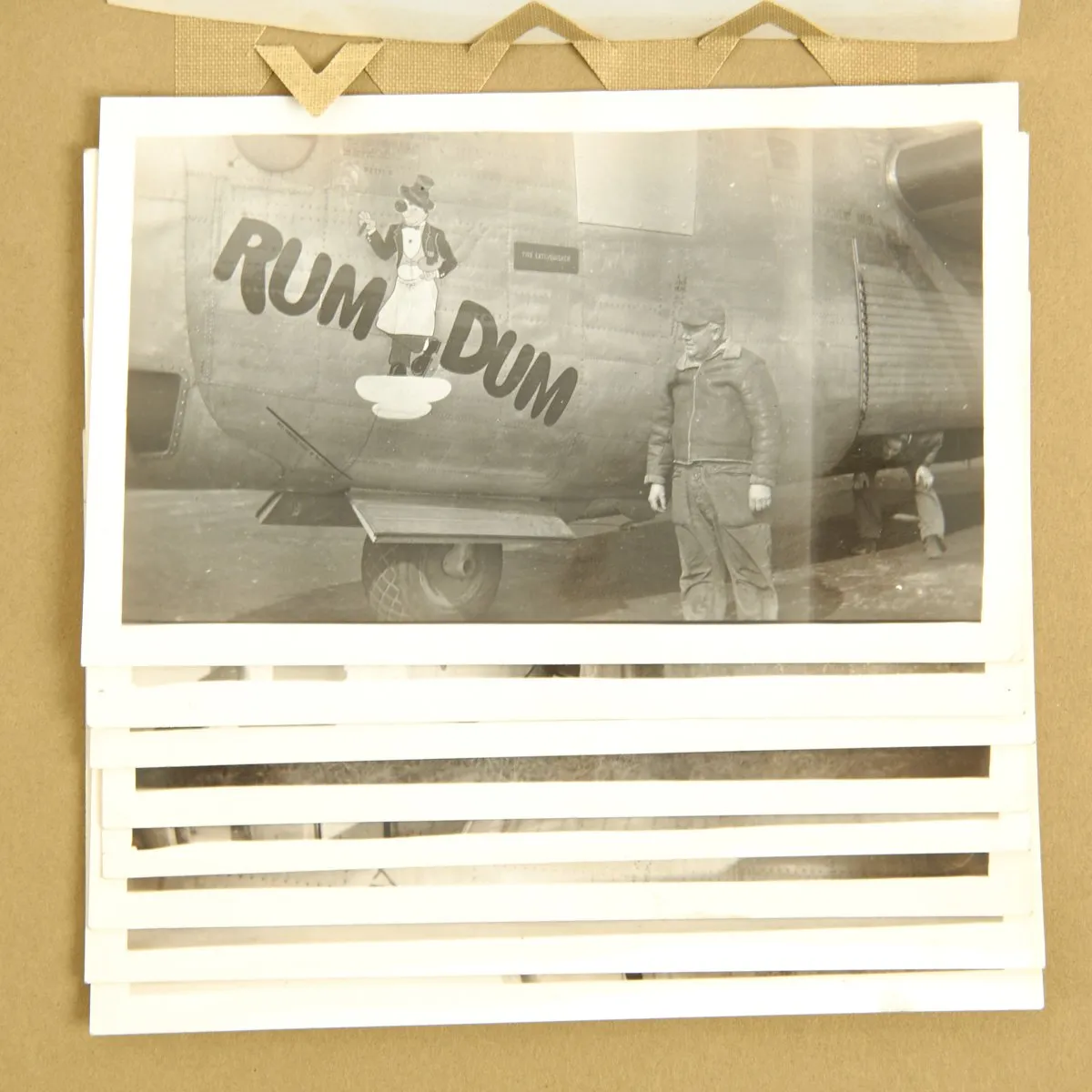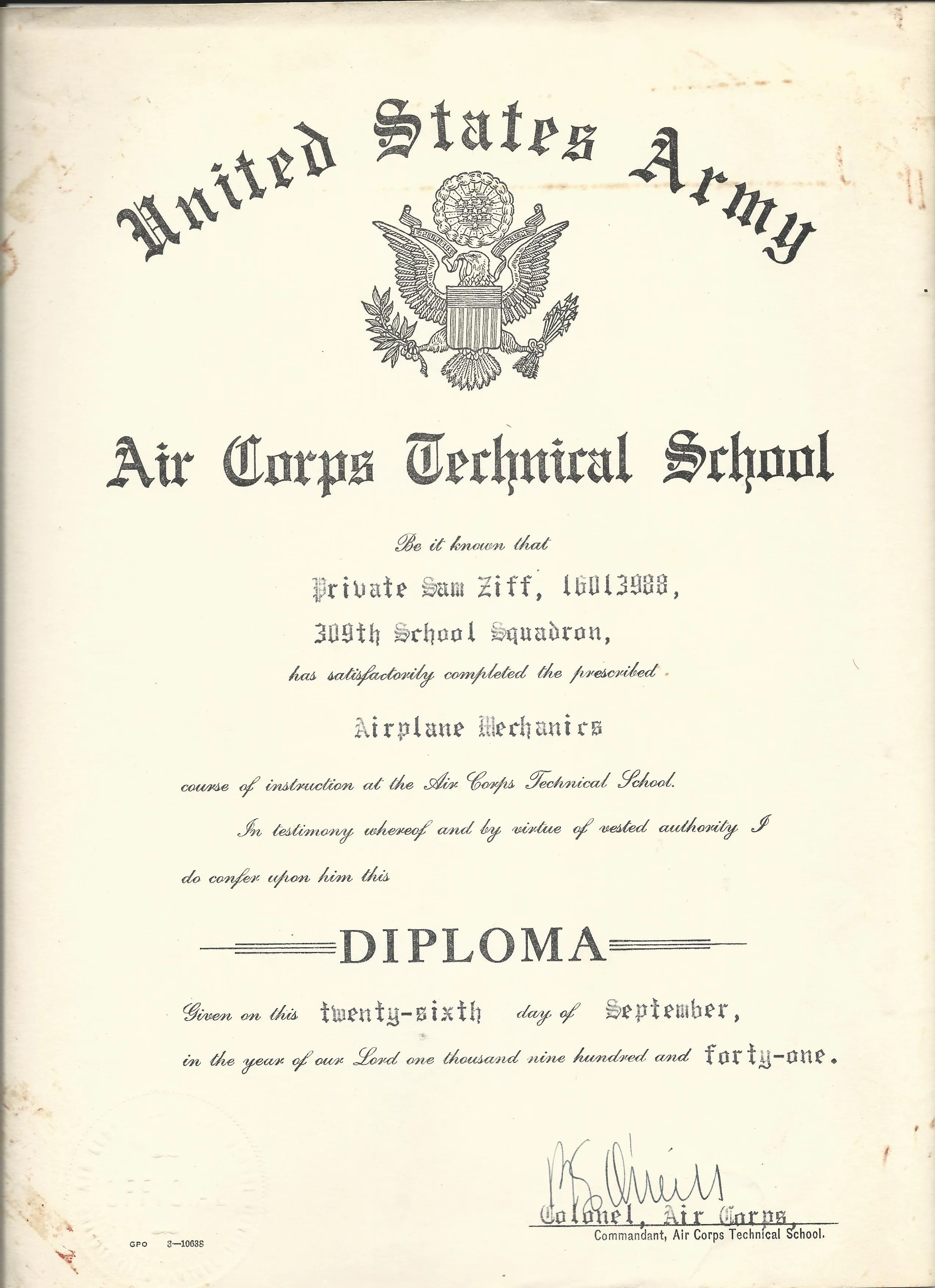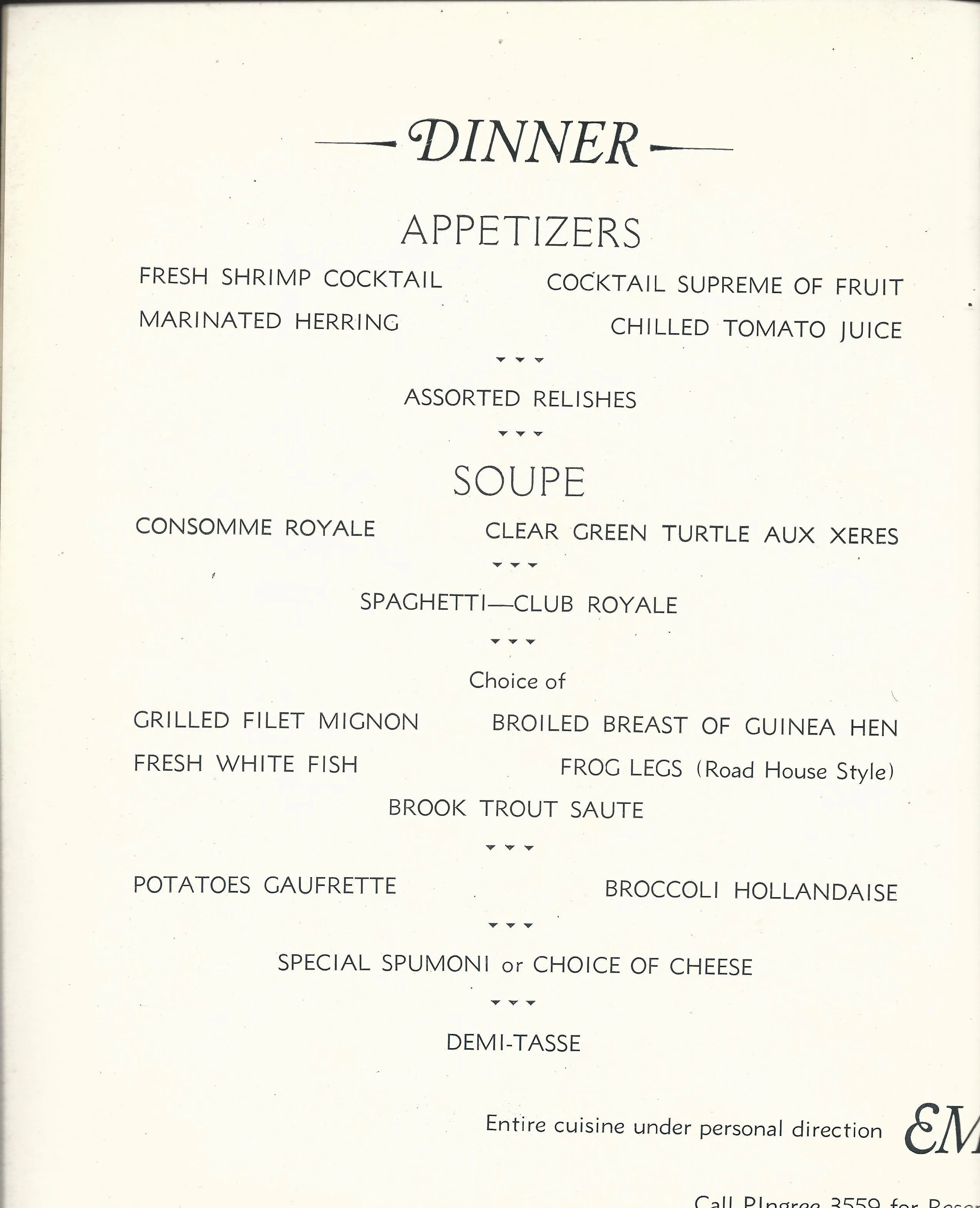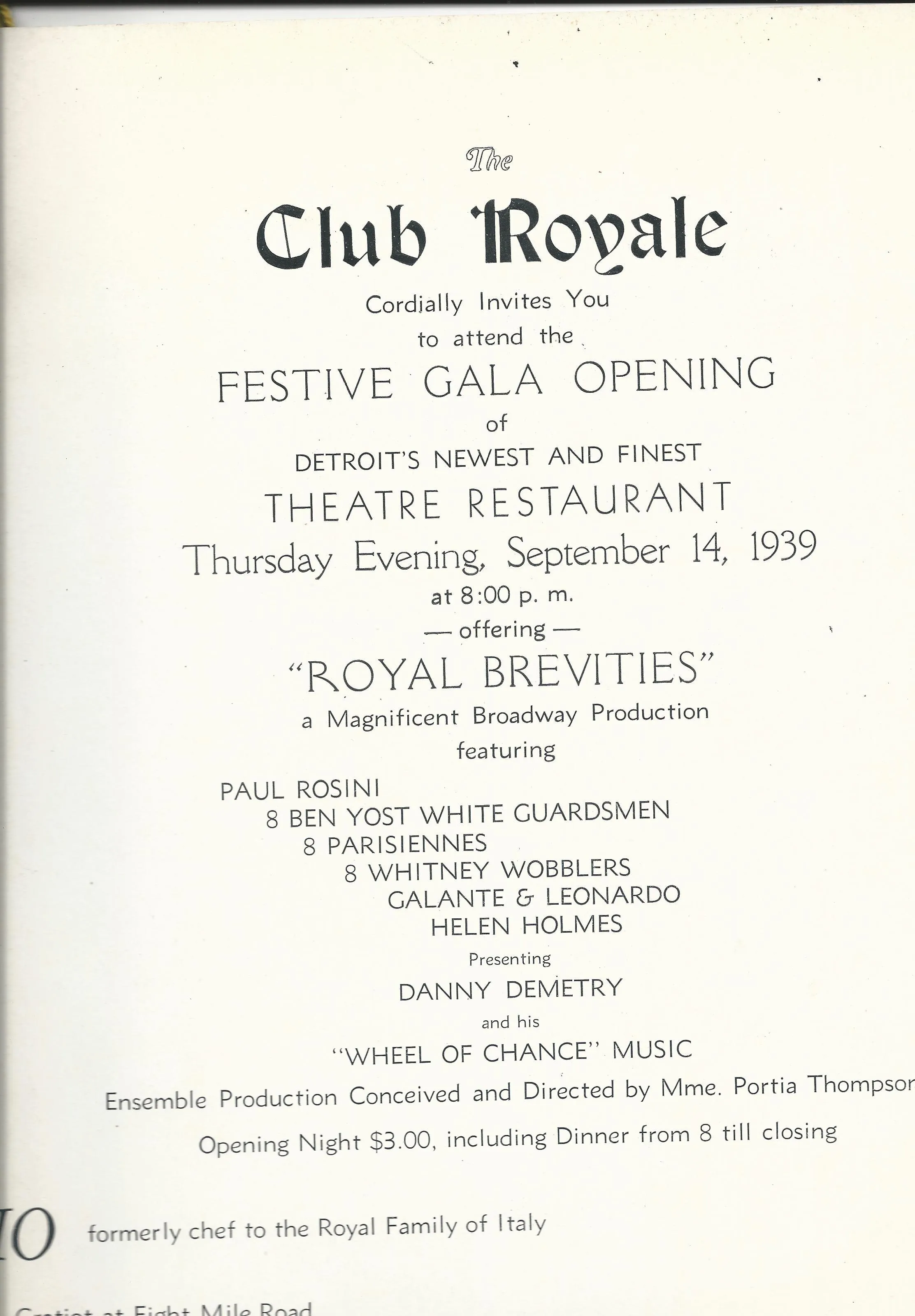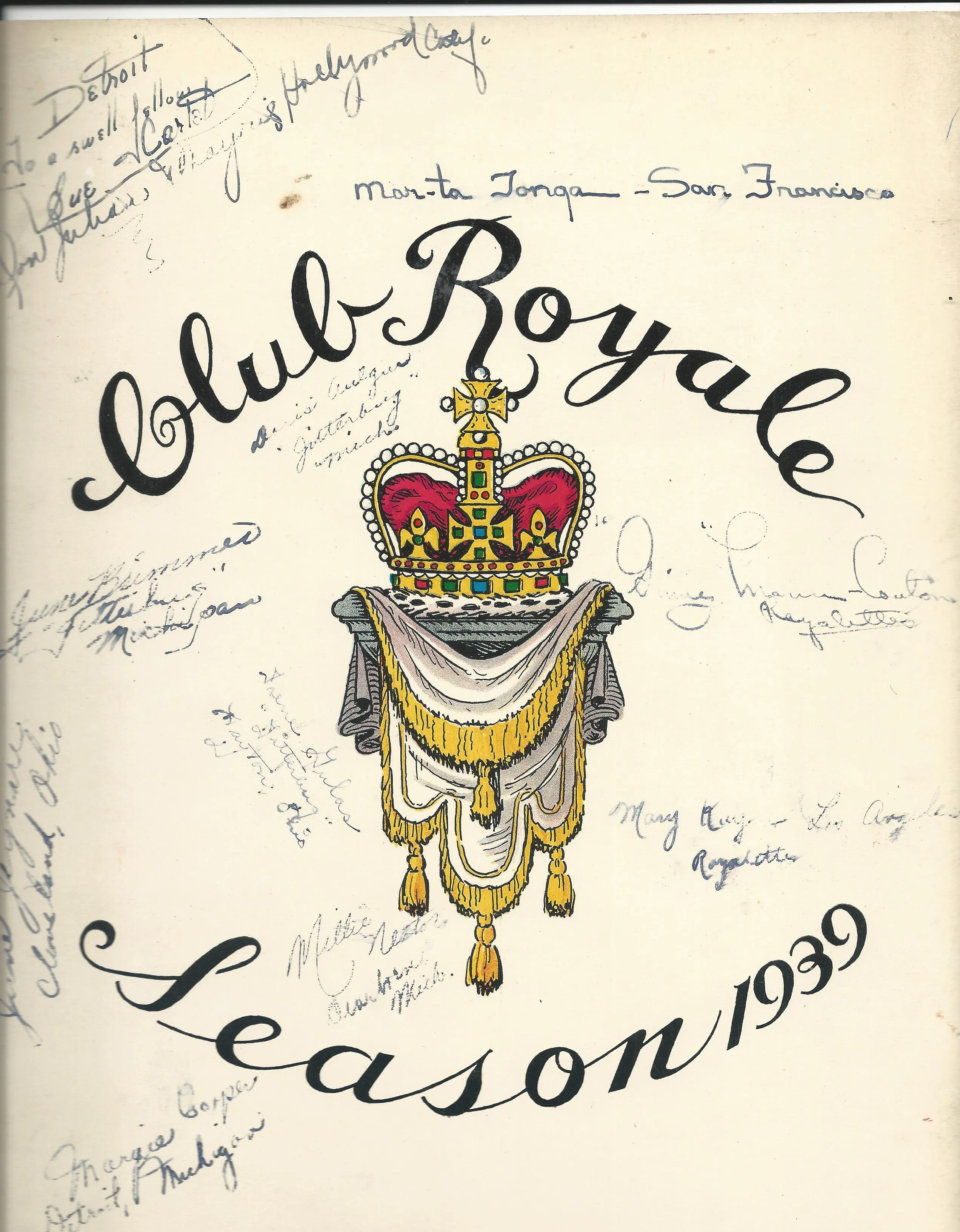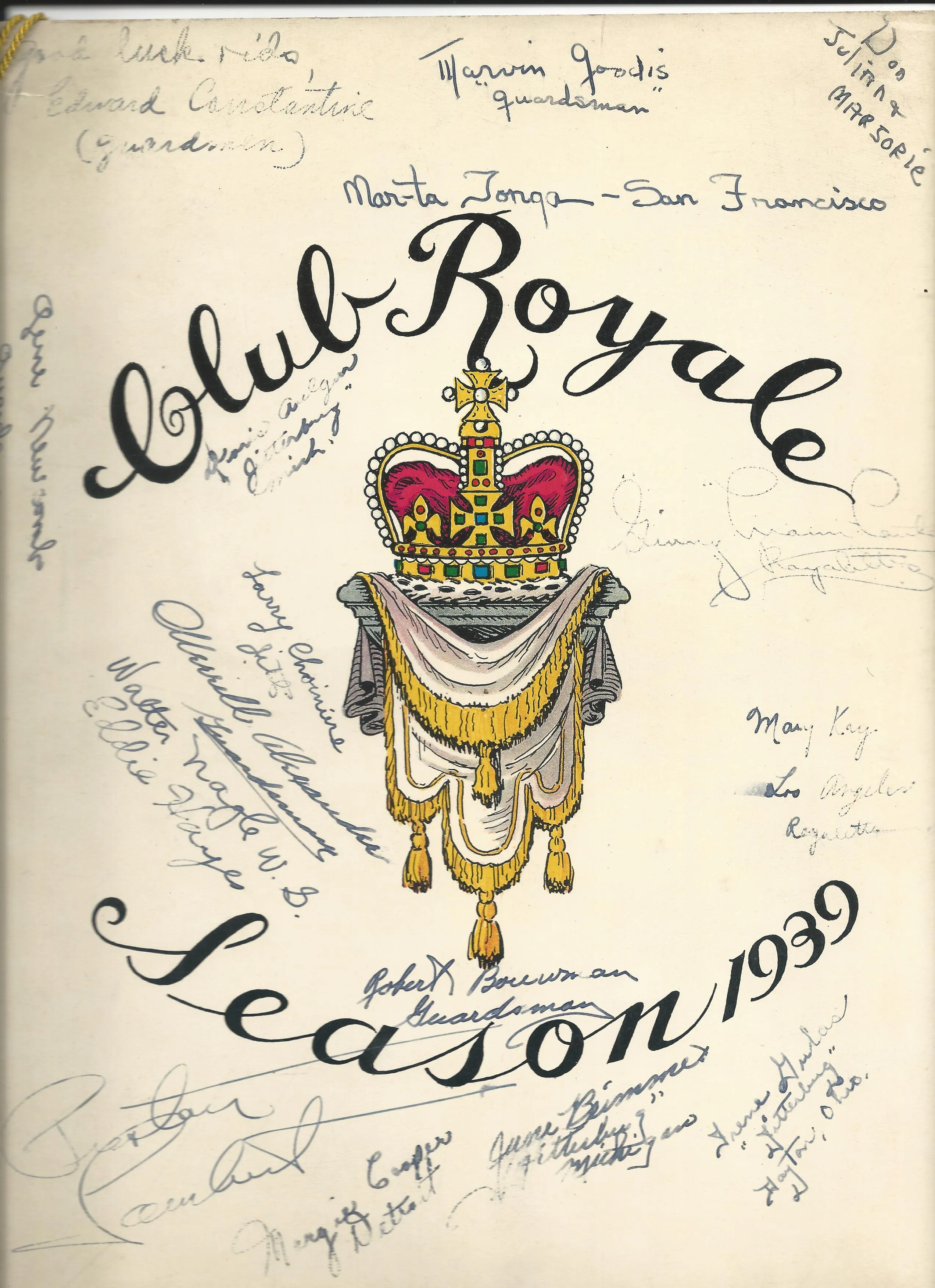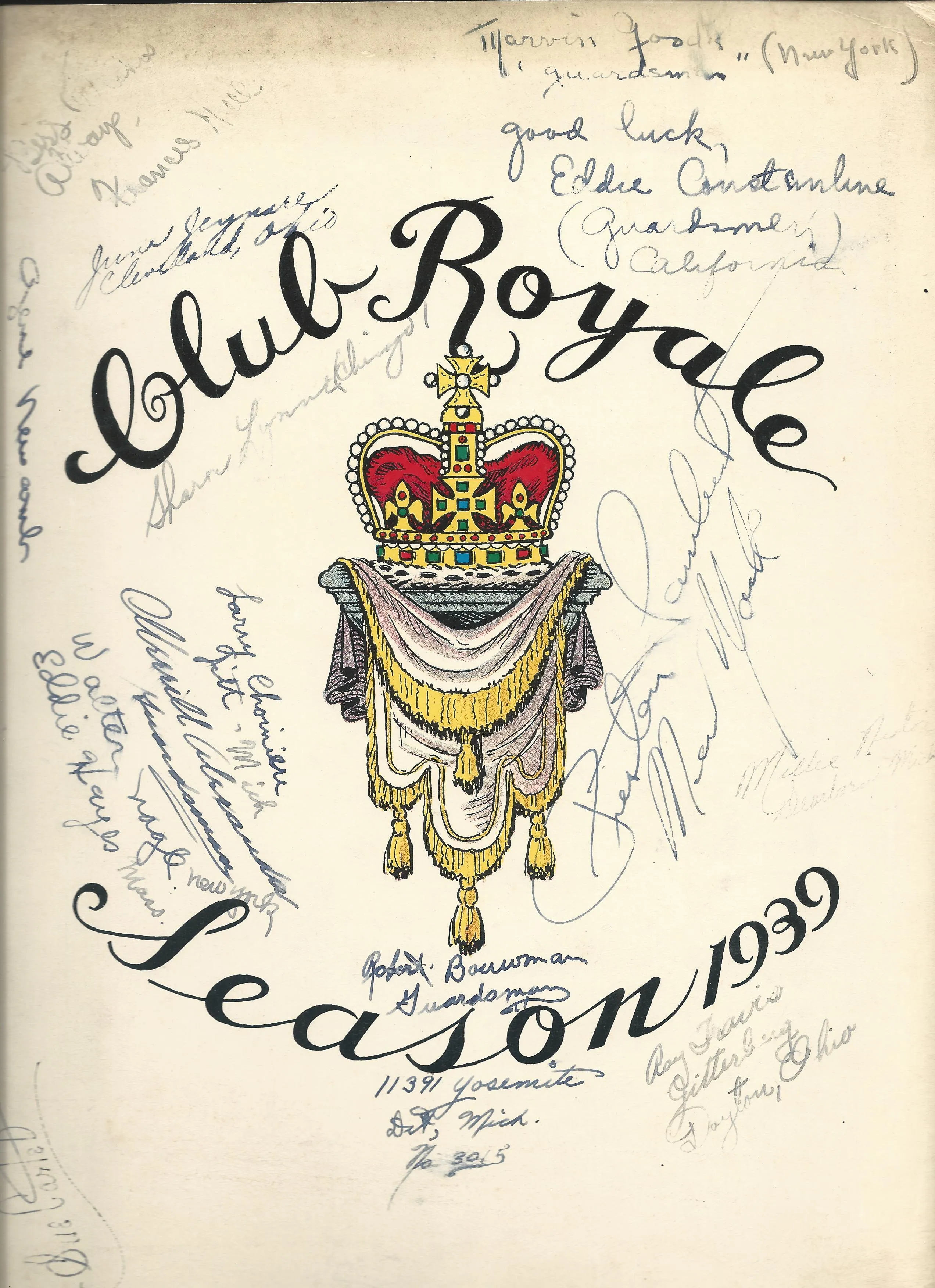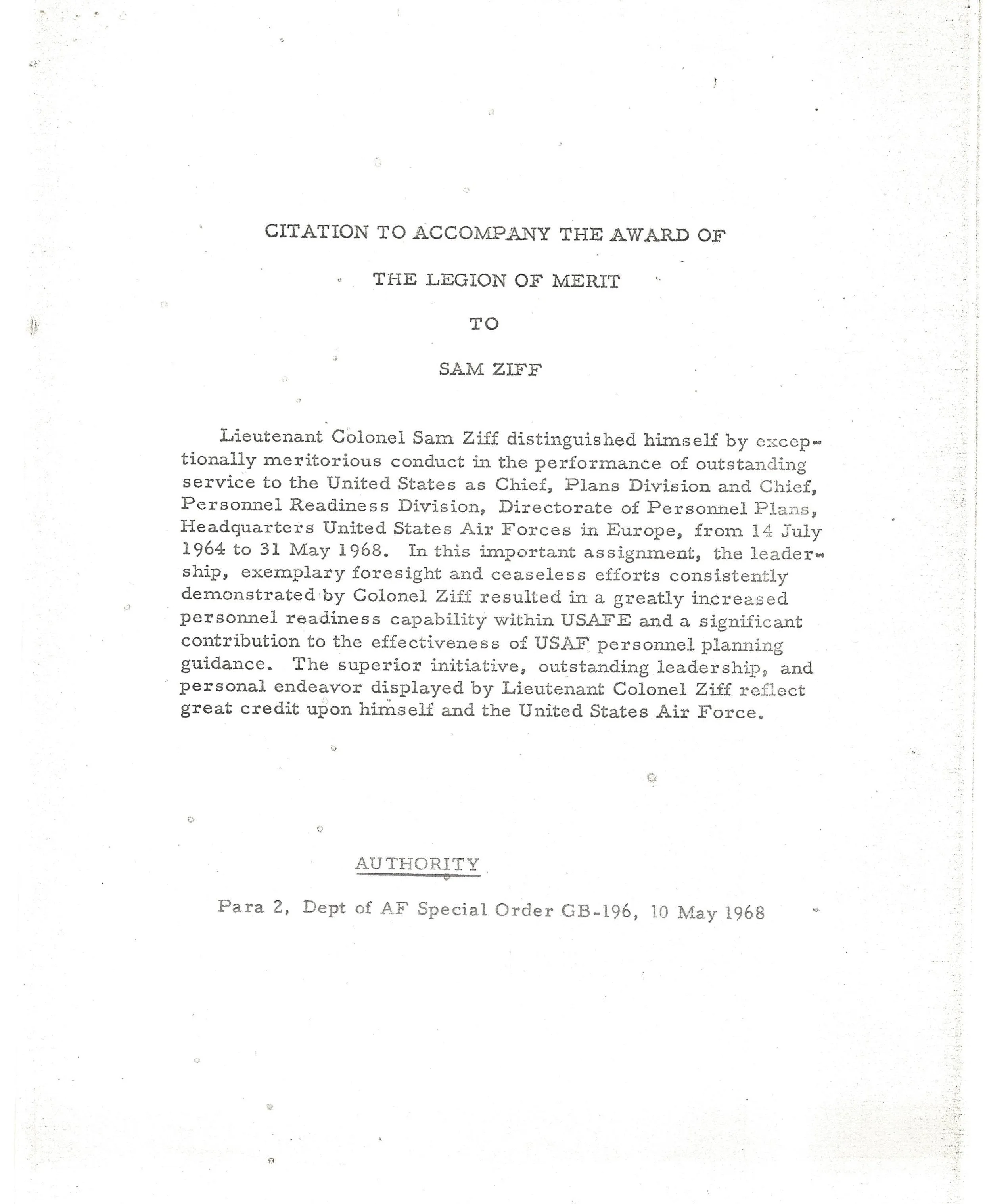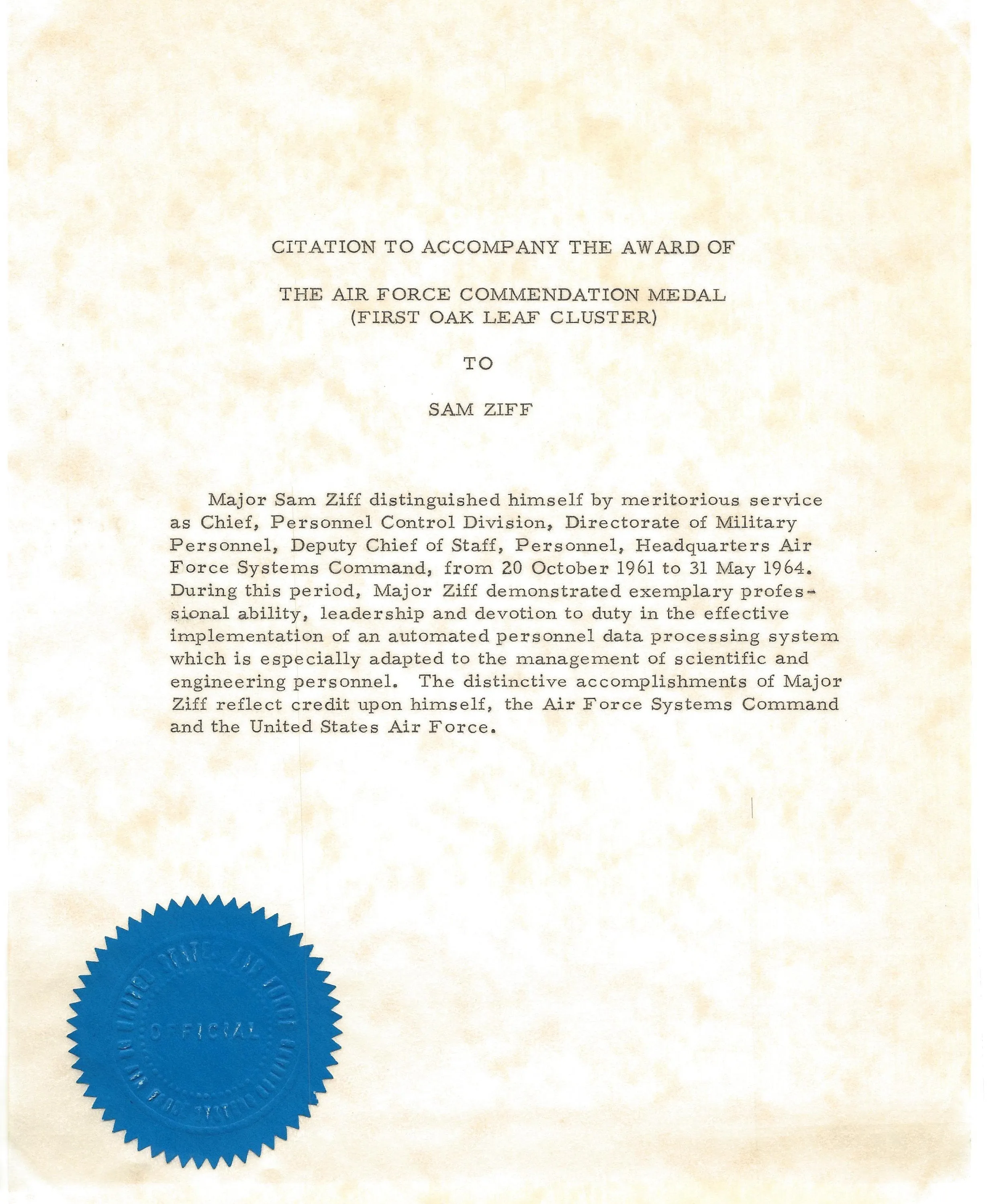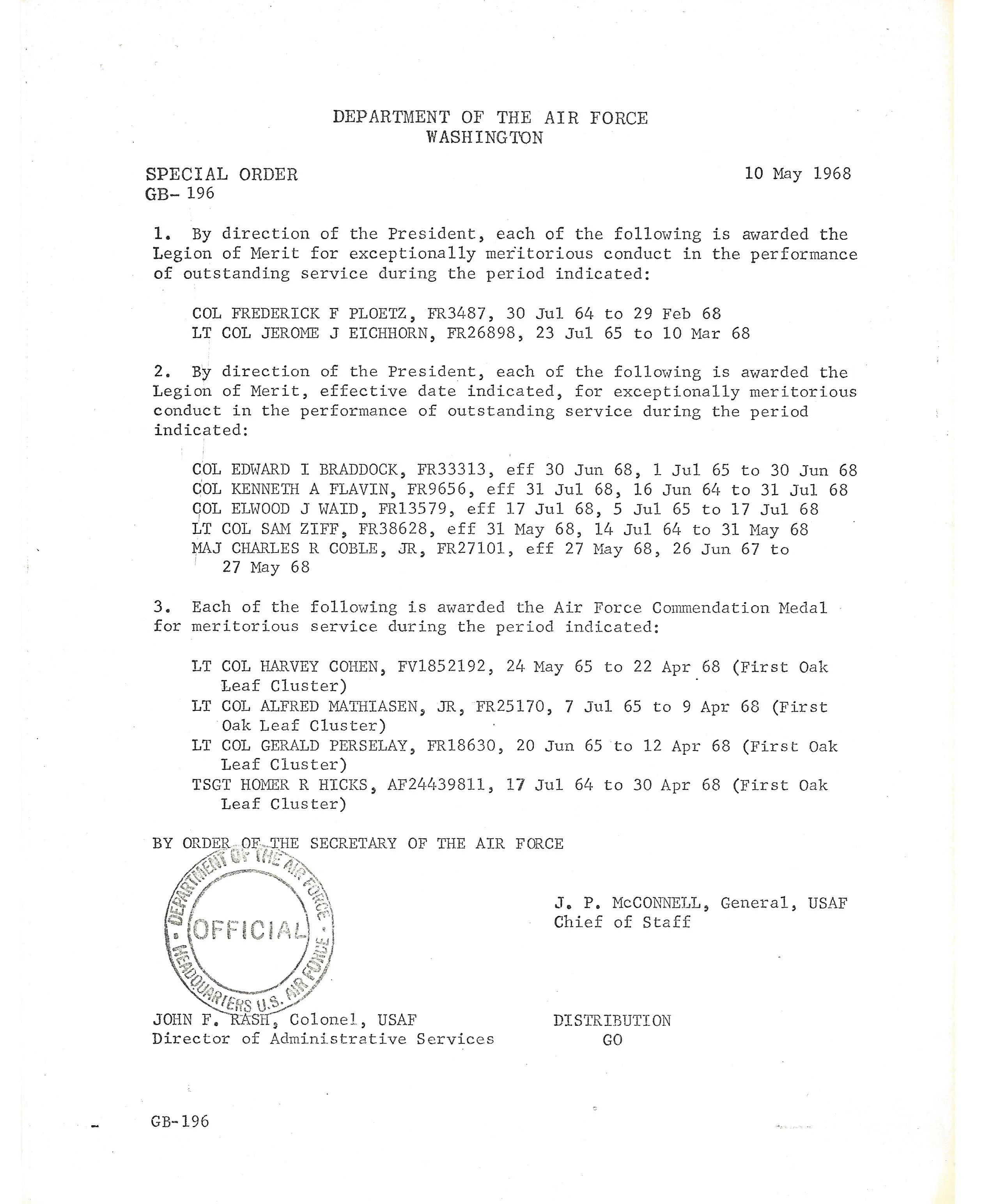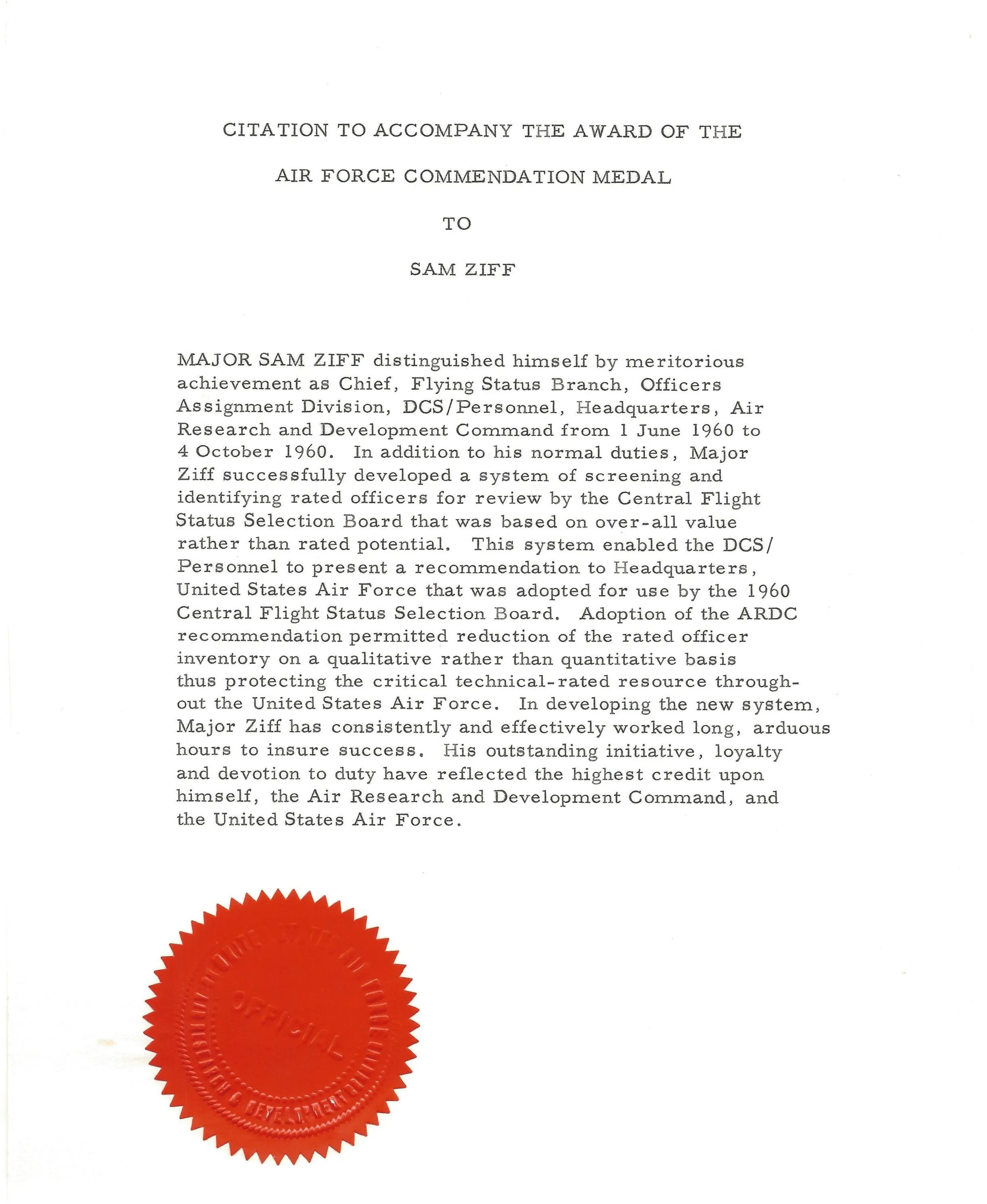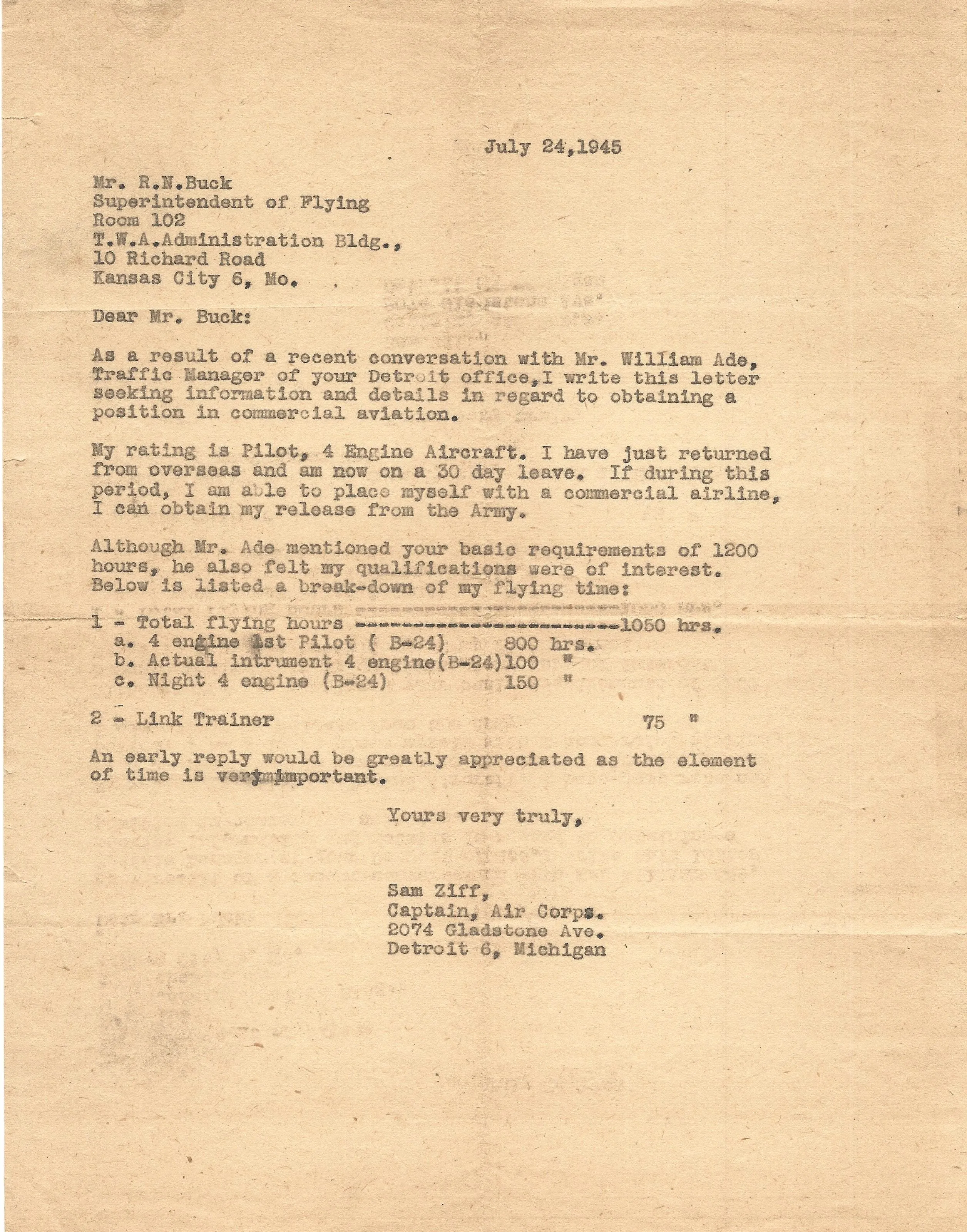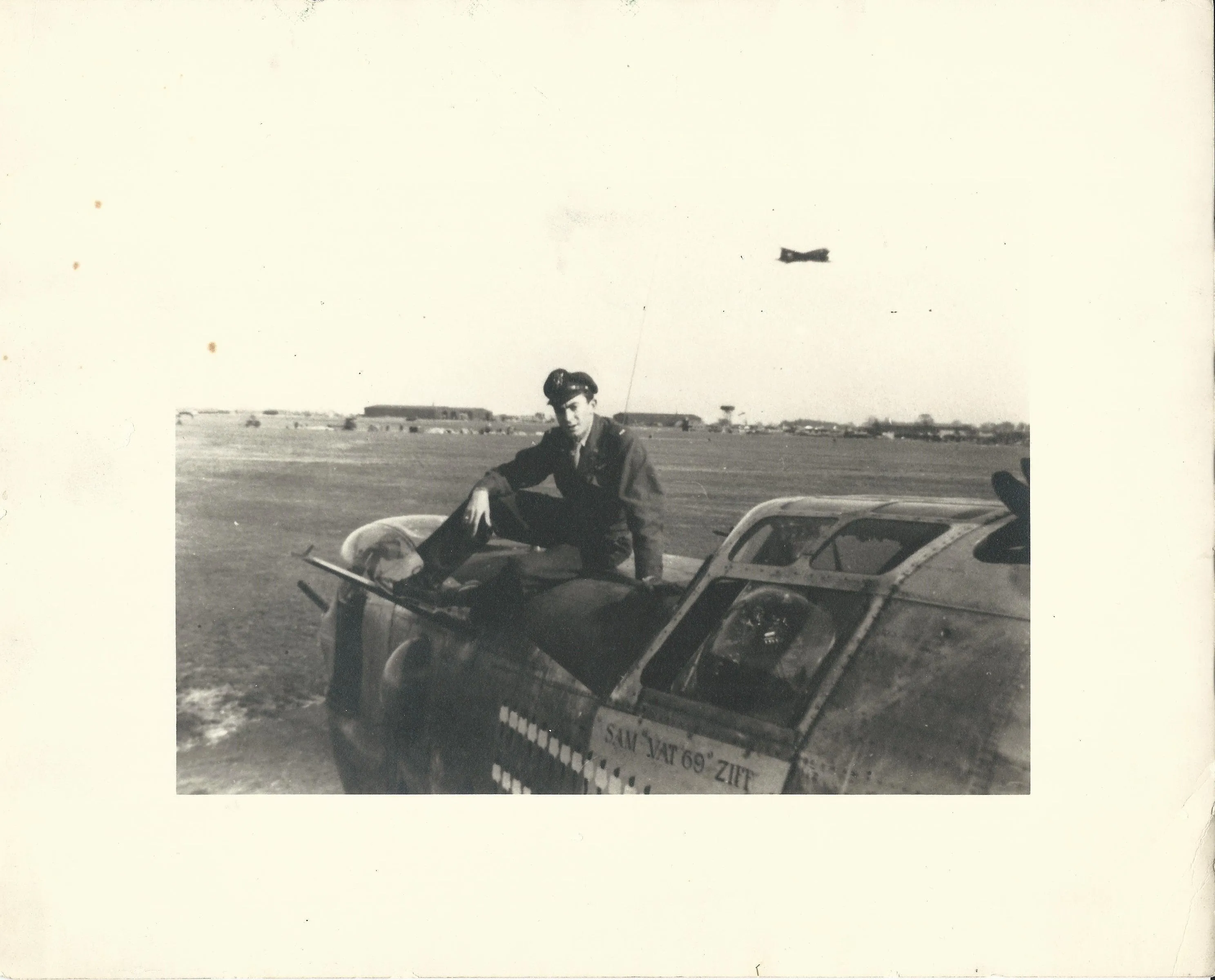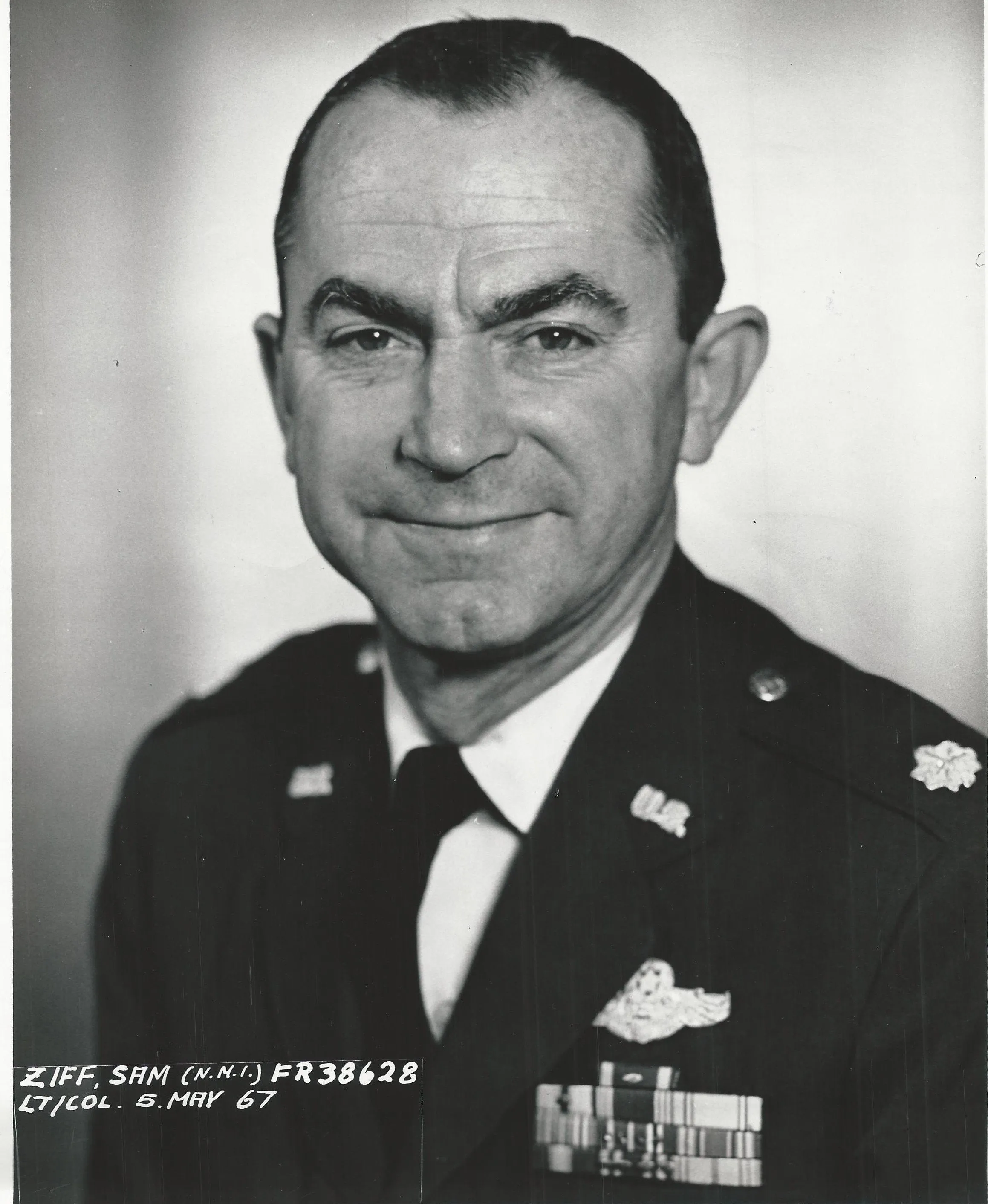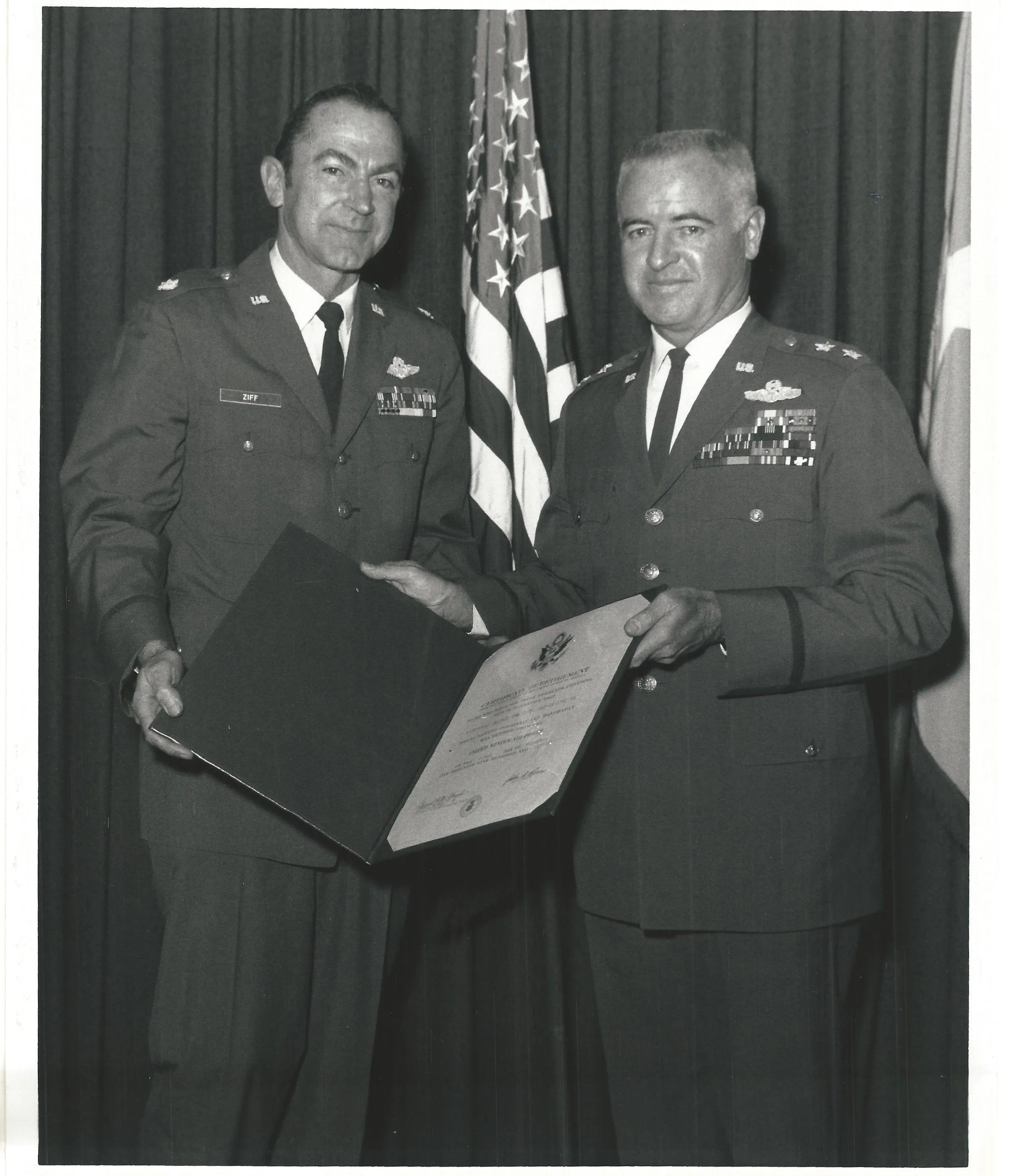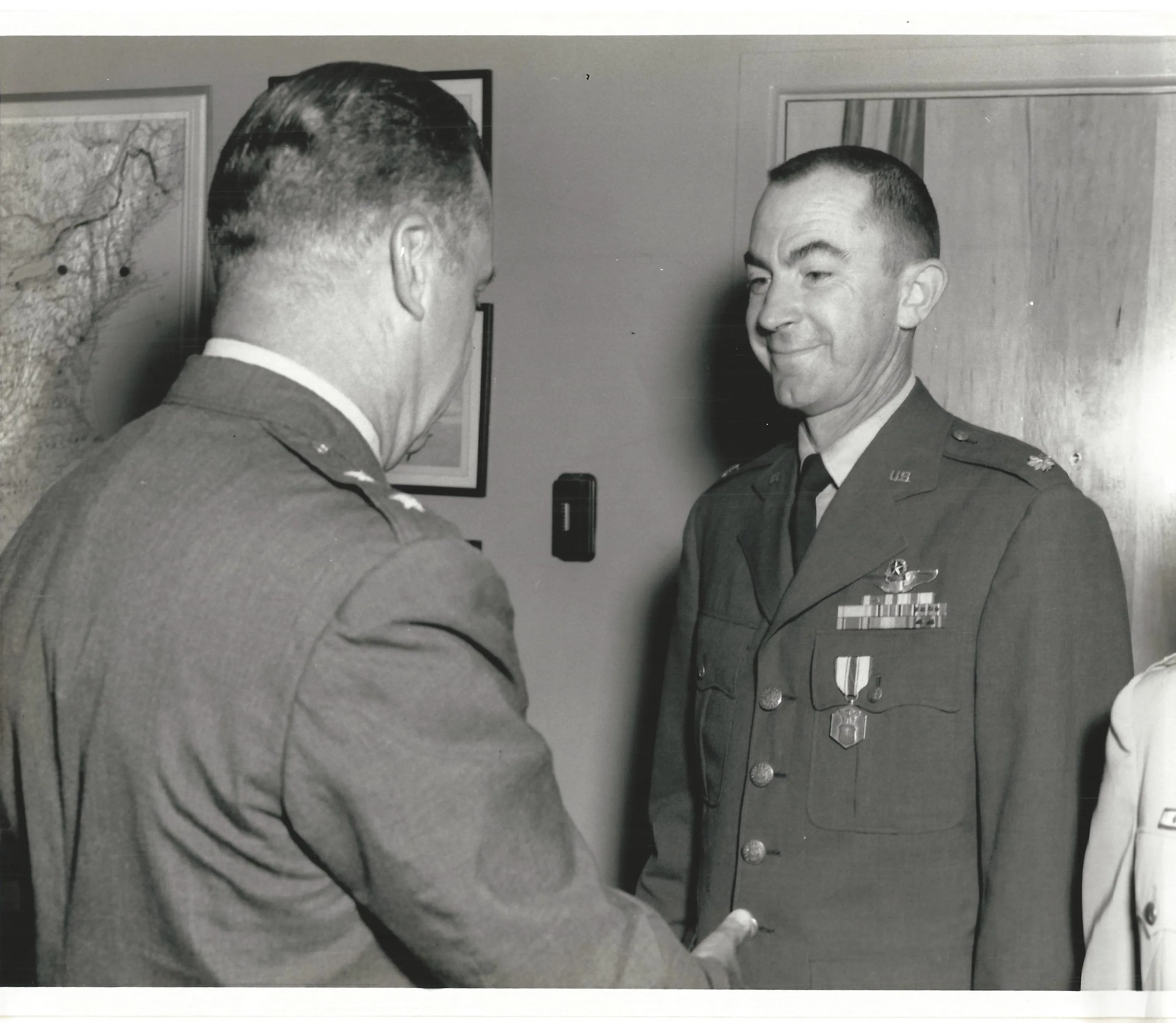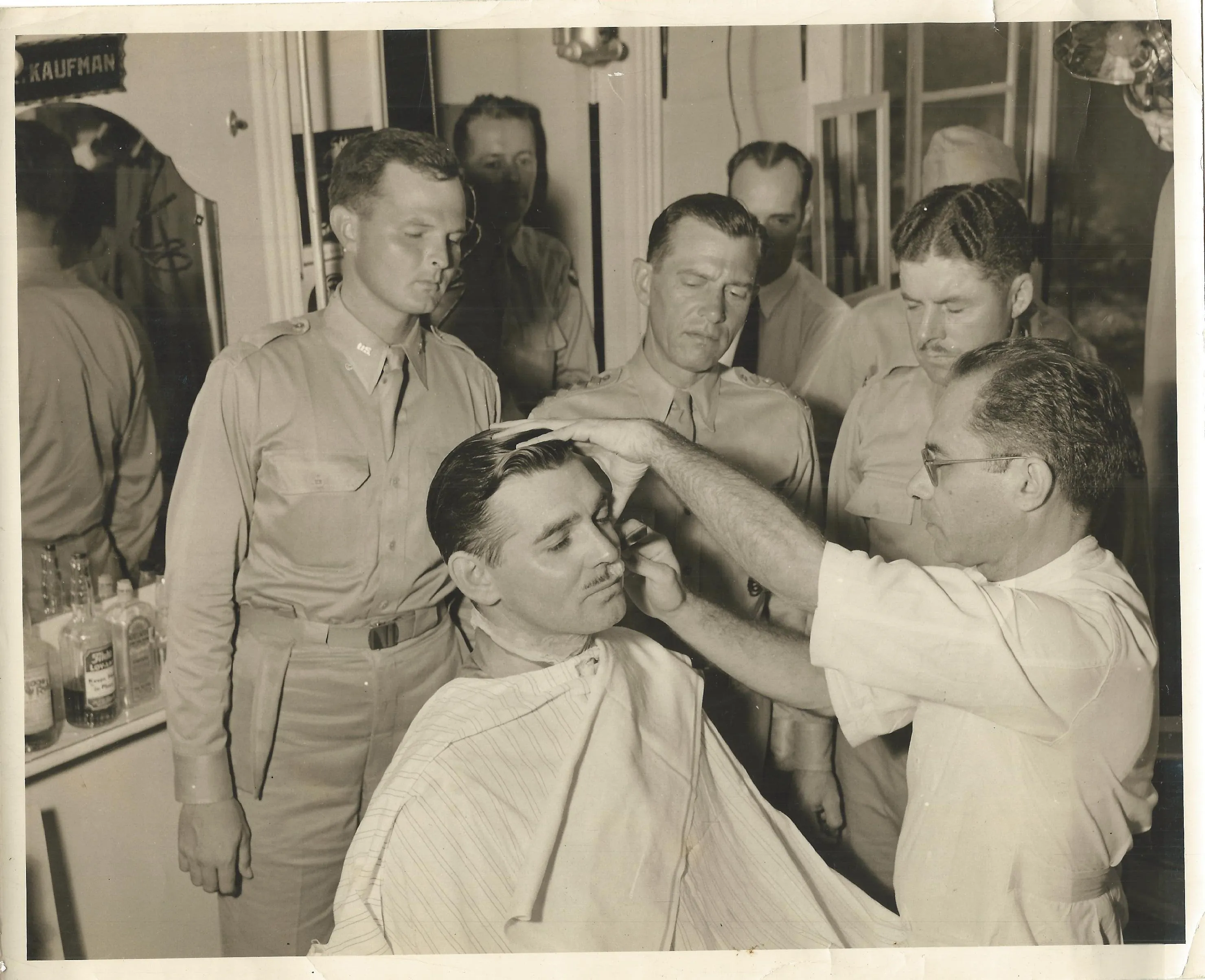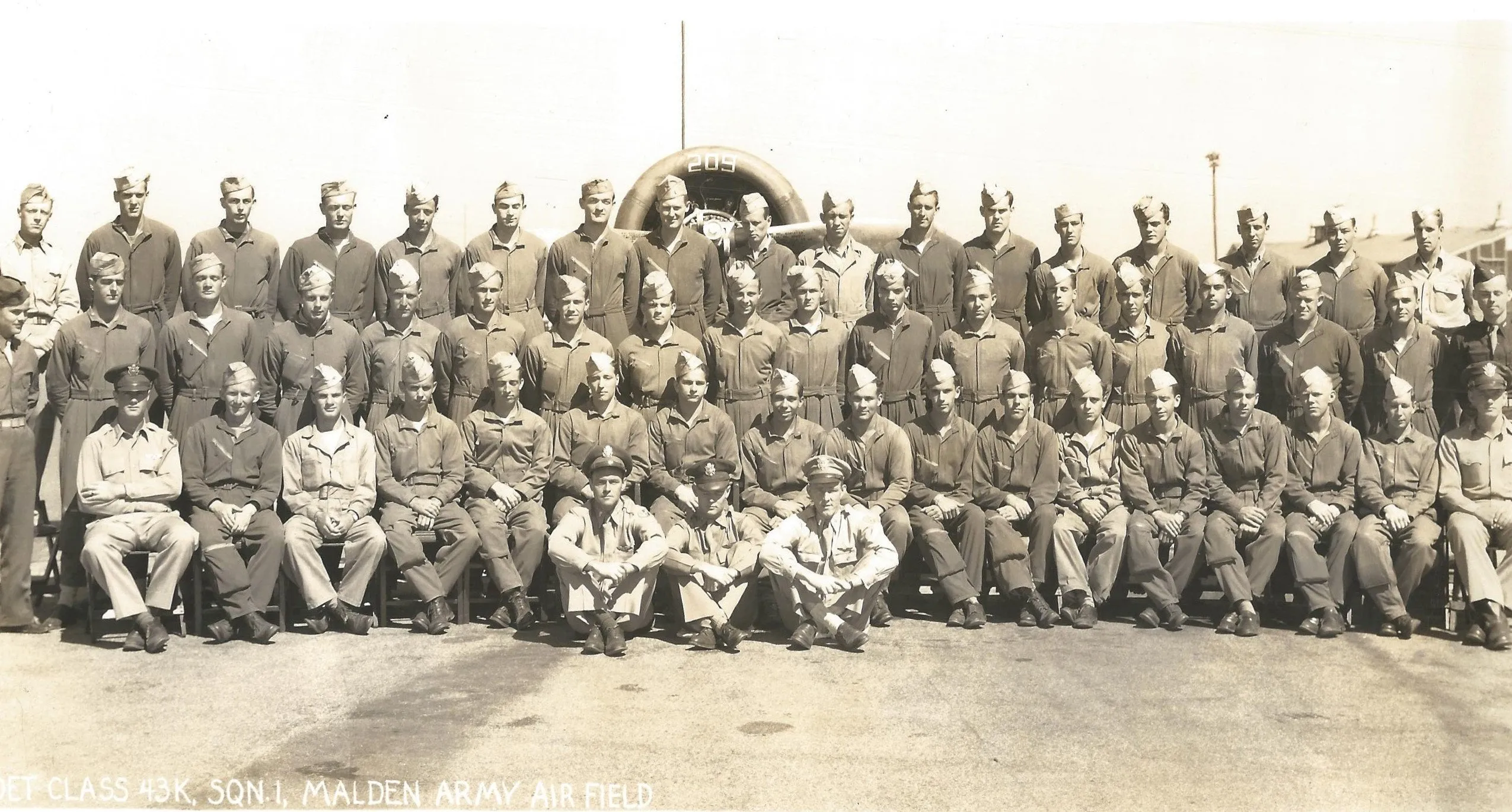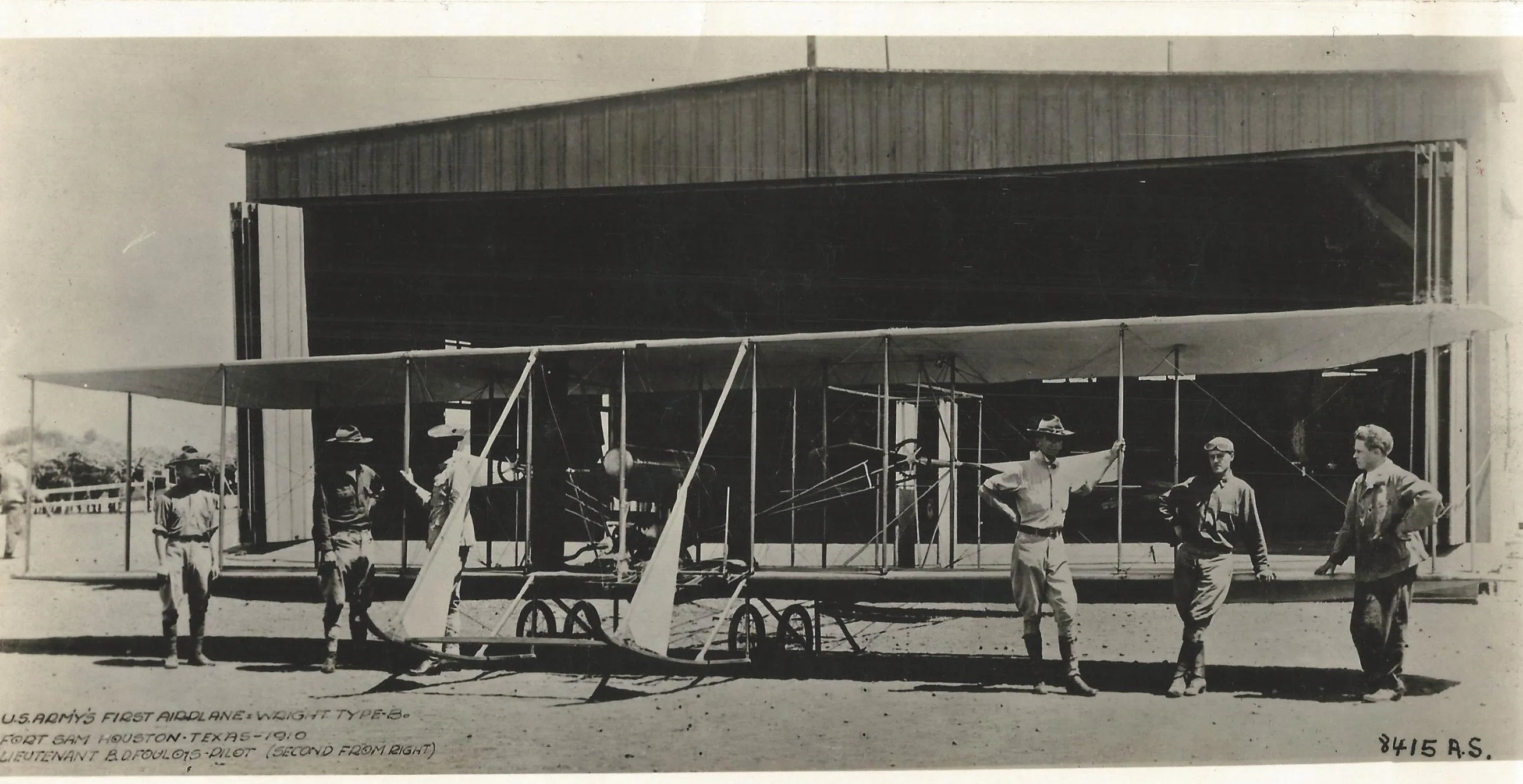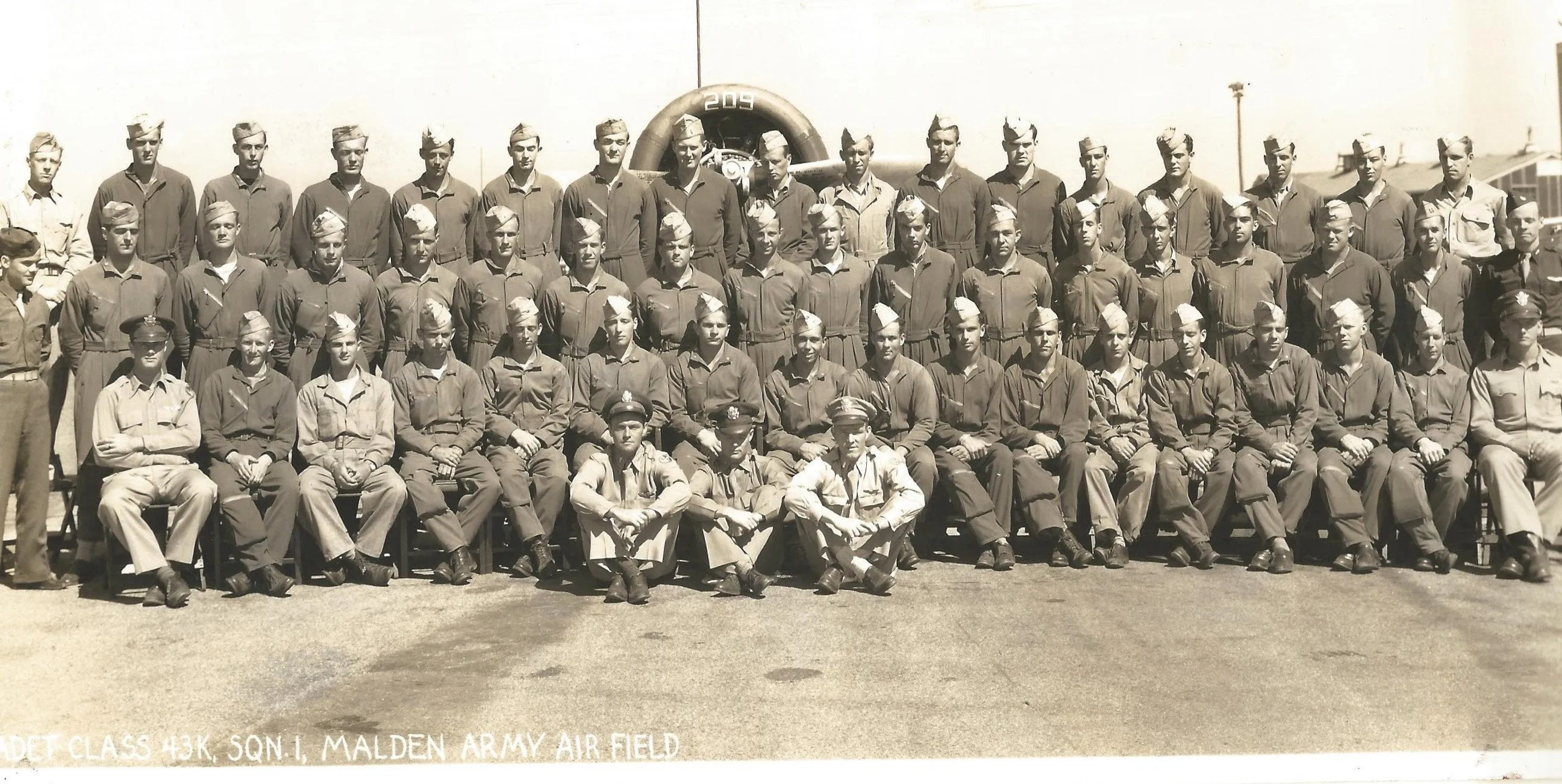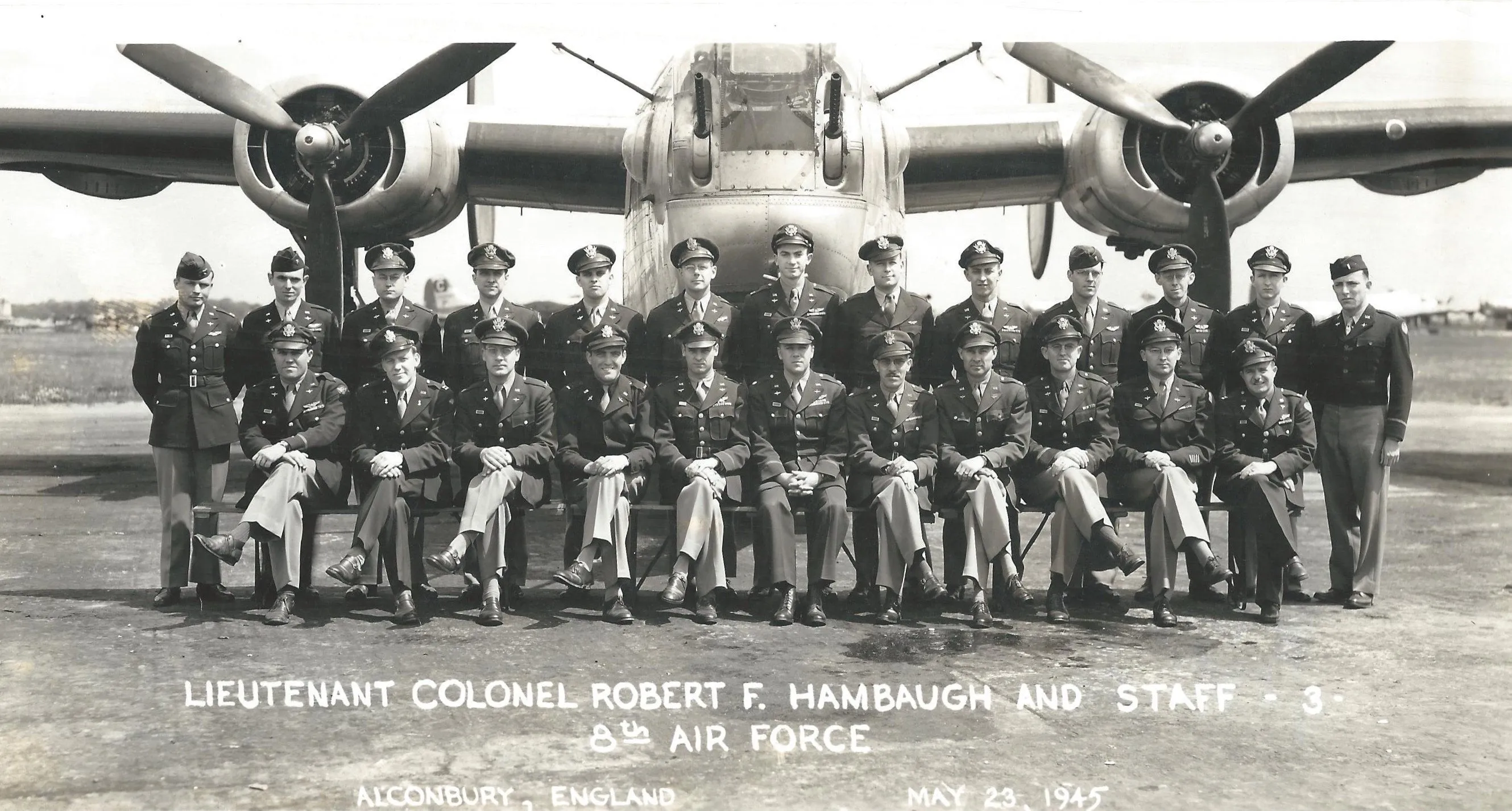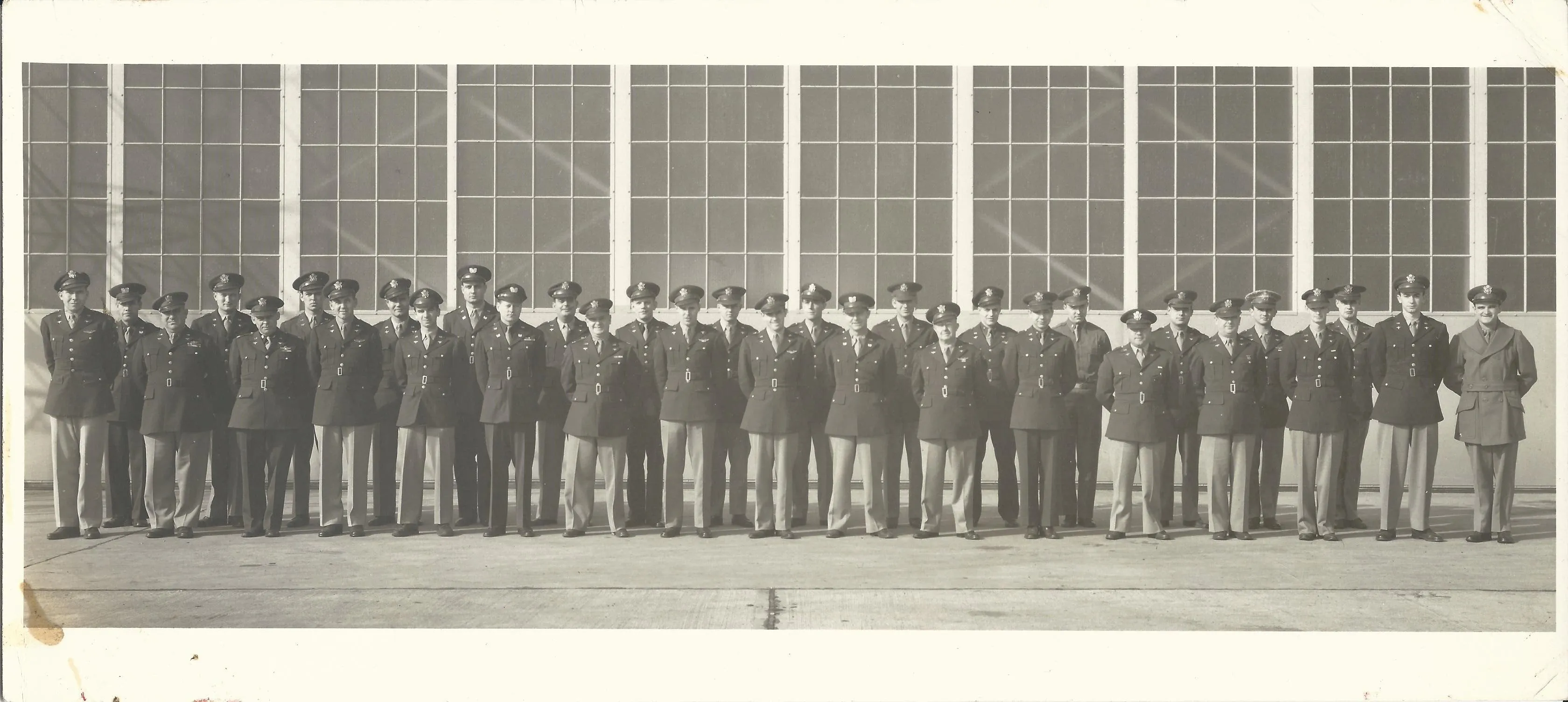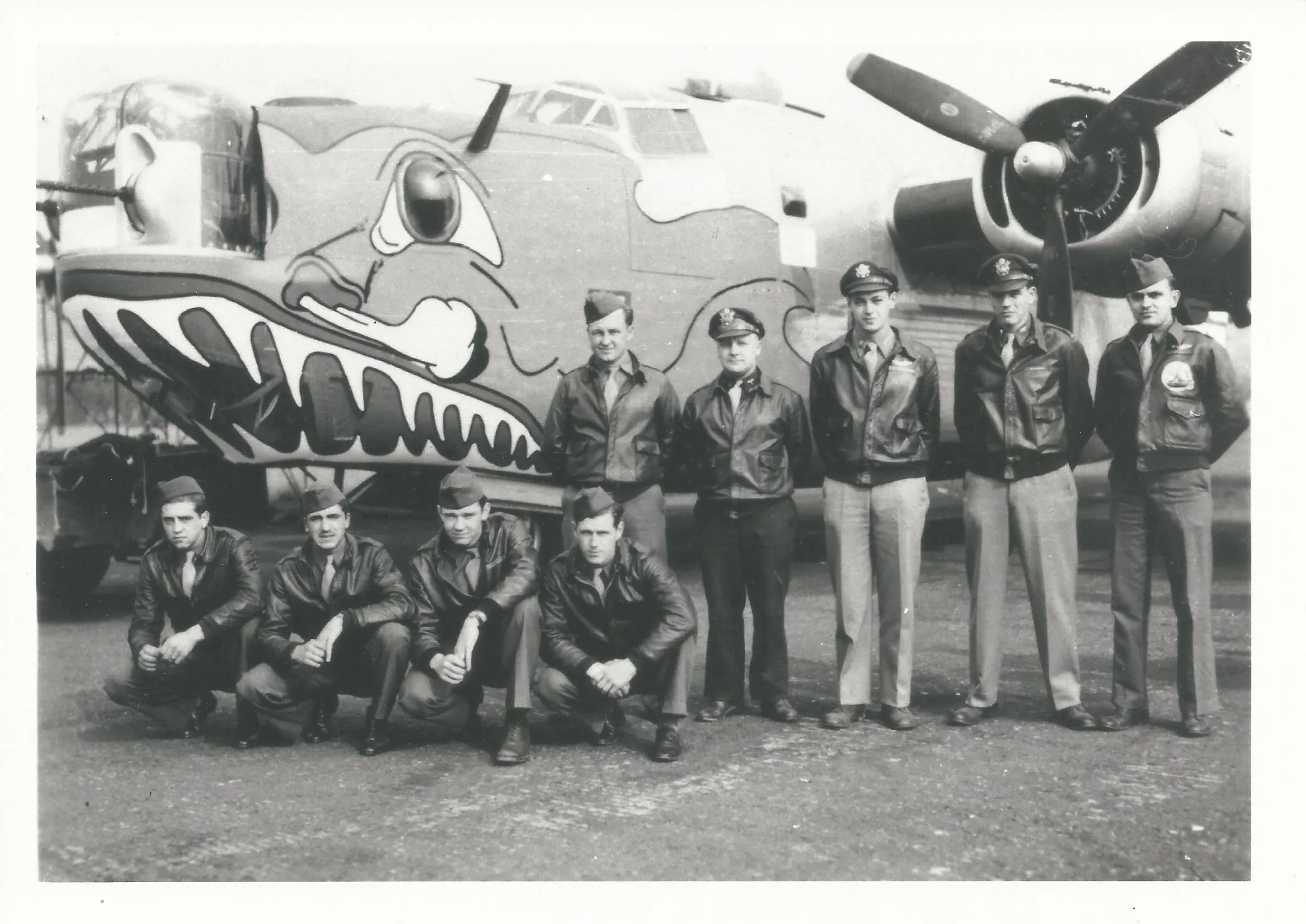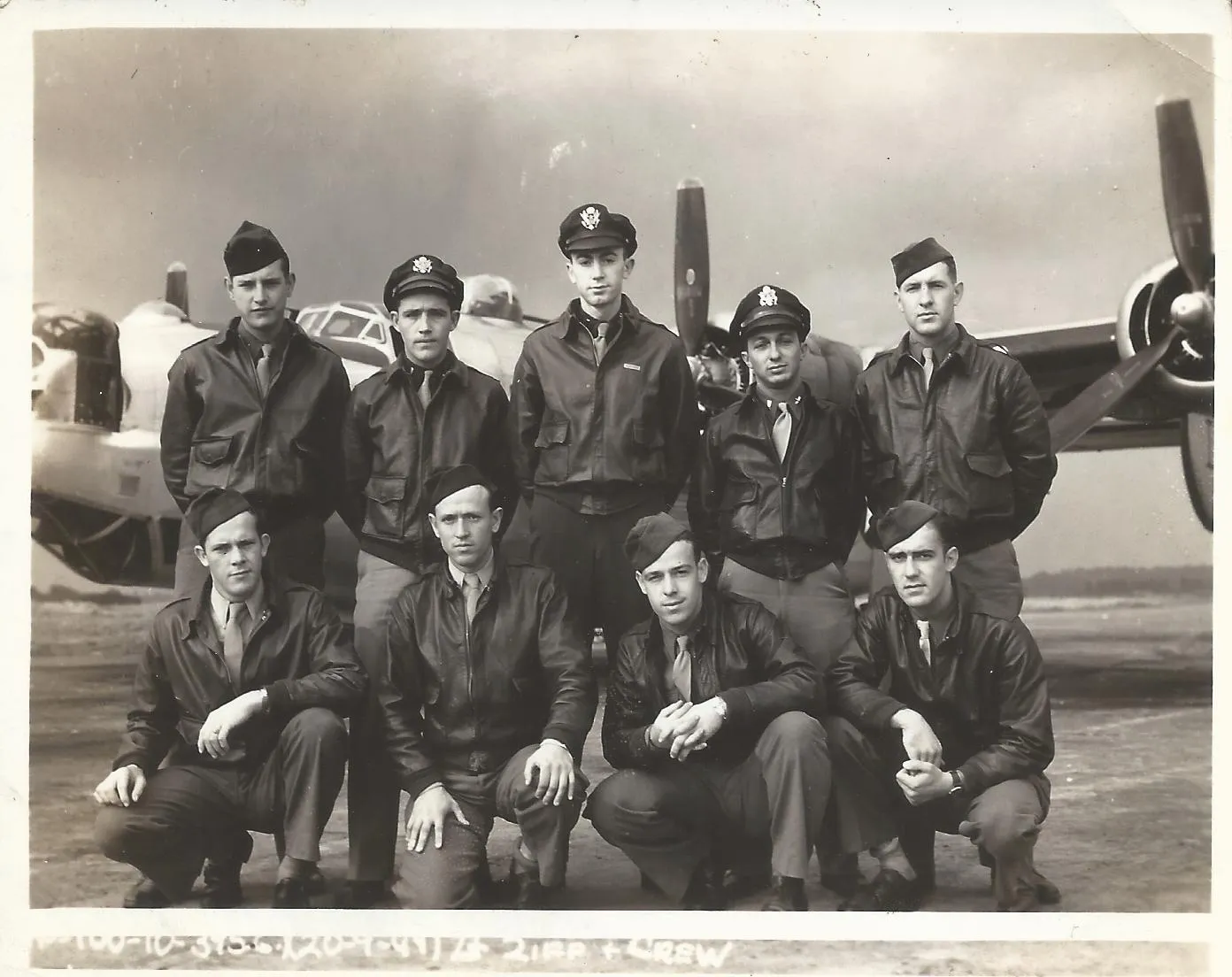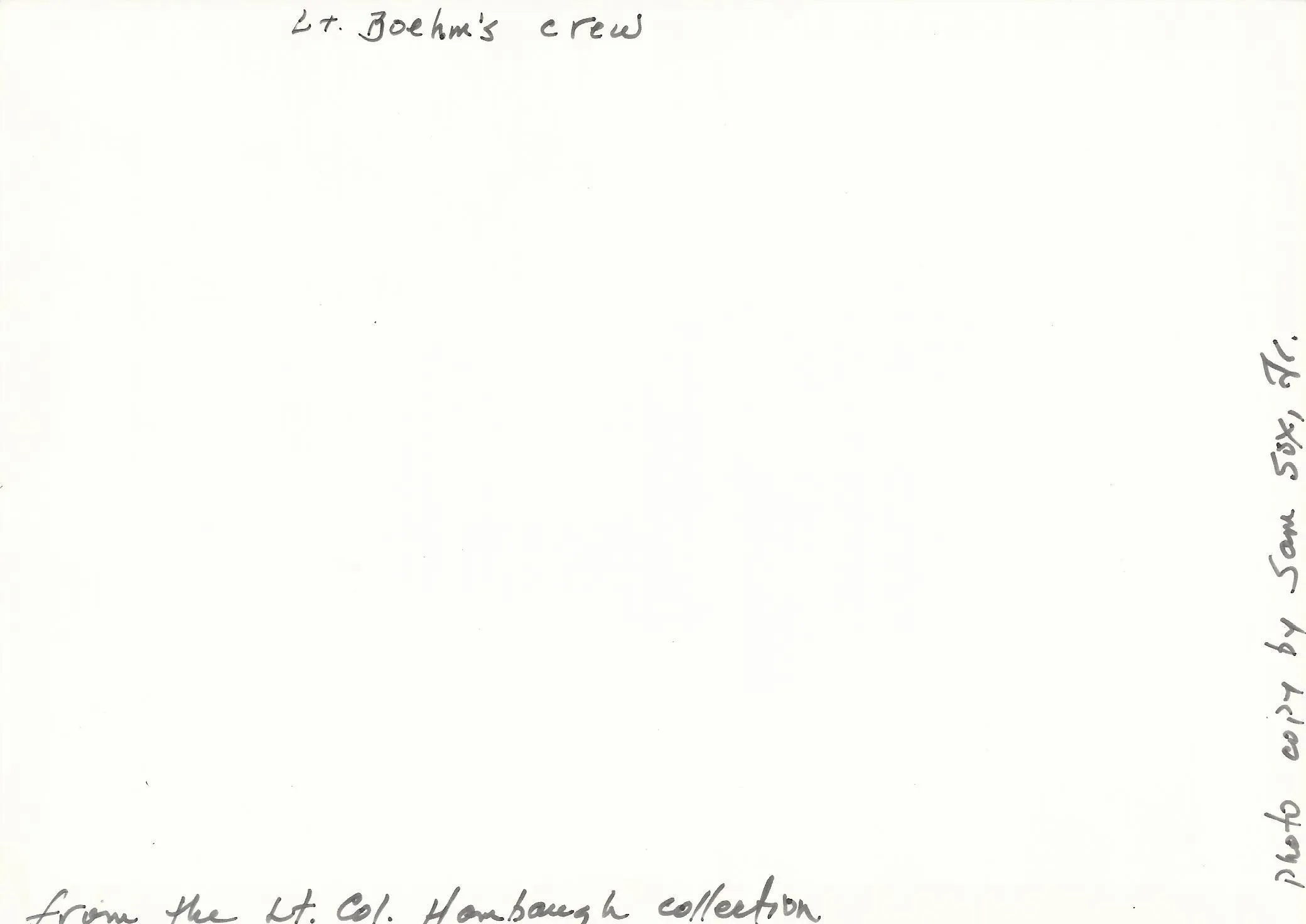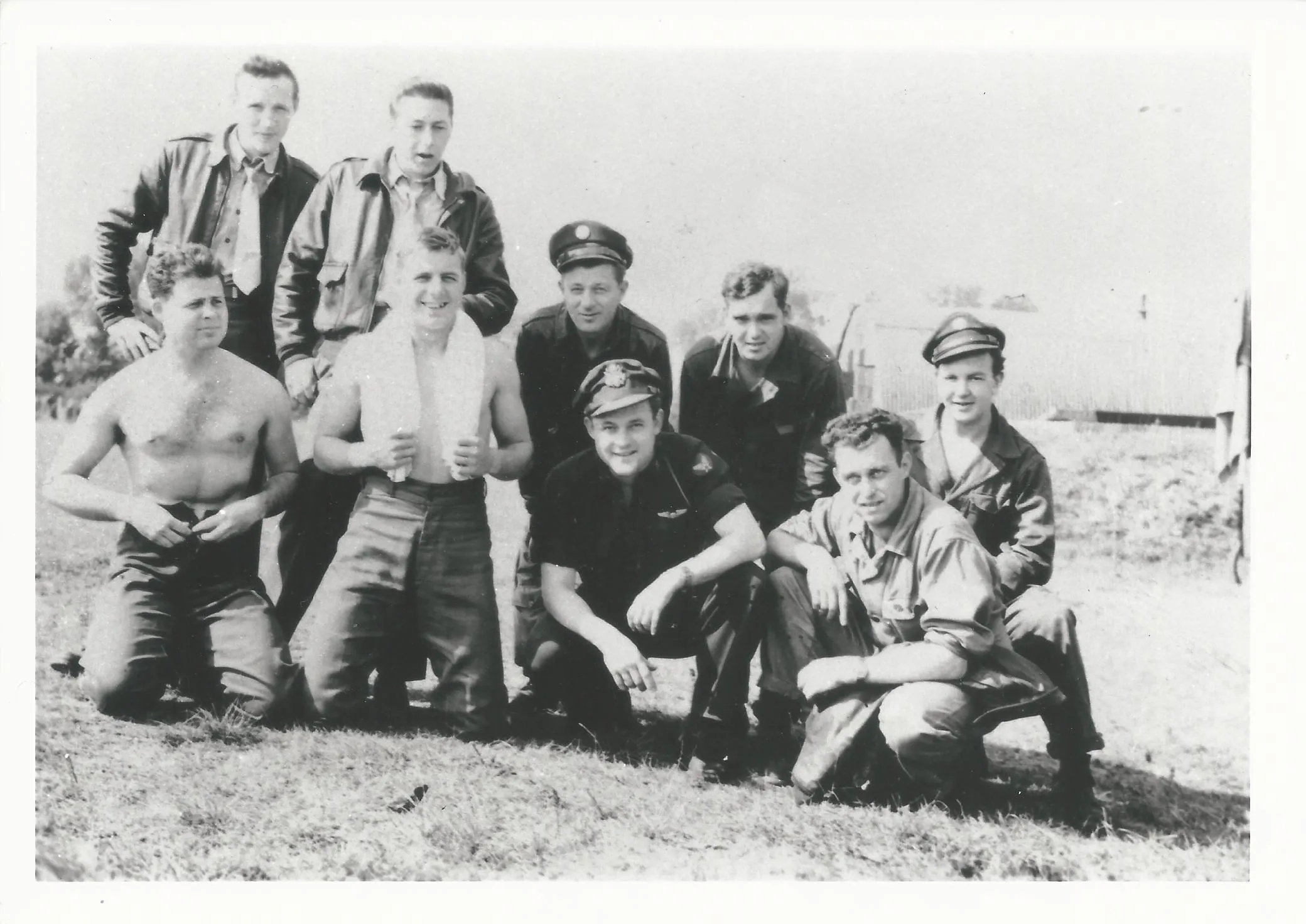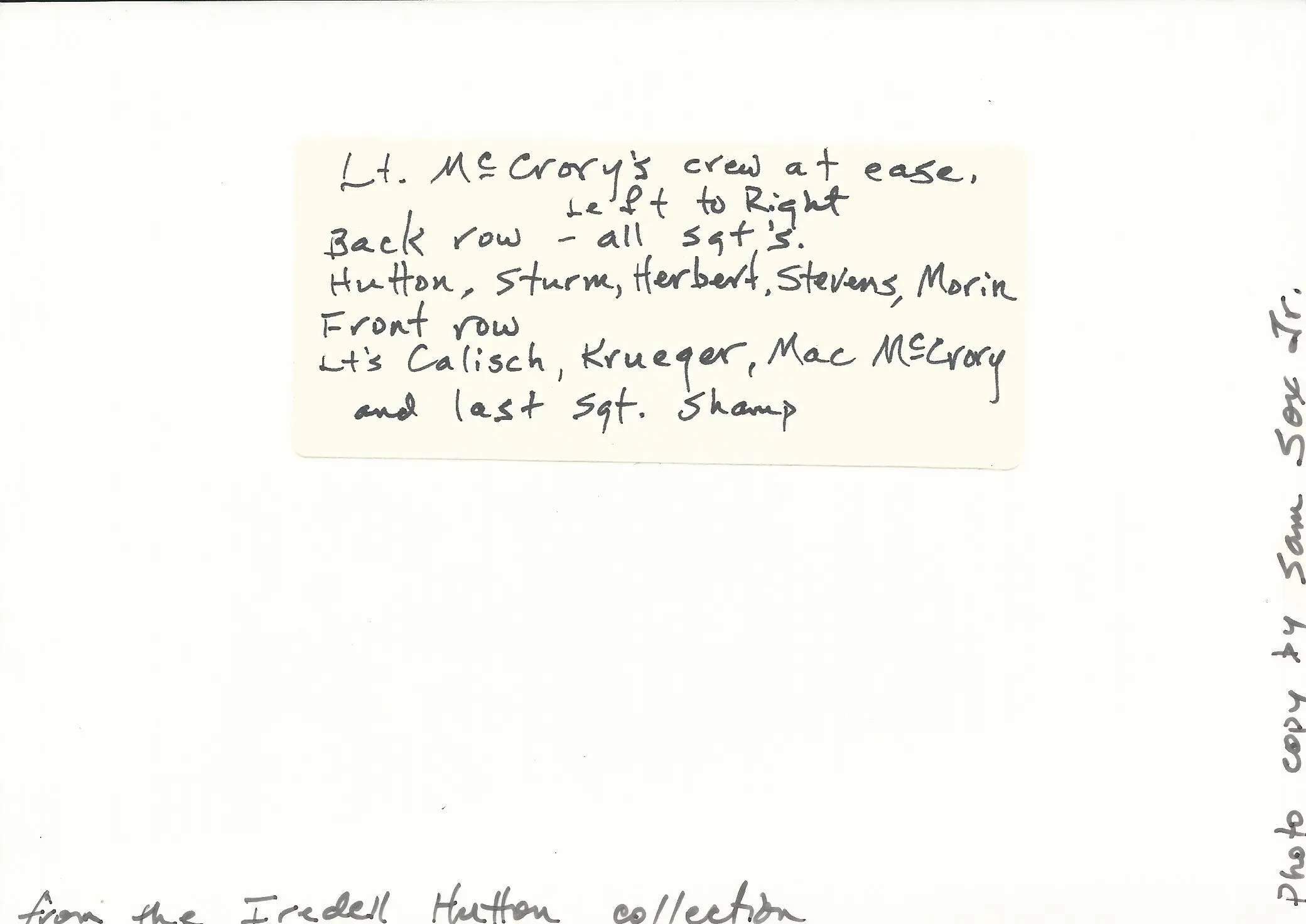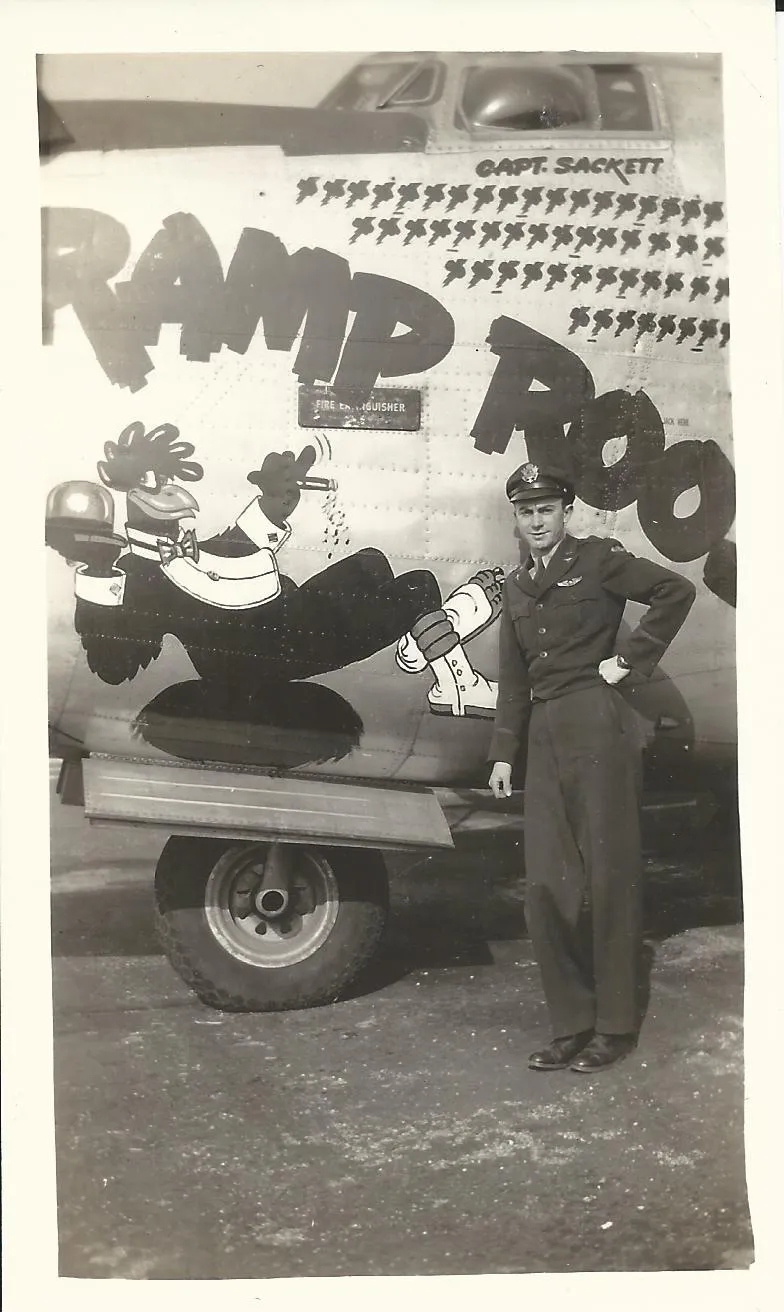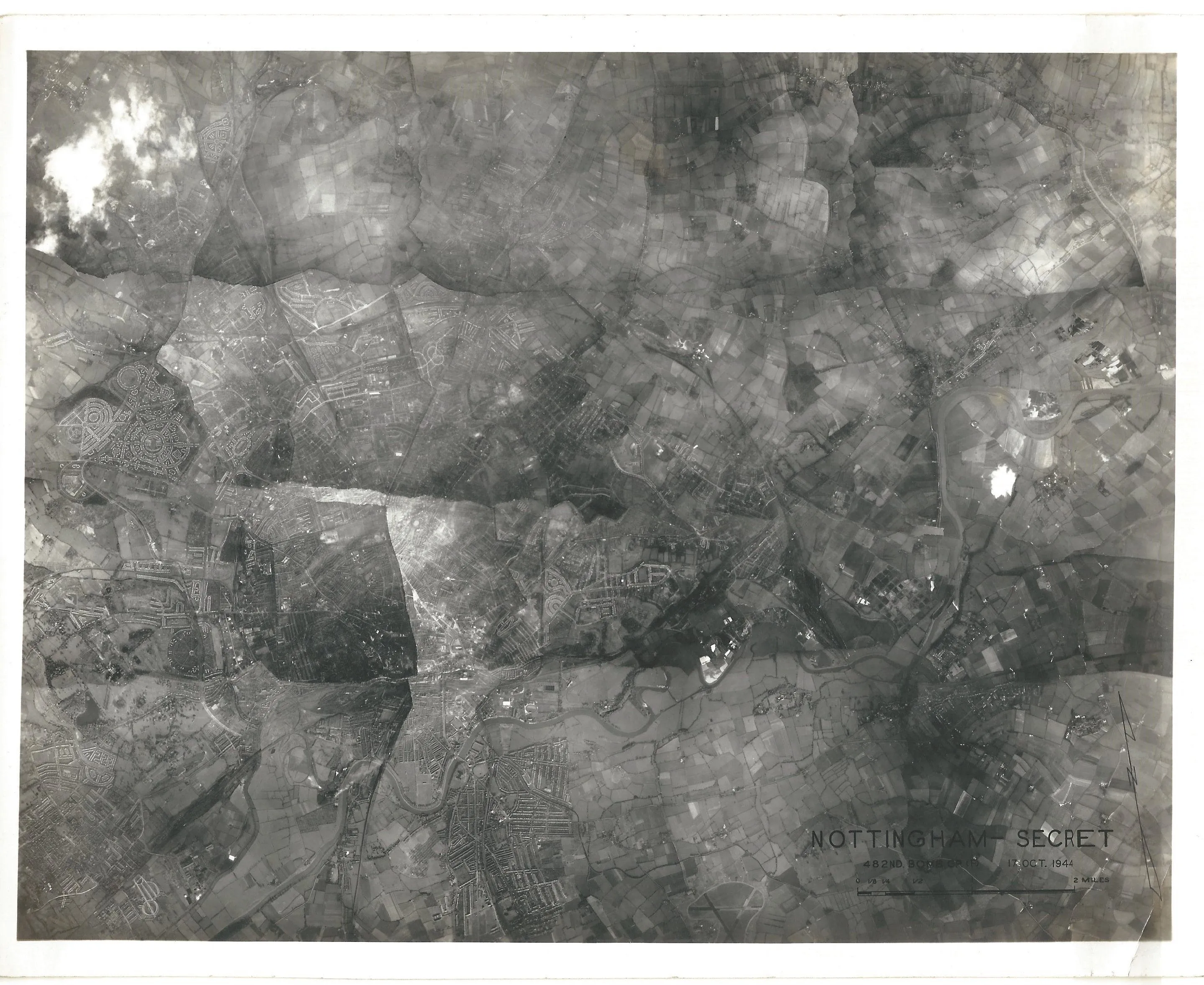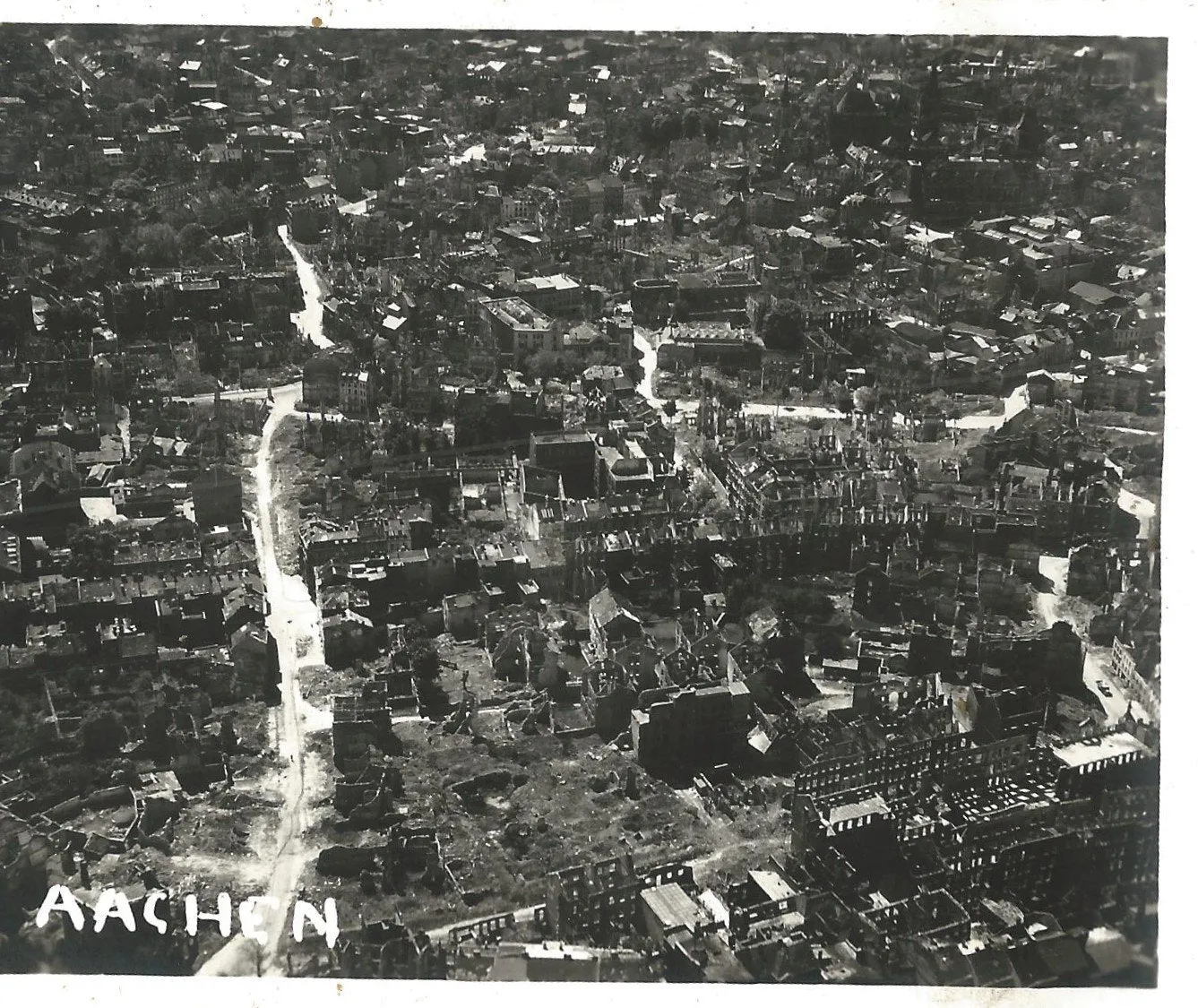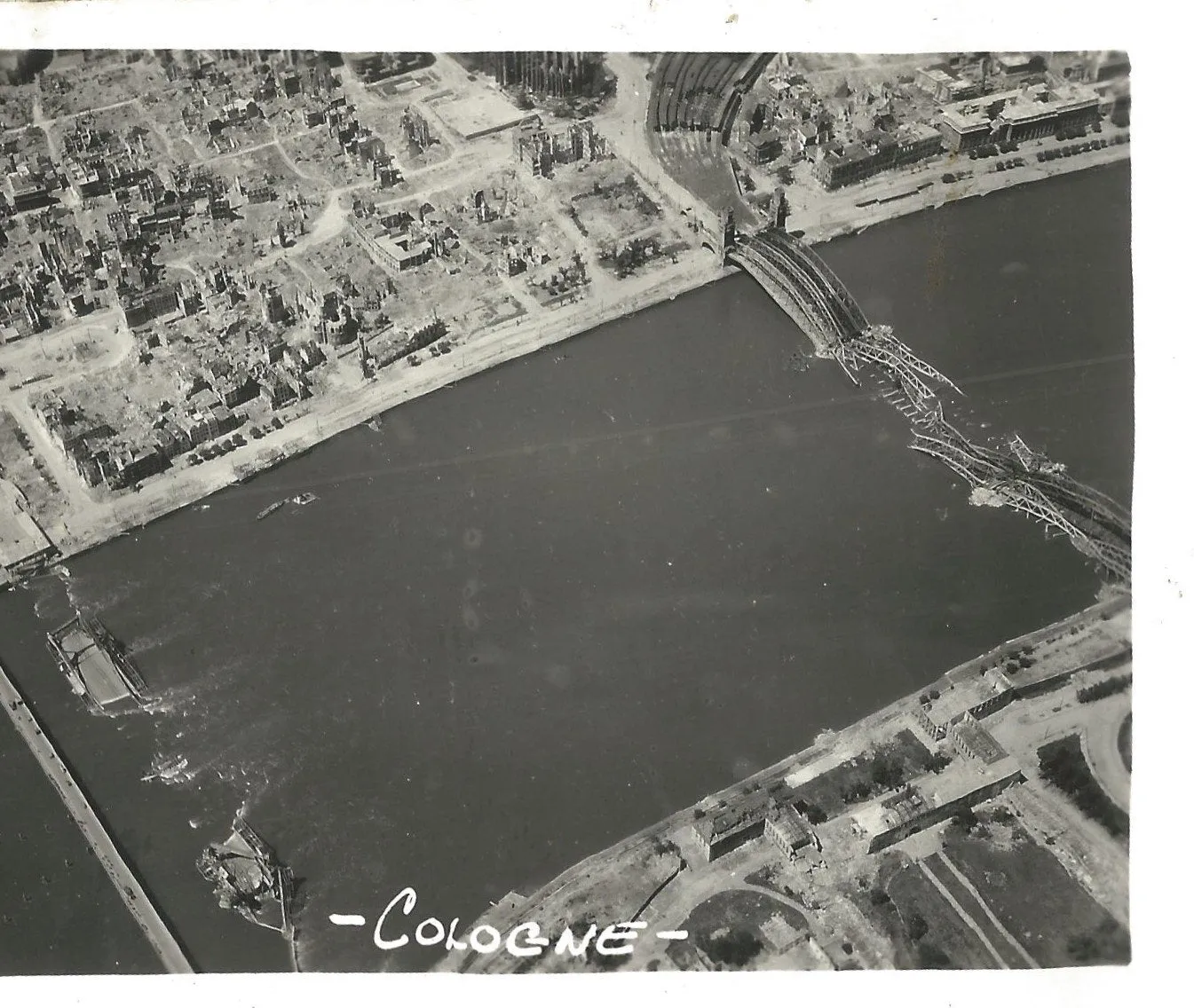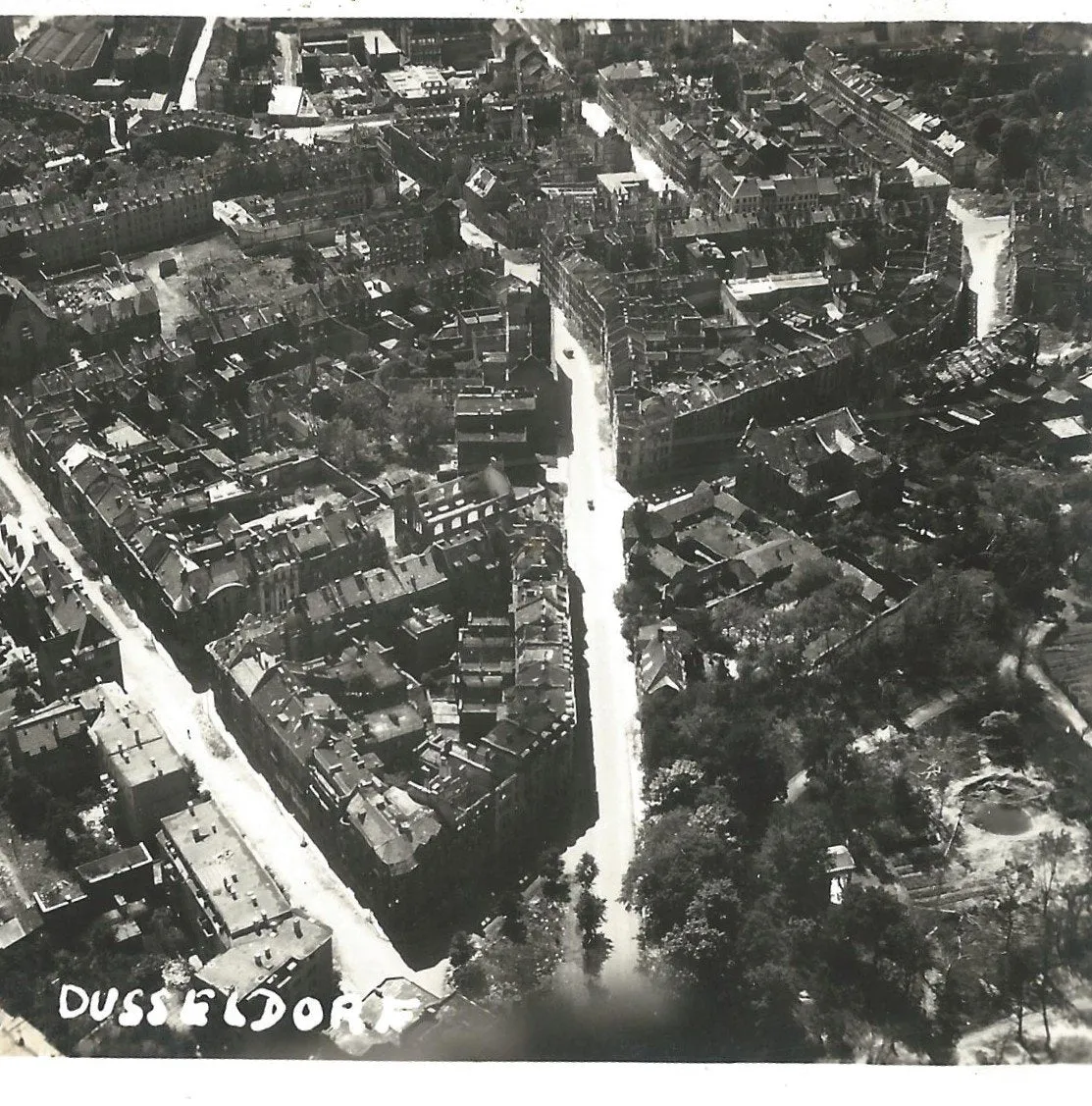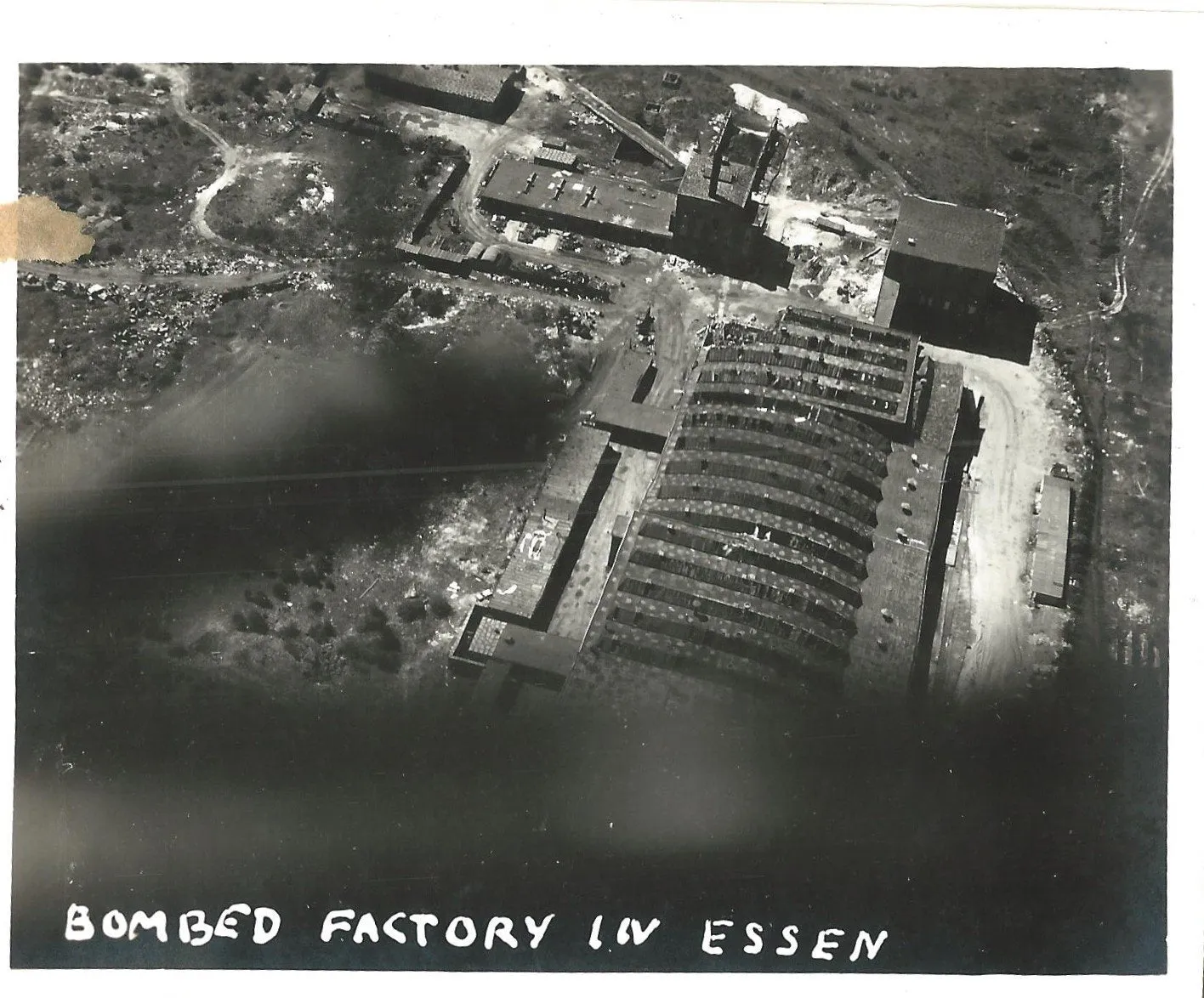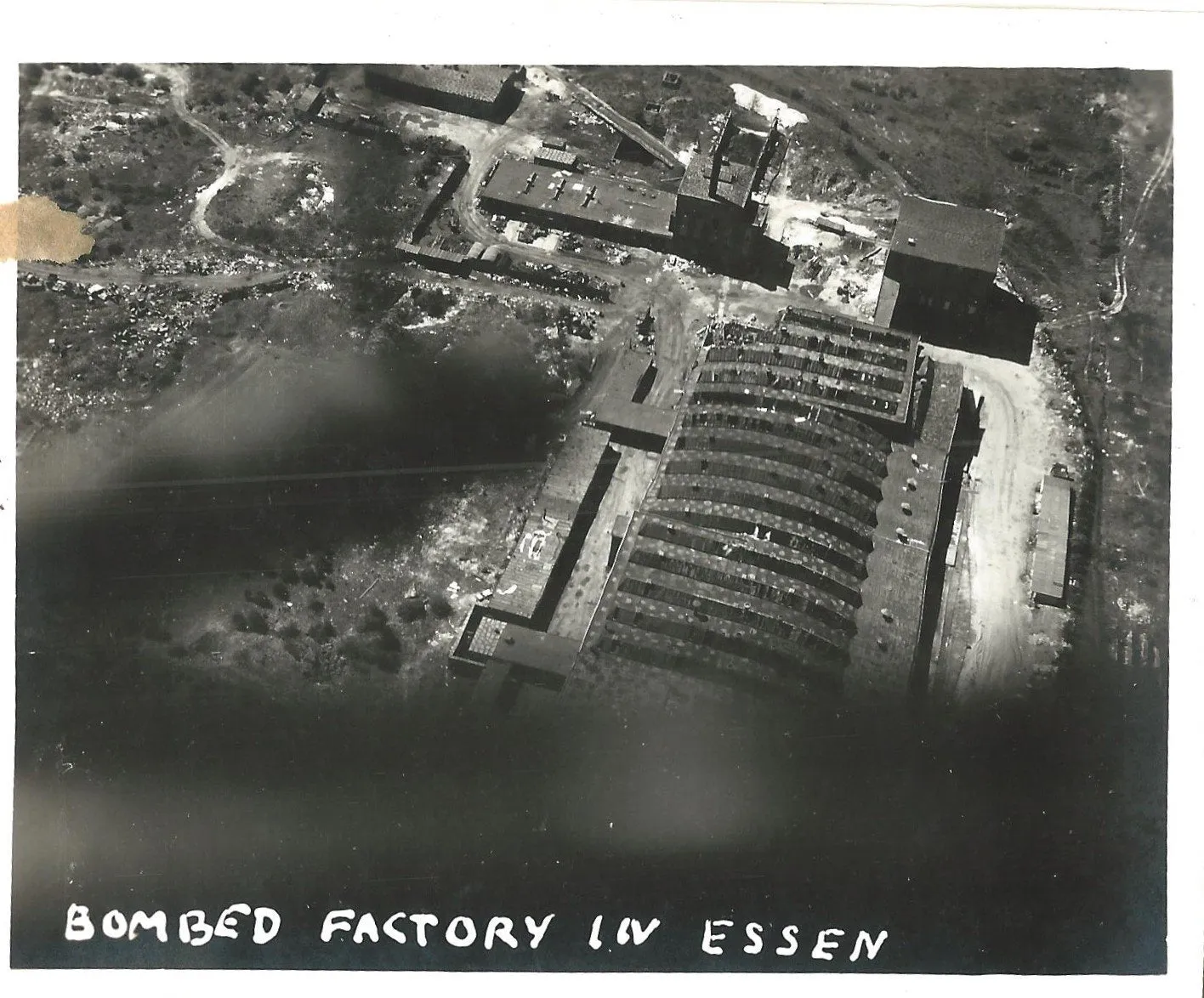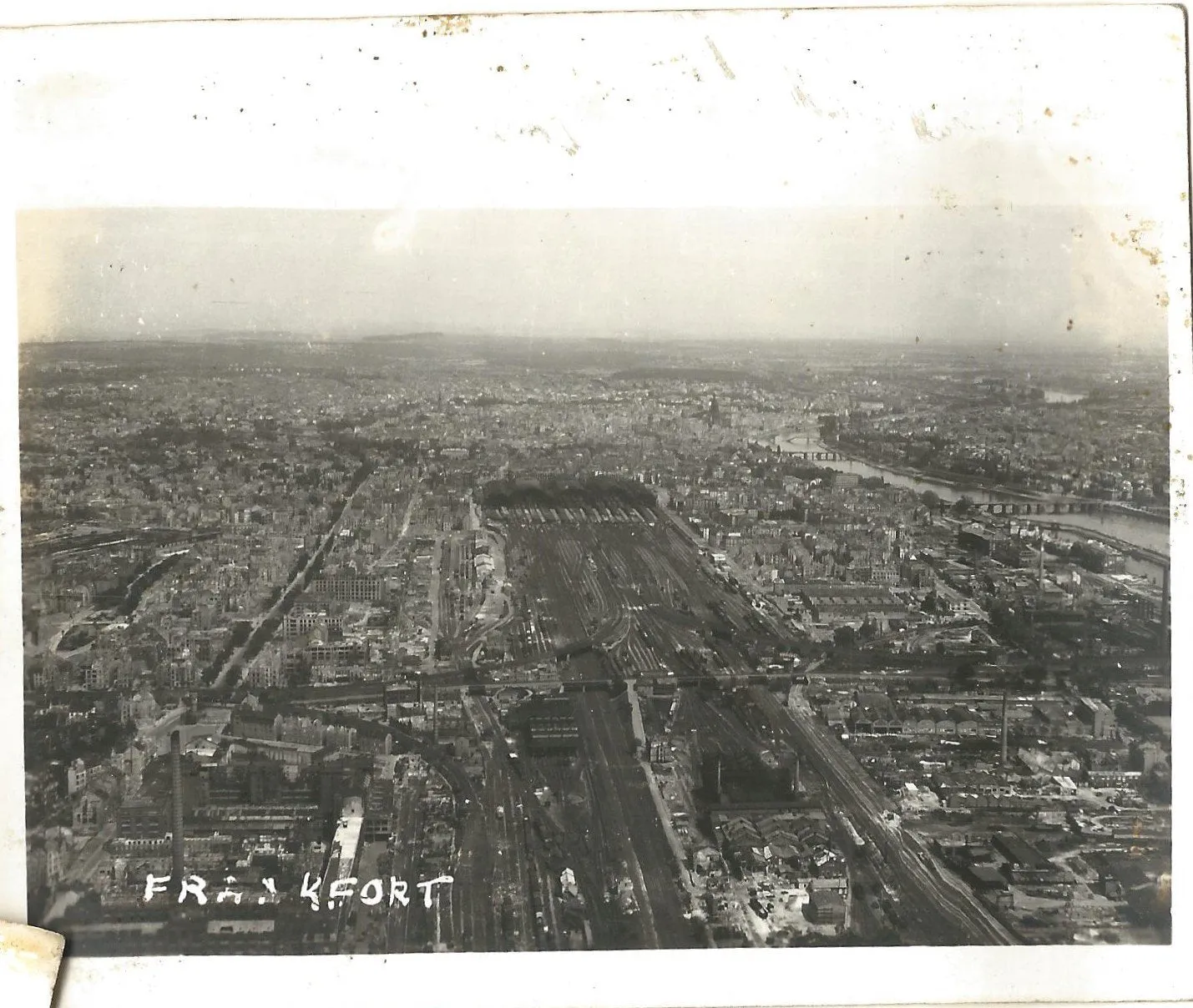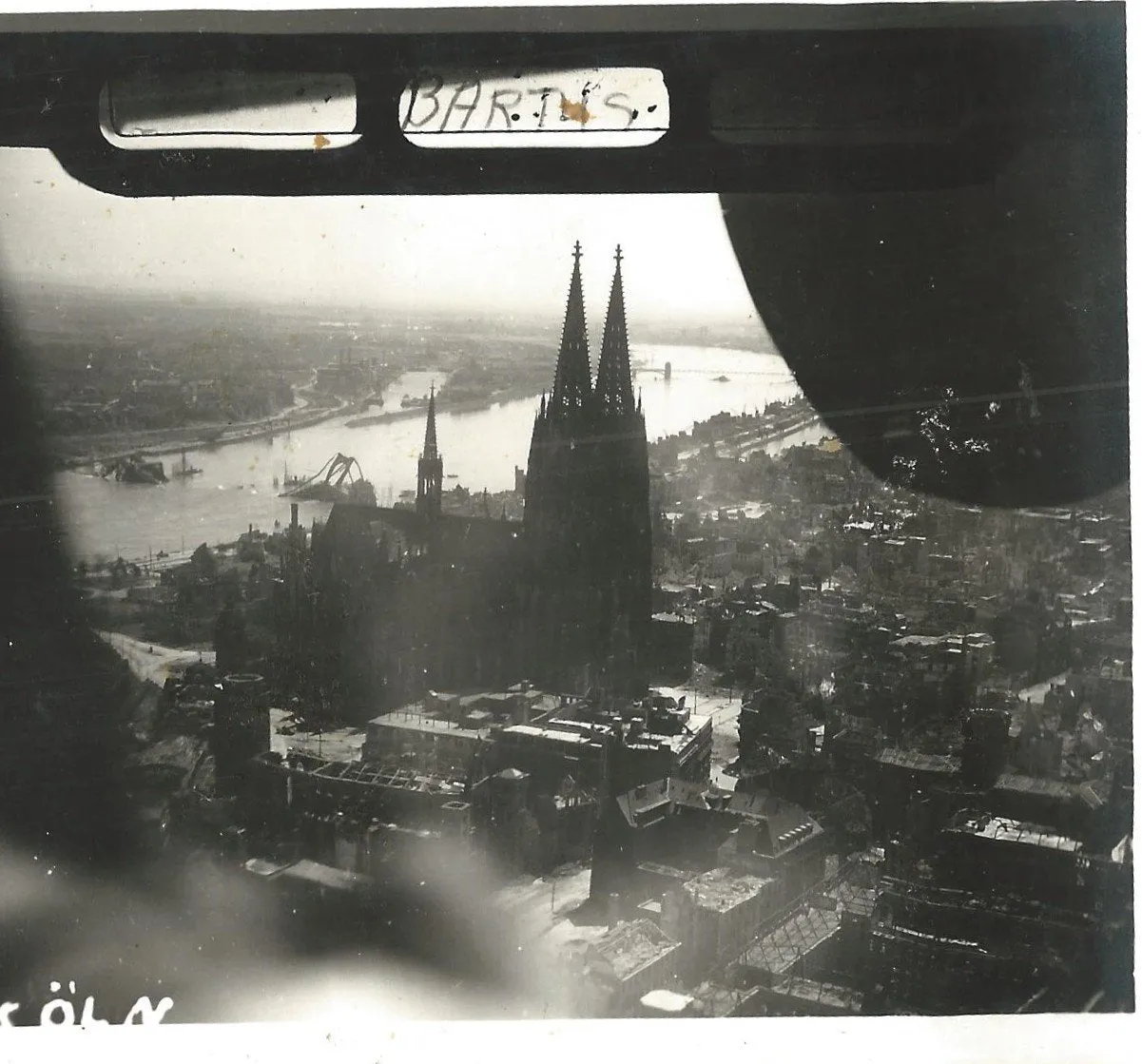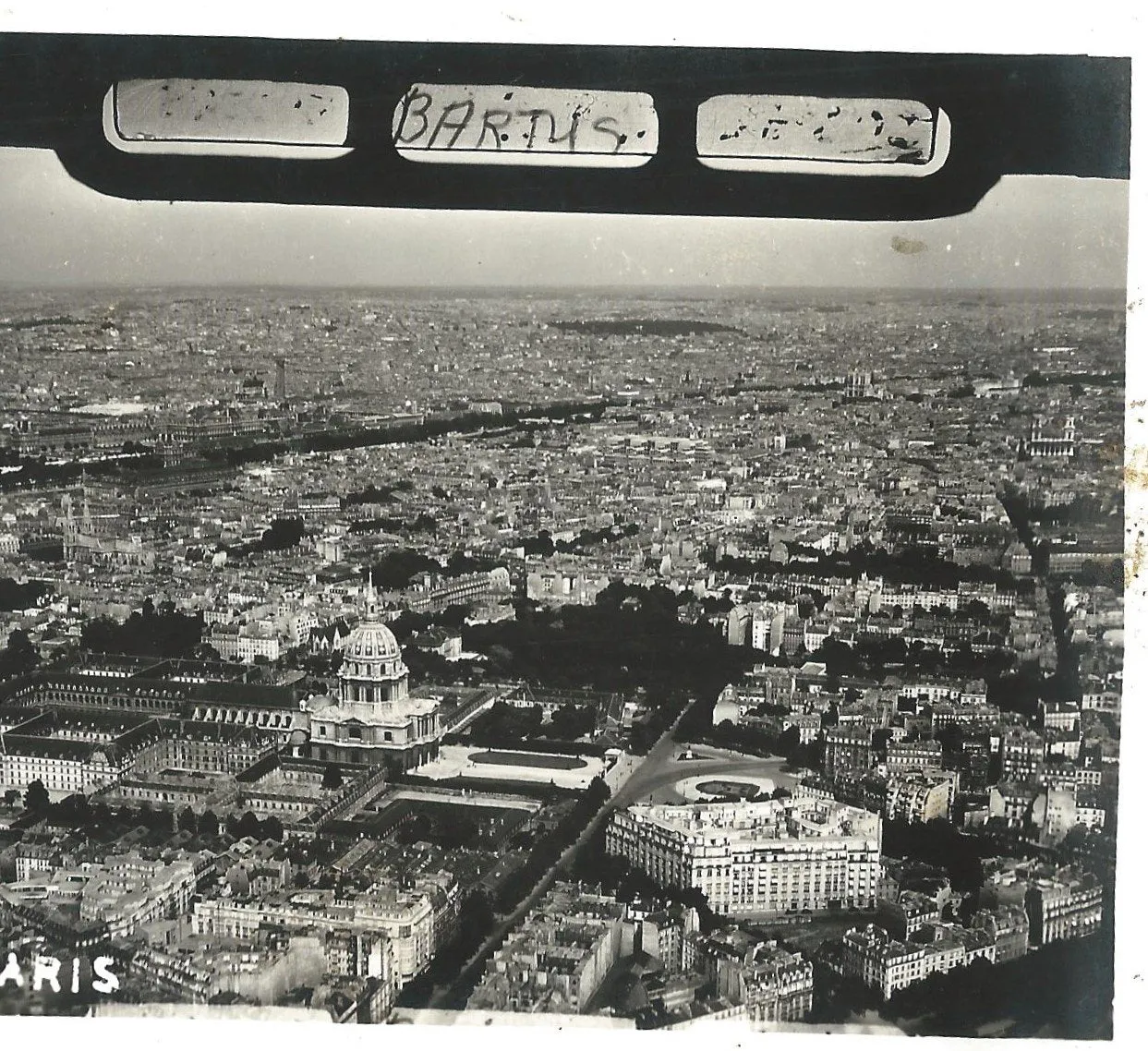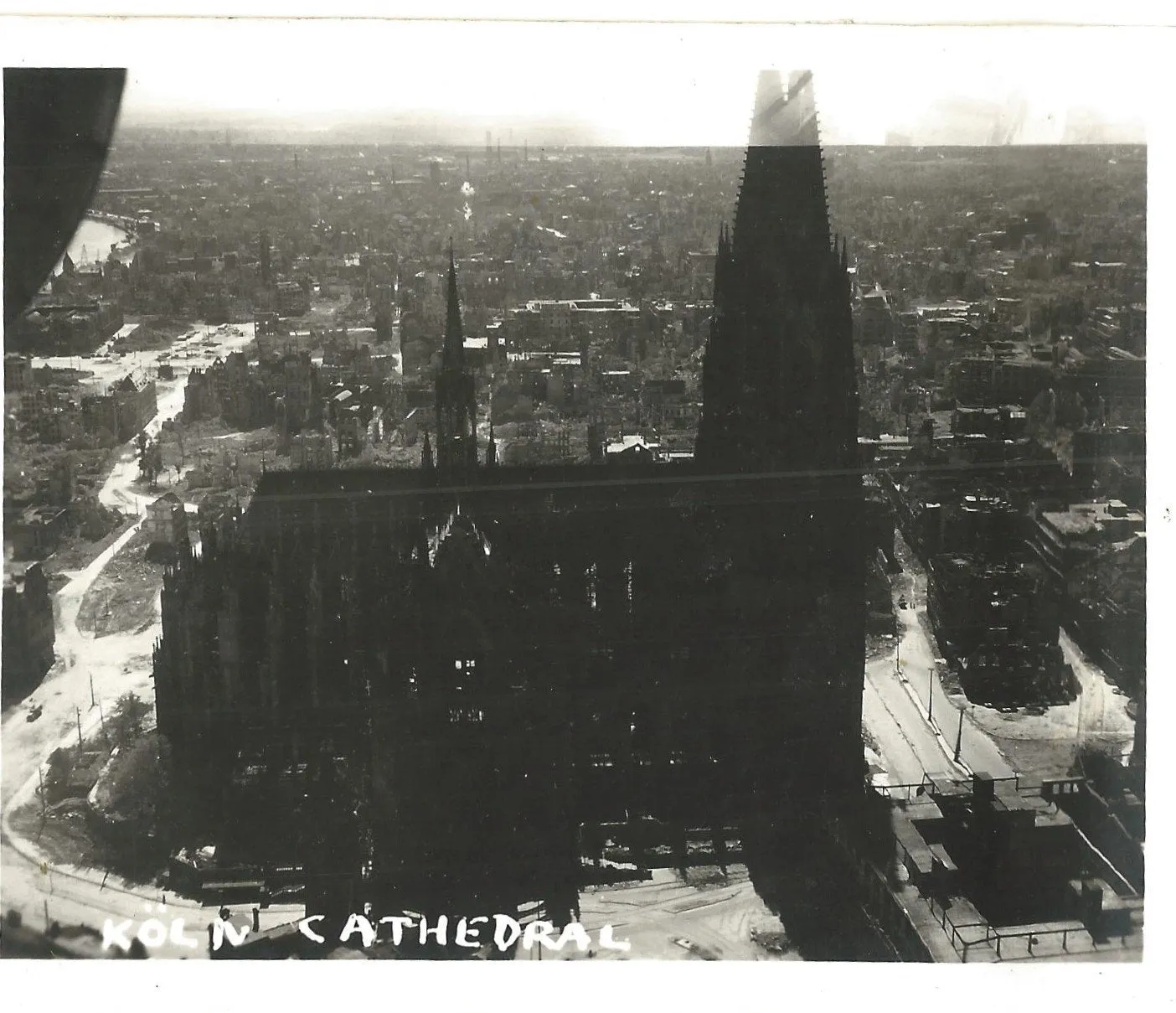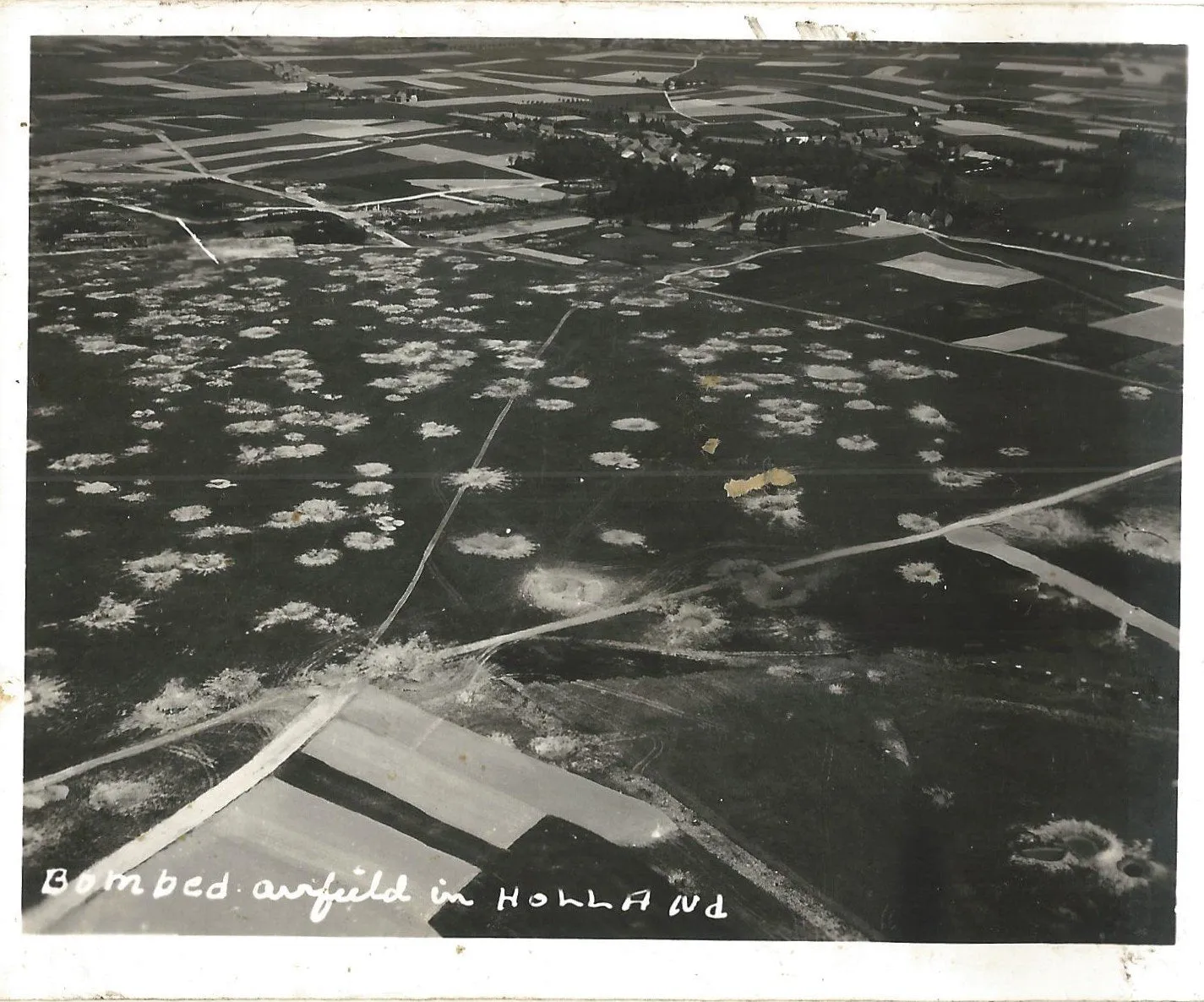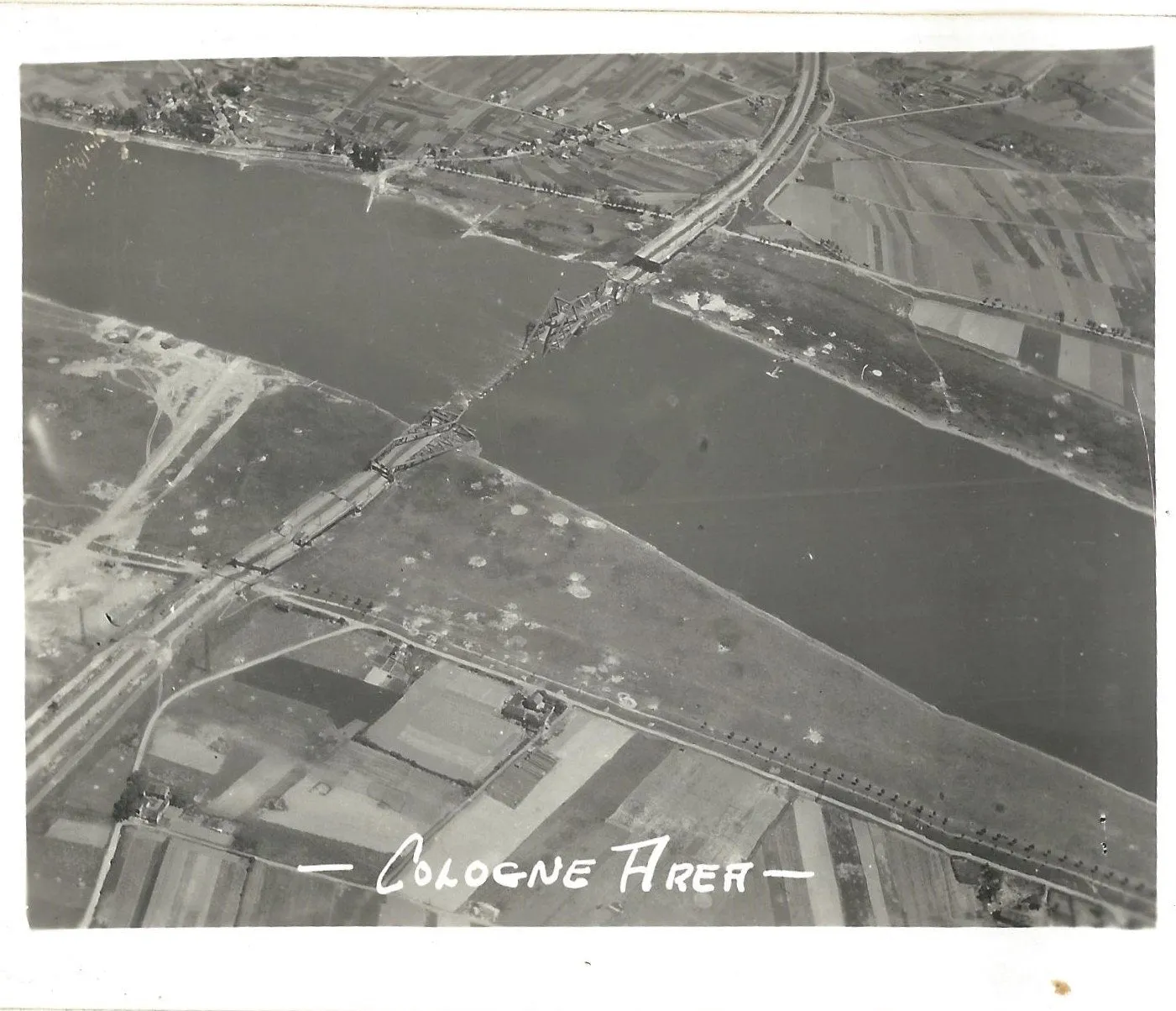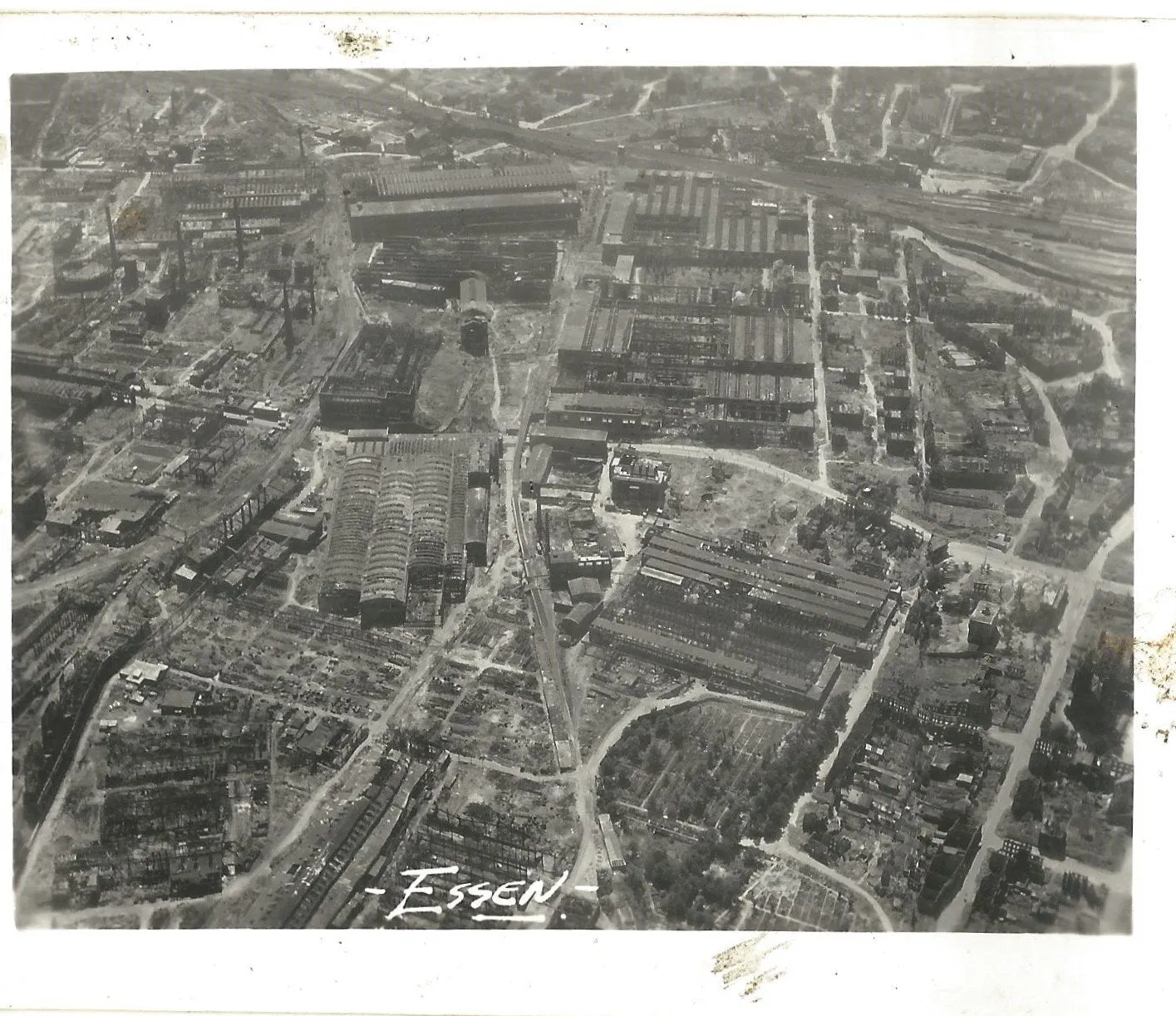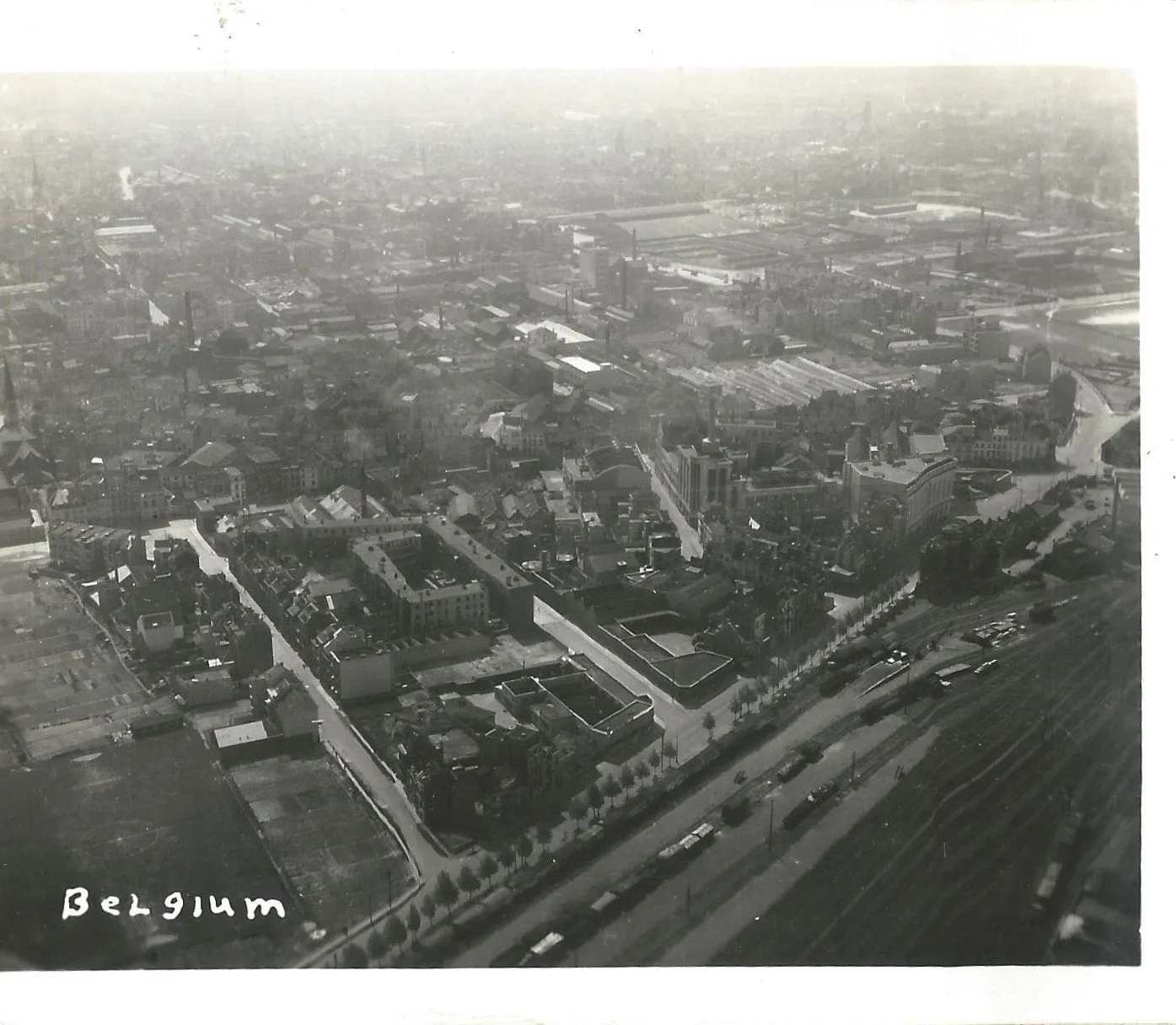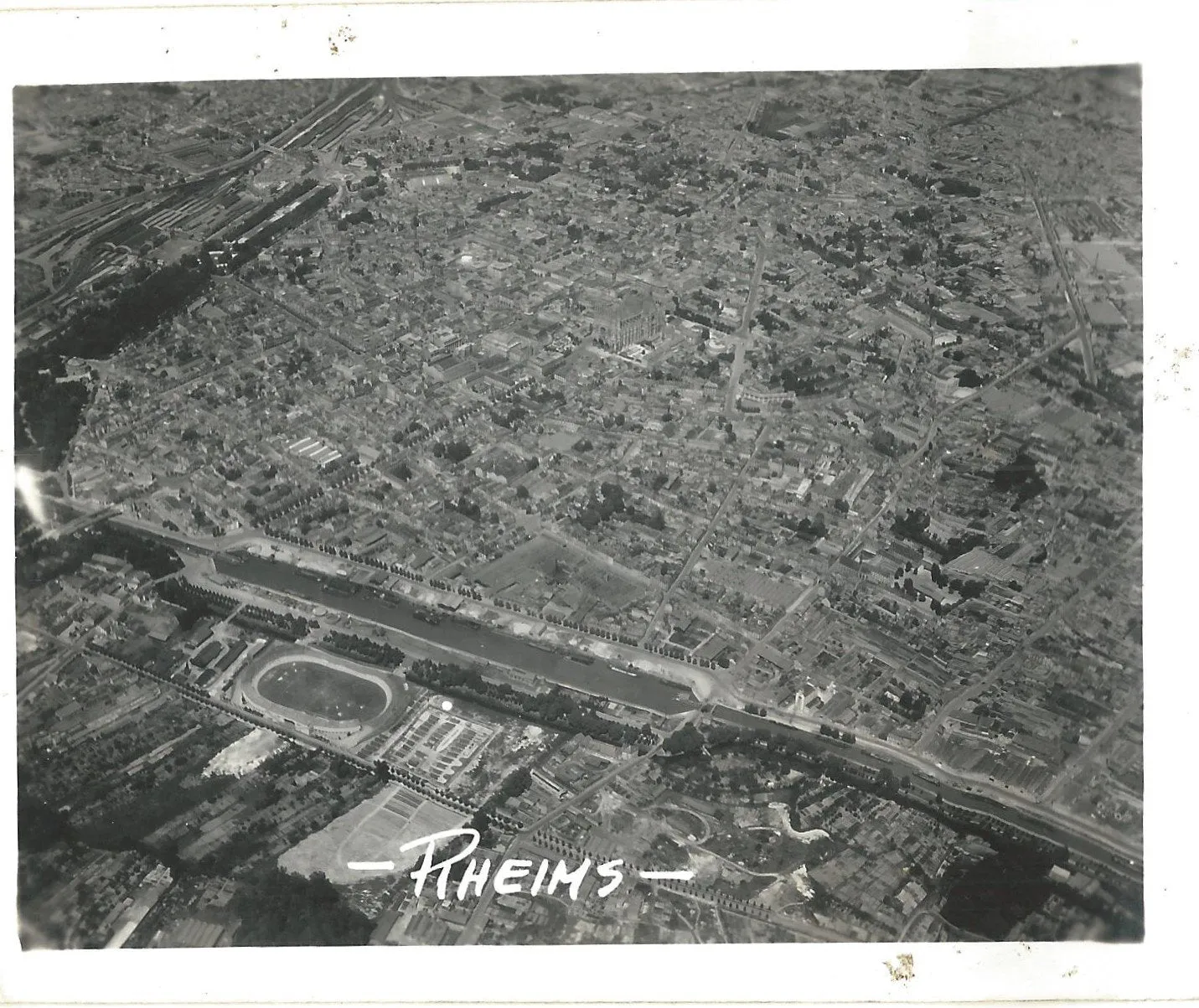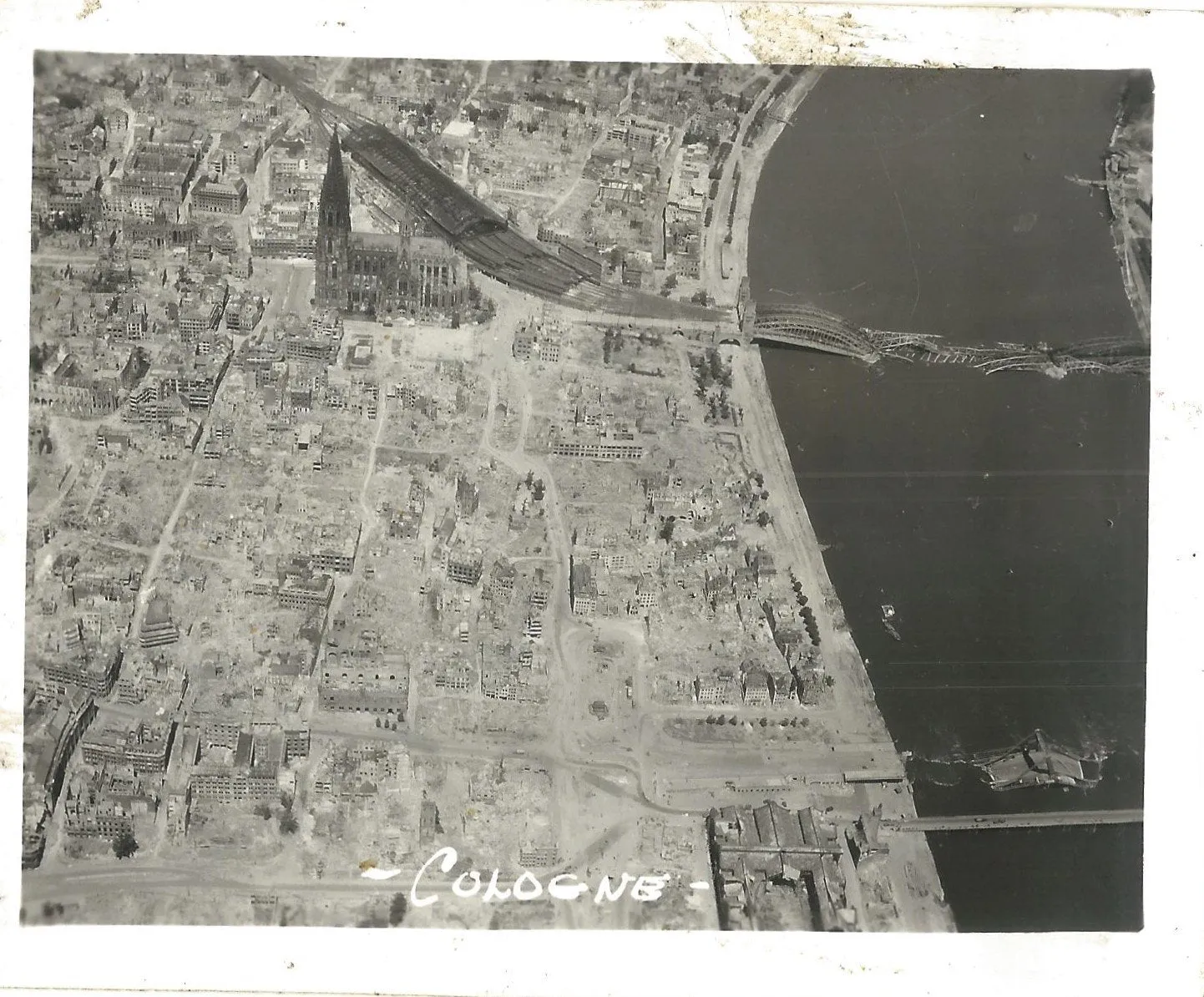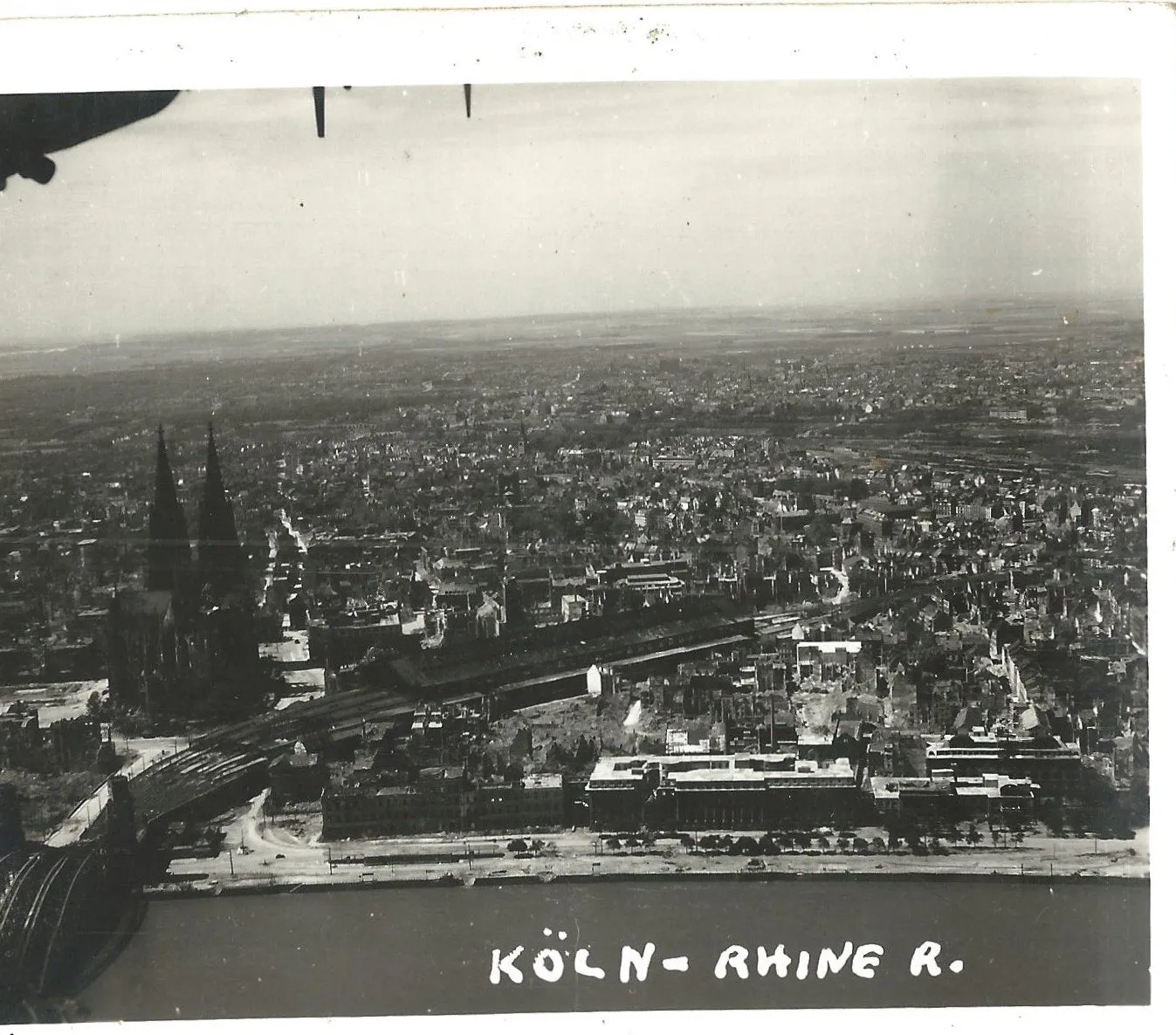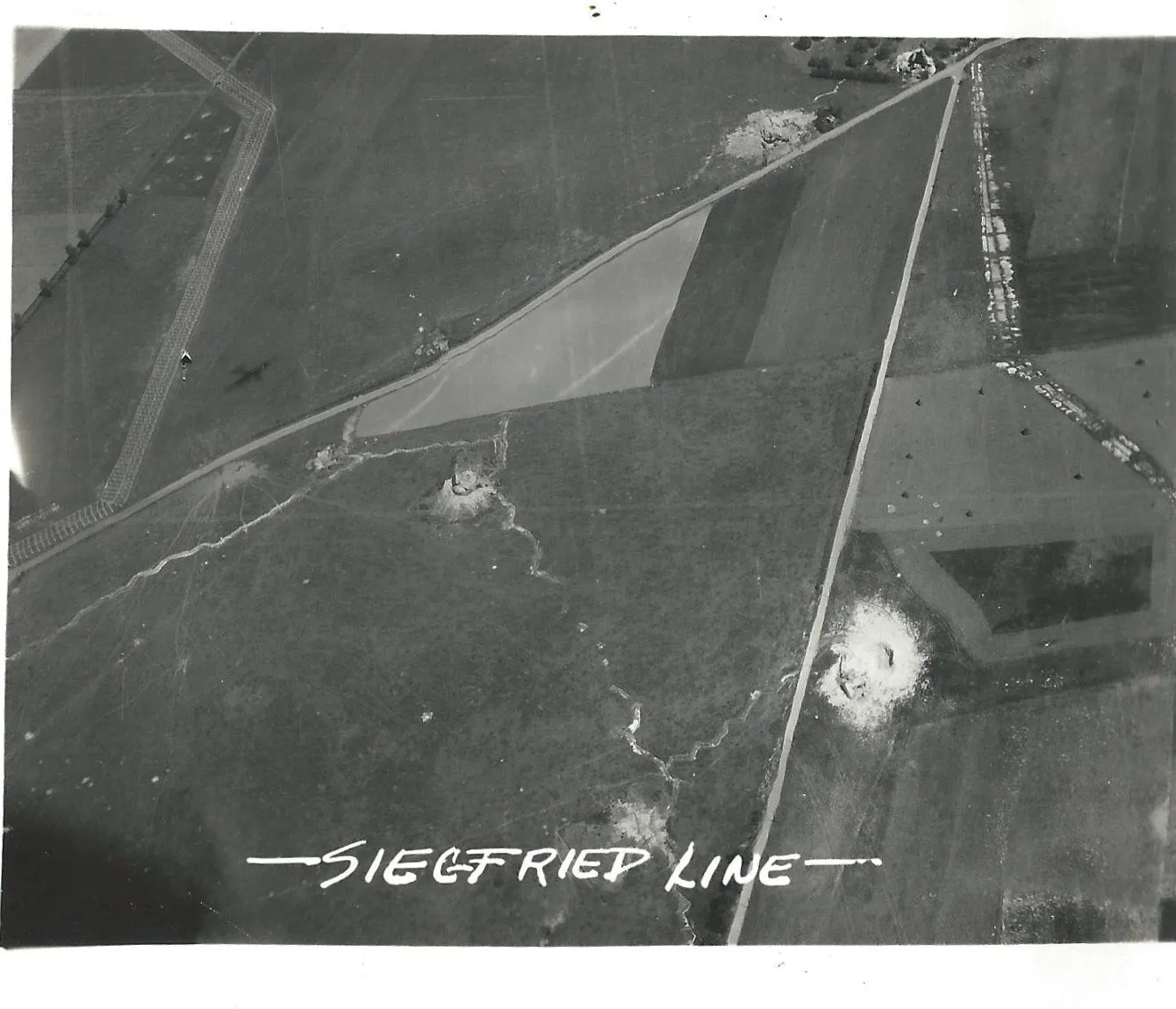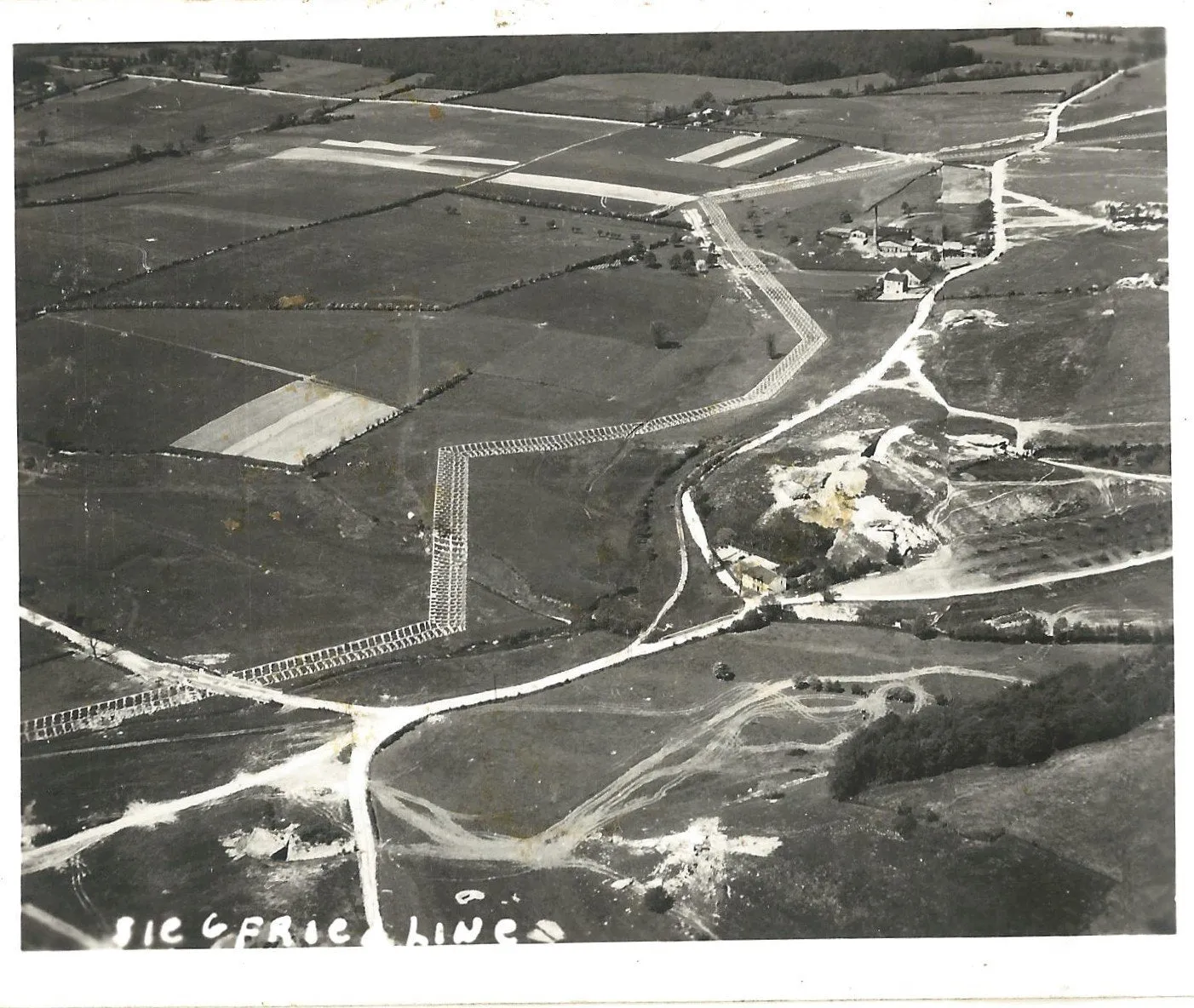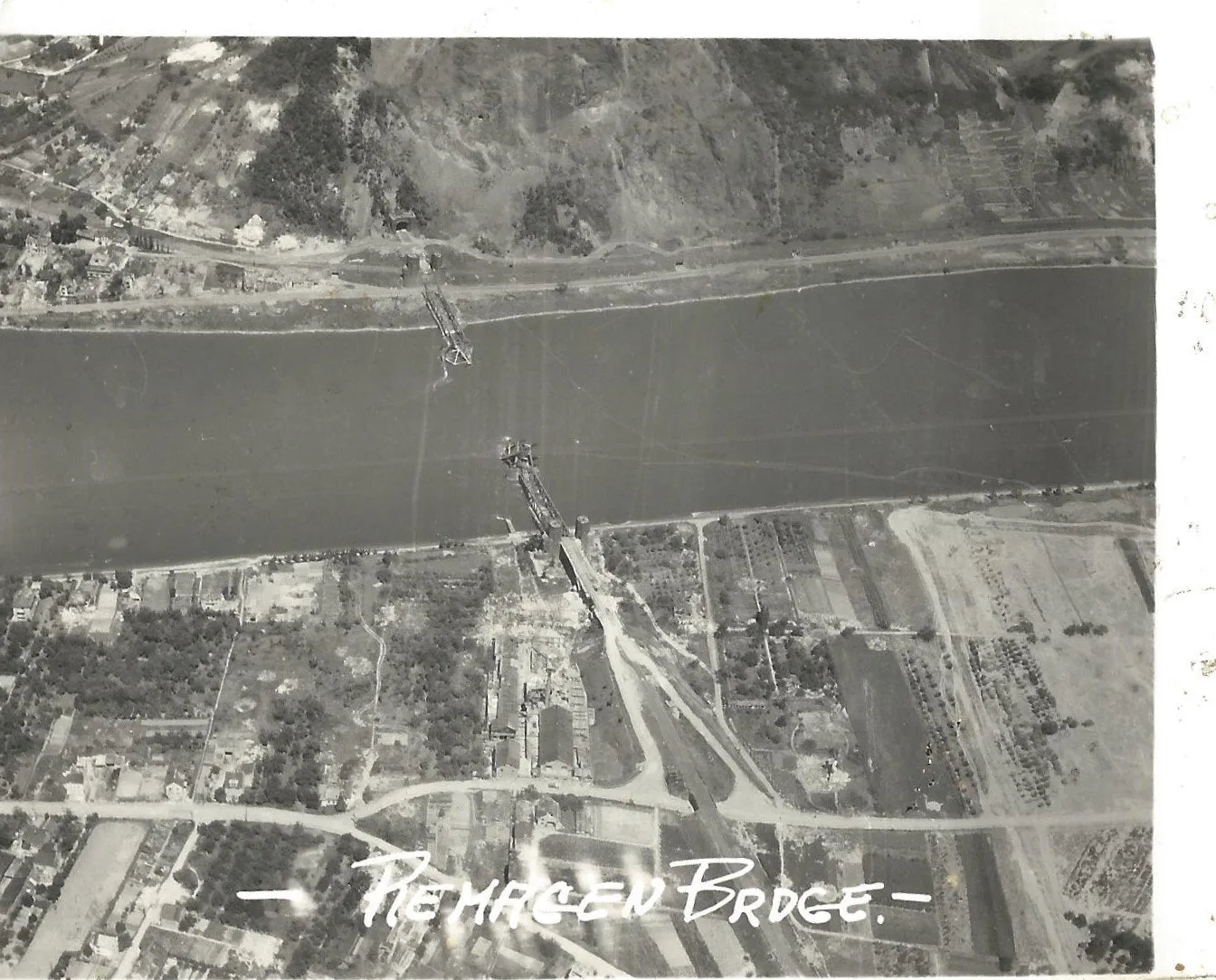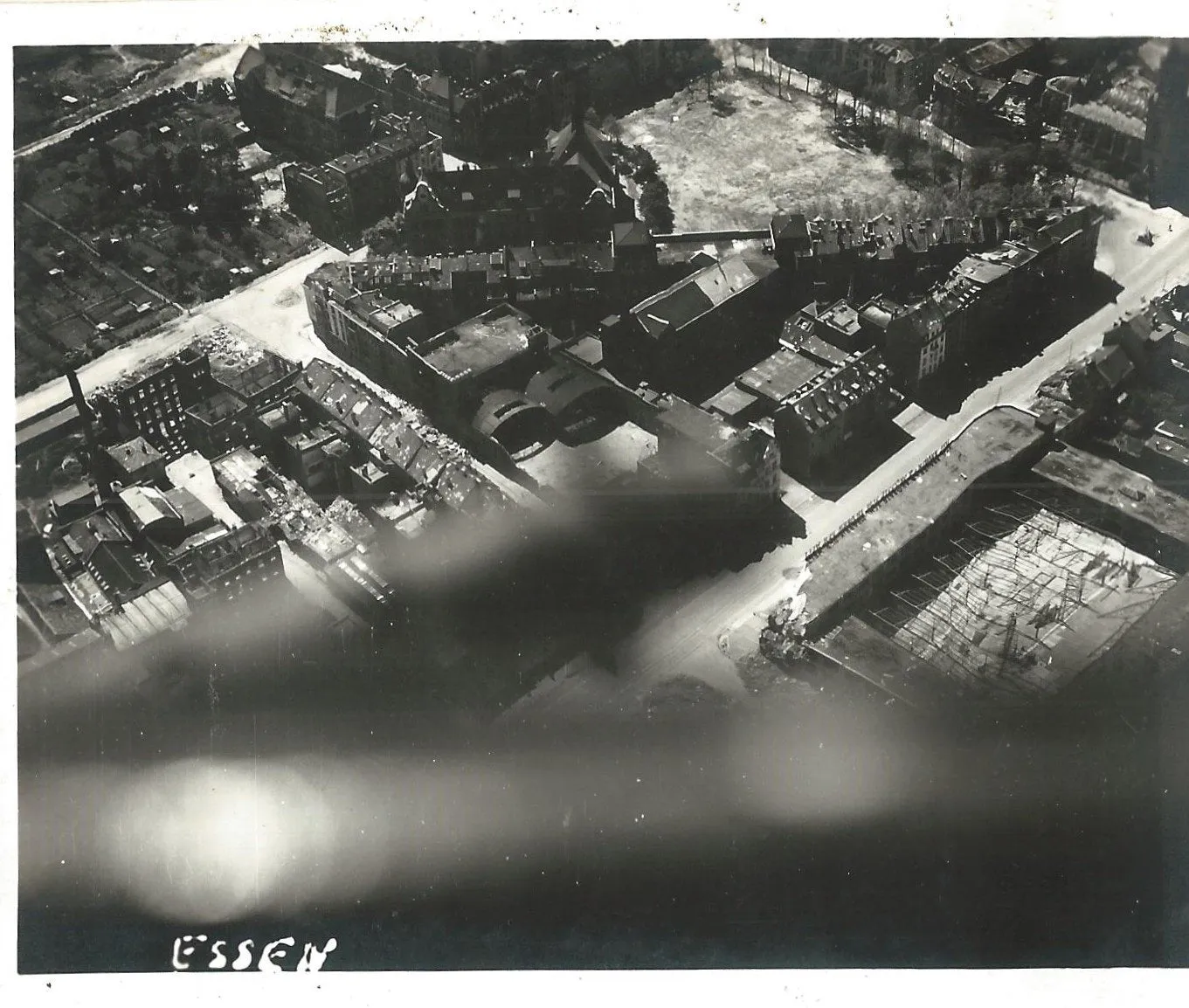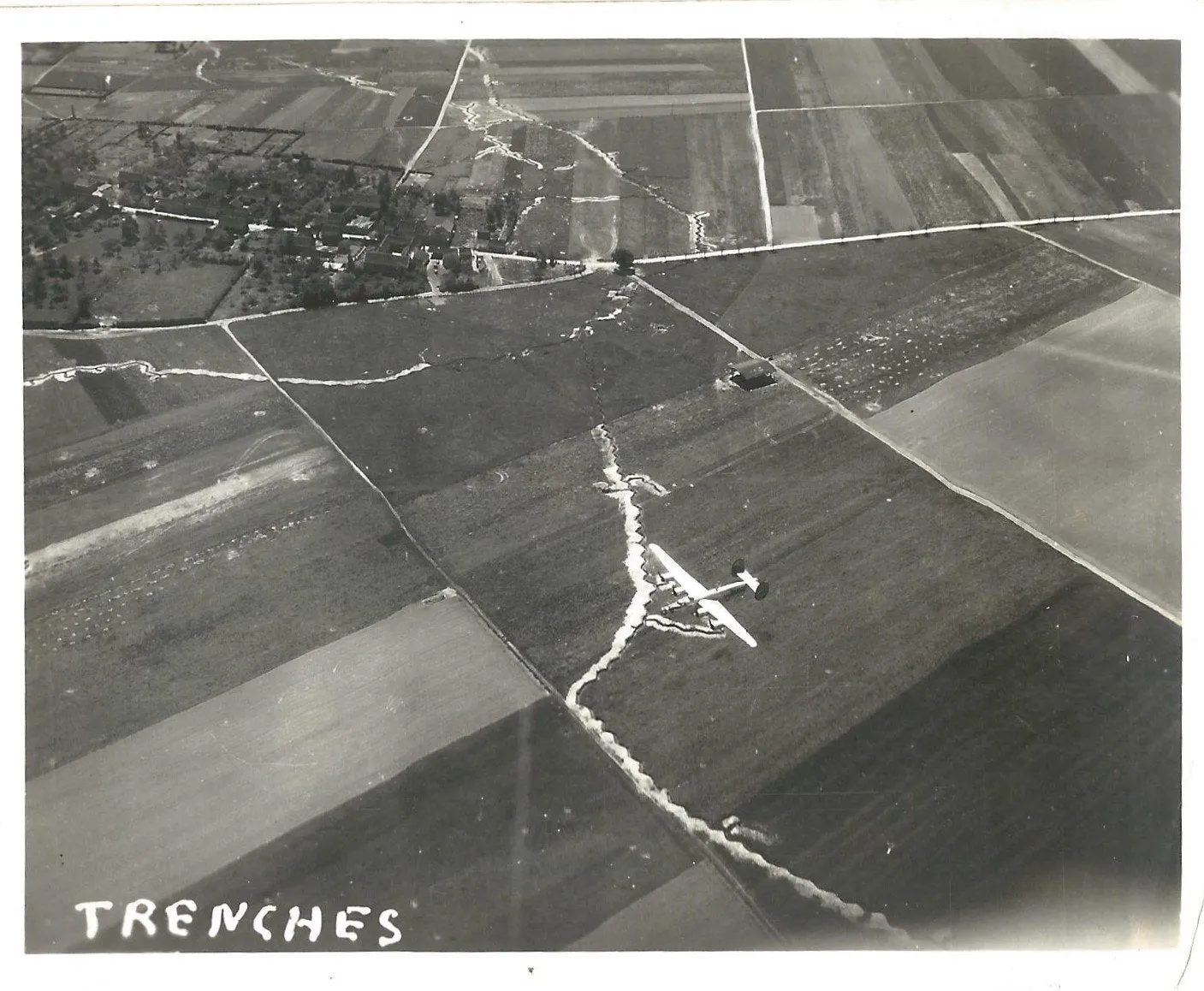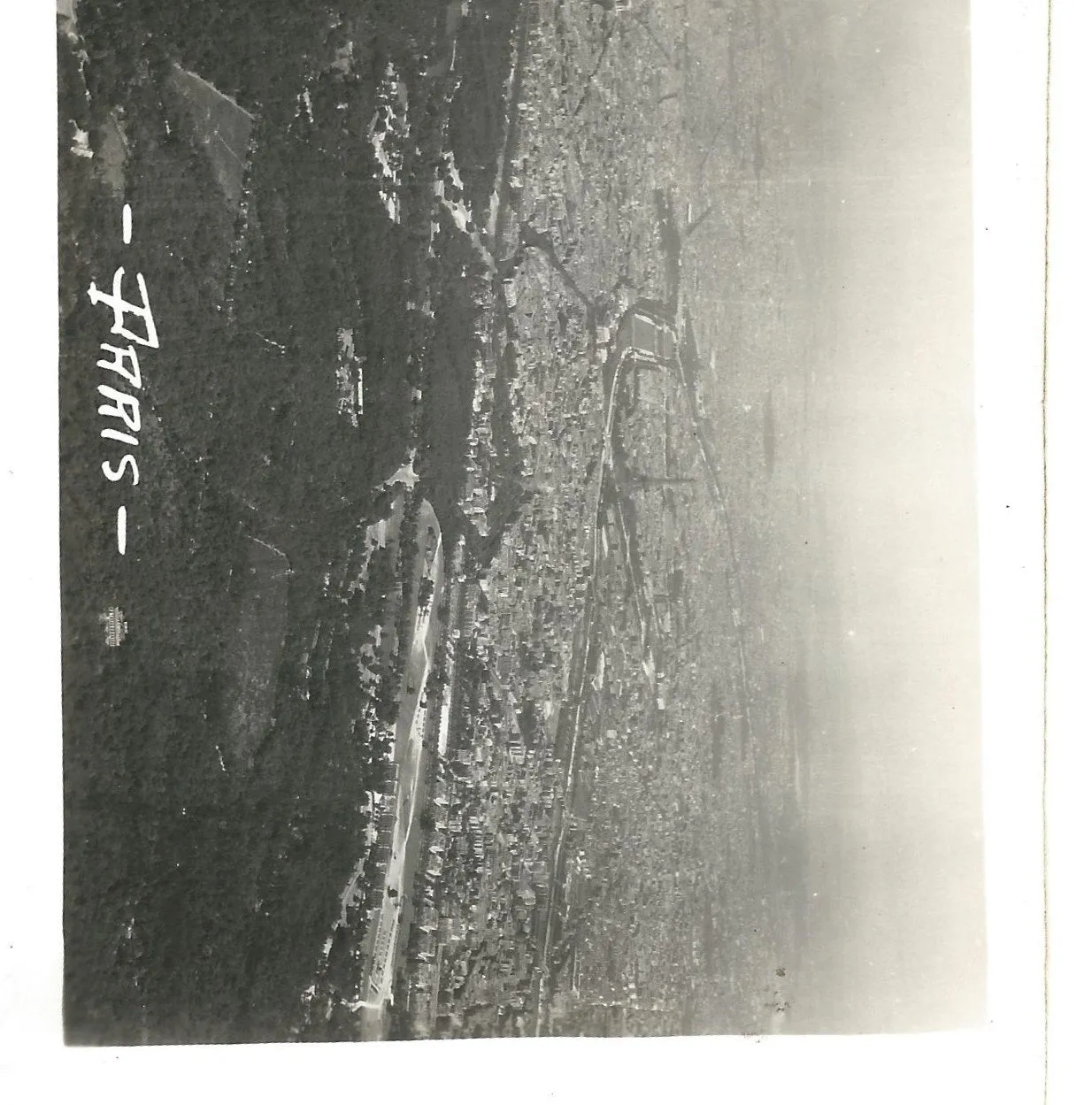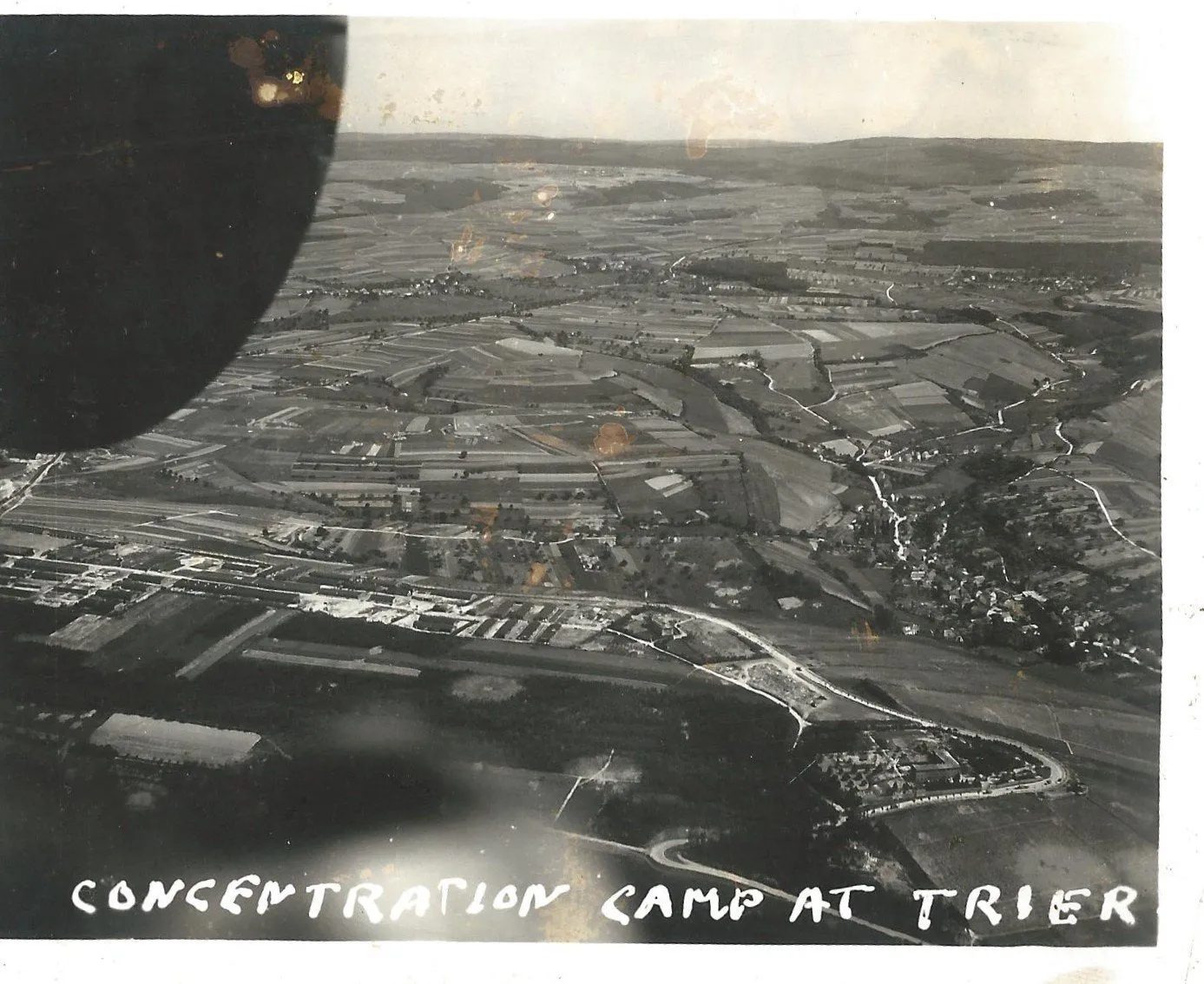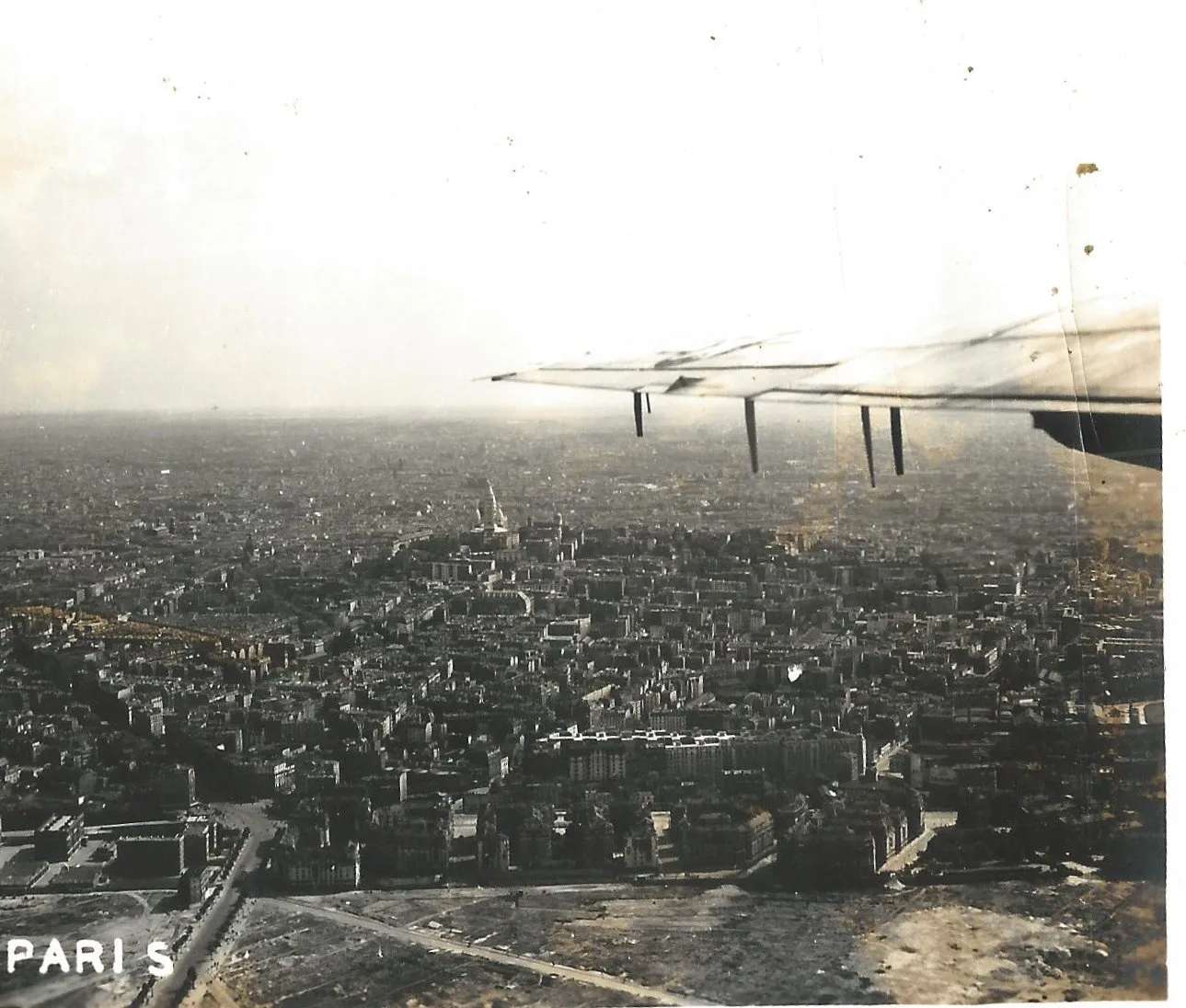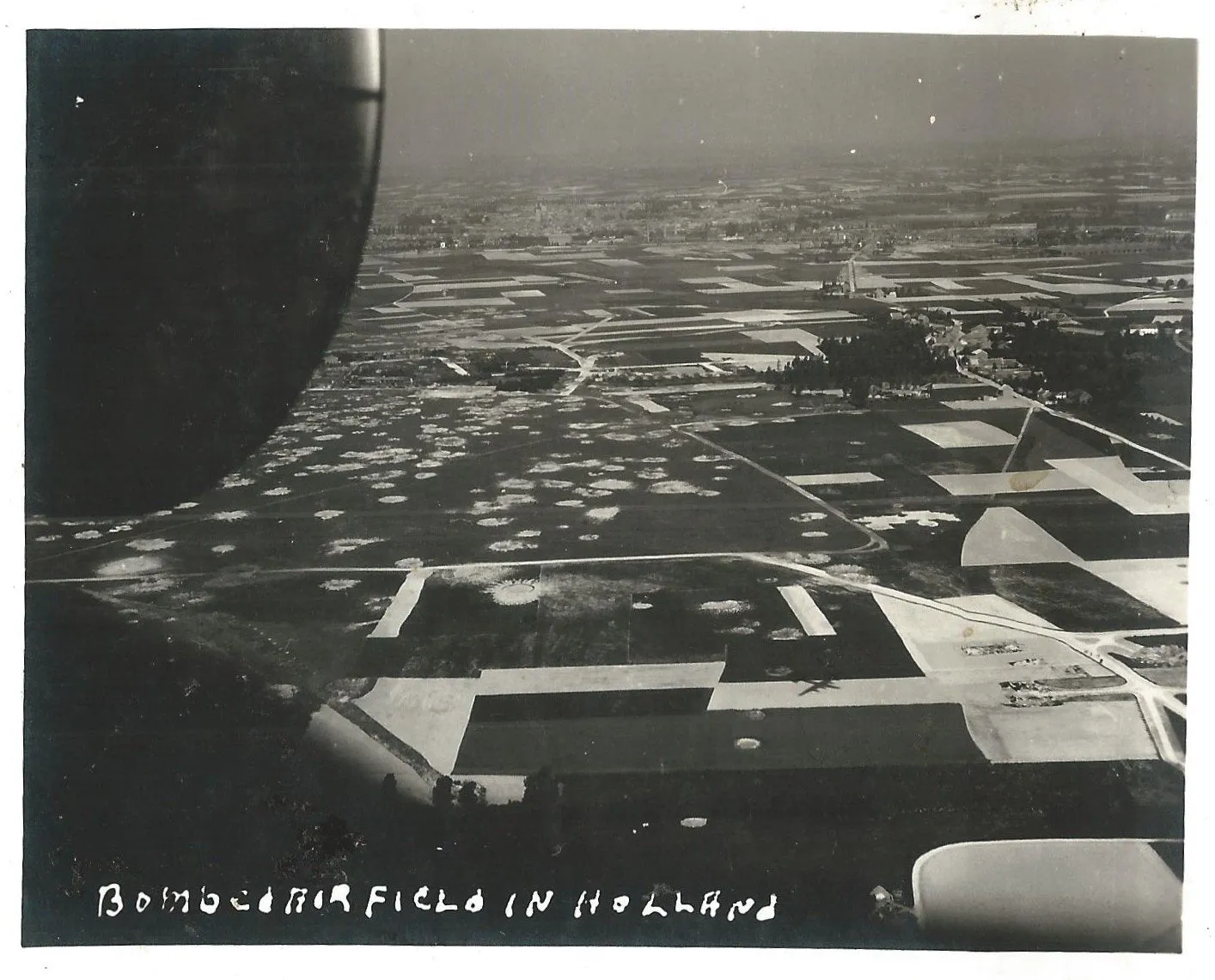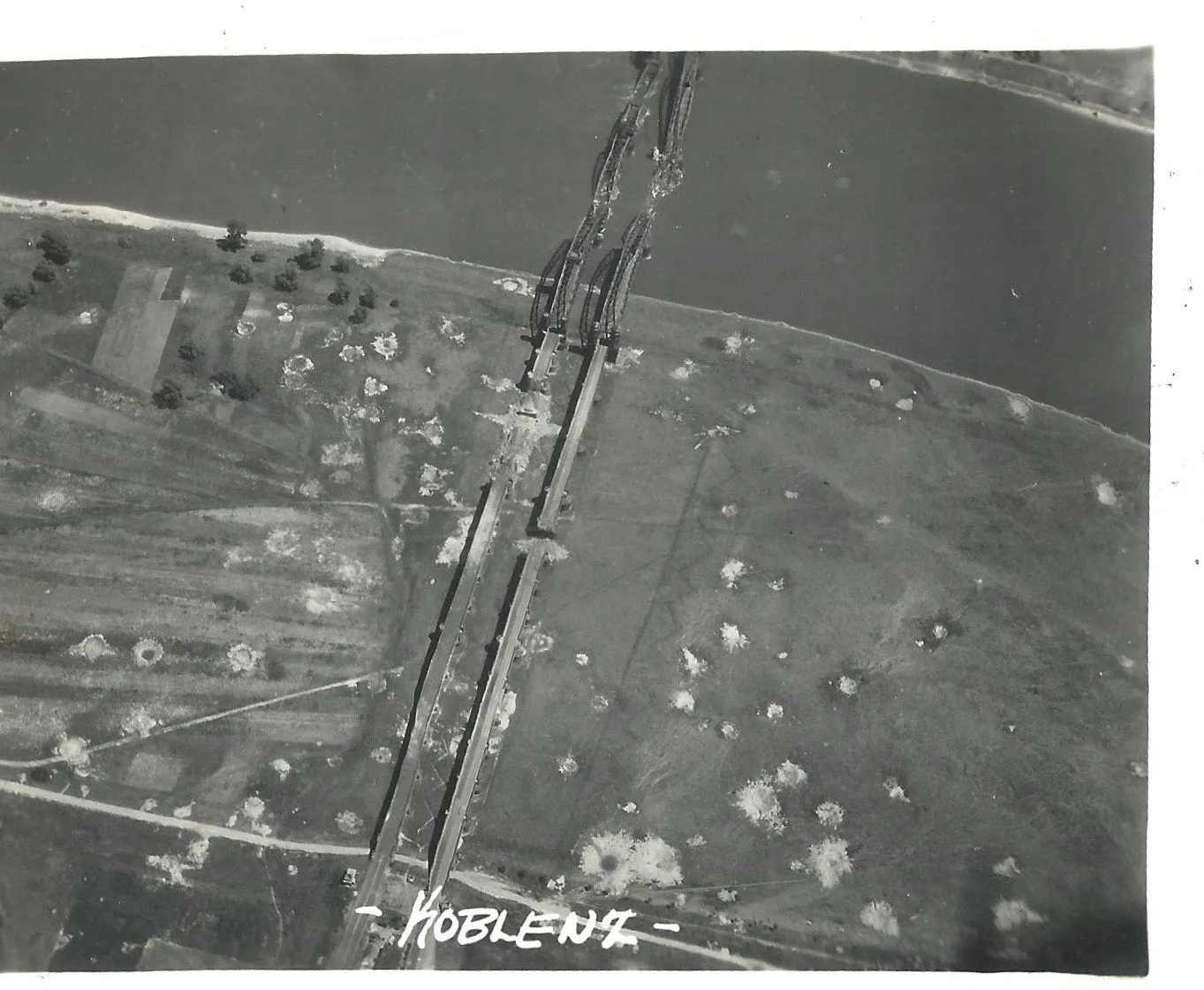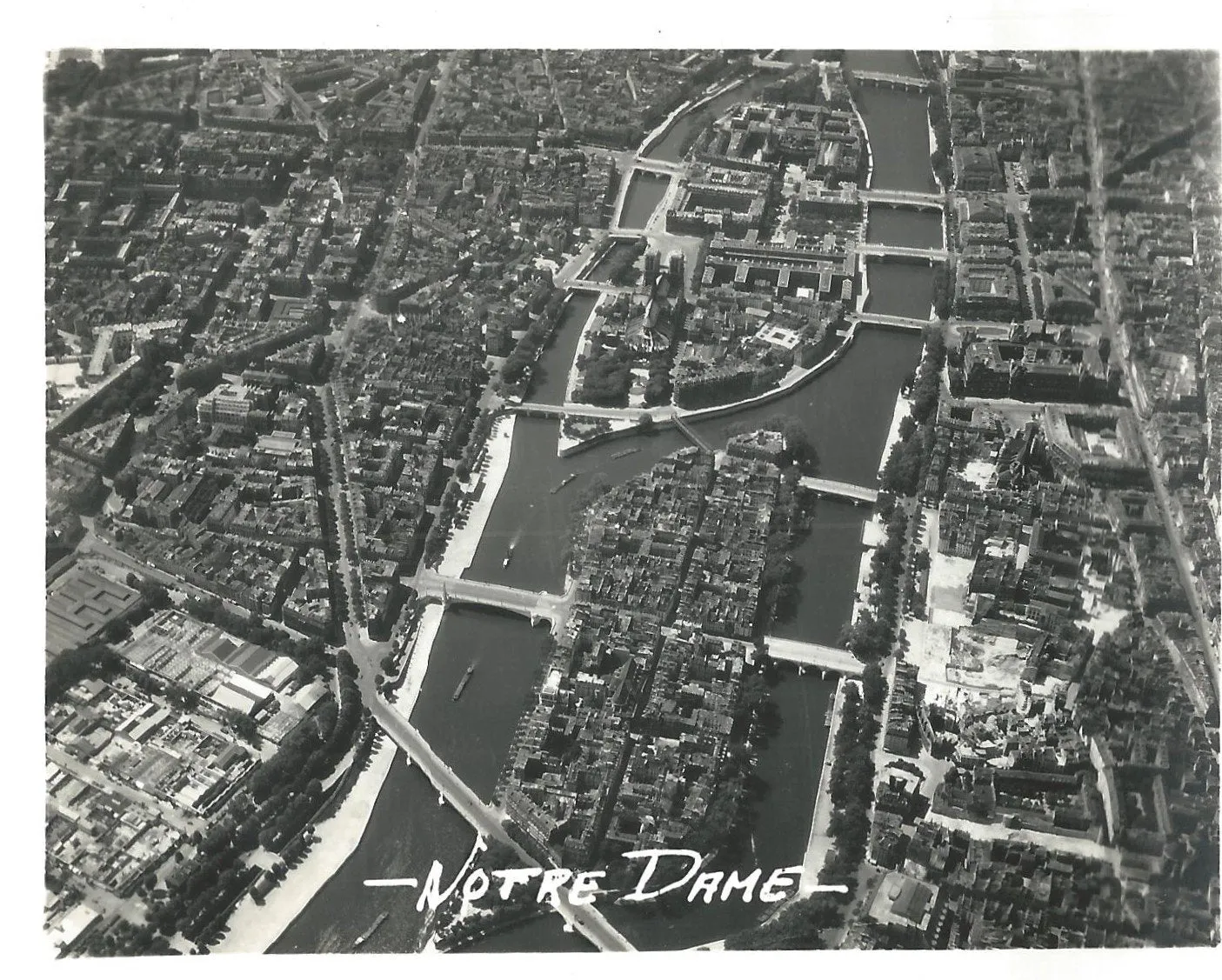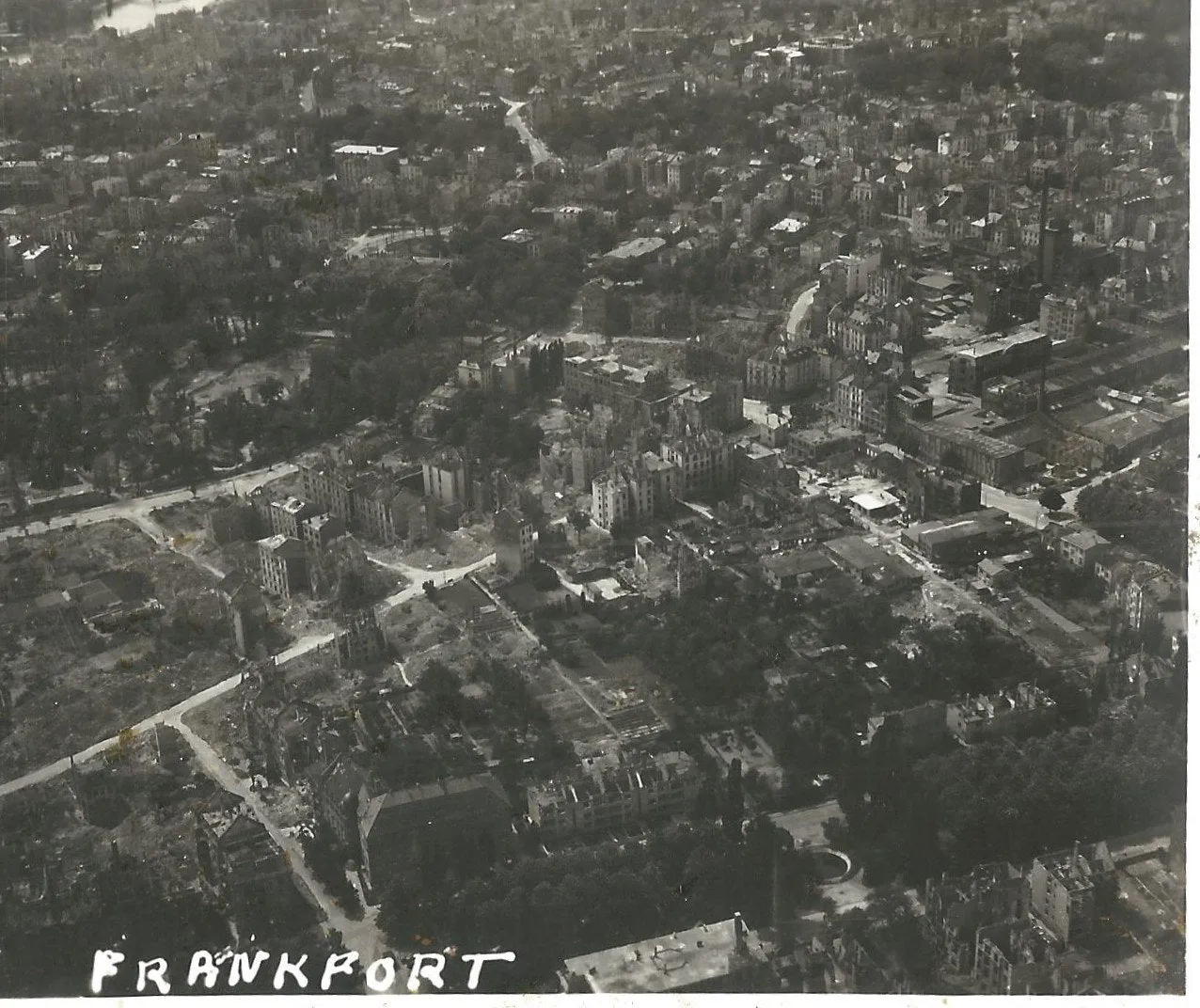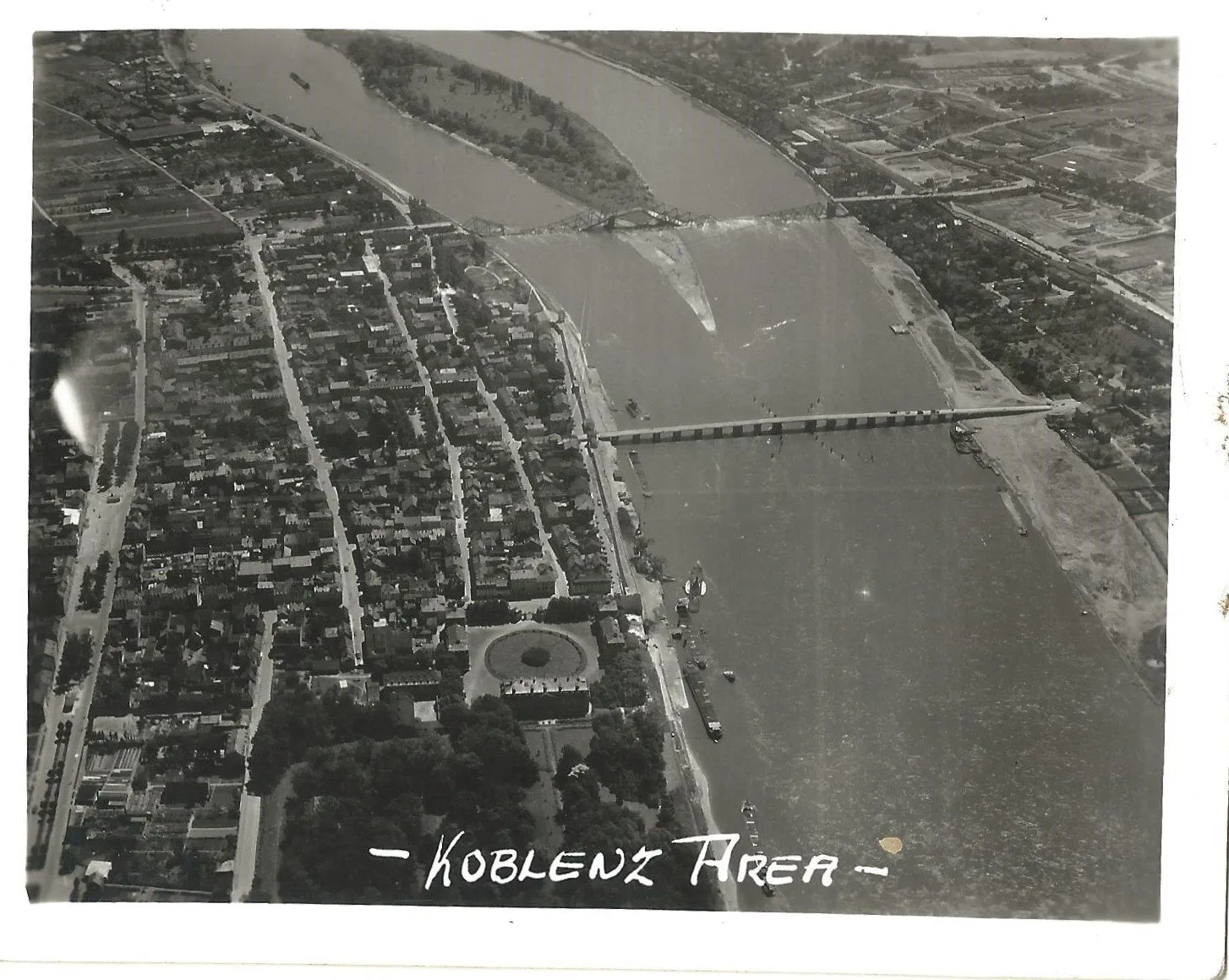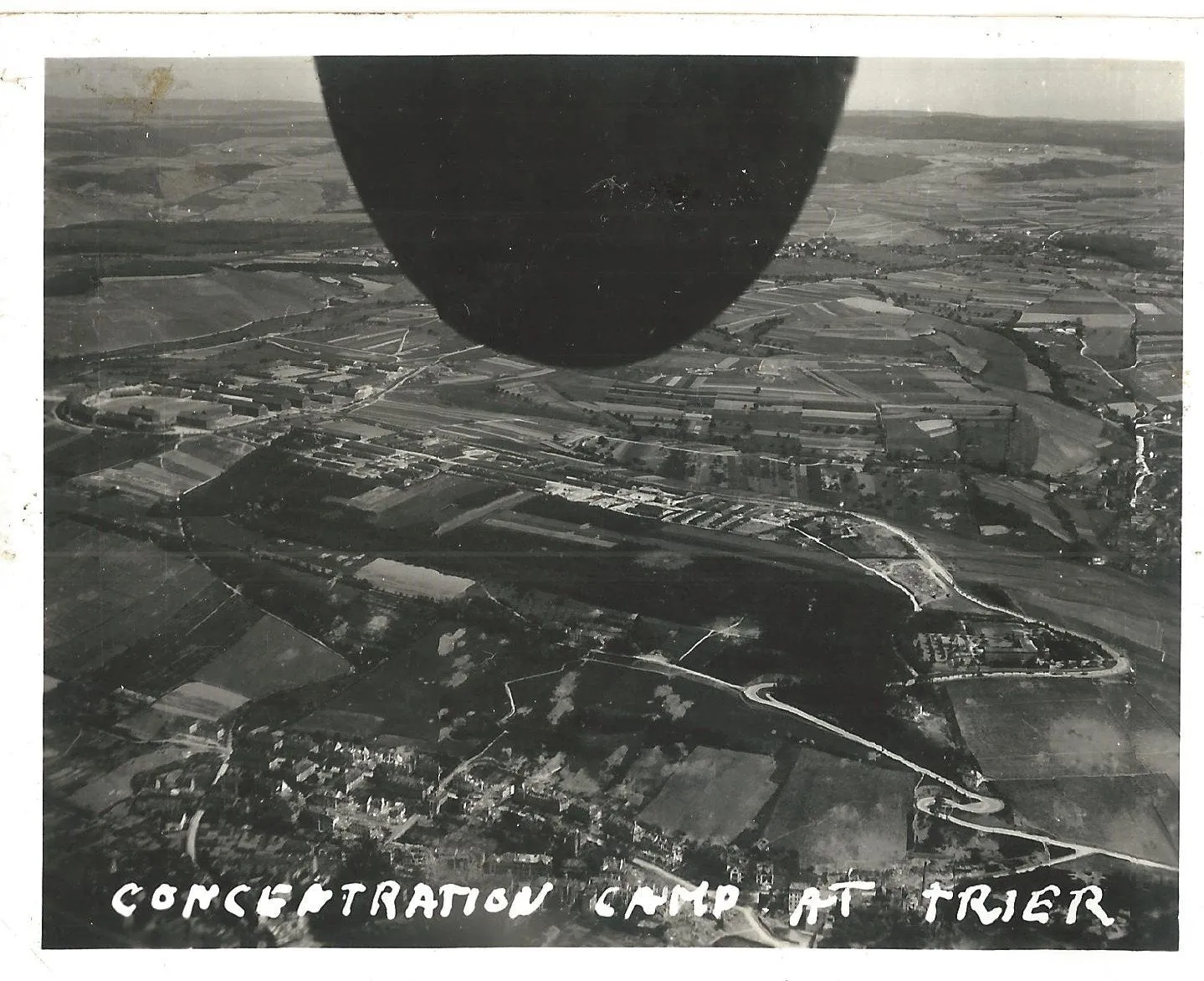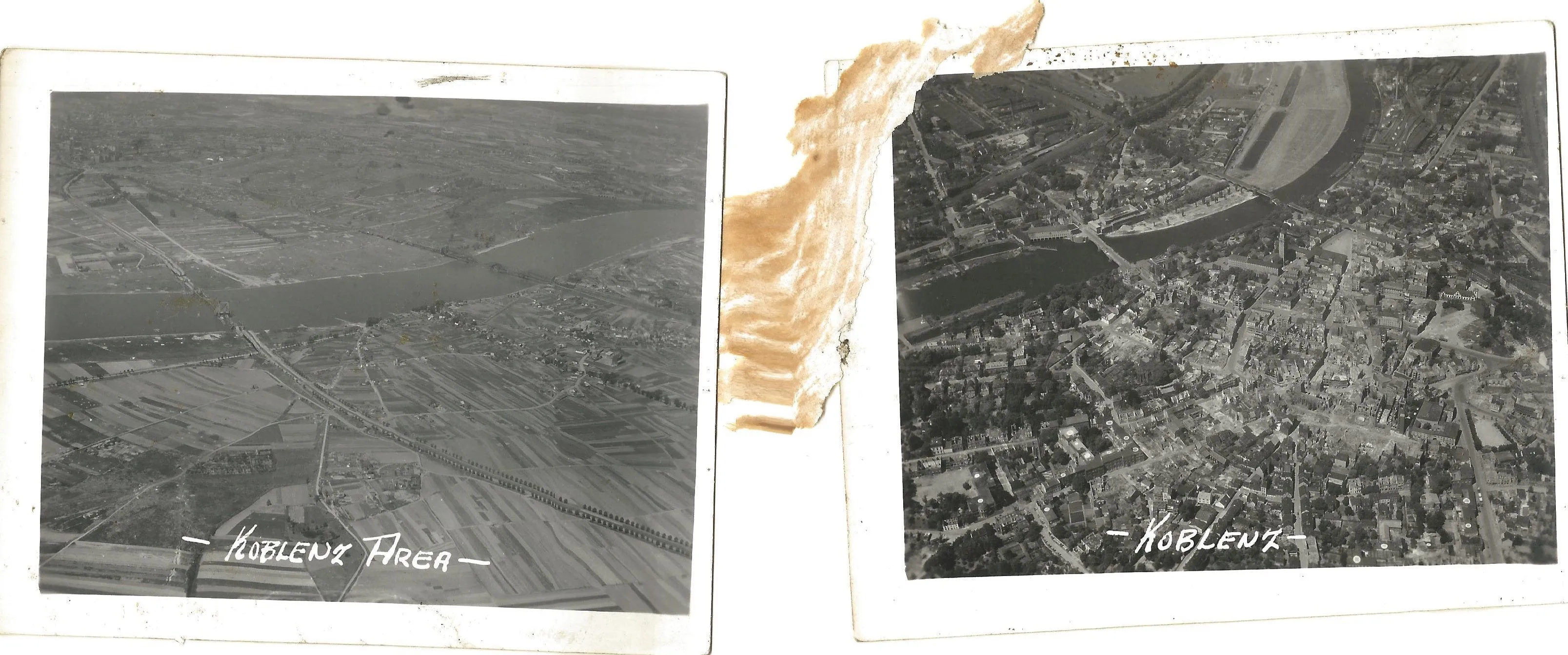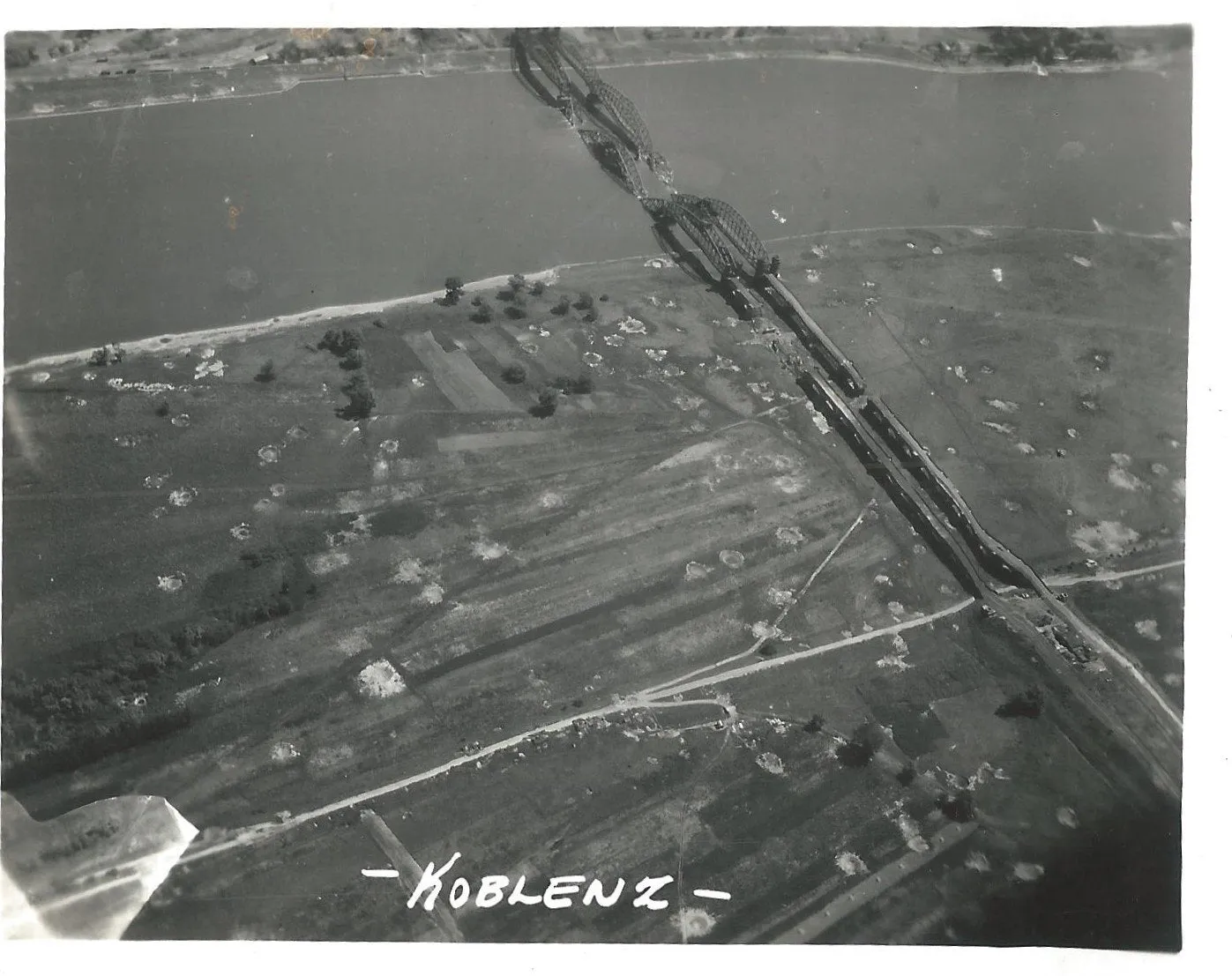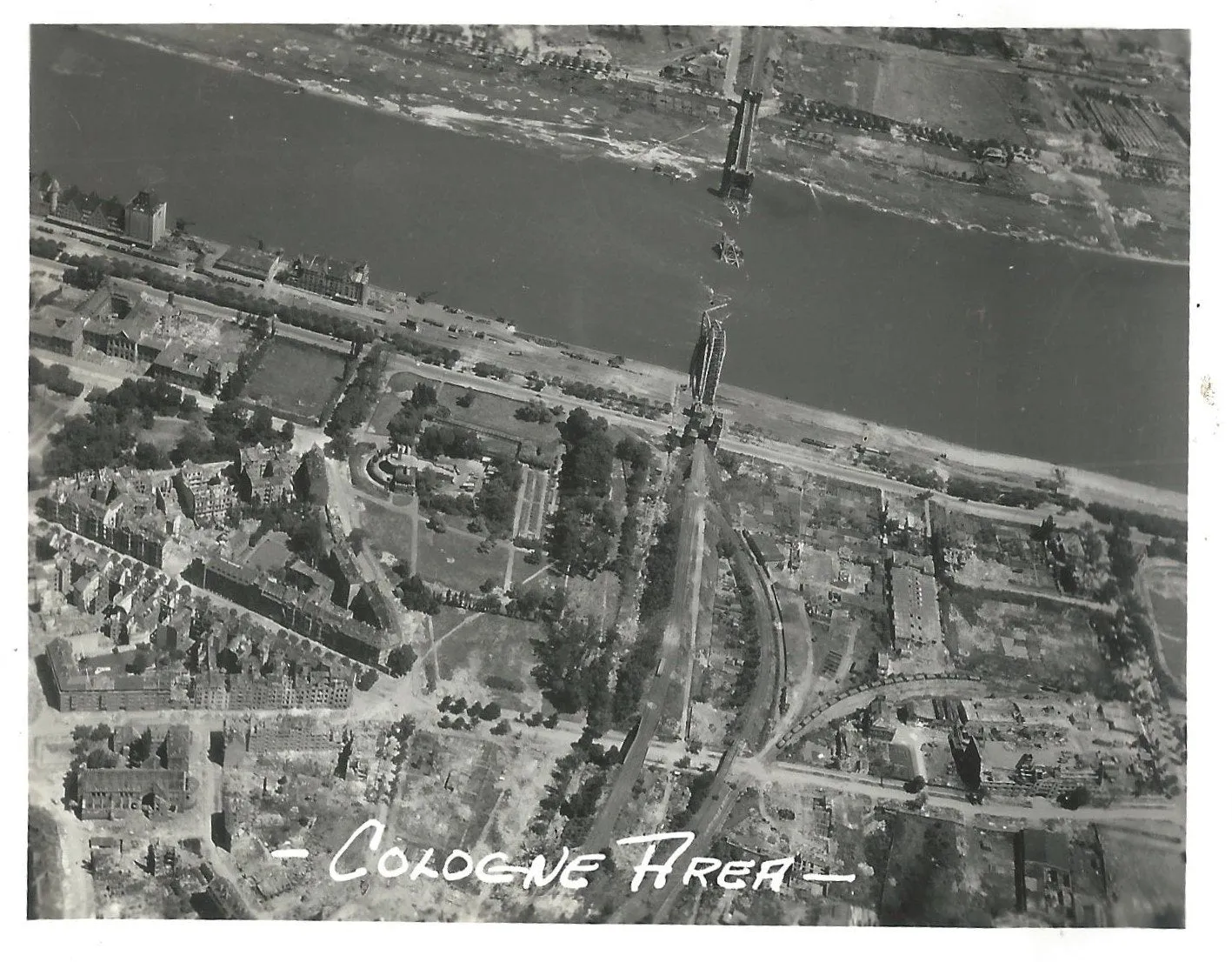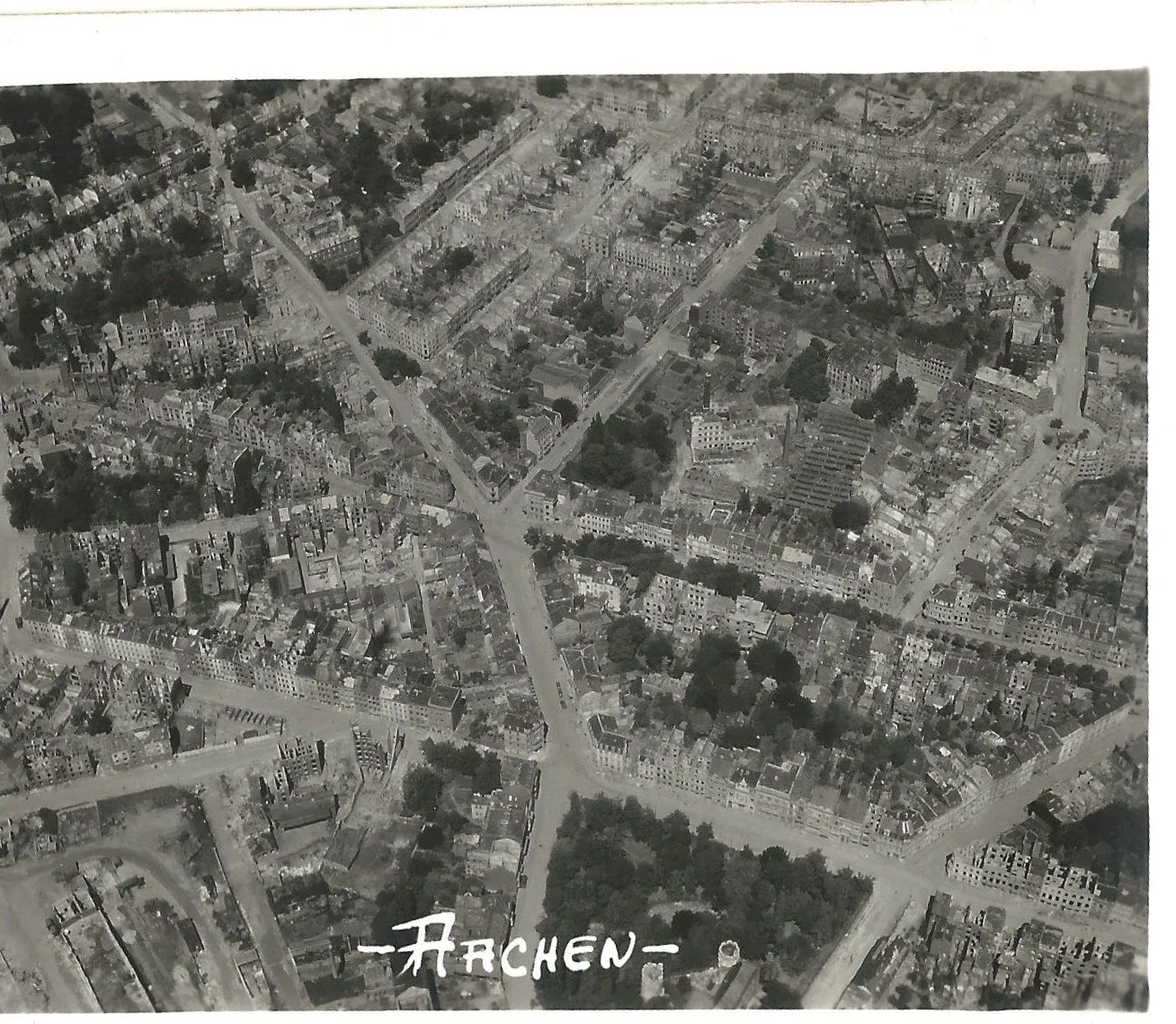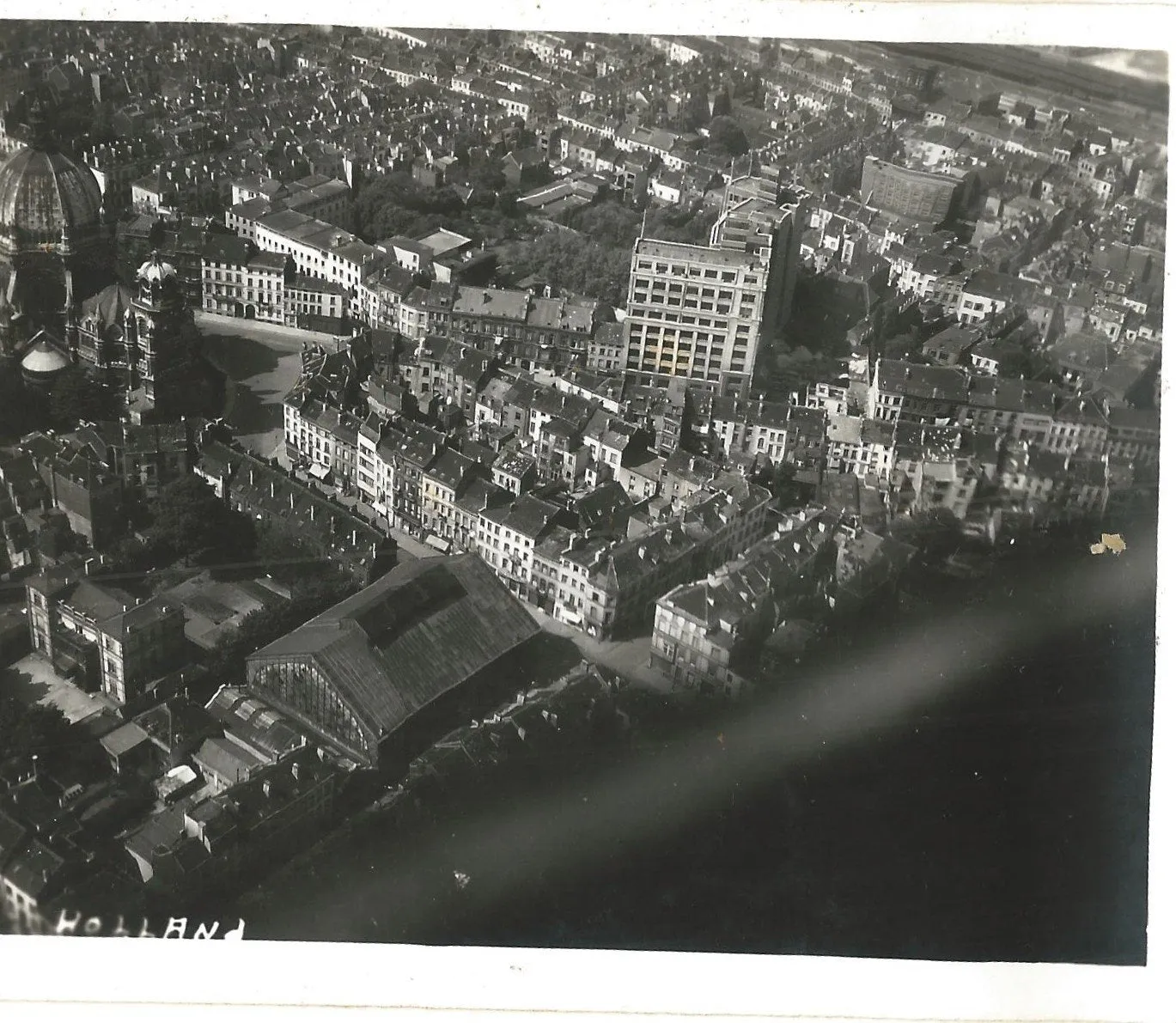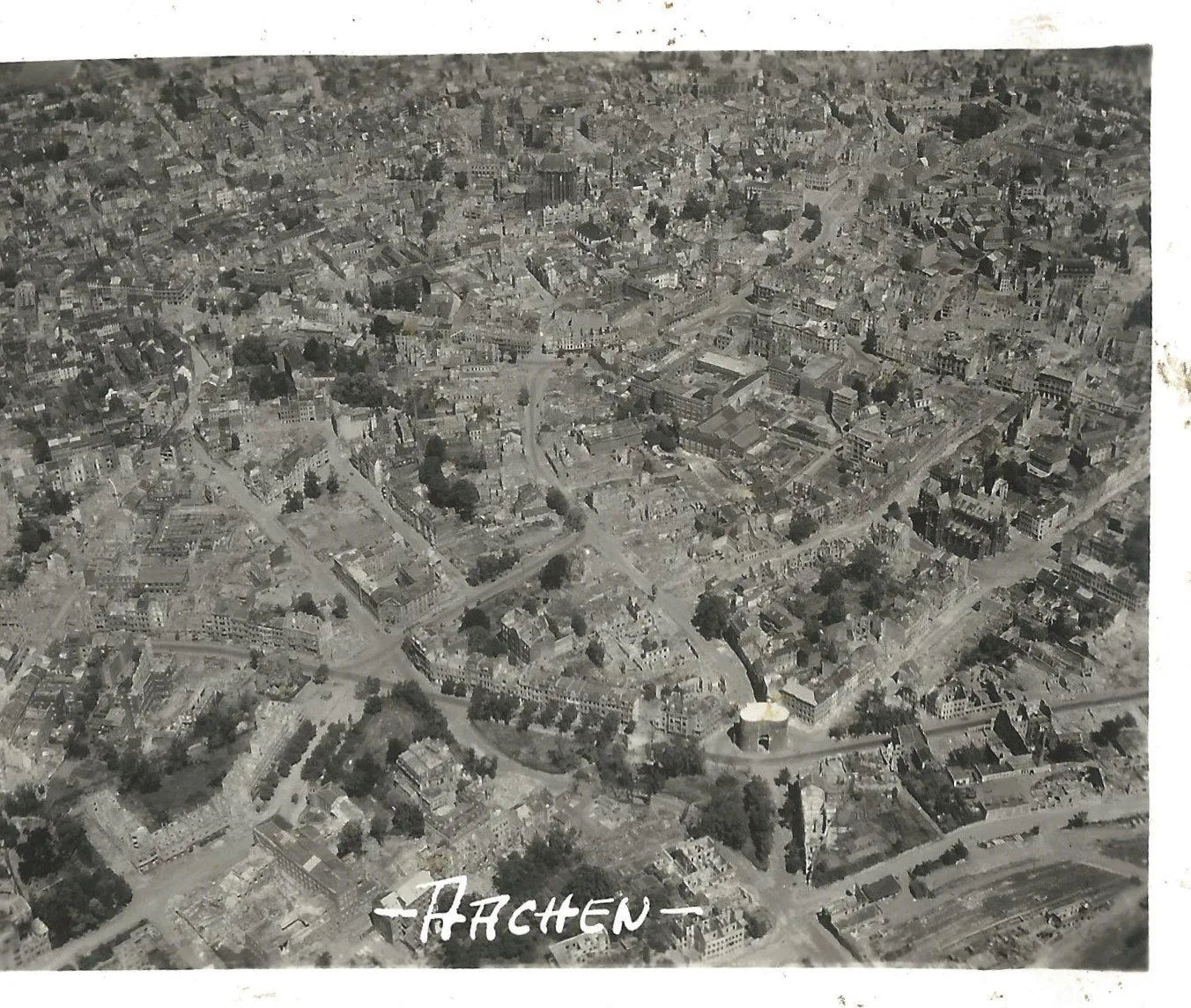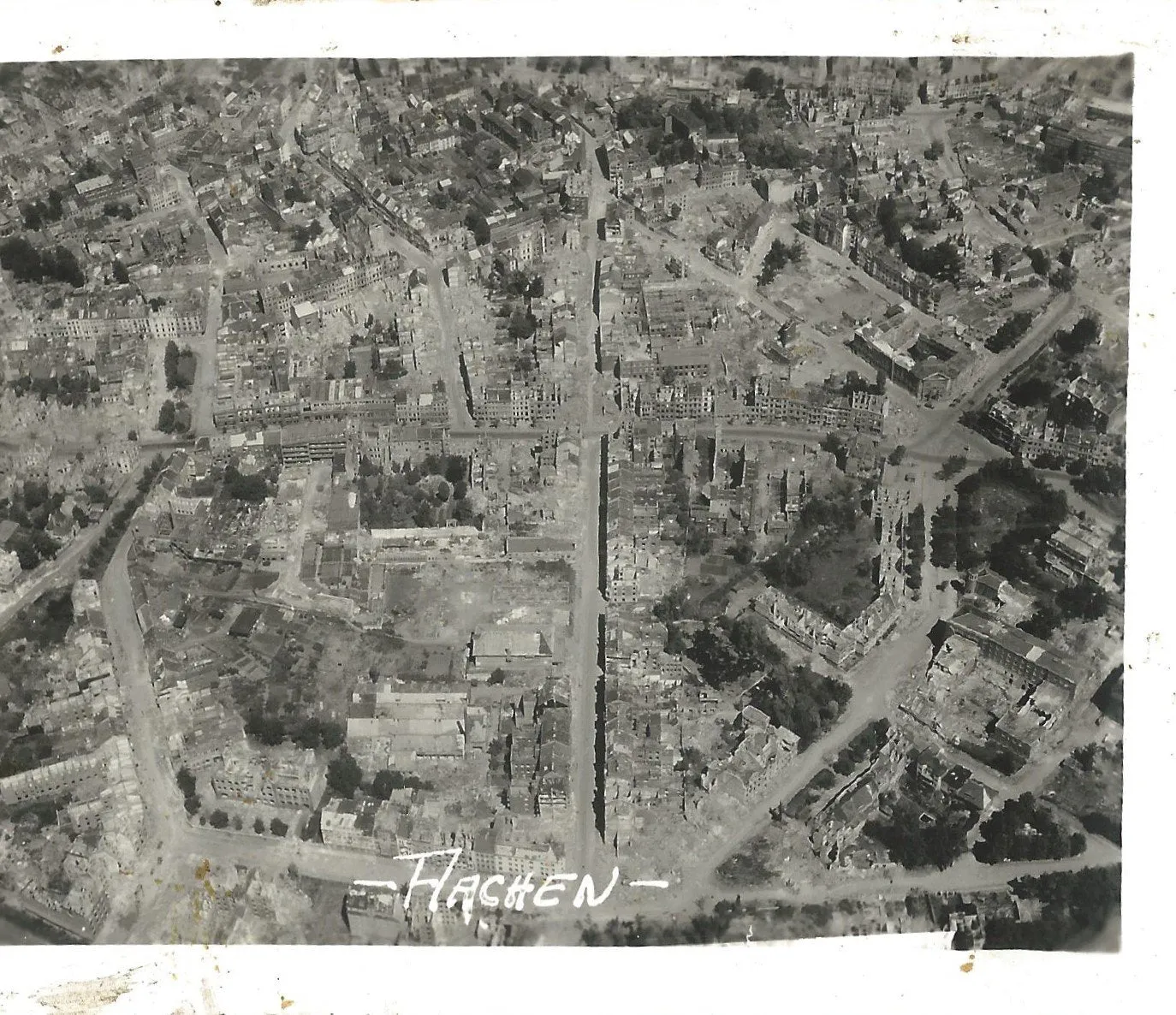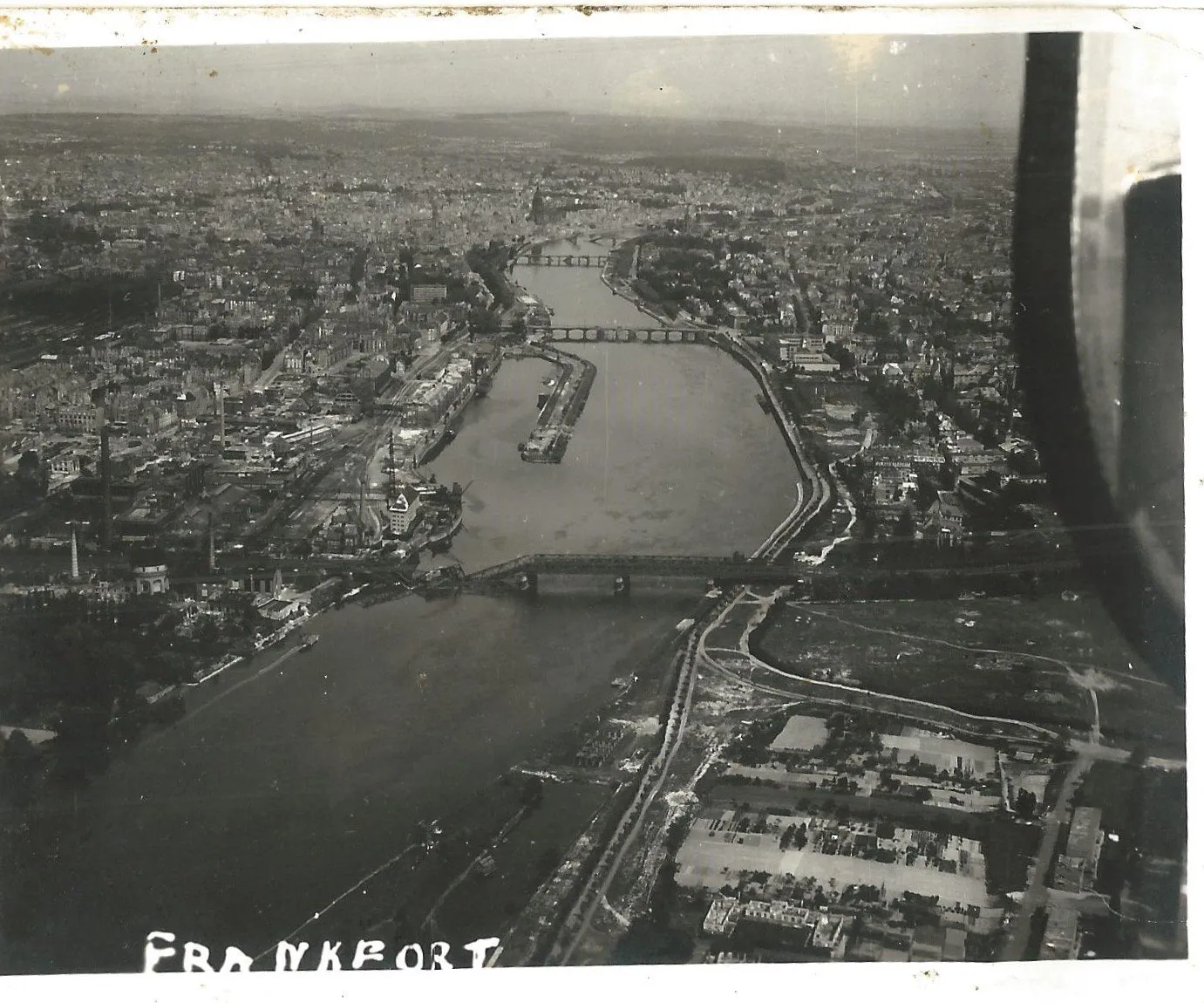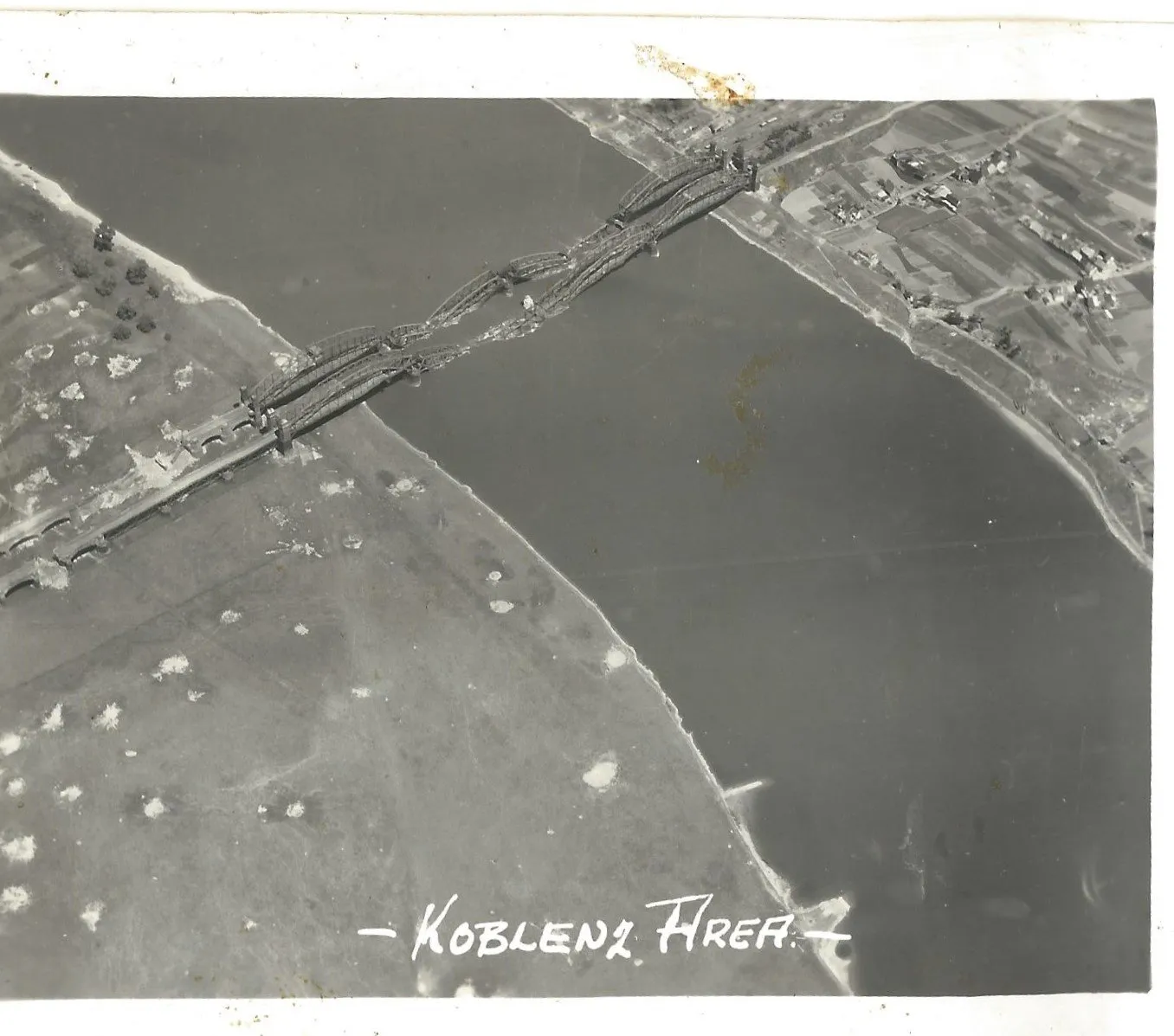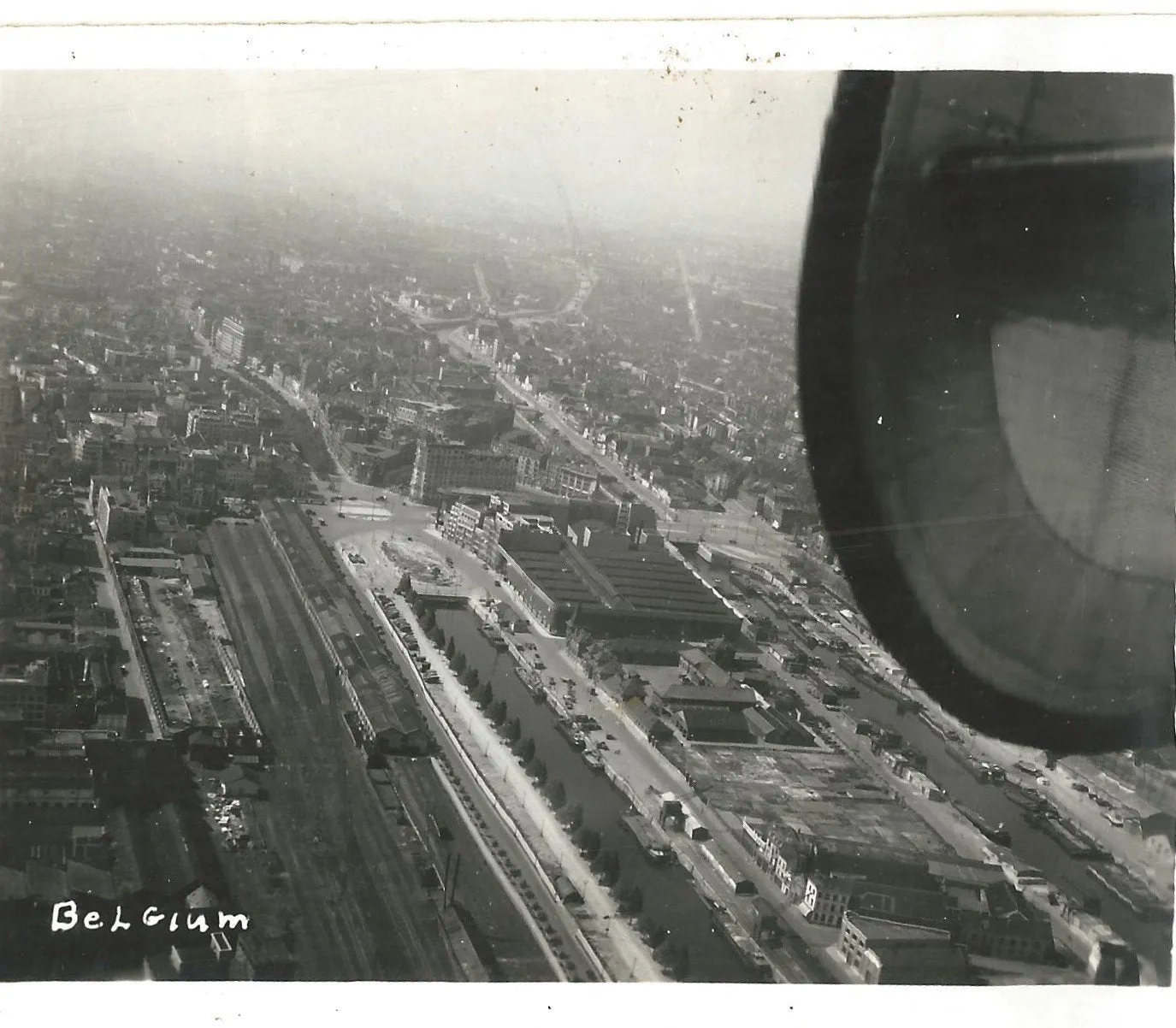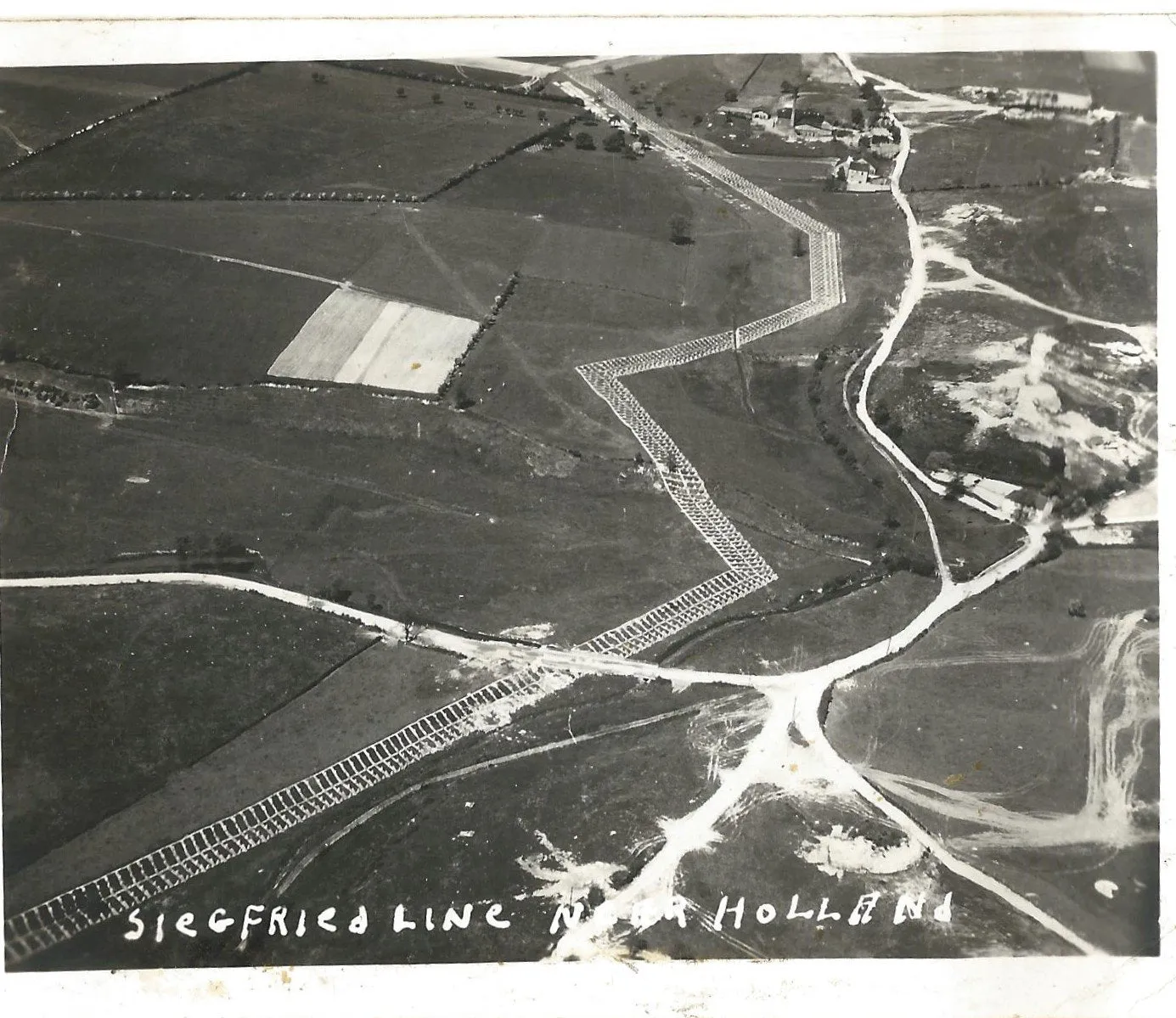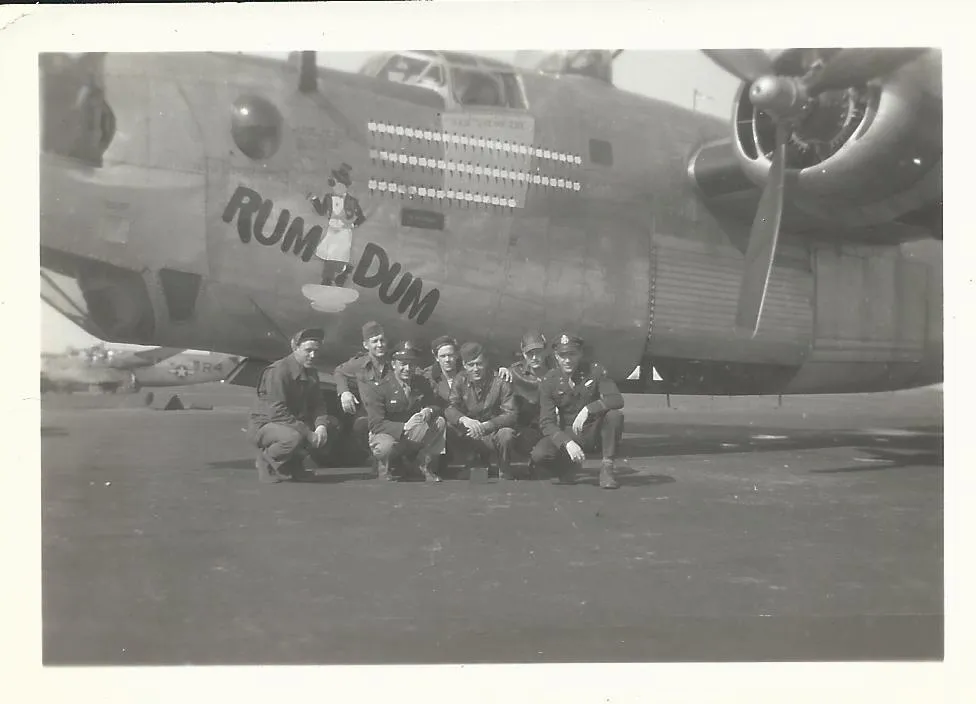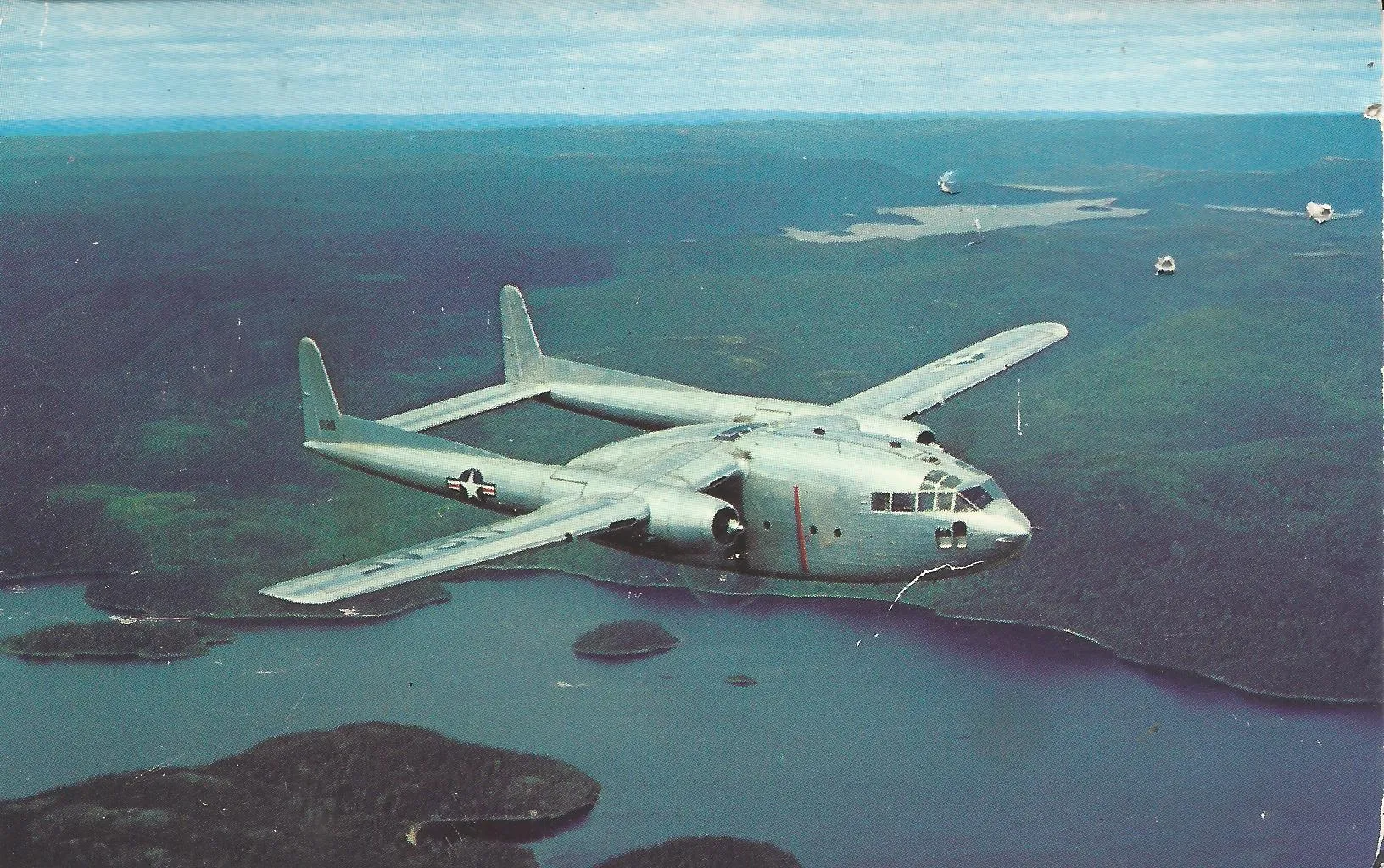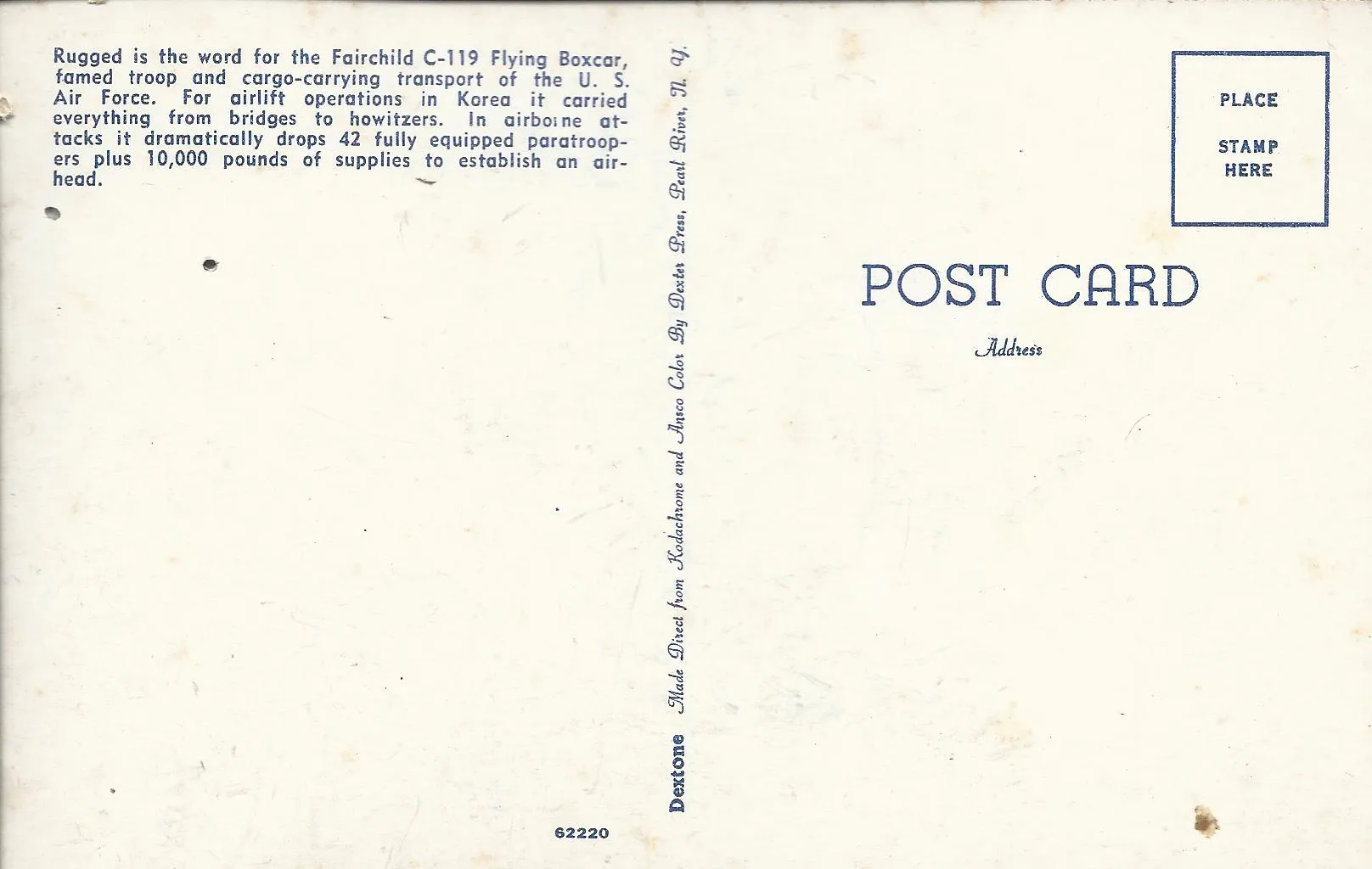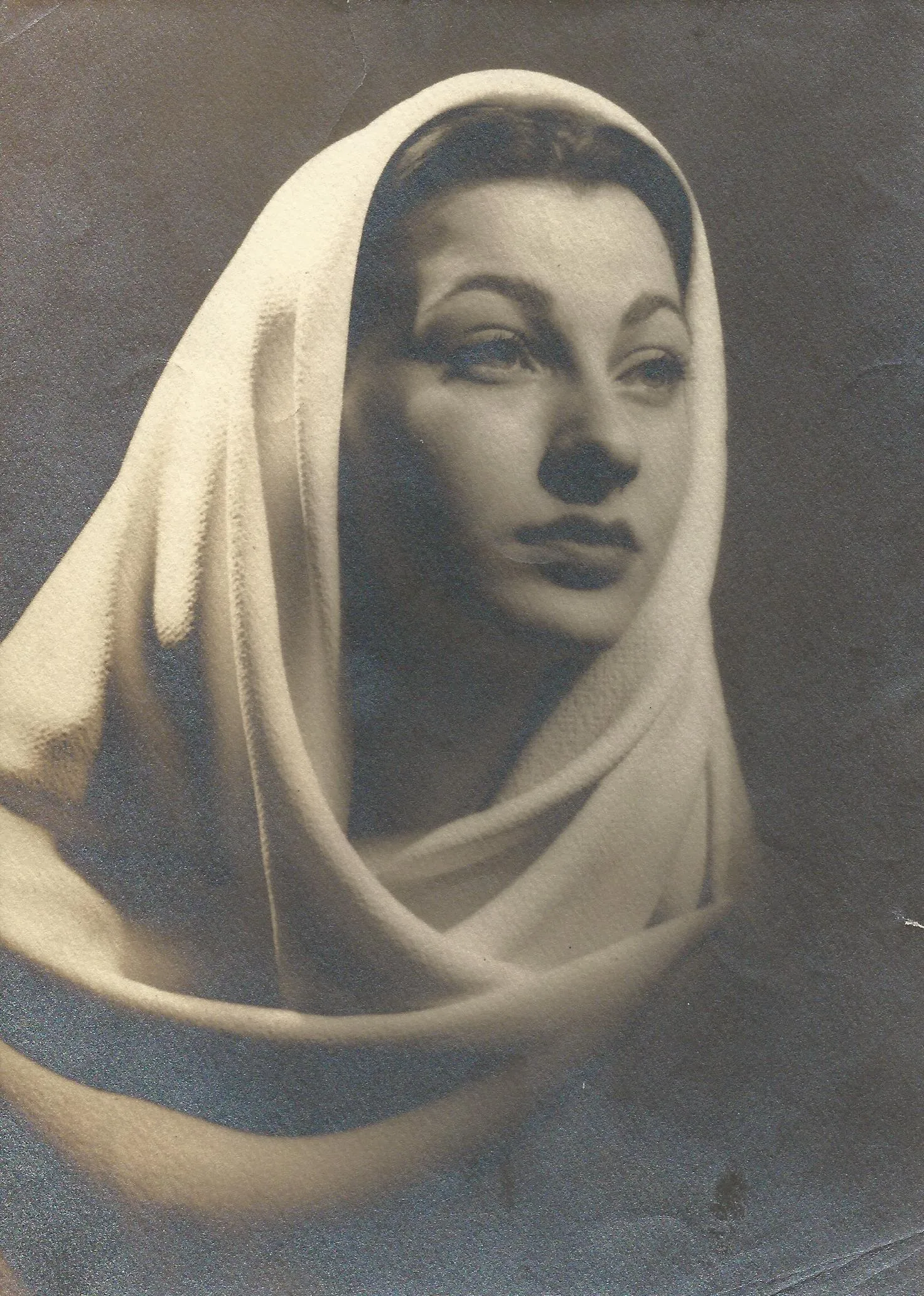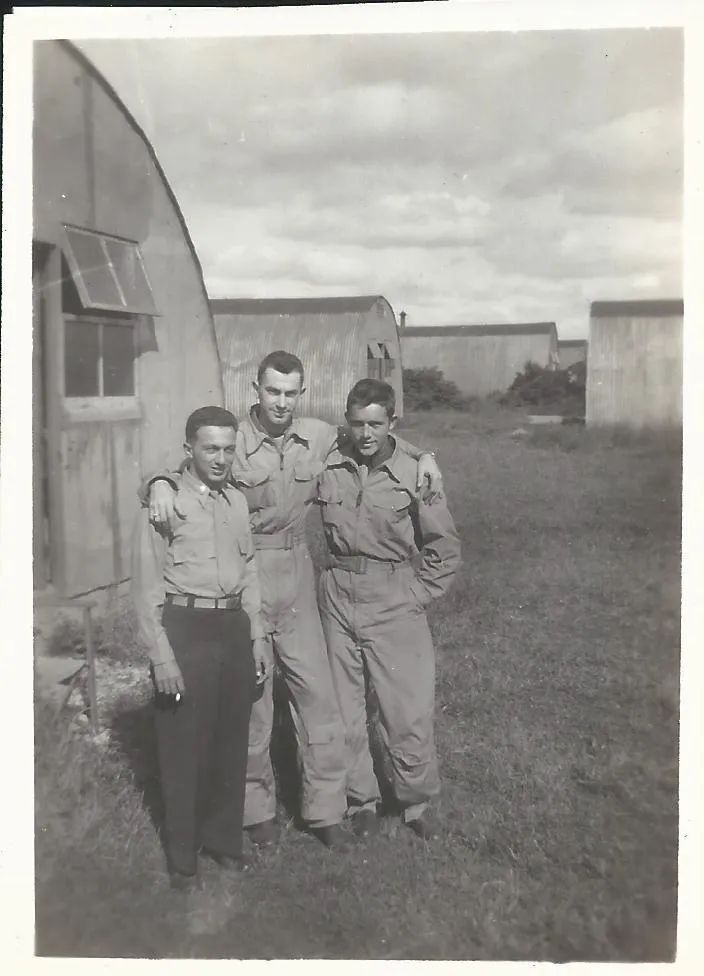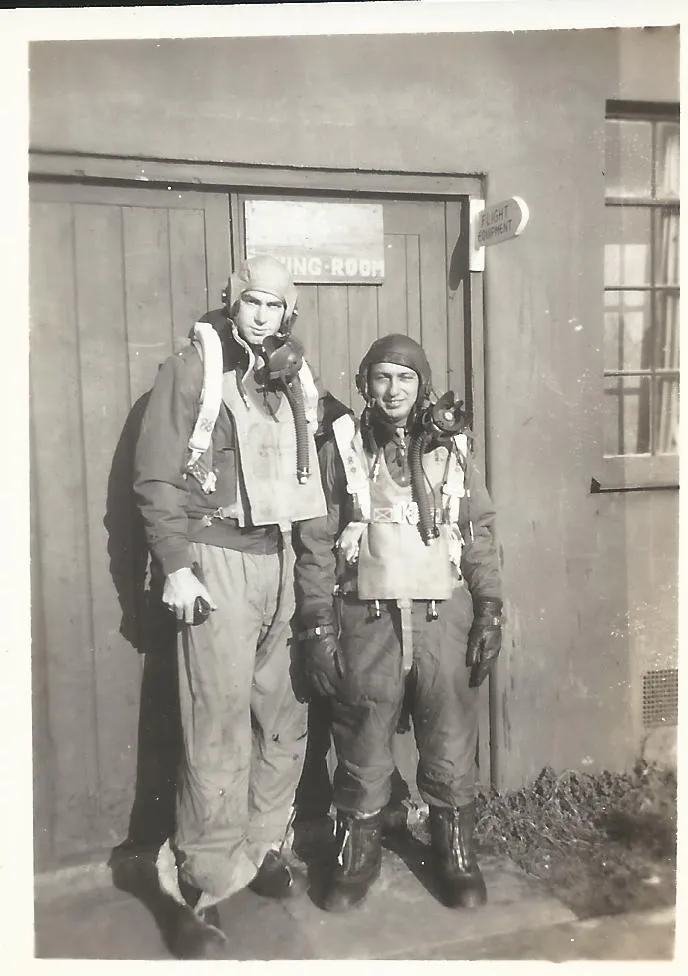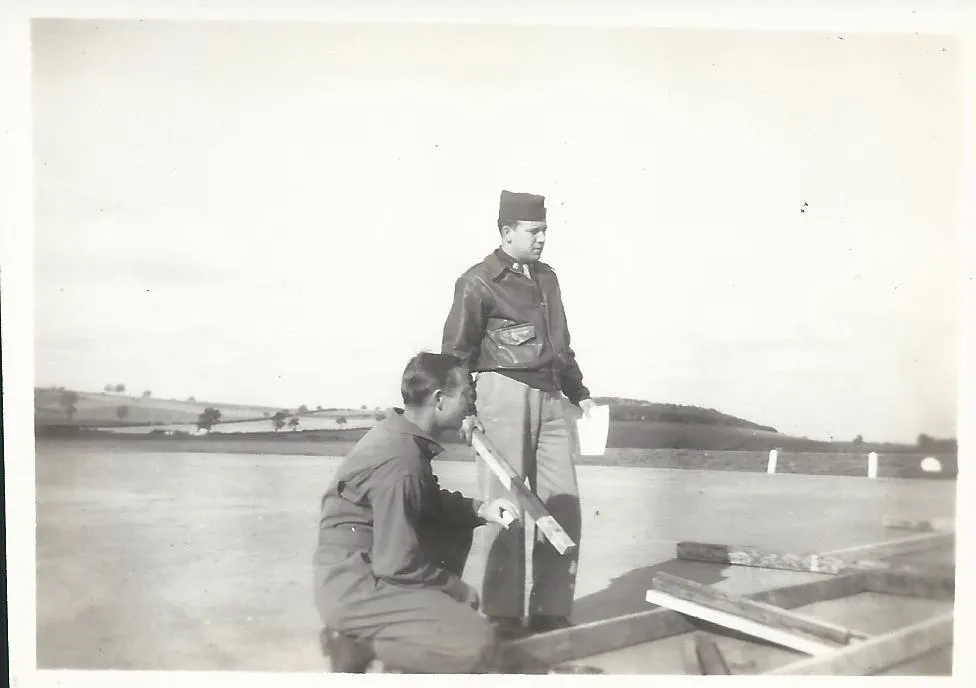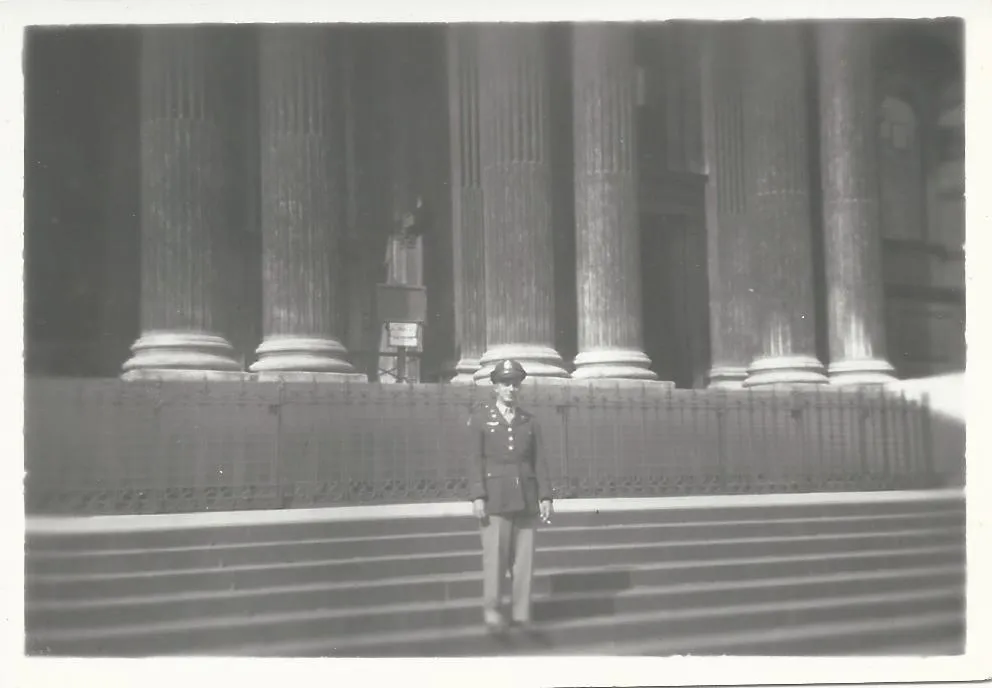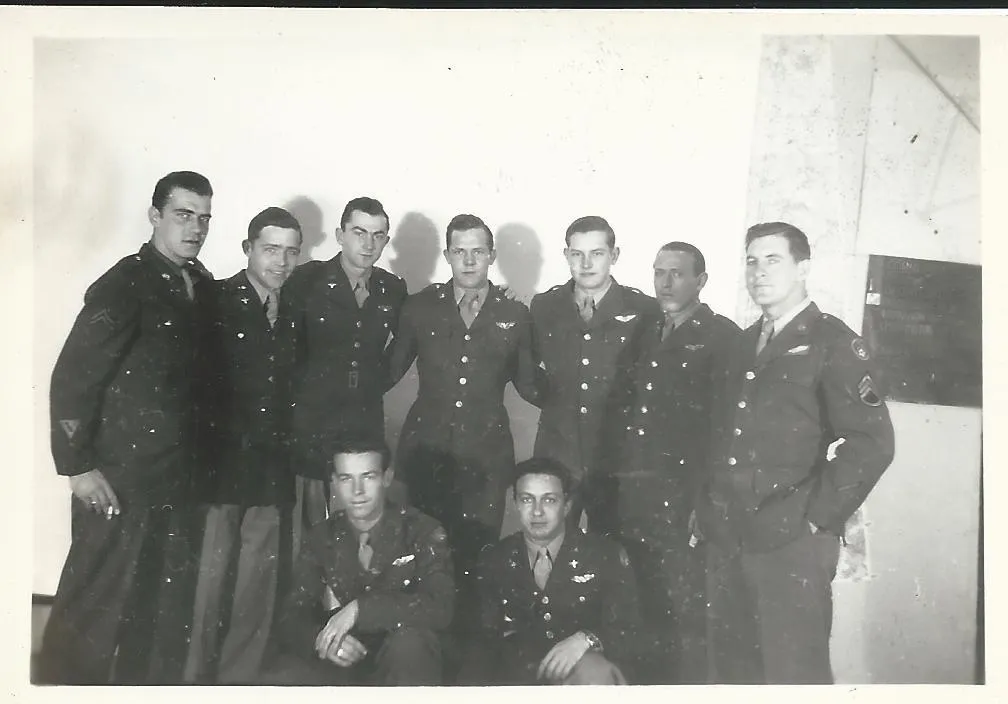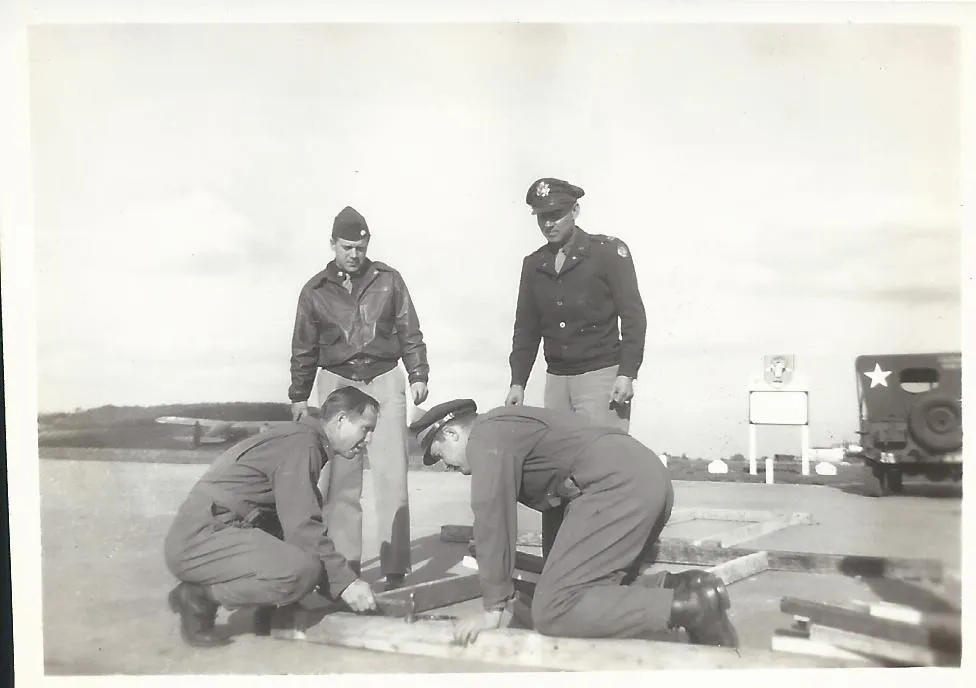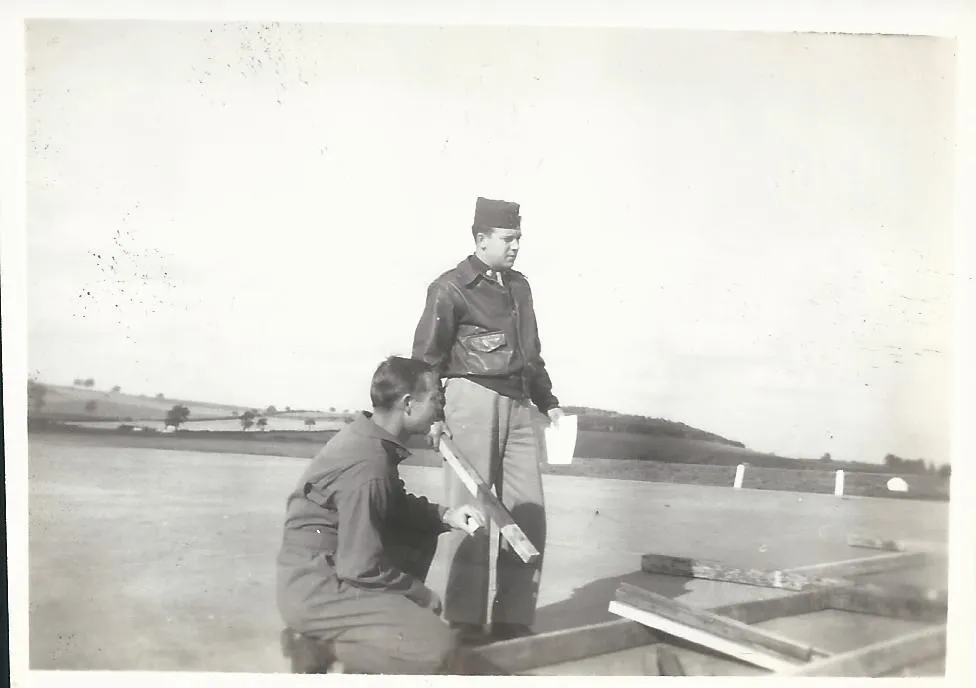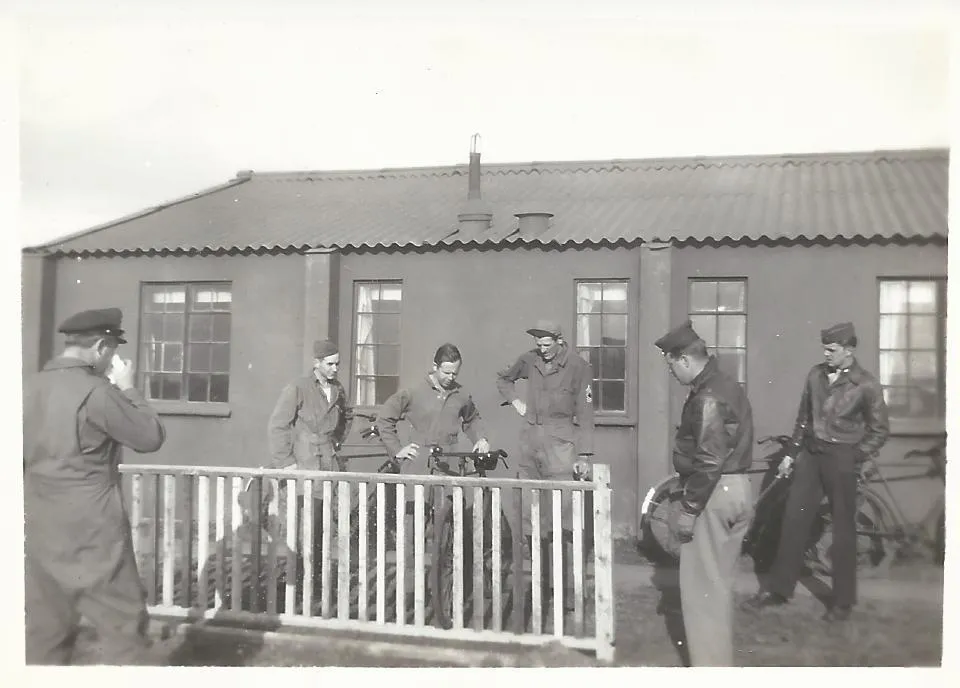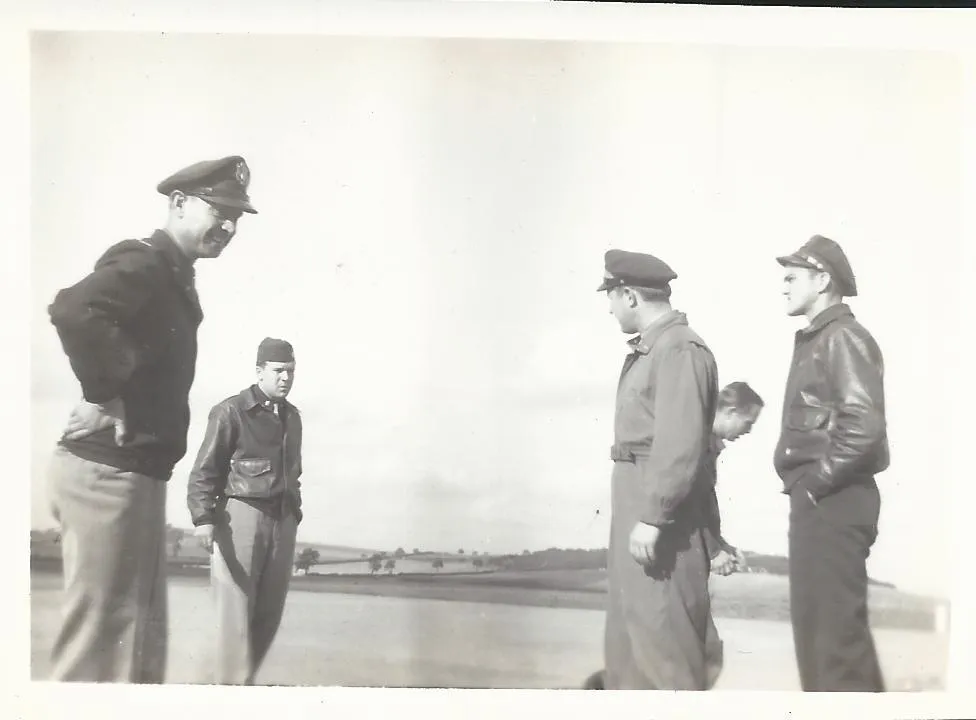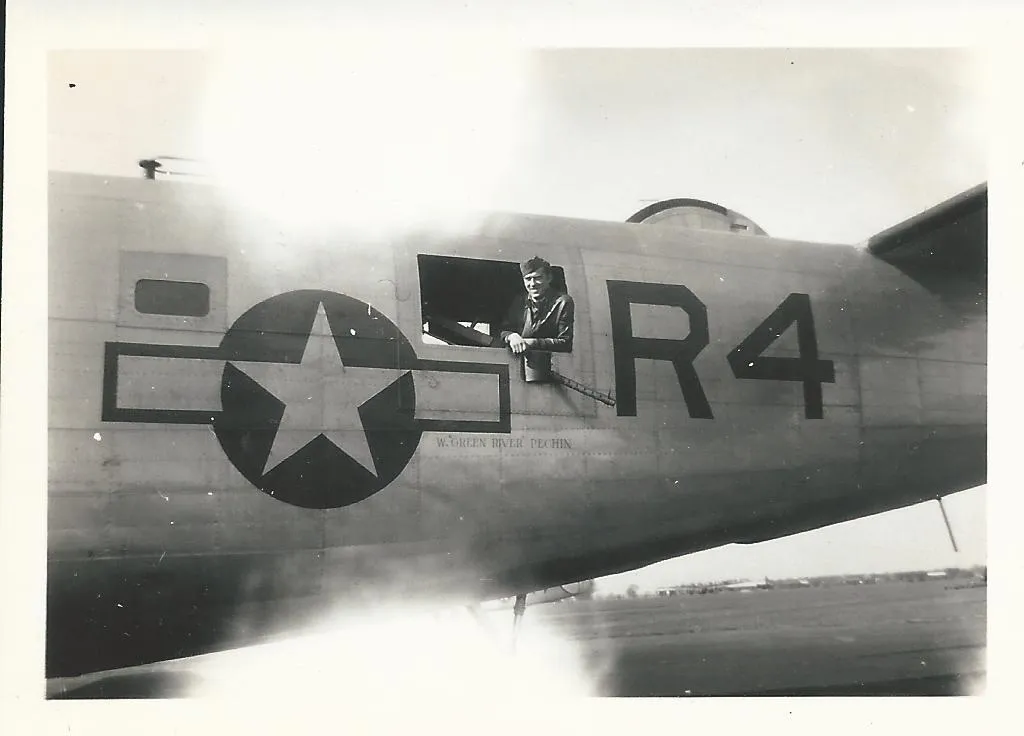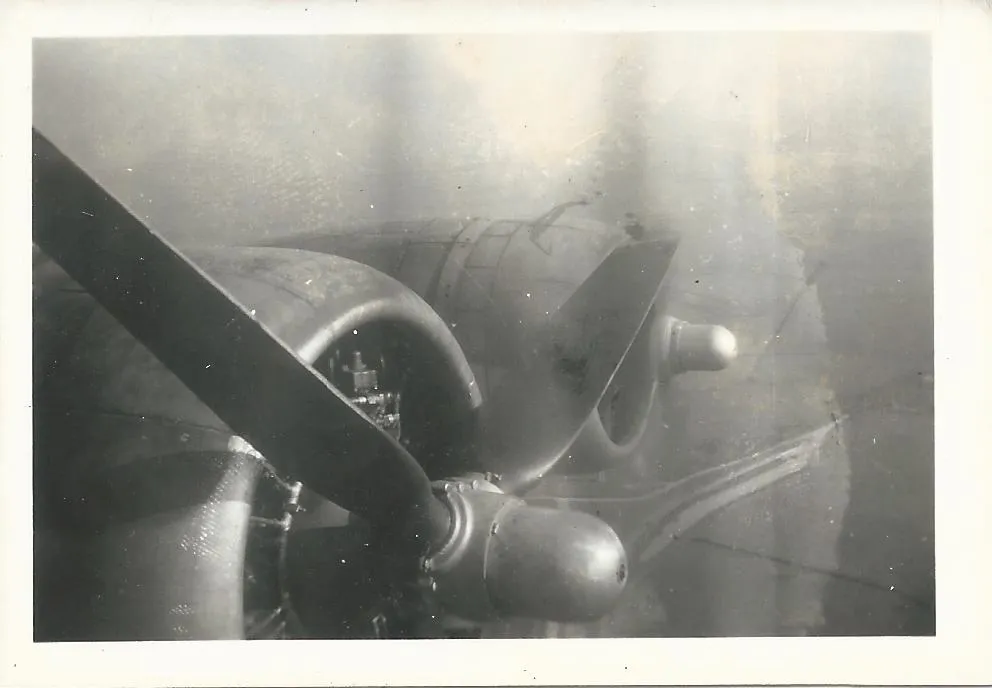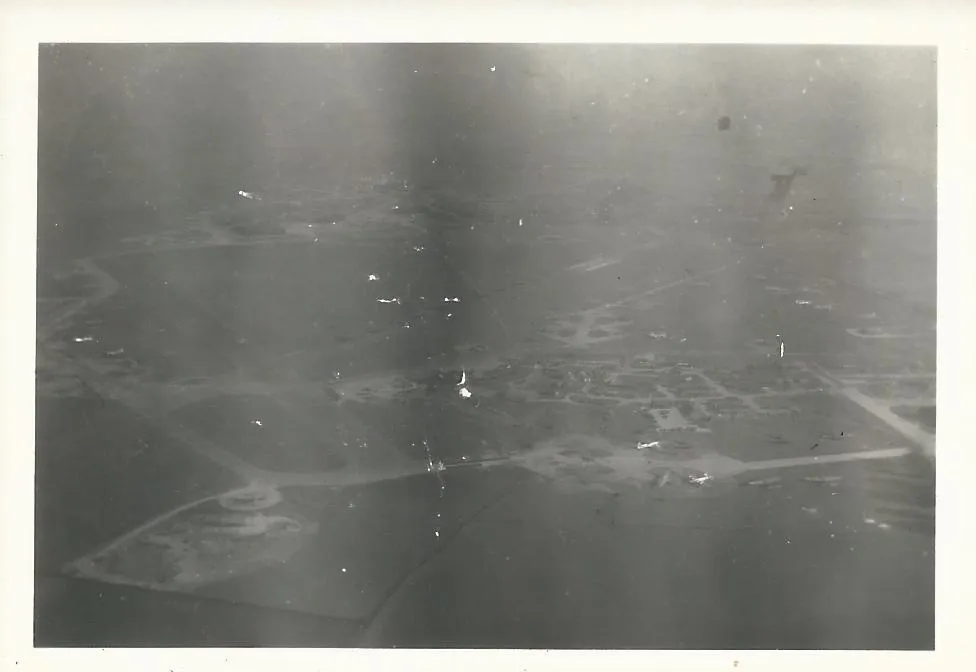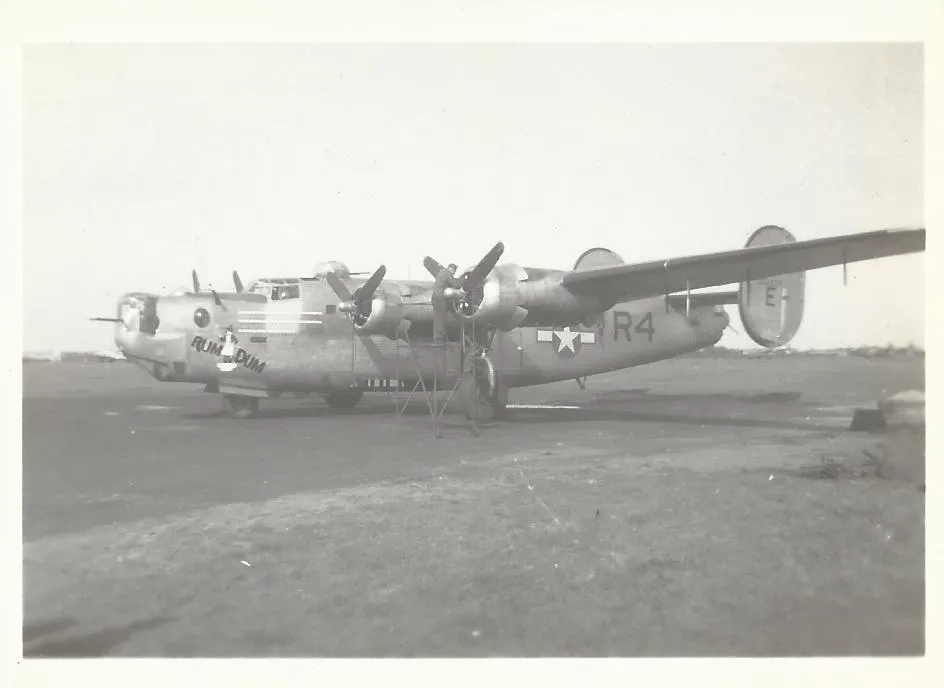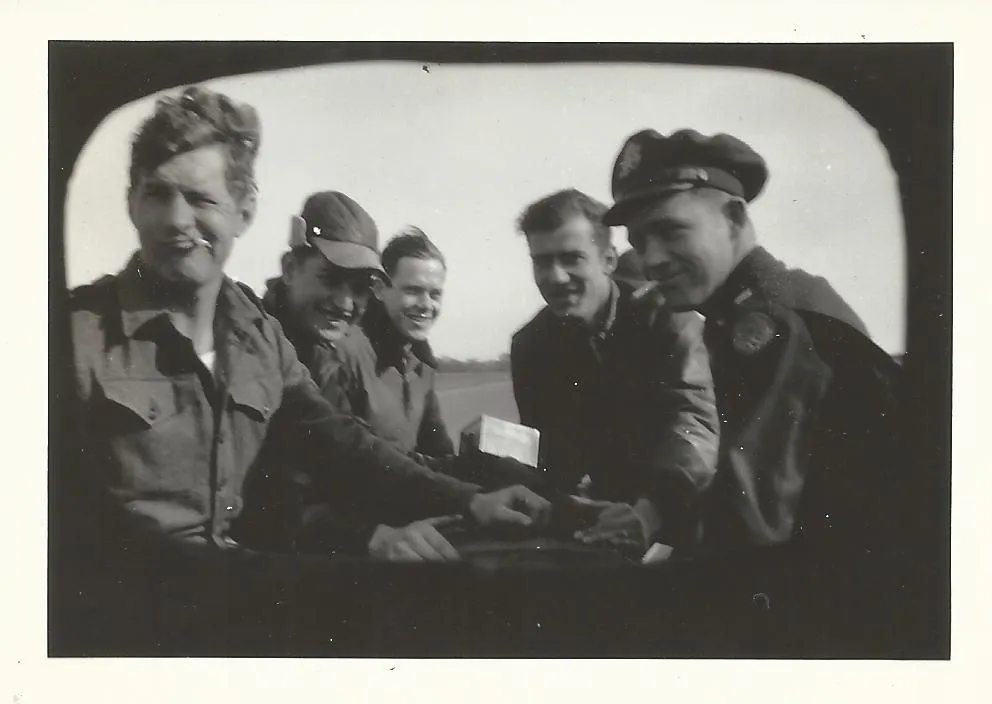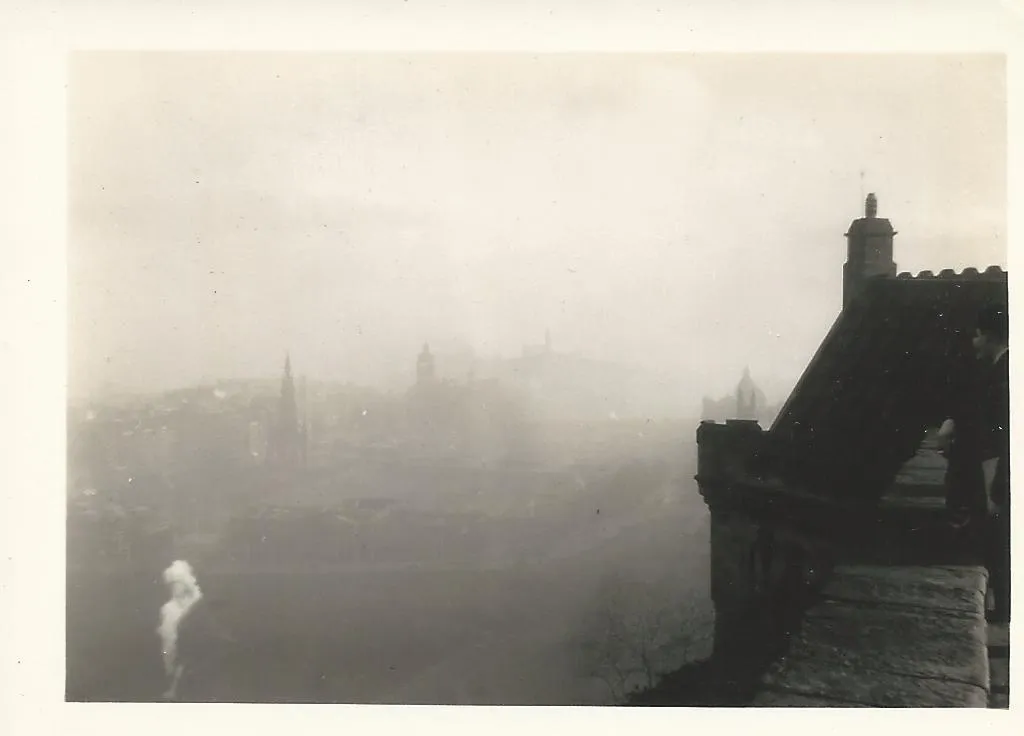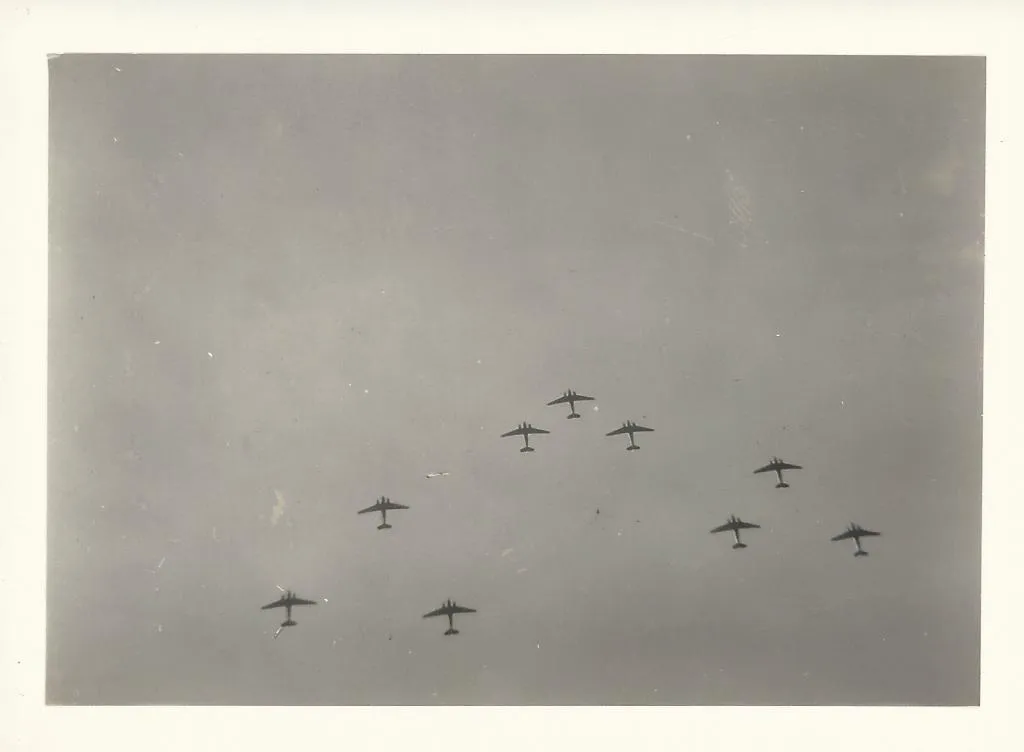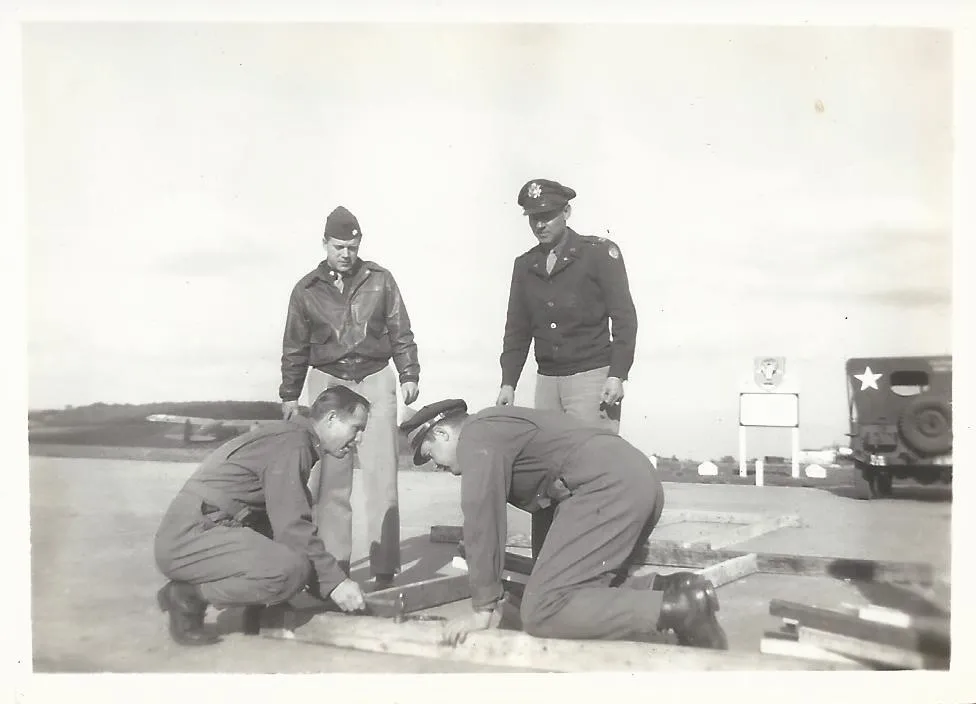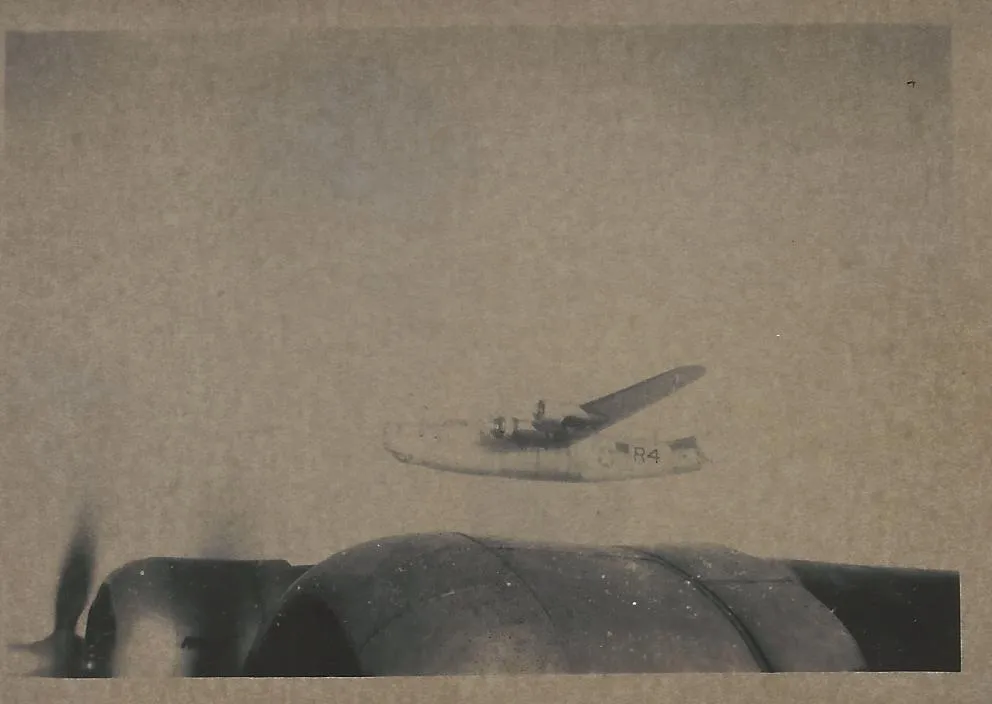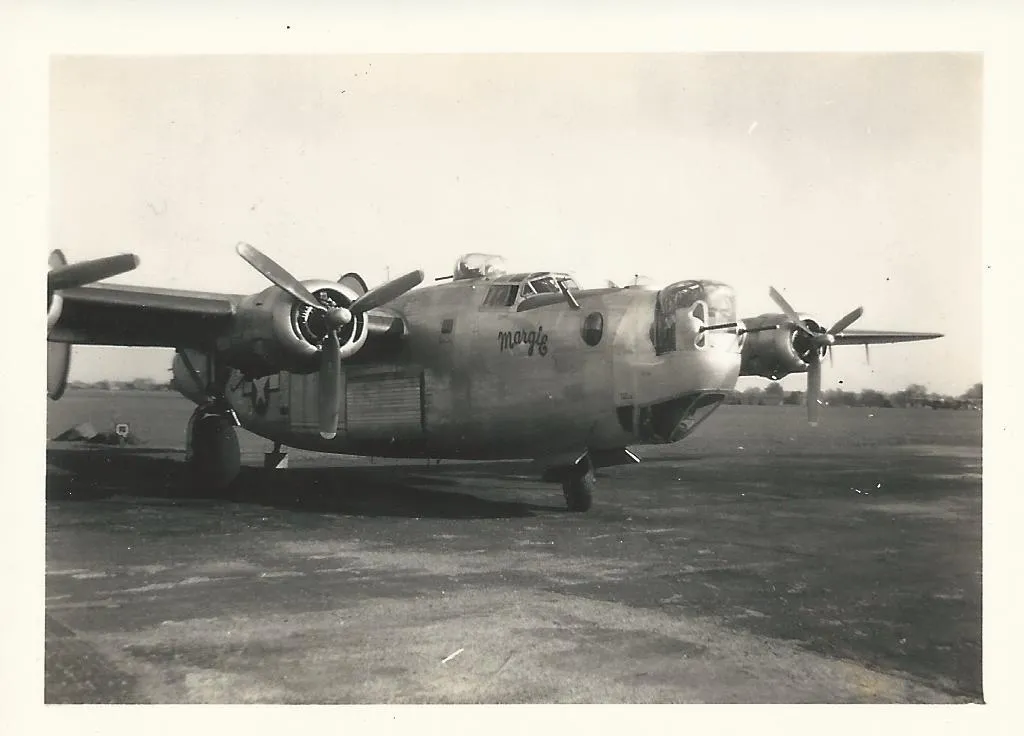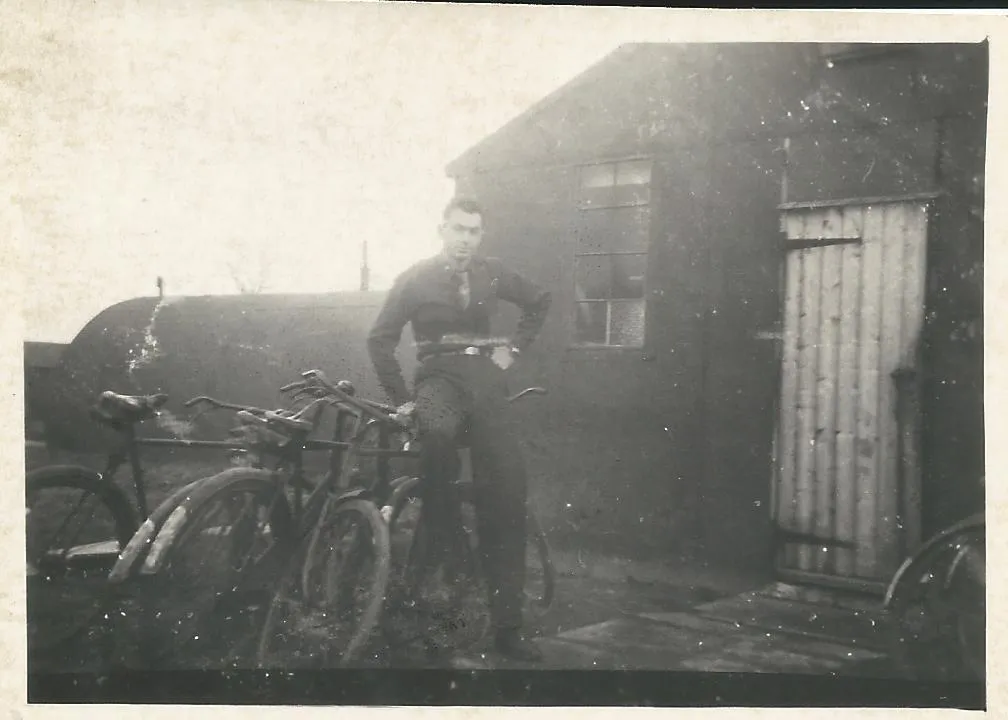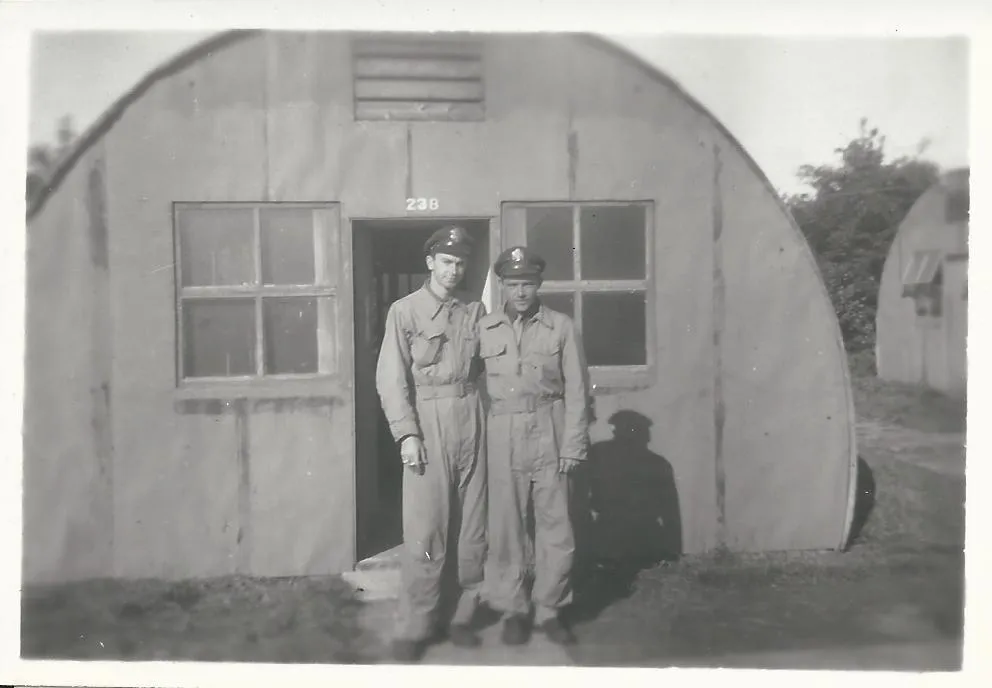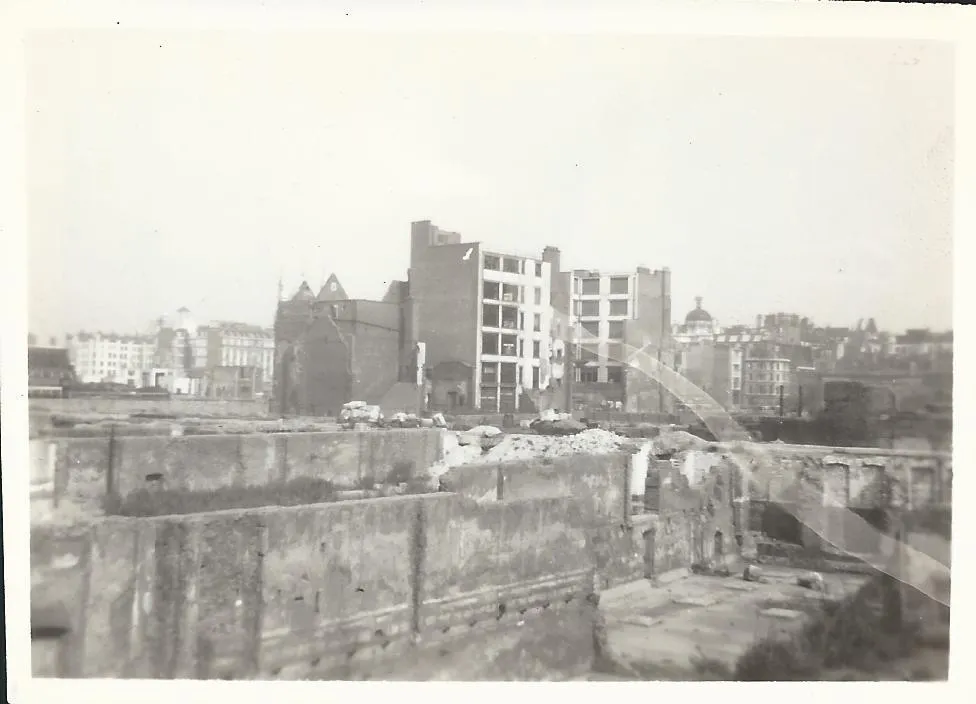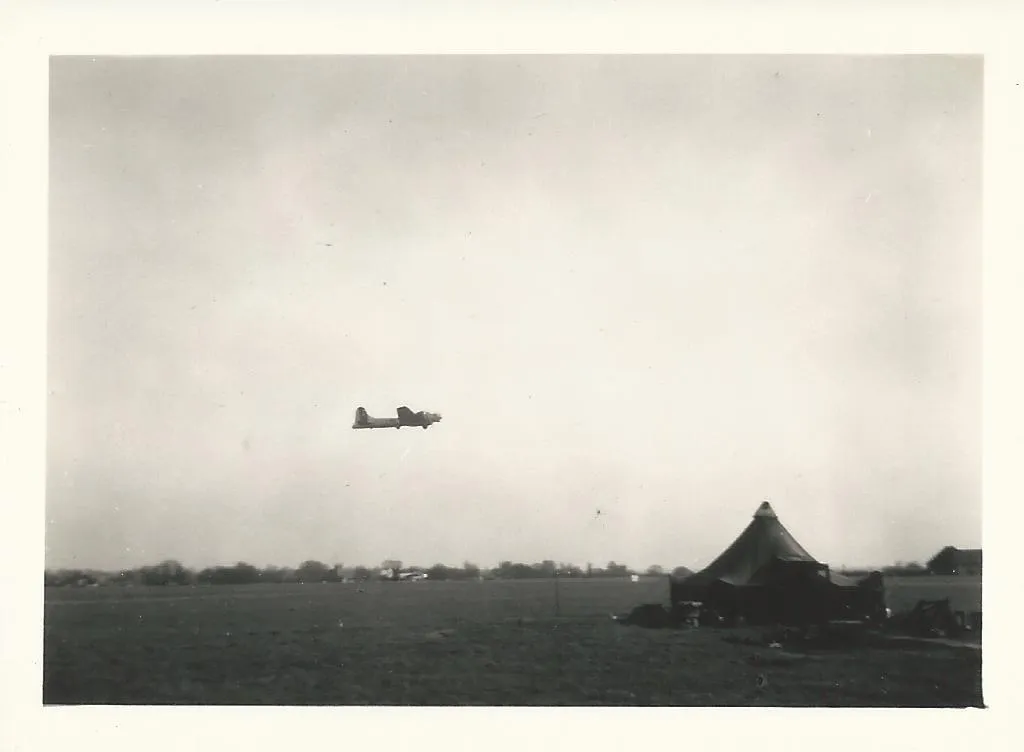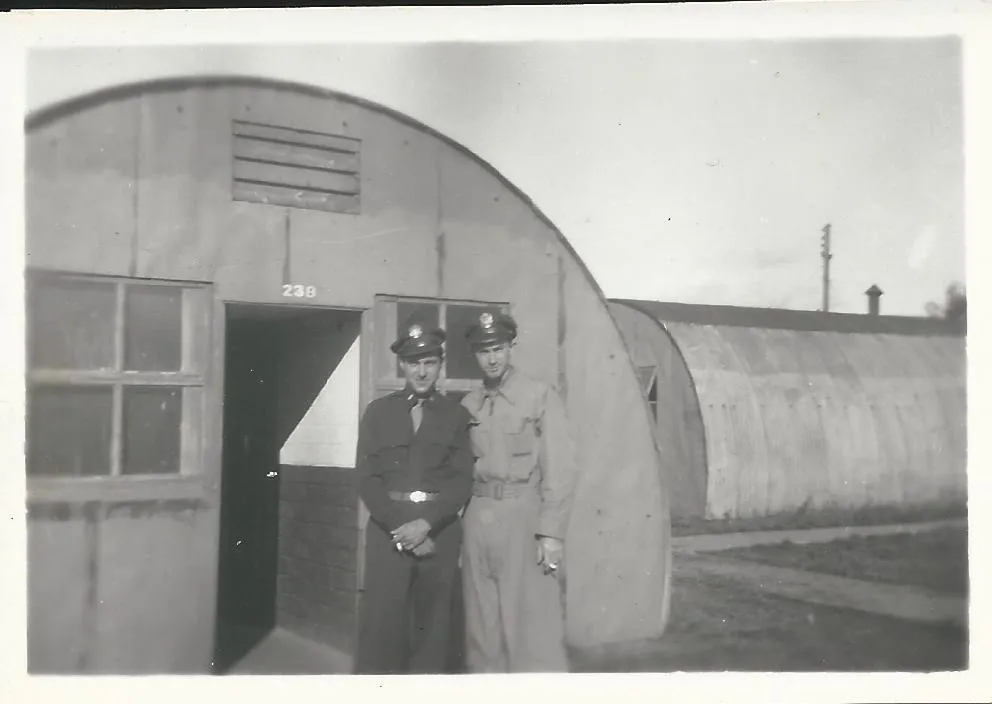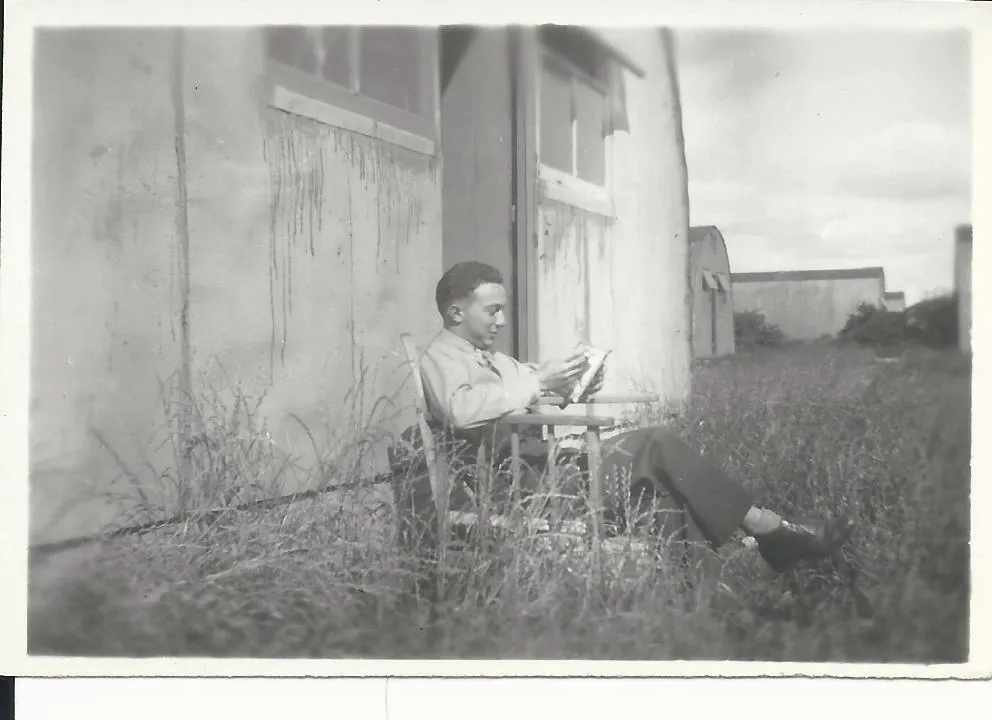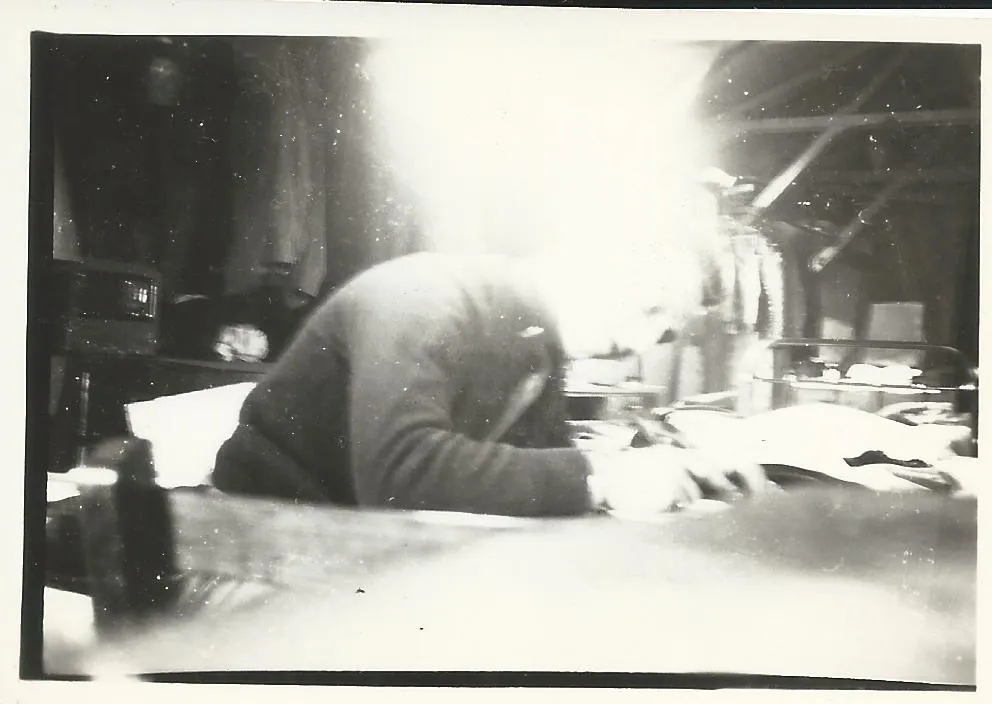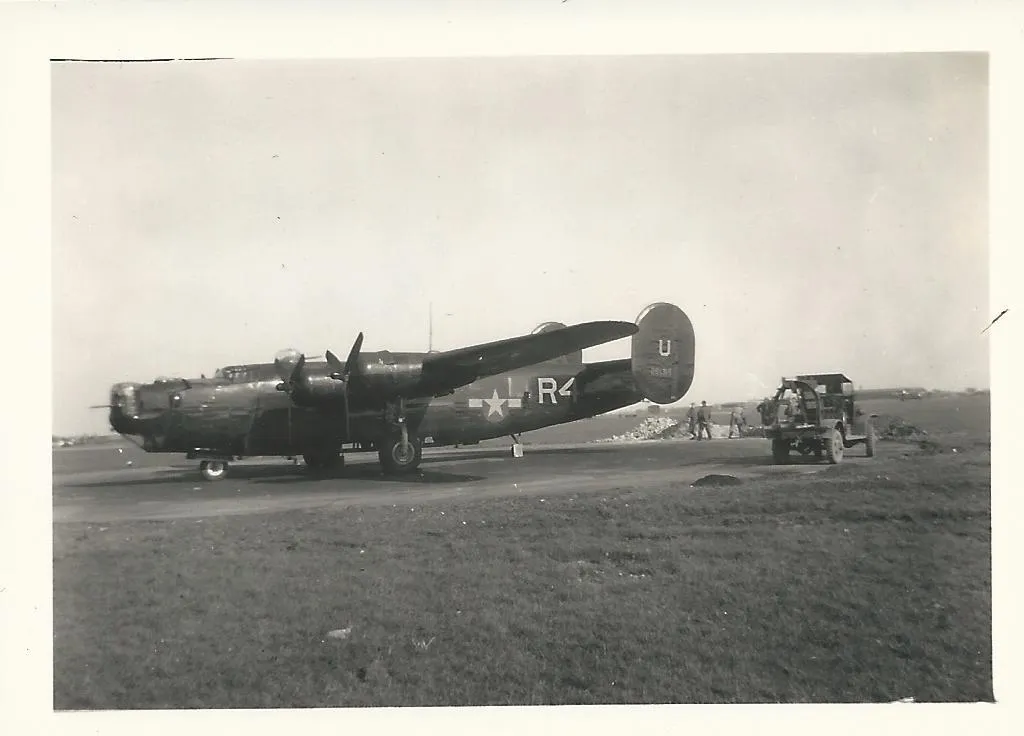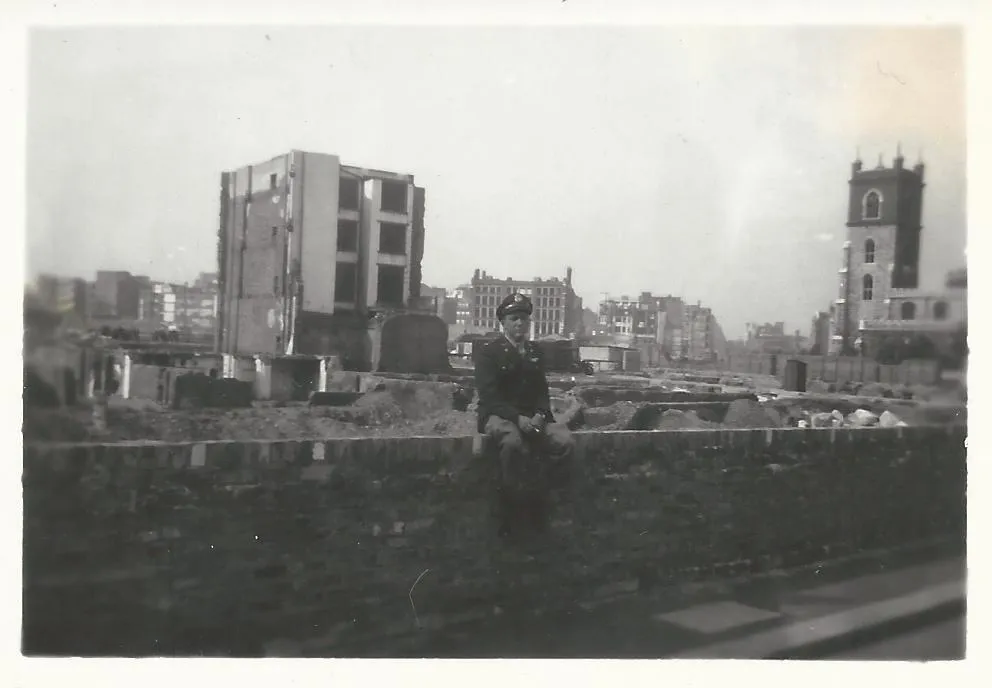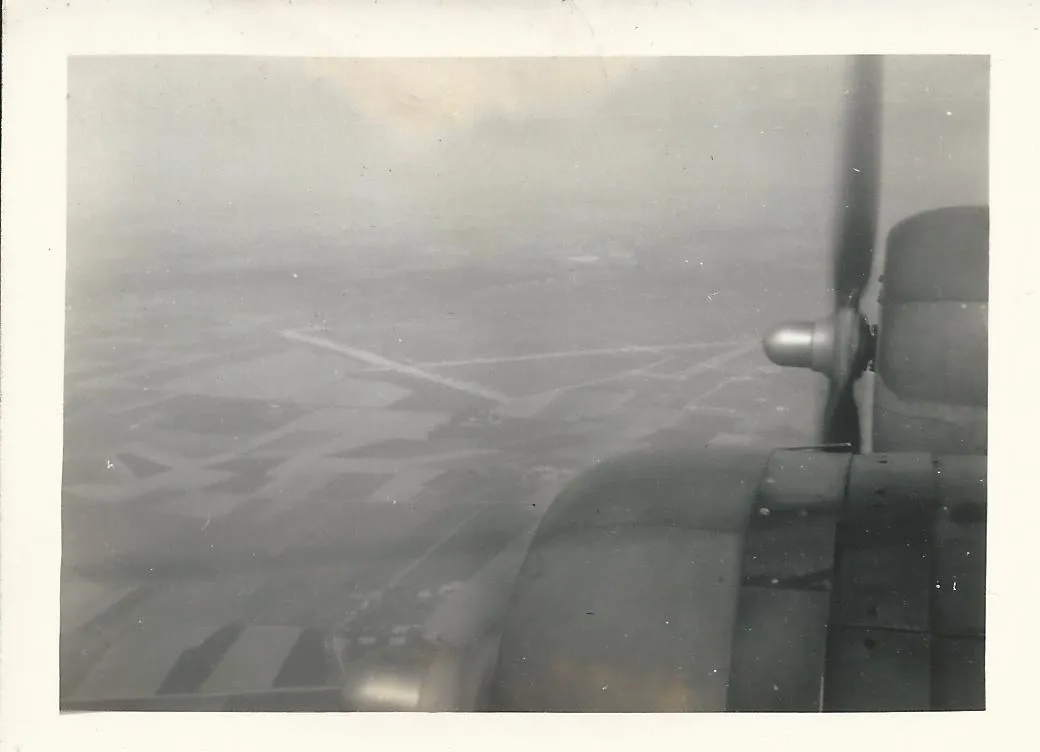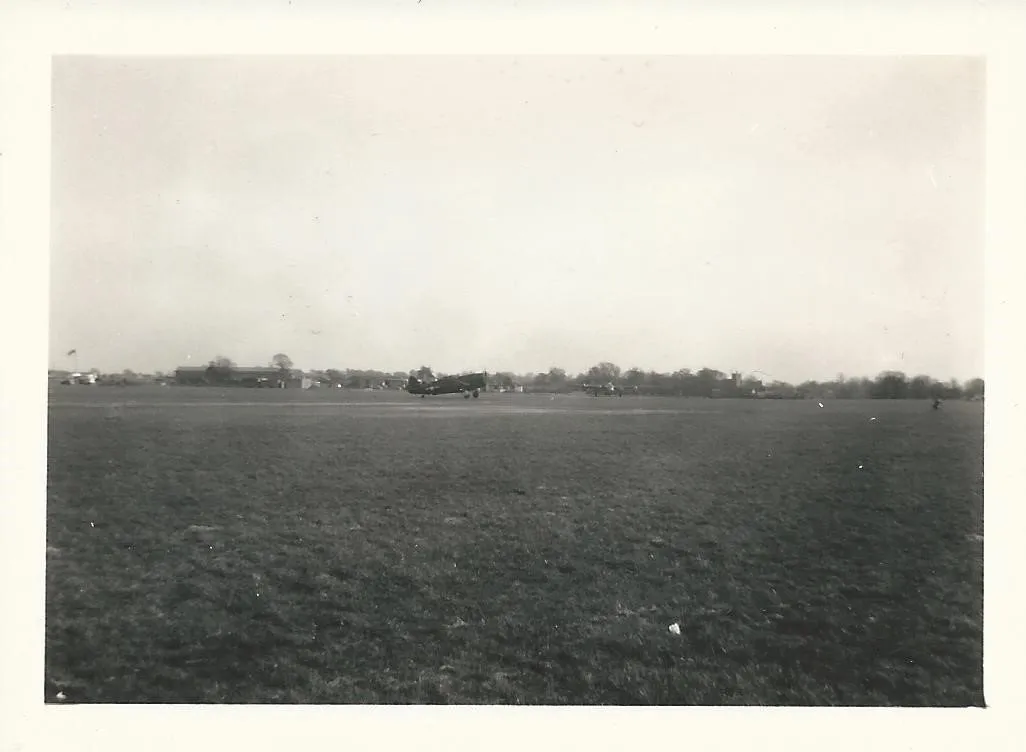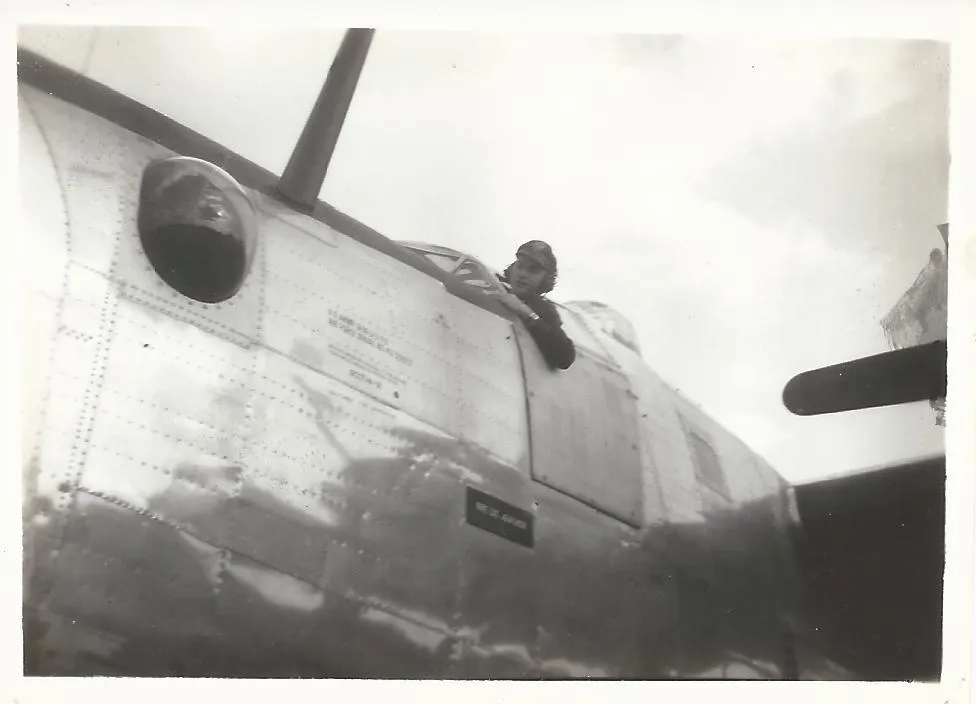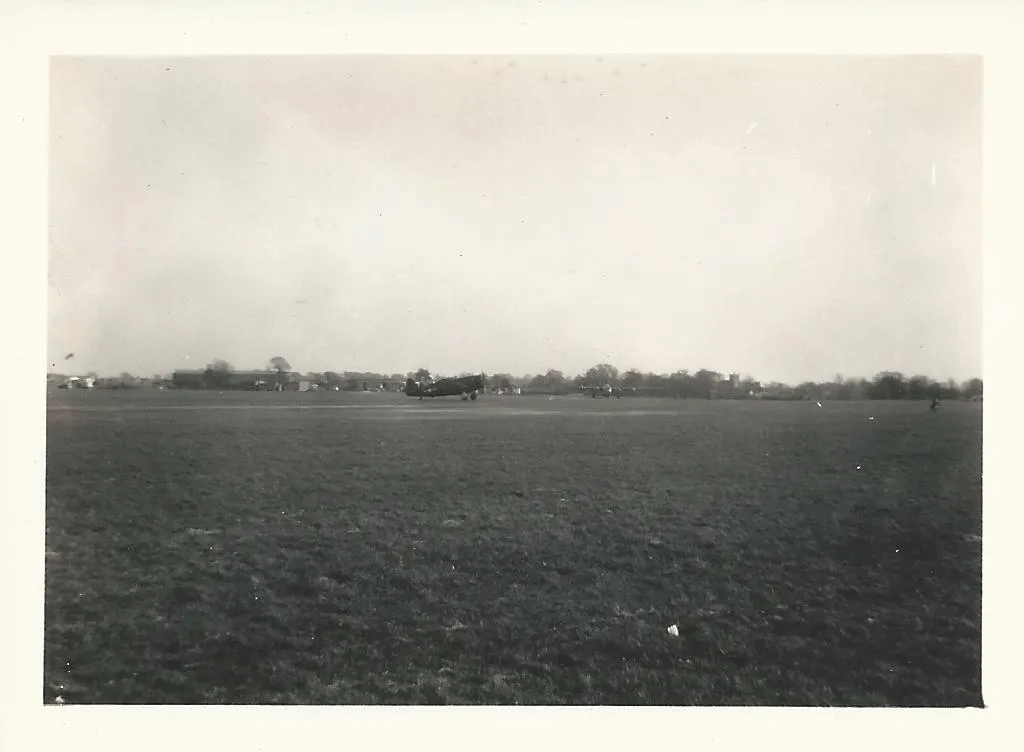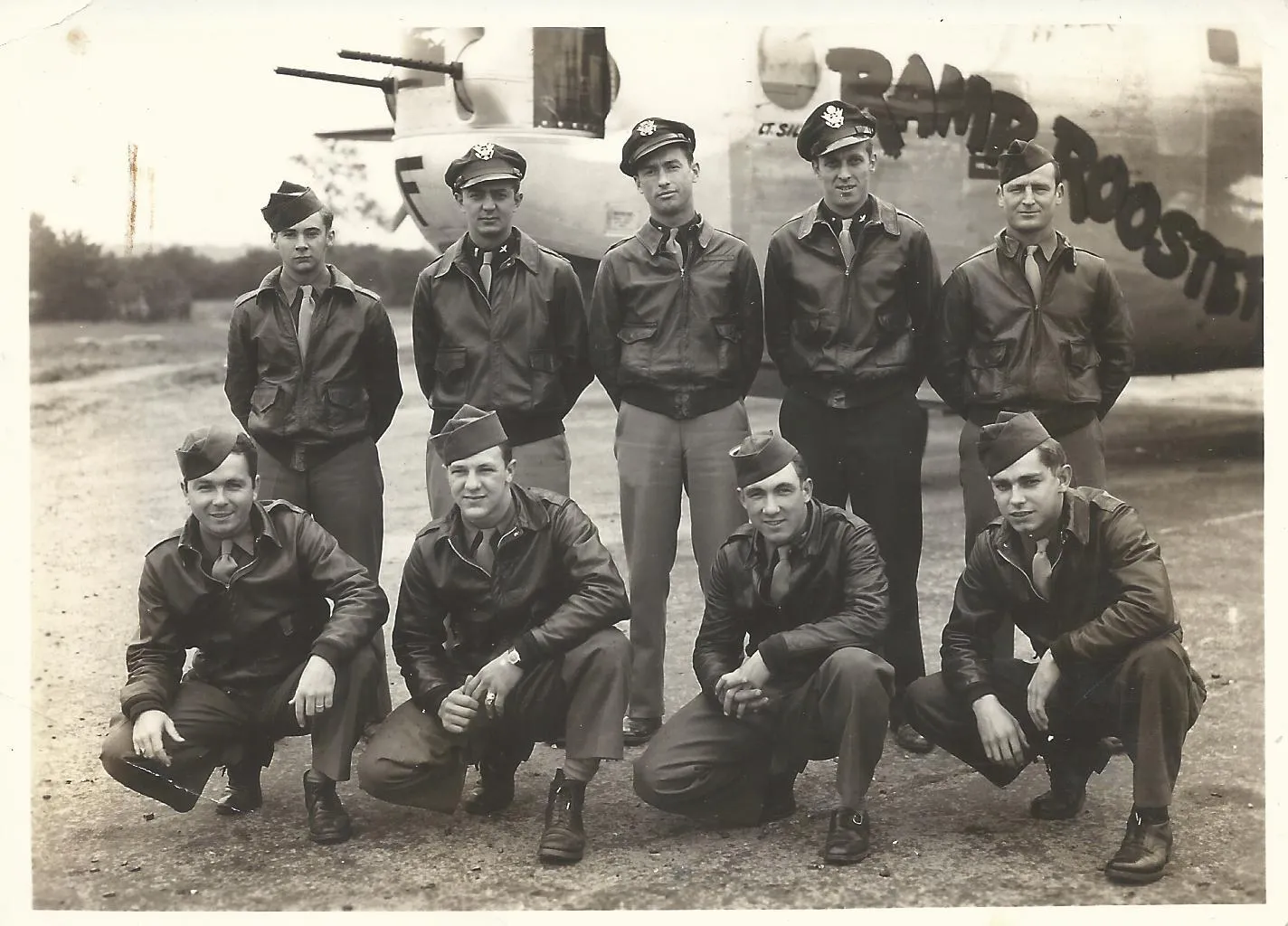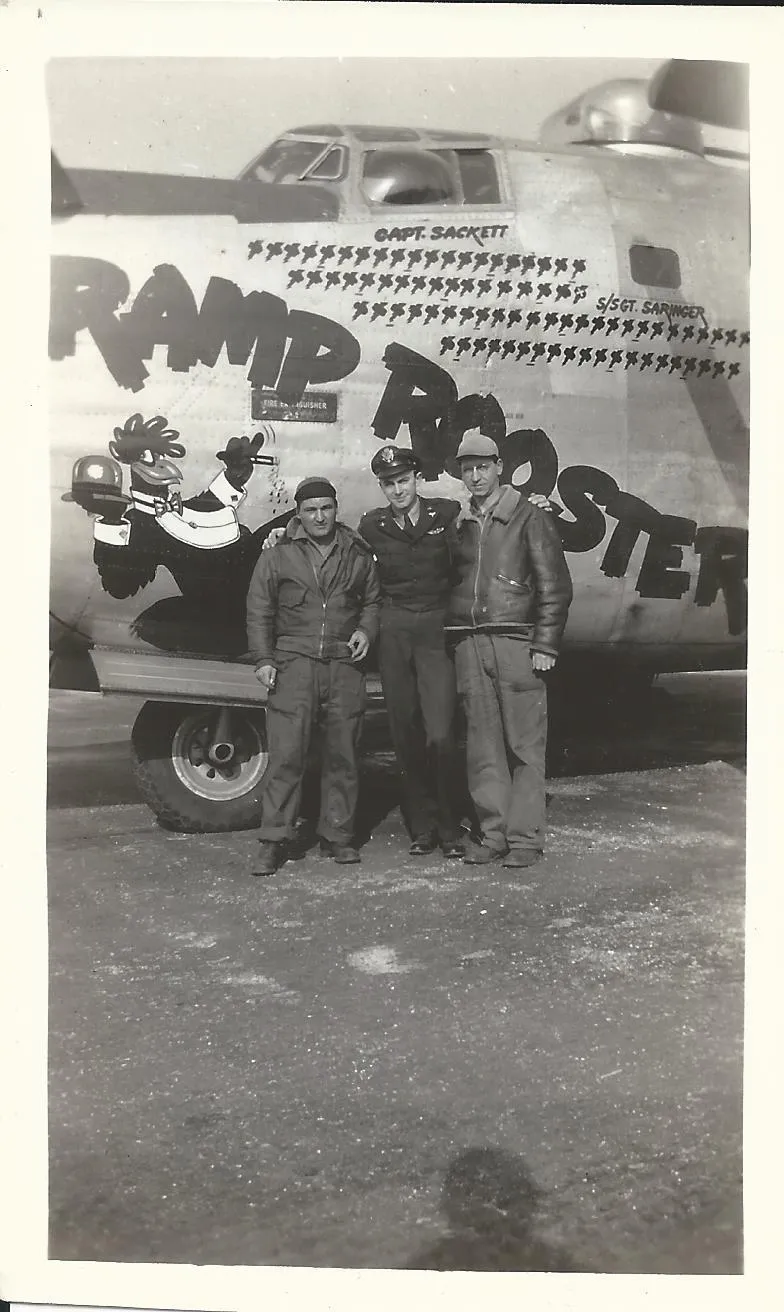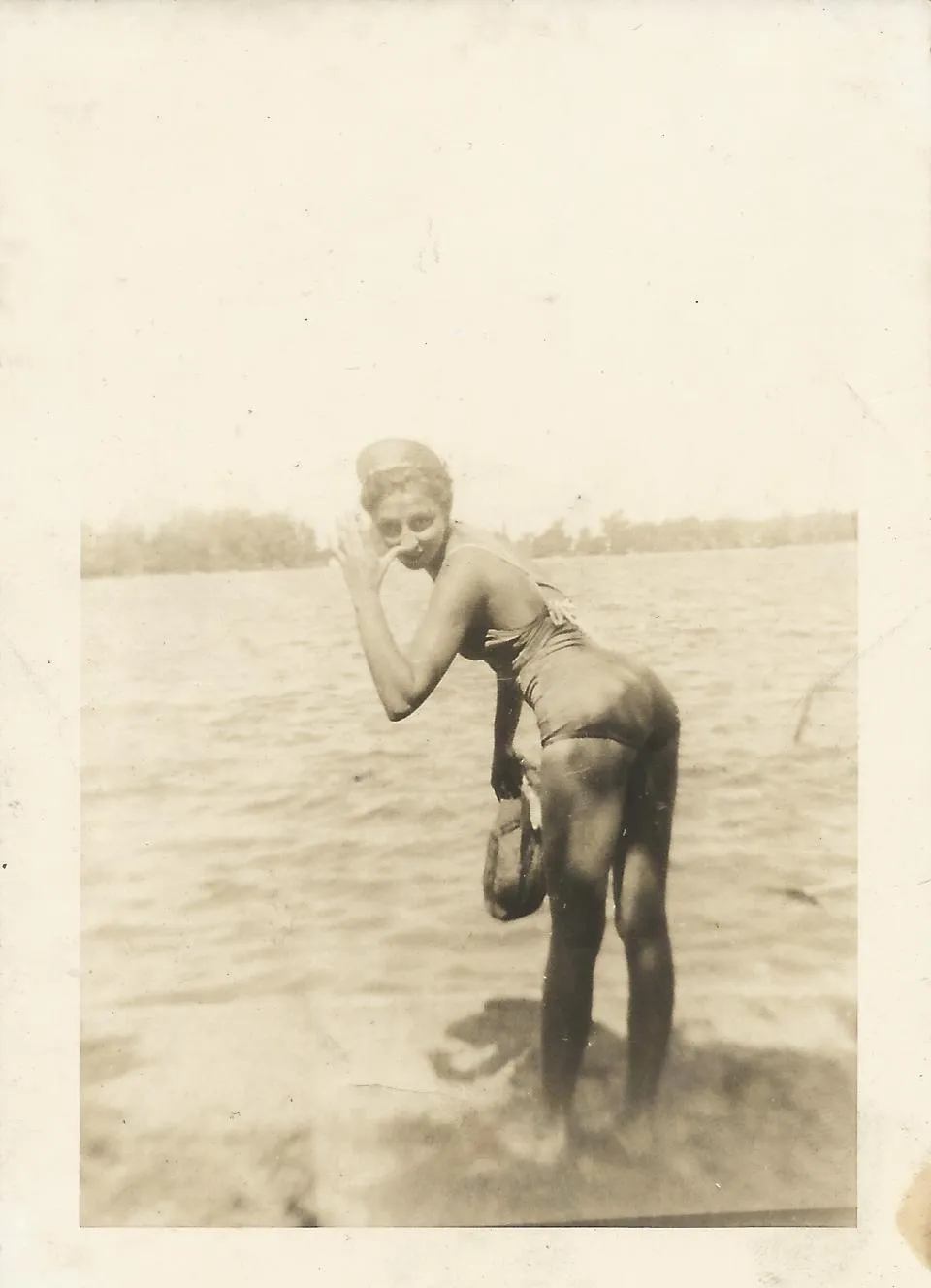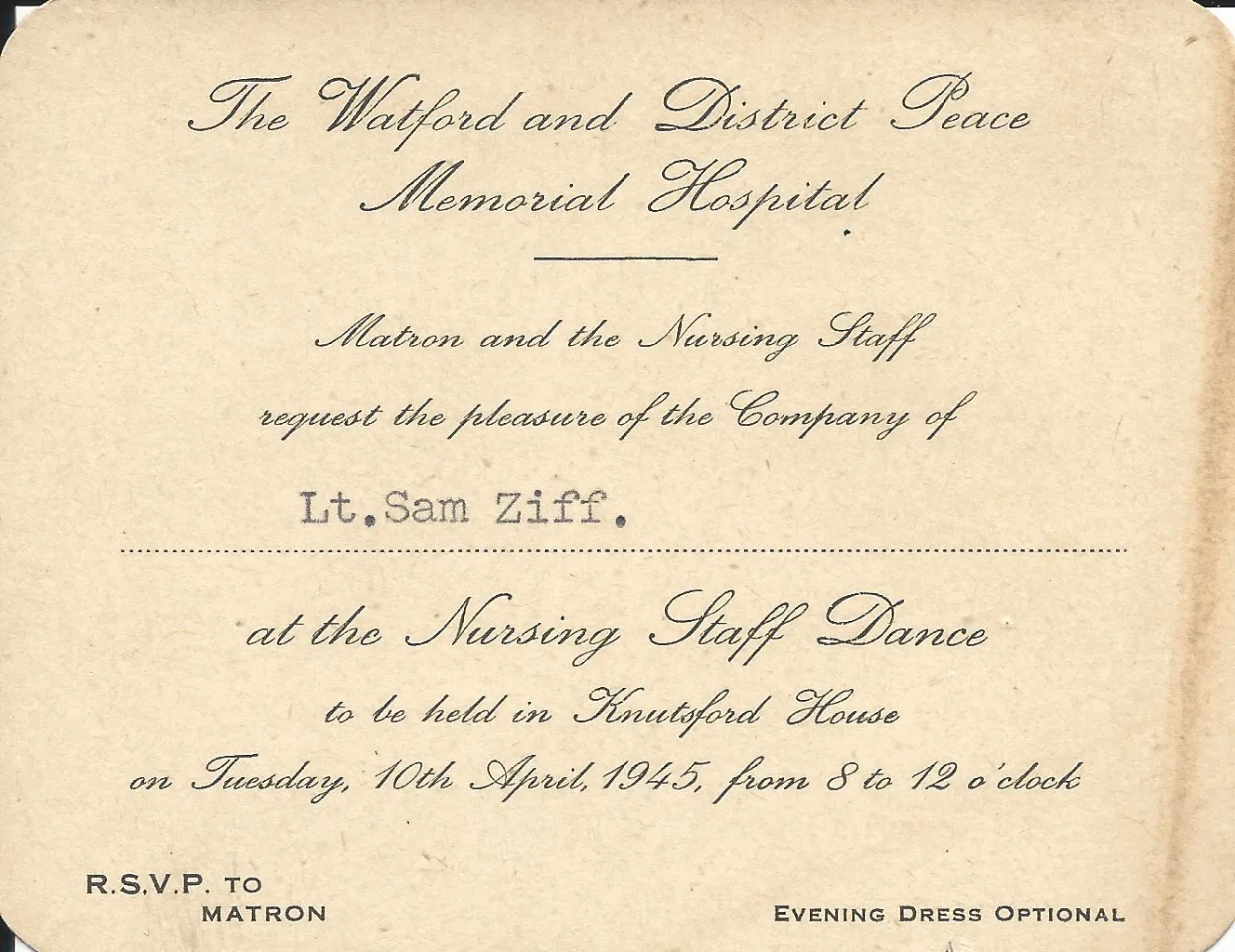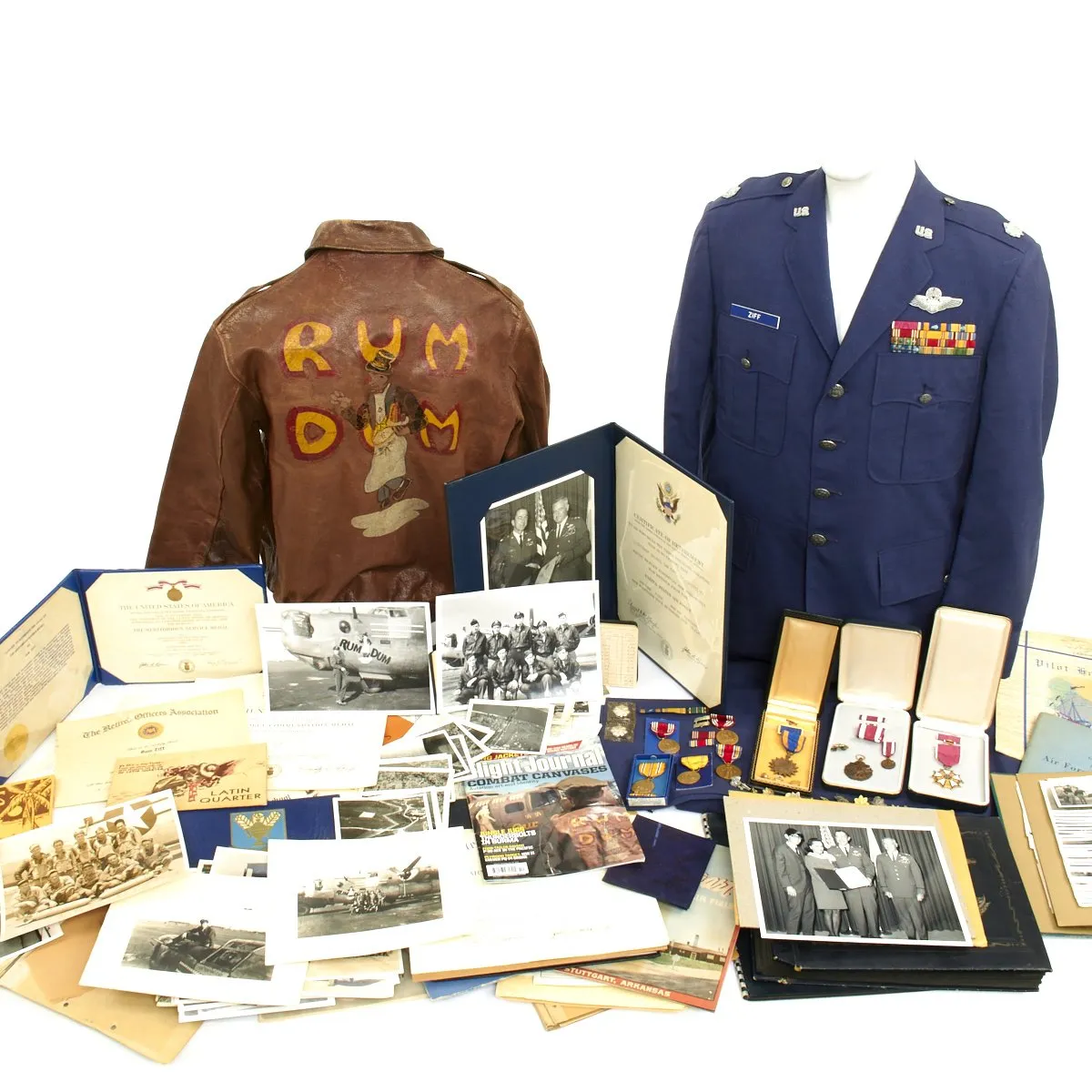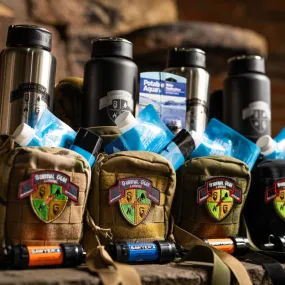Original Item: One-of-a-kind. This is an exceptional grouping that belonged to 1st Lieutenant Sam Ziff (ASN 0564699) the pilot of the B-24 Consolidated B-24 Liberator RUM DUM who flew an astonishing 58 missions as a member of the 36th Bomb Squadron, 801st Bombardment Group, 8th Air Force during WWII. For the 36th Ziff flew Carpetbagger runs (delivering spies to NSDAP Germany) and Radar Counter Measure missions. Check him out at in front of RUM DUM at this . Ziff remained in the Air Force until his retirement as a Lieutenant Colonel in 1970. Throughout his career he was awarded the WWII Air Medal with Oak Leaf Cluster, the Legion of Merit Medal and the Meritorious Service Medal all of which are included inside their original cases with this extraordinary grouping. We haven't done comprehensive research on the most missions flown by a bomber (not fighter) pilot over hostile territory in WWII, but if 58 missions is not the most, it certainly has got to be close to the record.
The highlight of this collection is a WW2 A-2 flight jacket that is offered in wonderful condition. Painting on the back features the nose art of his B-24 RUM DUM in vibrant colors. The front of the jacket features a fantastic hand painted 36th Bomb Squadron leather patch with his embossed name tag that reads SAM ZIFF. The original lining is still present and in very good condition with a fully working TALON zipper. Cuffs and waist band are excellent, so good that they must be correct post war replacements. Still retains the original data label and is a size 42.
Also included is a mountain of original WW2 and post war photos (300 ). The Majority of these photos are printed on original period paper. Photos feature Ziff with his various planes, his WW2 crew, the B-24 RUM DUM and loads of other period photos all the way up to and including his Air Force retirement in 1970. The set also includes his Lieutenant Colonel Air Force Uniform. Included are medals, citations, correspondence, letters, wartime art work, books, mission lists, flight logs, training manuals, insignia, loads of other period paperwork and so much more.
240 images accompany this listing so please be sure to review them all. Of particular note is the July 2018 issue of the magazine FLIGHT JOURNAL which features this jacket on its cover and also in an internal article (an original copy of the magazine is included). Please review the images that accompany this listing to get a good idea of how utterly comprehensive it truly is.
During World War II the 36th Bombardment Squadron conducted special operations and electronic warfare missions over Europe from 1943 until the end of the war.
December 1943 - August 1944 Carpetbagger OperationsIn November 1943, a unit was formed to clandestinely deliver agents and supplies into NSDAP-occupied Europe for the Office of Strategic Services (O.S.S.). To address this mission, the 36th Bombardment Squadron with specially modified B-24 Liberators were formed and activated at RAF Alconbury, England. It was attached to the 482nd Bombardment Group. This was the beginning of Operation Carpetbagger.
The purpose of the Carpetbagger project was to fly special operations missions which entailed delivering supplies to resistance groups in enemy occupied countries.
Owing to lack of sufficient facilities at Alconbury, in mid-December the squadron was reassigned to the Eighth Air Force Composite Command (Special Operations Group), (remaining attached to the 482d Bomb Group) and moved to RAF Watton (Station 376), near Thetford in Norfolk. The move to RAF Watton did not prove to be fortuitous. The heavy B-24s were incompatible with the grass runways and muddy hard standings there and were forced to move back to Alconbury in January 1944.
A new airfield under construction in the depths of rural Northamptonshire, RAF Harrington (Station 179) proved ideal for Carpetbagger operations. The advanced echelon of the squadrons moved into Harrington on 25 March 1944. On 1 April the squadron was assigned to the 801st Bombardment Group (Provisional).
In August 1944, the 801st Bombardment Group was absorbed by the 492d Bombardment Group (Heavy). The 492d was a "hard luck" B-24 group which had lost 52 aircraft to enemy action in only 89 days, suffering 588 men killed or missing. Rather than try to rebuild the shattered group, the group was stood down and the surviving members were reassigned to other units in theater. The operational squadrons of the 801st were stood down and redesignated as the squadrons assigned to the 492d. The 36th Bomb Squadron's personnel and equipment were redesignated as the 856th Bombardment Squadron, and the 36th was reassigned to the VIII Fighter Command as an unattached unit without equipment or personnel.
August 1944 — April 1945 Electronic Countermeasures Operations
The redesignation of the Carpetbagger squadrons made the designation of "36th Bomb Squadron" available again and it was assigned to the 803d Bomb Squadron, a provisional squadron then located at RAF Cheddington.
The 36th Bomb Squadron was the Eighth Air Force's only electronic warfare squadron using specially equipped B-24s to jam German VHF communications during large Eighth Air Force daylight raids. In addition, the 36th BS flew night missions with the Royal Air Force Bomber Command's 100 Group which controlled the British electronic warfare and countermeasures squadrons .
The radar countermeasure effort came under RAF Bomber Command where they performed a variety of special operations activities. The missions included Window (Chaff), Jostle, Carpet, Mandrel, and other ramifications. Many of the jamming systems were developed and tested by Allied scientists associated with the Telecommunications Research Establishment, namely the American-British Laboratory Division 15 (ABL-15) located at Great Malvern. RCM operations were designed to deny the Germans effective utilization of radar and radio equipment.
The 36th BS's missions involved trickery, ingenious deception, spoofs, and tank communications jamming. The squadron flew on bad weather days during the Battle of the Bulge as well, when the rest of the Eighth Air Force stood down.
Along with these electronic warfare missions, the 36th BS also flew regular sorties which set out to discover the frequencies being used by the enemy for their radio and radar devices. For this they operated a number of Lockheed P-38 Lightning twin boomed fighters from Alconbury as well as their B-24s.
All operations ceased by 30 April 1945.

